EVERHOOD: HOW NOT TO CONSTRUCT A METAPHOR

I have issues with Everhood, which is tricky, because I know it's an important game for a lot of people and I have no interest in ruining that for them. I know it's an extremely well-reviewed game, and I can see why a lot of people like it. It came highly recommended to me from the same person who recommended one of my actual favorite games ever, Sayonara Wild Hearts. I have to imagine that person saw some common quality between both games, and I do think both games are ultimately about the complicated feelings around escaping bad situations and relationships -- the fear of trying, the pain of doing so, and ultimately, relief.
For that reason, while I have serious issues with the game, I think I can see why people like it. I can't really excuse the weird inconsistencies in the plot (not without an emotional throughline to follow, which I couldn't find) and quite possibly the worst message I have ever been exposed to in a video game. I don't think the developers are bad people, just careless and, in places, thoughtless. It says something that despite my misgivings, I am still going to play the sequel, if only to see if they will learn from their mistakes, or somehow find a way to make something even worse.
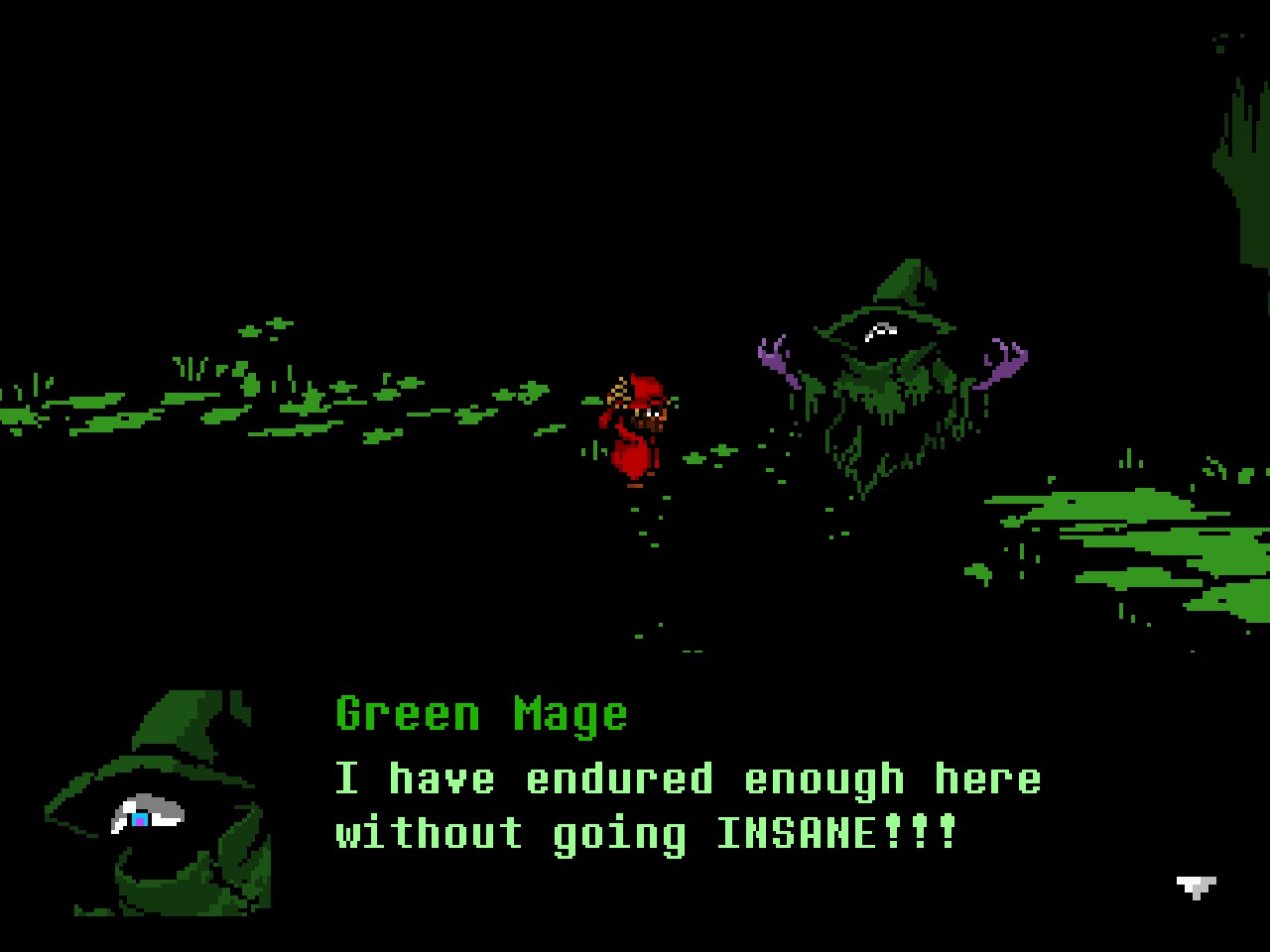
By the way, like all my essays, every image has hover-over/long-press text, so make sure you don't miss those! Think of them like secret little footnotes, just for you!
If Everhood were just a bad game, I wouldn't feel compelled to write an essay about it. There's potential there!! I'm mad because there's potential there. But there's a pervasive carelessness, which culminates in a one-two punch of thoughtlessness that I have to fight not to perceive it as malice. Two elements of the conclusion are so careless, so ill-conceived, that together they spoil any positive feelings I might have had about the game's message and themes.
To everyone who got something positive from Everhood, I'd bet anything that what you got from it is along the lines of what the developers intended you to get from it. I believe the changes I would make to Everhood wouldn't take away from the positive things that anyone else got from it. Whether or not that's true, I hope I can convey that my desire to put Everhood through the wringer comes not from a place of wanting to destroy it, but from seeing potential in it that I want to see realized in the sequel.
Let's start with some Good stuff, because there's definitely Good stuff.
PART 1: THE GOOD STUFF
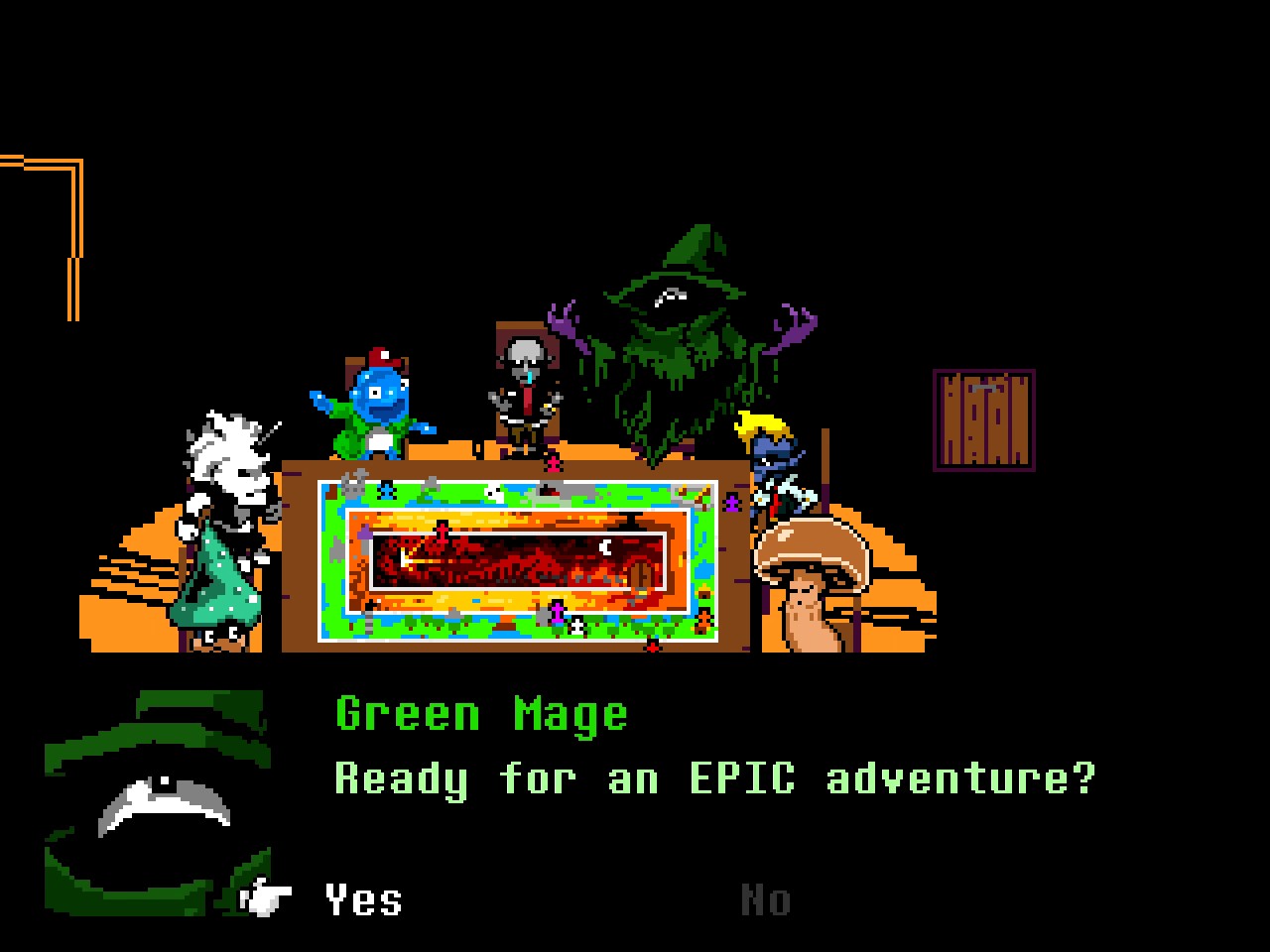
The soundtrack is excellent. Solid A. It manages to pack in quite a bit of variety, while still feeling like it has an identity. You never know what to expect, and there are zero misses on the OST. Not quite the best-of-the-best as music games go, but up there.
The combat is good. Not perfect by any standard, but good. There's a lot of personality in every battle, with some extremely memorable, stand-out battles emerging from a pack that rarely misses. It's not my favorite music-based combat system ever, simply because I found the design of the later charts trended towards frantic note spam that favored twitchy reflexes over anything else. Your view of upcoming notes is extremely limited, giving you no time to plot a route through labyrinthine sequences, and the relatively low viewing angle makes it difficult to discern where the gaps between notes are.
Early songs create a strong connection between the notes of the music and the movements of the enemy character, while also providing a stepchart that feels like it has personality. I enjoyed these enough that I went back and got the No-Hit achievement for maybe half the songs in the story. That says something about the quality.
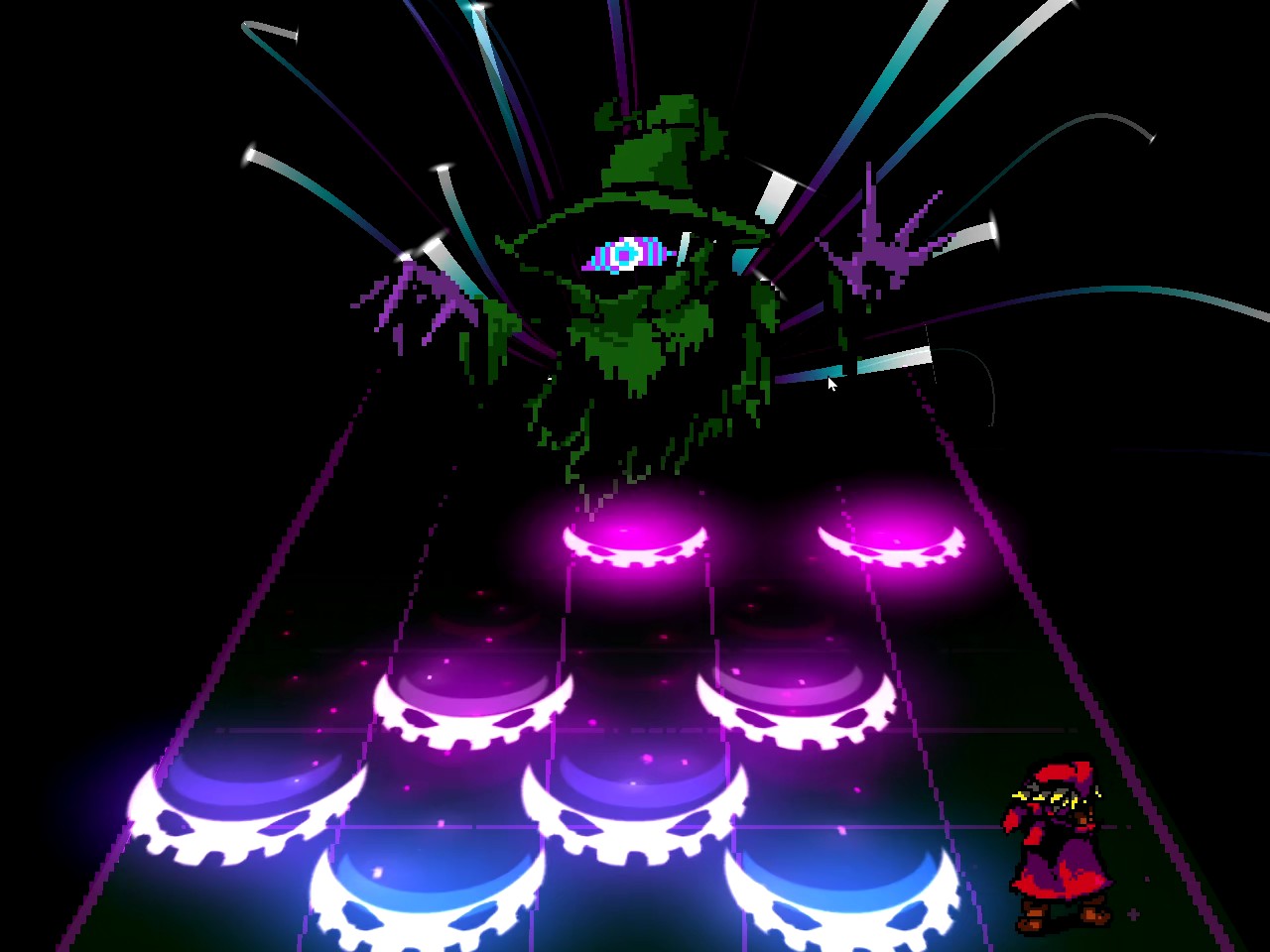
Later songs stray from this: there are often simply too many notes on the field to make anything coherent out of them, forcing you to juke through them purely on reflex. And while still obviously made with the song in mind, it strays from the tight feeling the early songs have.
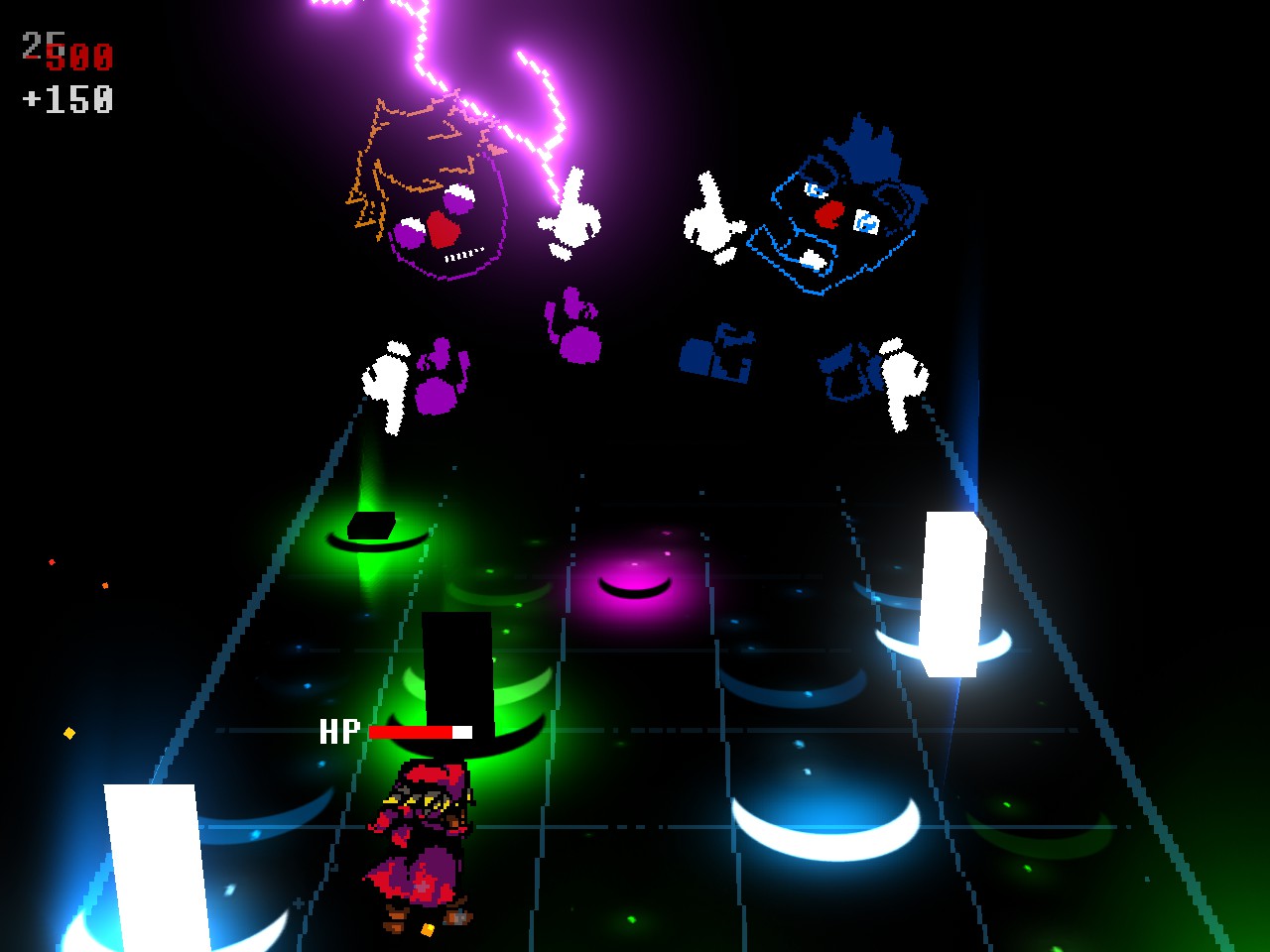
I find myself comparing it to Sayonara Wild Hearts, which keeps its obstacles sparse and gives you a long enough field of view that it doesn't need a "dodge" mechanic at all. There are twitchy parts, but it doesn't hammer on that note nearly as hard as Everhood tends to.
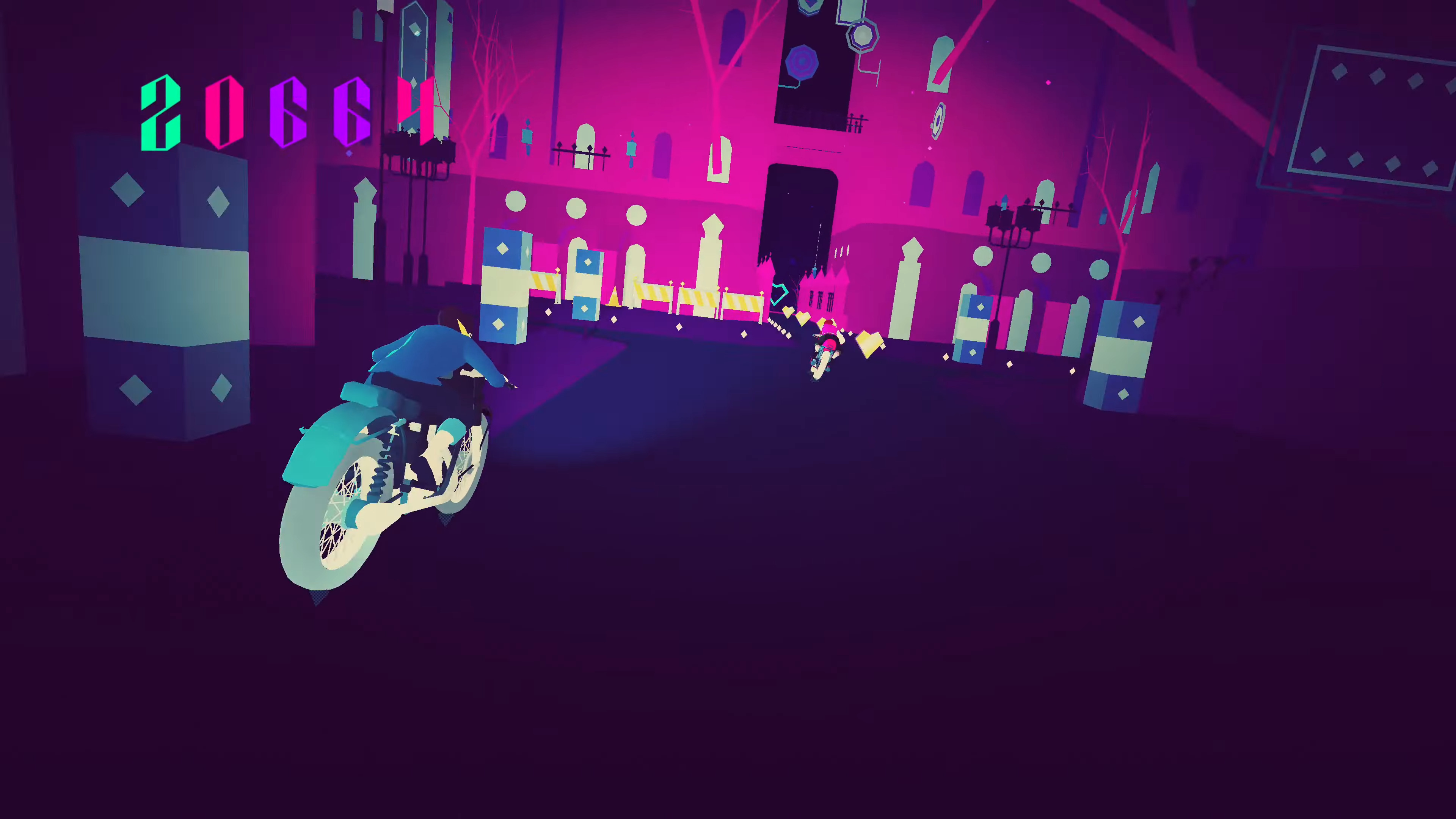
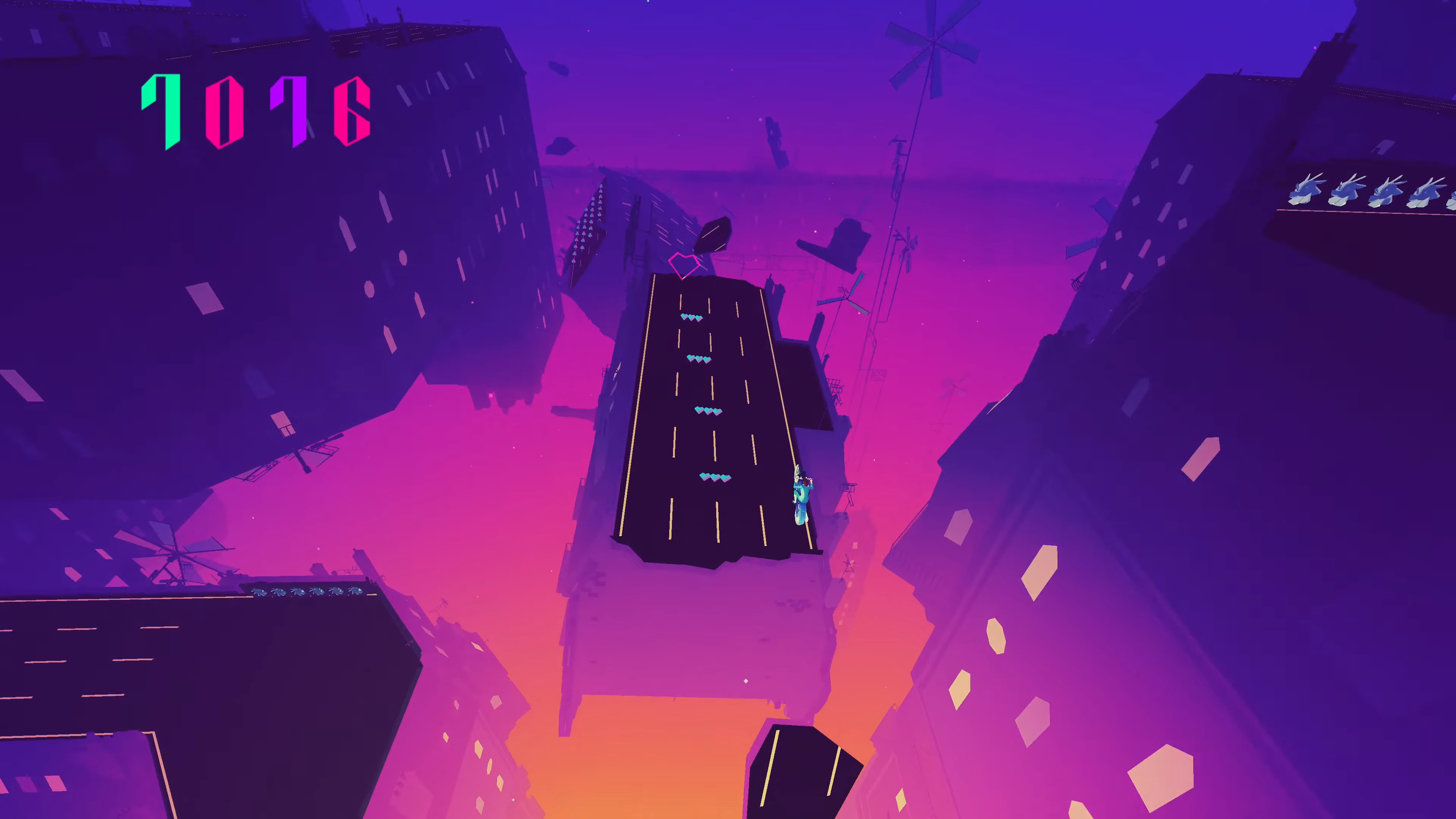
Alternatively, there's Just Shapes and Beats, which has a generous "dodge" mechanic, but which gives you a full view of the field and telegraphs (almost) every single attack , making the game mostly a test of hustling to safe areas and weaving through clearly-defined bullets. Just Shapes and Beats never has you twitching through an incoherent mess, while Everhood leans on that for its challenge unfortunately often.
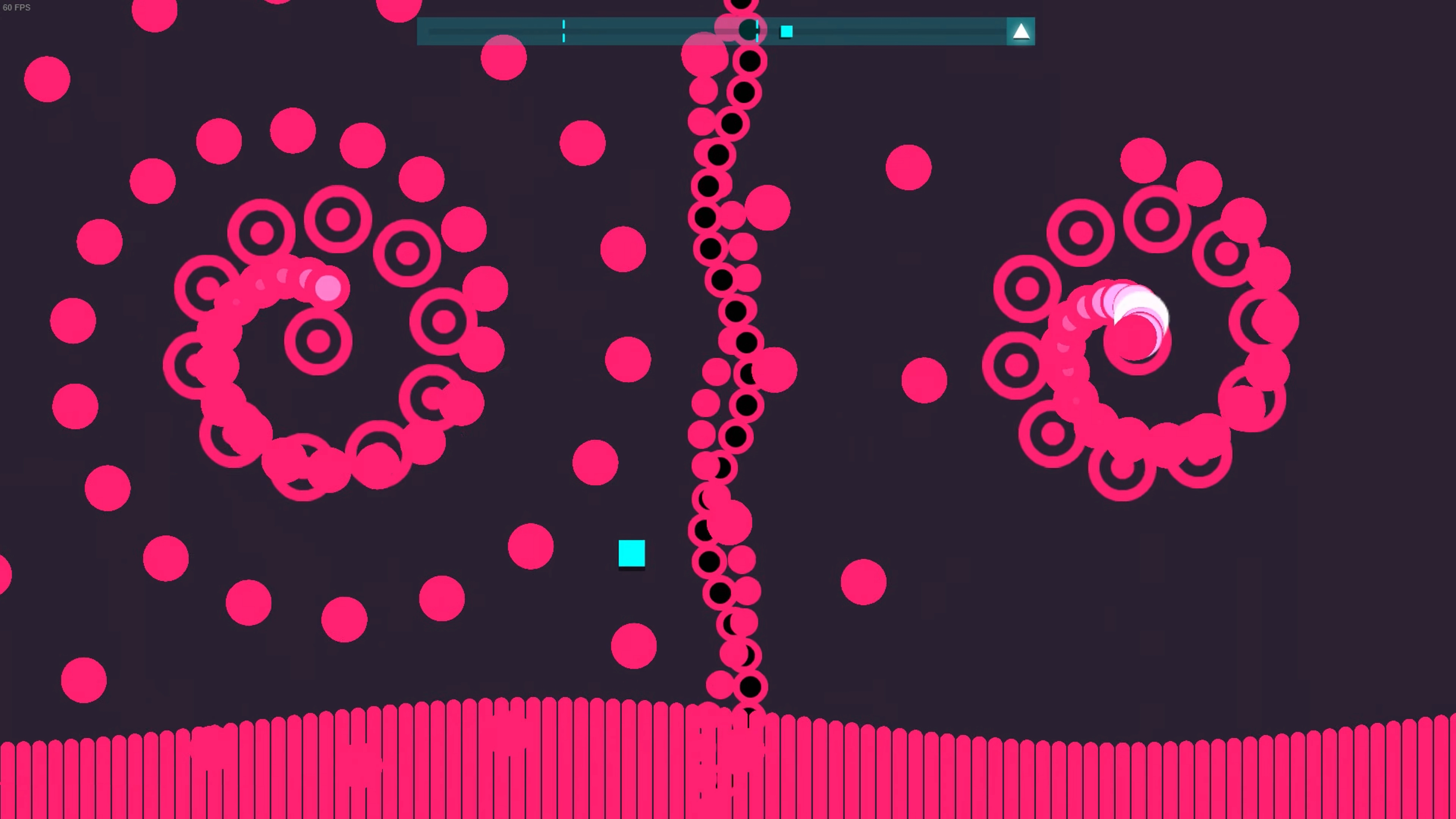
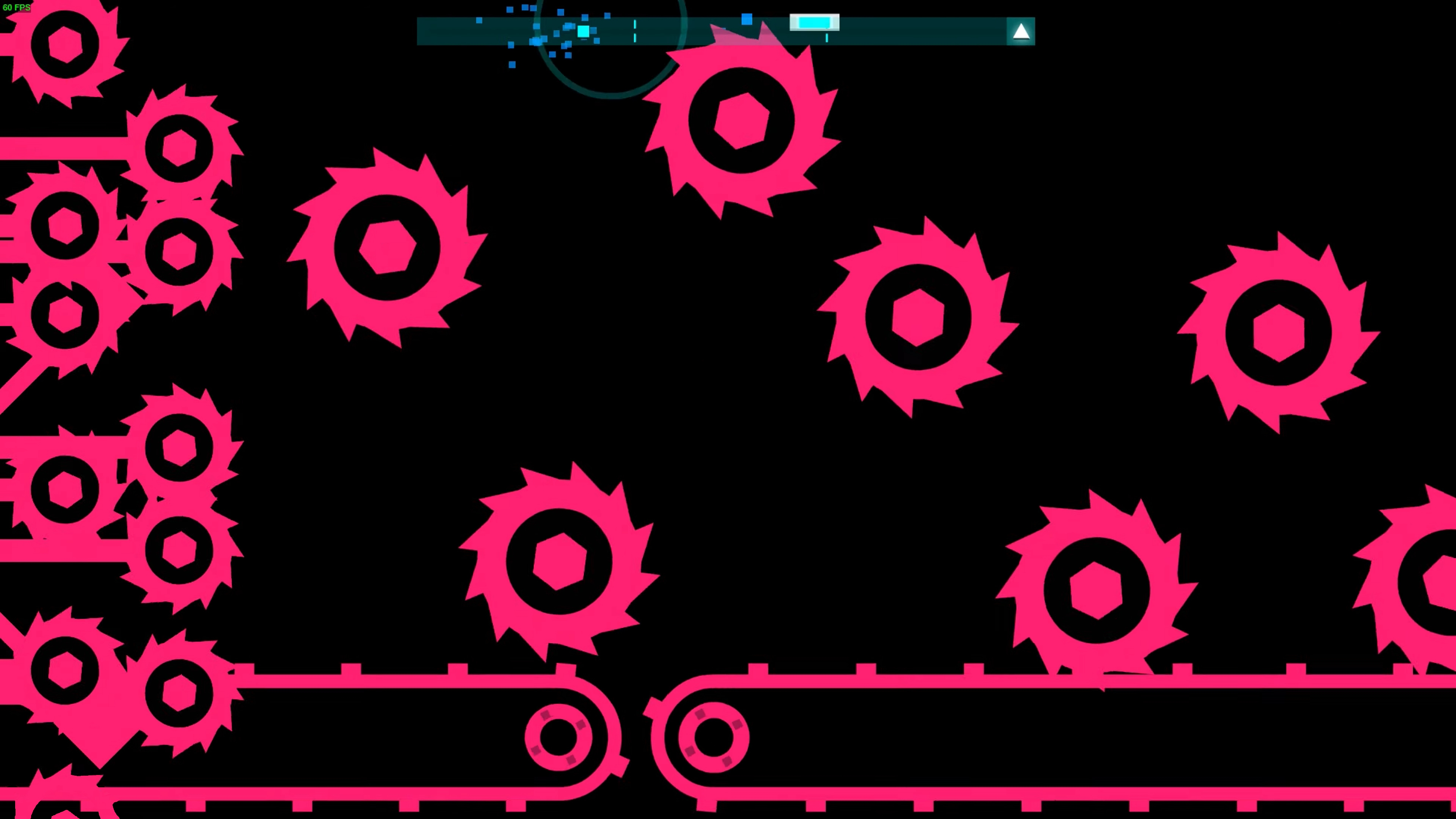
Everhood also flirts with the idea of being a UI-screw game, very occasionally bringing in a gimmick like warping, rotating or mirroring the screen. My favorite of these is a sequence where the game doesn't refresh any areas that would otherwise be black, creating that "hall of mirrors" effect you get when you clip out of bounds in Doom 1, or when you complete a game of Microsoft Solitaire.
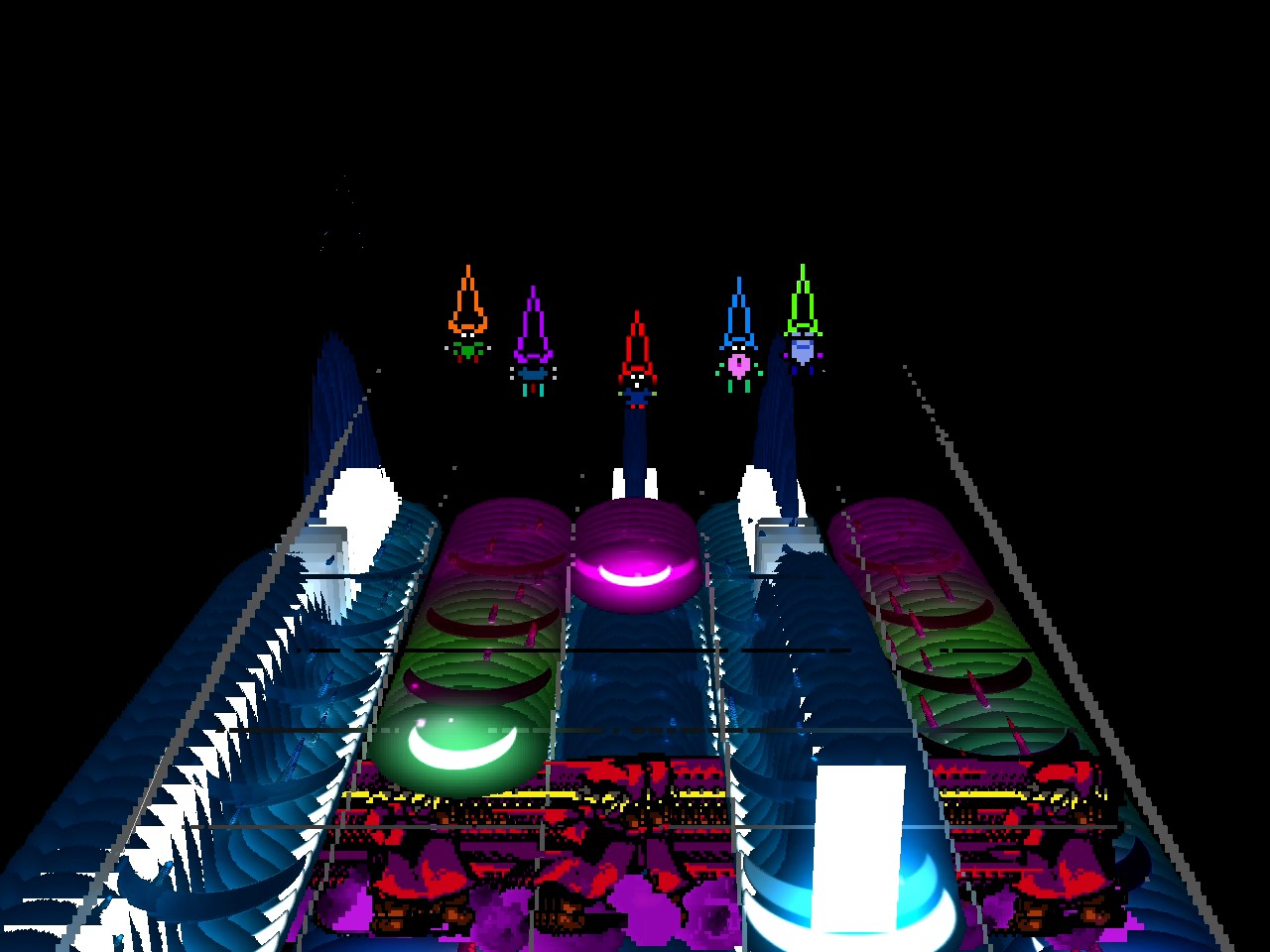
I love that kind of thing, but I know other people hate it. And Everhood unfortunately ends up sitting on the fence, playing around with that kind of effect sparingly: not enough to fully satisfy me, but probably too much for anyone who isn't into it.

I downloaded a few random custom levels, and was immediately greeted with levels that did more with UI tomfoolery than the base game ever dared to. Alas.
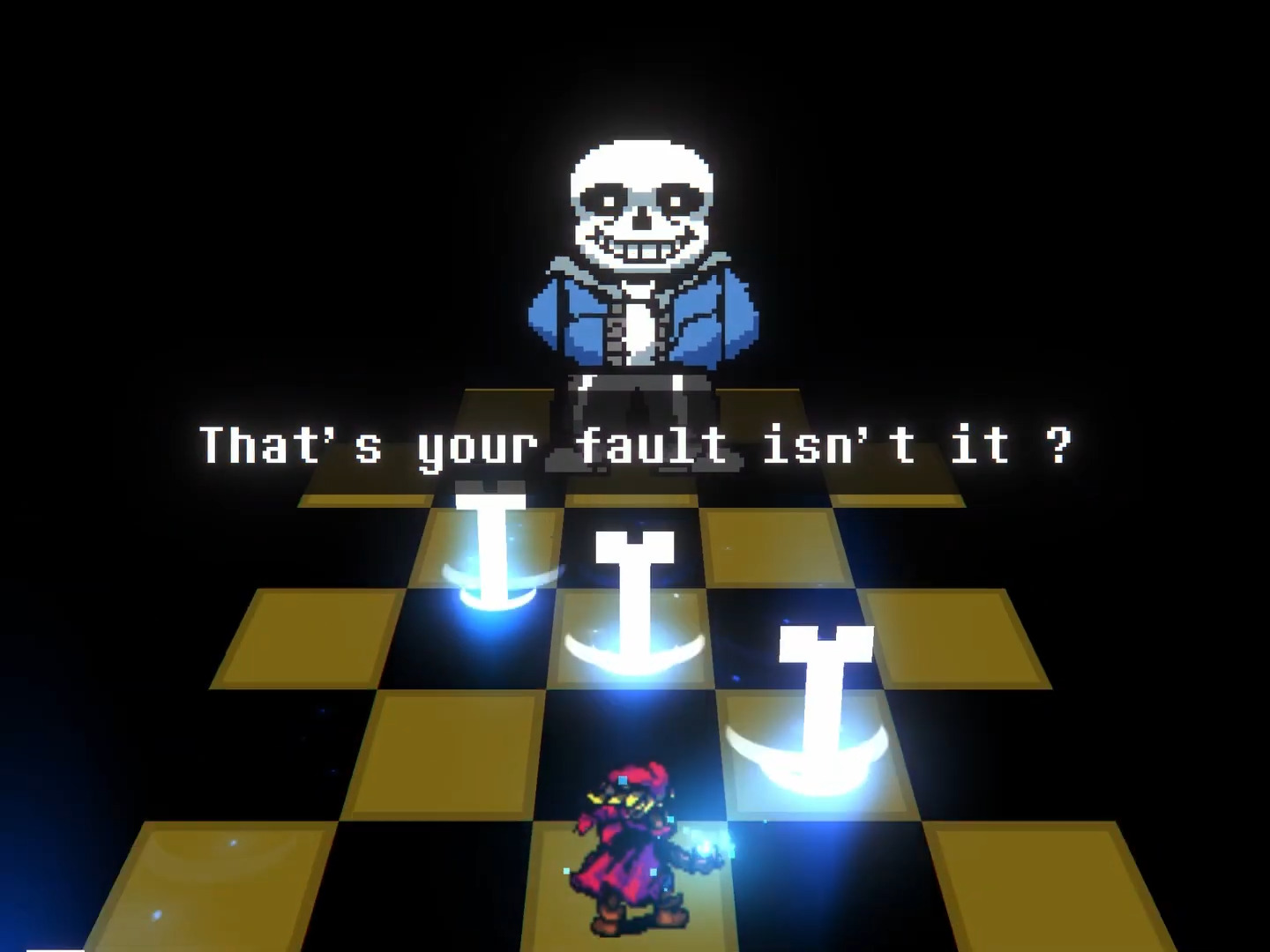
All that said, the combat still works, and I enjoyed the mechanics enough to go back and try for Perfect Clears on every song from the first half of the game. I'm hoping that for the sequel, they lean more heavily on UI fuckery instead of raw reflex.
(It's also possible I'm getting older and my reflexes aren't what they used to be. I played on the highest difficulties for most of the game but ended up having to turn it down as I approached the climax of the main storyline, and gave up on completing the hardest fights in the game altogether.)
There is some genuinely funny comedy in the game. The RPG section, the plank renting service, getting captured by Professor Orange, Orange's attempt to resurrect an ancient creature, Orange's "quantum battle"... I guess I really liked Professor Orange's general deal.

Like I said, I went back for some of those No-Hit achievements.
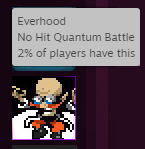
The script is at least mildly amusing throughout... except when it comes to Harrowed Haley.
I hate how they handled Harrowed Haley.
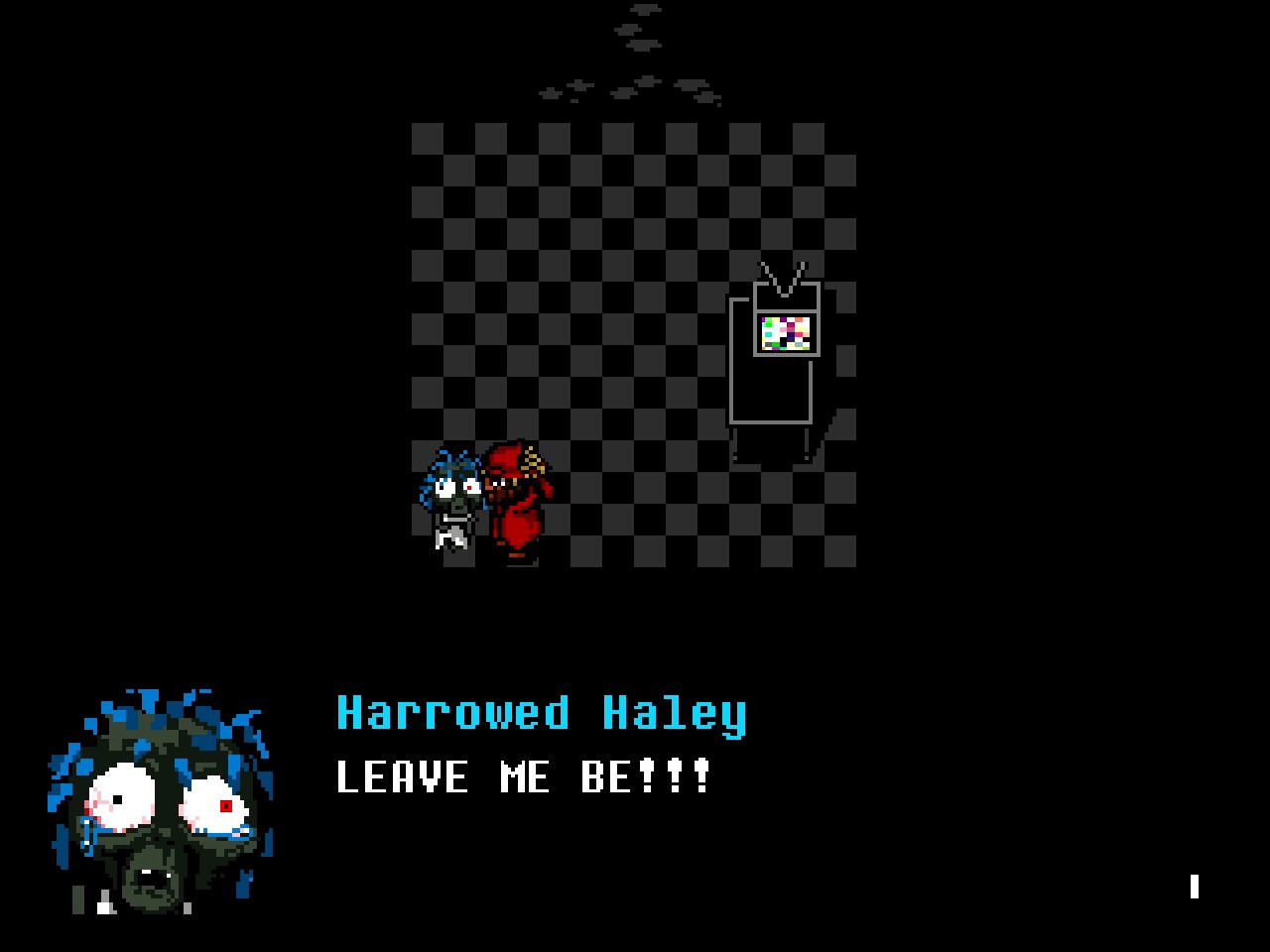
I'm not ready to talk about Harrowed Haley. I'll get back to them.
I'll add that the script is generally alright throughout, but that it suffers from what I imagine is a translation issue. The script is flutent, but not quite native, making some of the dialogue oddly stilted. It's not a dealbreaker, but it's definitely noticeable.

Aside from that, there's plenty of dialogue that feels too on-the-nose, places where the dialogue would flow better if the script trusted the audience more. I generally found myself happy to talk to each NPC, even with the script faltering here and there.
There are some excellent character designs Green Mage, Rasta Beast and Zigg stand out, having strong personalities and relatively strong voices, although only Green Mage felt to me like they really escaped the issue with stiltedness that muddies the distinctiveness of the rest of the characters. And even the characters that are limited to a single battle have strong visual designs: I could watch the Dev Gnomes dance all day long.
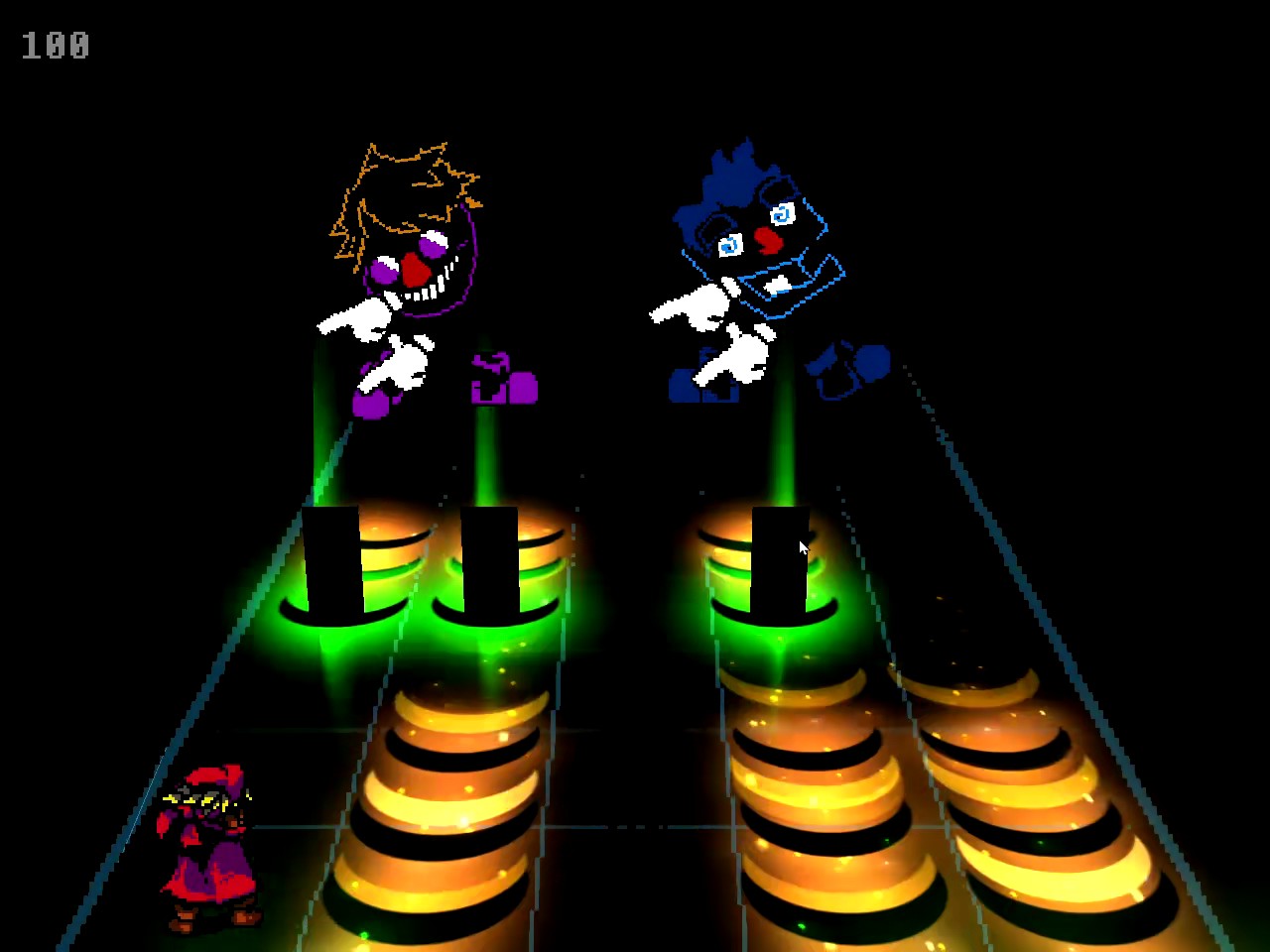
And again, for me, the game almost delivered on what I believe it intended as its message. If I thought it was aiming for a bad message, I wouldn't have played through it once, much less twice. I figure they will either spend more time with the script, which could resolve the kind of issues I had with Everhood 1... or they'll double down on the things I liked least about Everhood 1, in which case I will at least be entertained when I'm not mad.
Okay, so I'm going to walk through the major plot beats of Everhood's story, for those who haven't played, and to make sure I remember them. There's a major spoiler partway through, which I'll warn you about when you're getting closer, in case you want to go experience this game for yourself.
PART 2: THE PLOT RECAP: ACT 1
Everhood opens with a Deltarune sequence, in which you're asked to "abandon Humanity, Time, and accept Immortality."
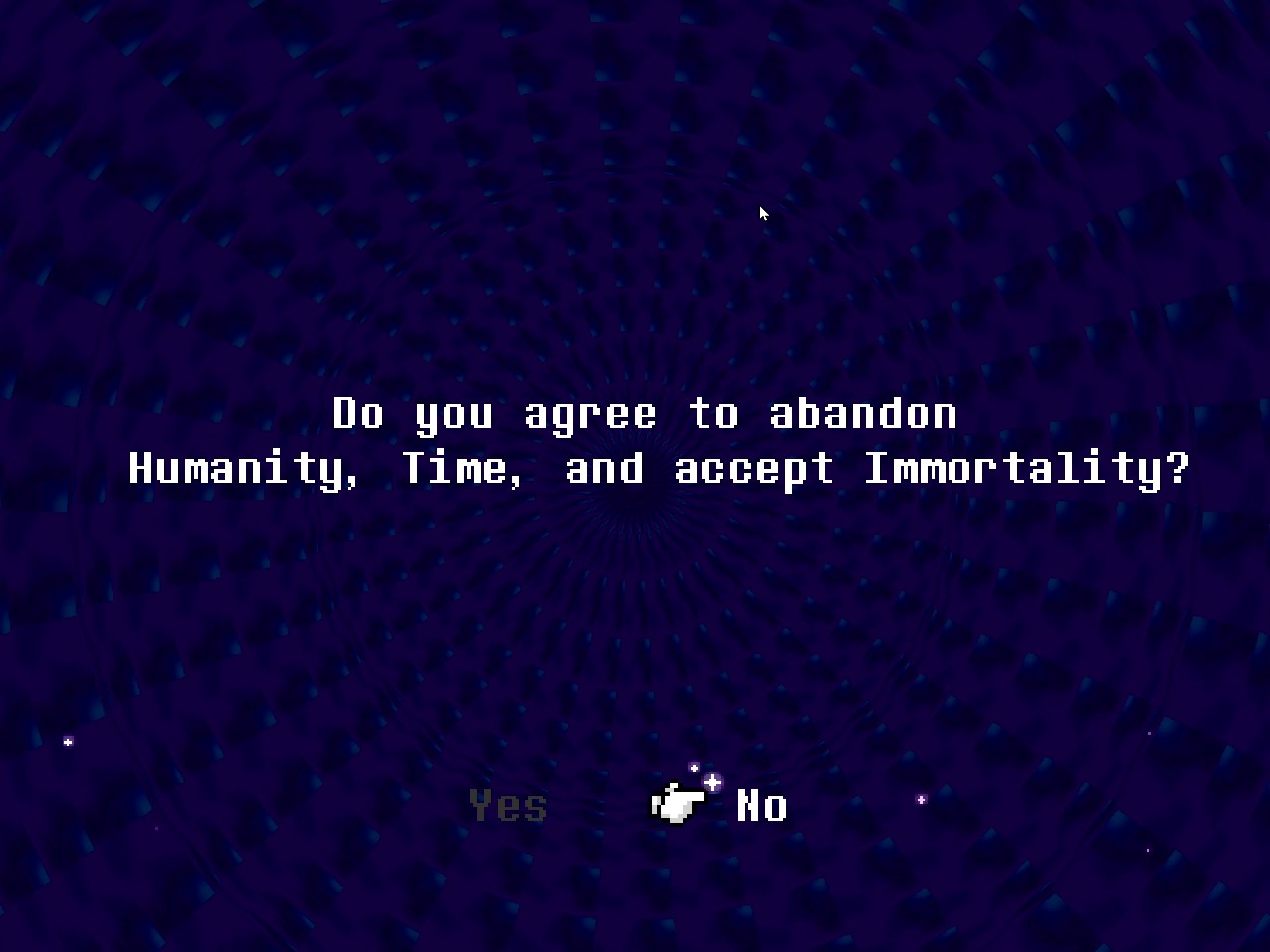
You can say no, in which case you'll be shunted back to the title screen. And then when you start a new game, it will remember that you said no last time! Hey, that's like Undertale!
As far as I'm aware, this is the only time the game will remember your actions like this. It feels like the devs wanted to do like Undertale and have some of the characters be aware of your actions from previous saves/runs, but then gave up as soon as they got past the initial, trivial case. There's stuff in the game that evokes a sense of "you've done this before," but it's not actually dependent on you having done anything before. It seems to imply that you, as a player, have done things in the world of Everhood in the past, but this didn't land for me since I didn't actually do them.
There's one bit where this works -- if you succeed at a tremendously difficult sequence that you are expected to fail at, you get a glimpse of the consequences of every previous attempt. It would play out the same way even if you won on your first try, but that's nigh-impossible, so it works. That said, nothing else in the game seems to imply that consequences can accumulate over multiple attempts. So. It still works, but it would've been even better if it had been integrated into anything else.
After that, we get a shot of a disassembled doll in a forest. Think of them like a cross between Super Mario RPG's Geno, and the color red. They're Red Geno.
A gnome dressed in blue, Blue Thief (looking and acting like one of those potion gnomes from Golden Axe), runs in and steals one of the doll's arms.
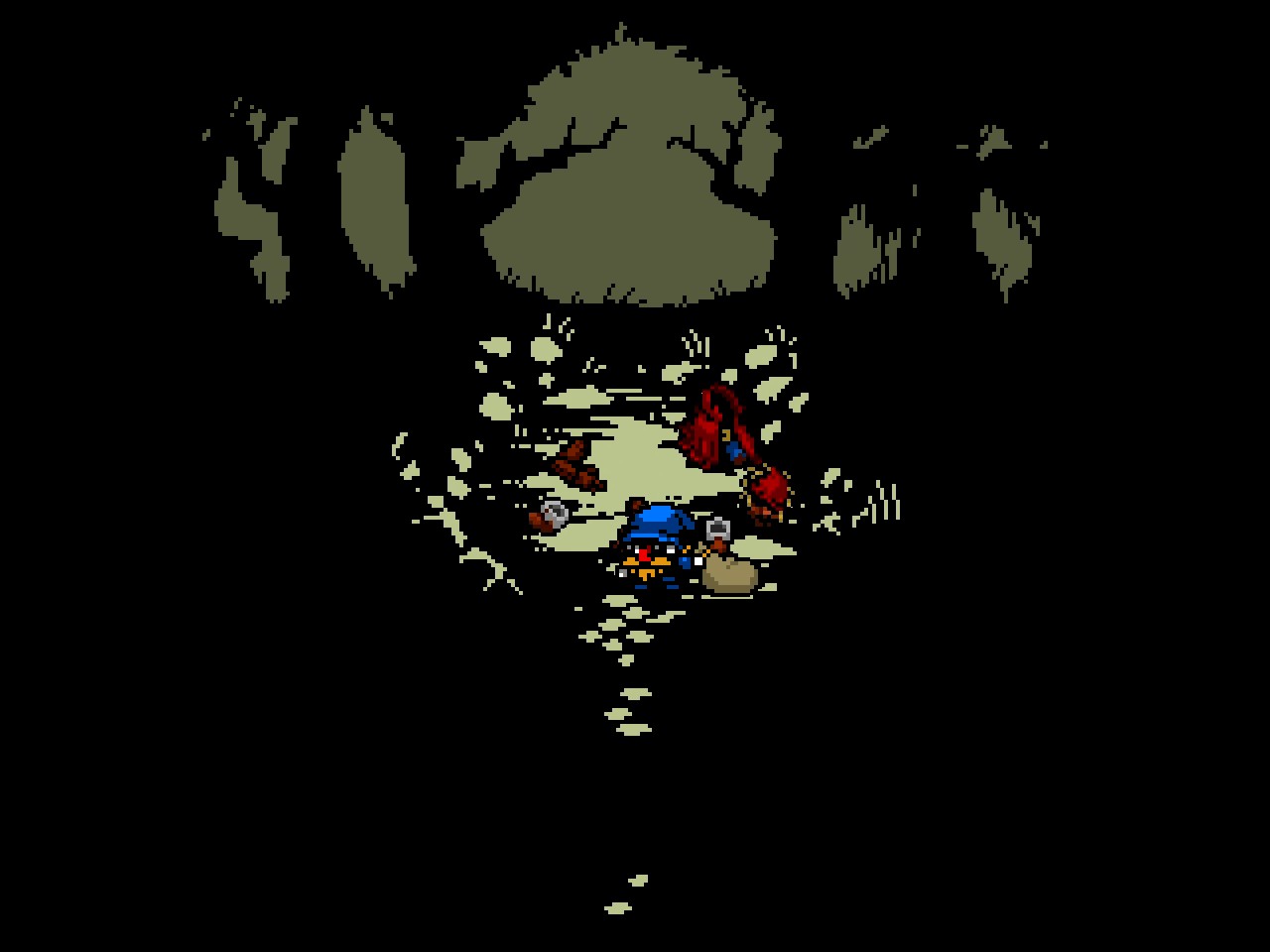
The doll, named Red, reassembles itself and goes after them. The first half of the game is dedicated to you, as Red, attempting to recover your arm.
You meet a frog along the path who gives you a tutorial.
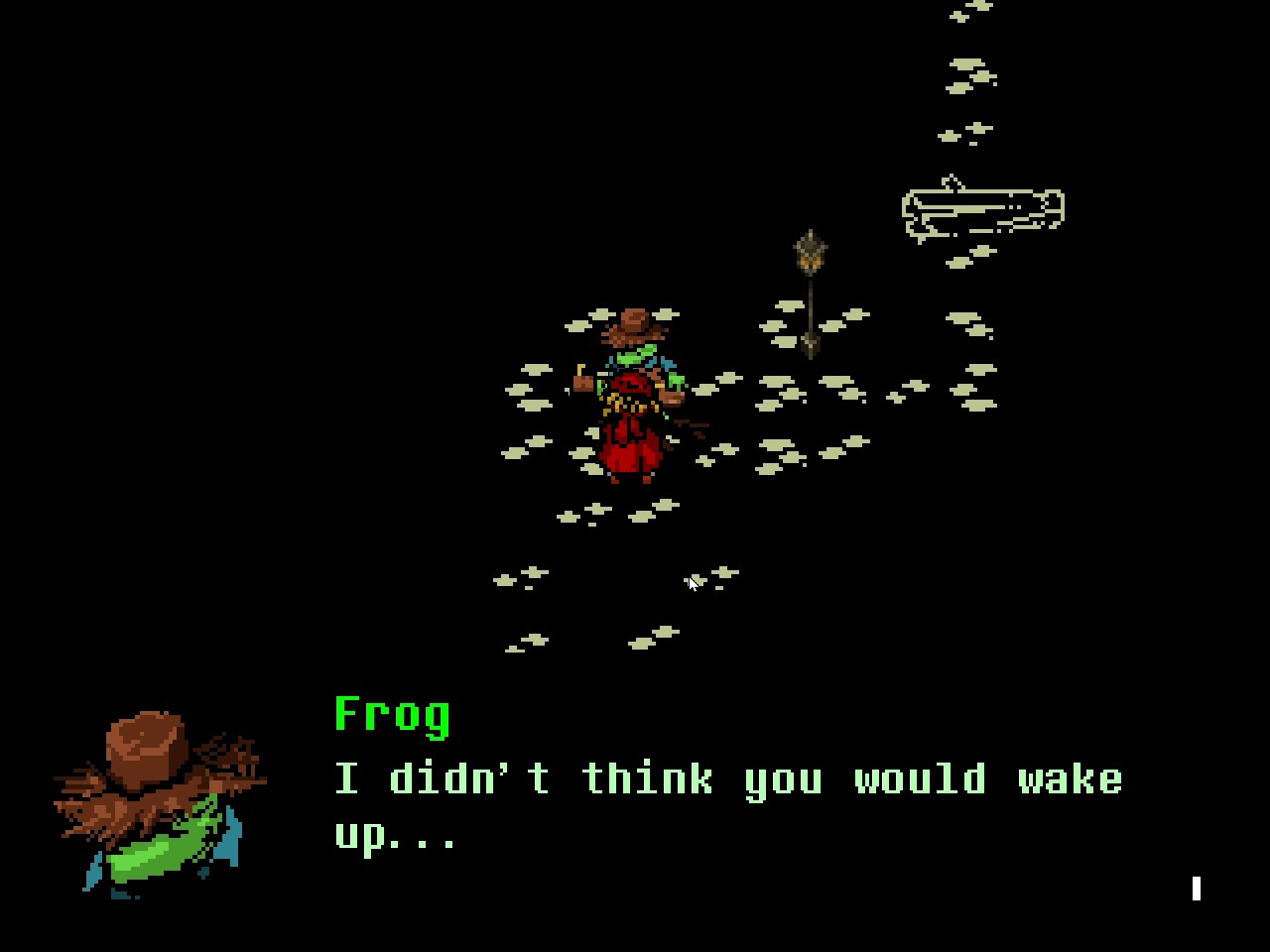
You simply have to dodge notes by shifting between lanes, jumping, and jump-rolling between five lanes until your opponent exhausts themselves. Taking a hit costs you HP, while taking no damage for long enough allows you to regenerate HP. Harder difficulties simply increase the HP that you lose per hit and increase how long it takes to recover it. That's it. That's the combat. It works.
The very next character you meet is an ATM with Flowey from Undertale's face. Which is stupid! I don't like it!
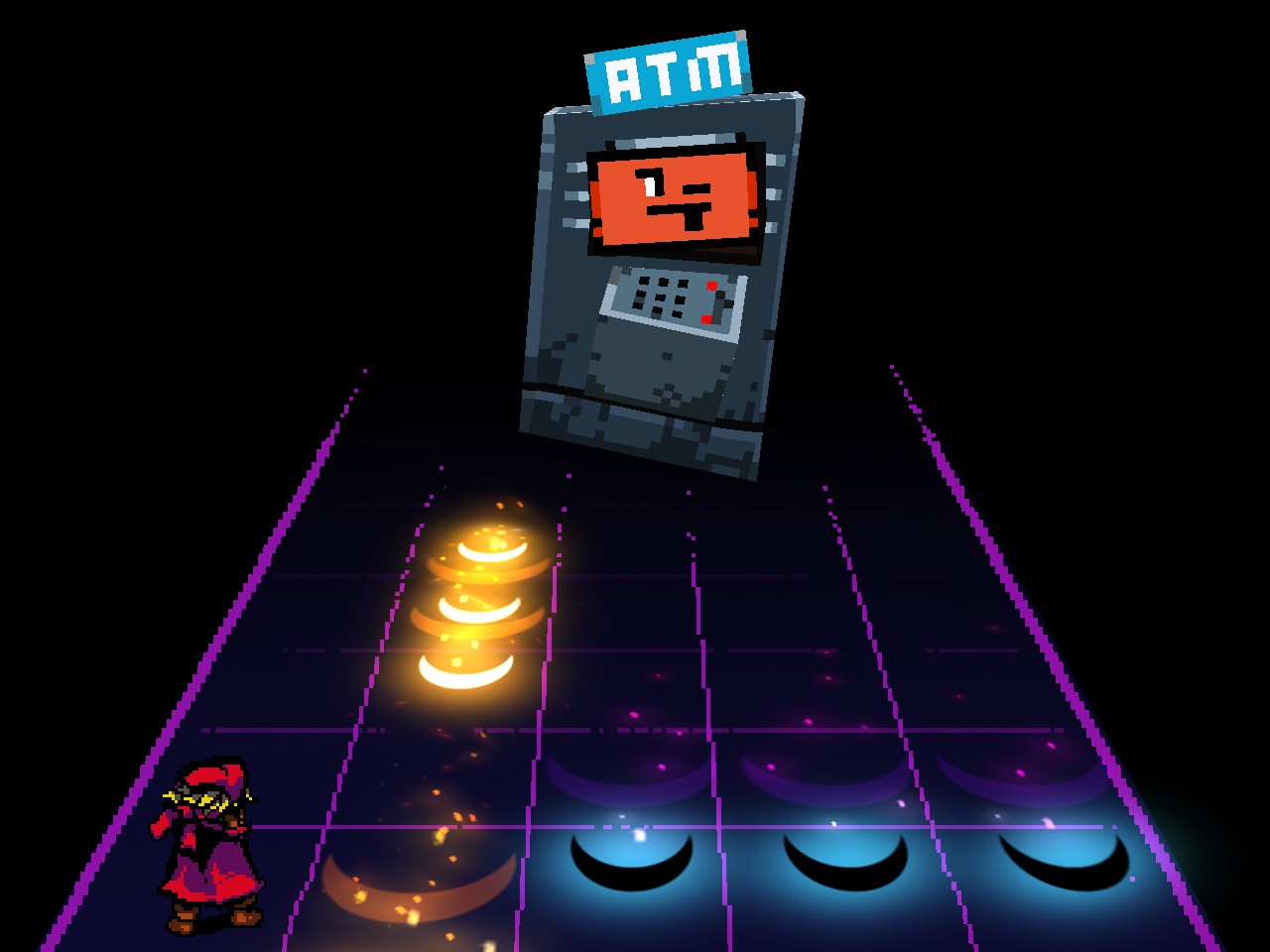
Part of my issue with this game is that it feels like a reactionary Undertale, and this cemented that feeling for me. I'll go more into that later. For now, this Undertale reference is just random and pointless. The ATM doesn't have anything to do with Flowey besides having Flowey's face.
Why? What's the point? It's a reference that doesn't do anything besides awkwardly say, "Hey, remember Undertale? Undertale? Flowey Undertale? Remember Flowey? From Undertale?"
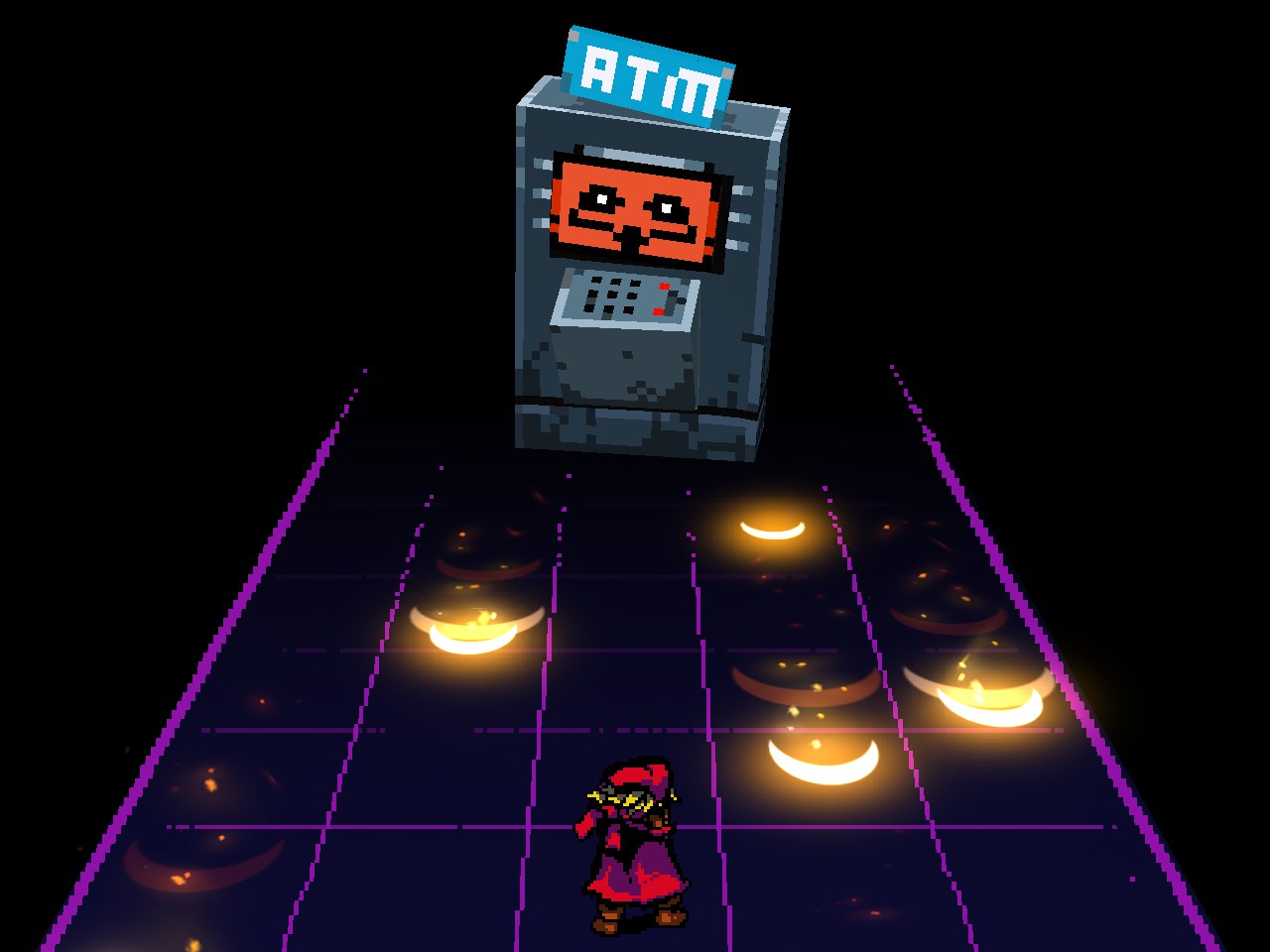
It doesn't help that the battle itself is dull, with a boring stepchart and a forgettable song. This is the first battle of the game! This was its opportunity to establish its identity!! Instead, it squandered that opportunity twice over, with a tepid reference and a tedious battle that just made me want to confirm Steam's refund policy.
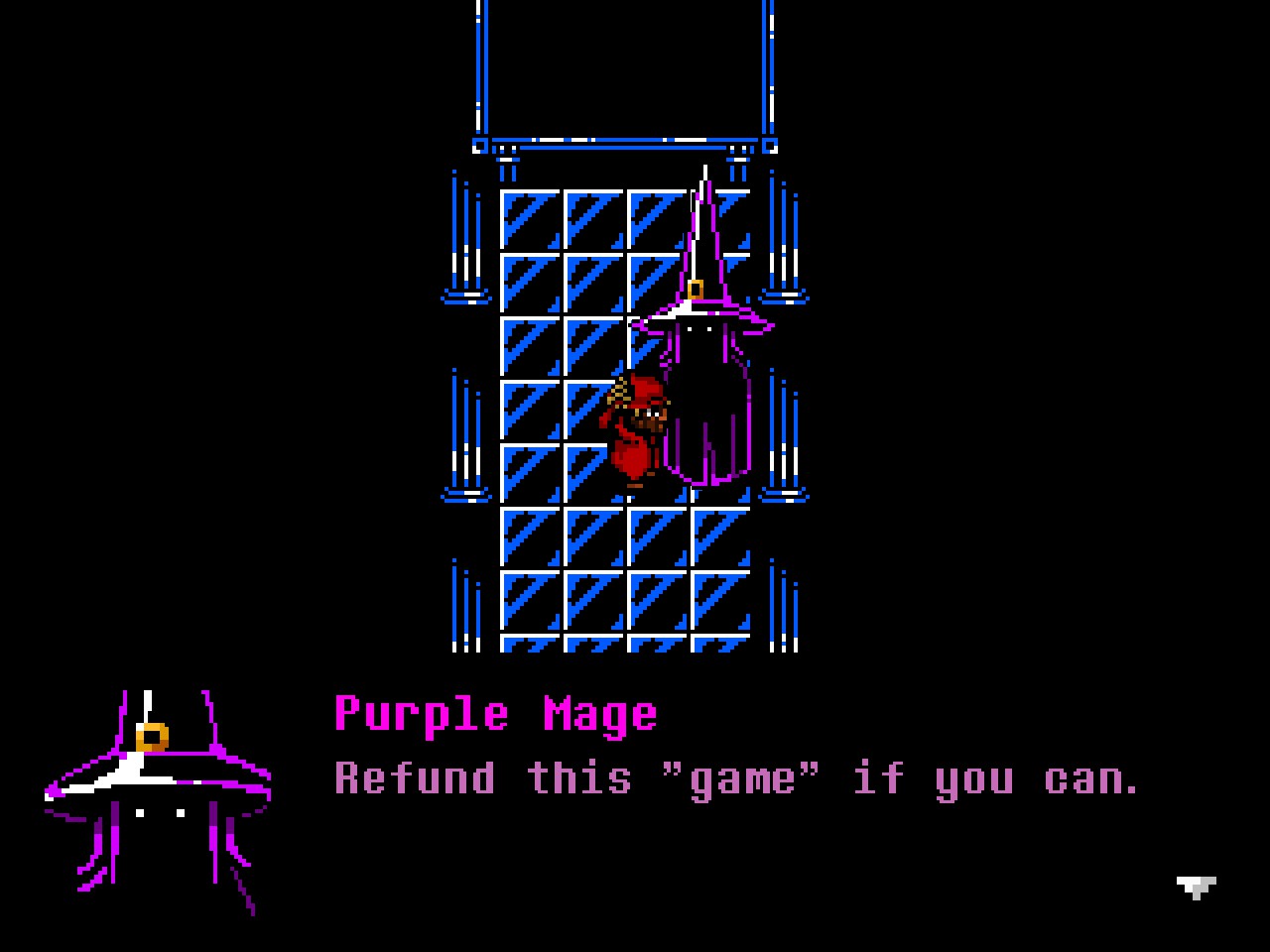
I wouldn't be surprised if this was the first real battle the devs put together, before they knew what they were doing, and never went back to revise it. In terms of battles, it is the unambiguous lowest point of the game, and it arrives right when the game should be trying to hook you.
Thankfully, it does get better from there! After that, you enter a dance club, meet a few of the kooky recurring characters, and then inevitably bump into a cool vampire-looking character named Zigg, spilling their drink. Zigg gets pissed at you for spilling their expensive drink (the last time money comes up in the game) and challenges you to a dance battle to the death.

Zigg is awesome. They rescue the game after the horrible stumble in momentum that is the Flowey ATM fight. Your cool dance moves are so impressive that it makes Zigg's shades explode, prompting them to start sweeping long streams of eye lasers across the field, before putting on a backup pair of shades.
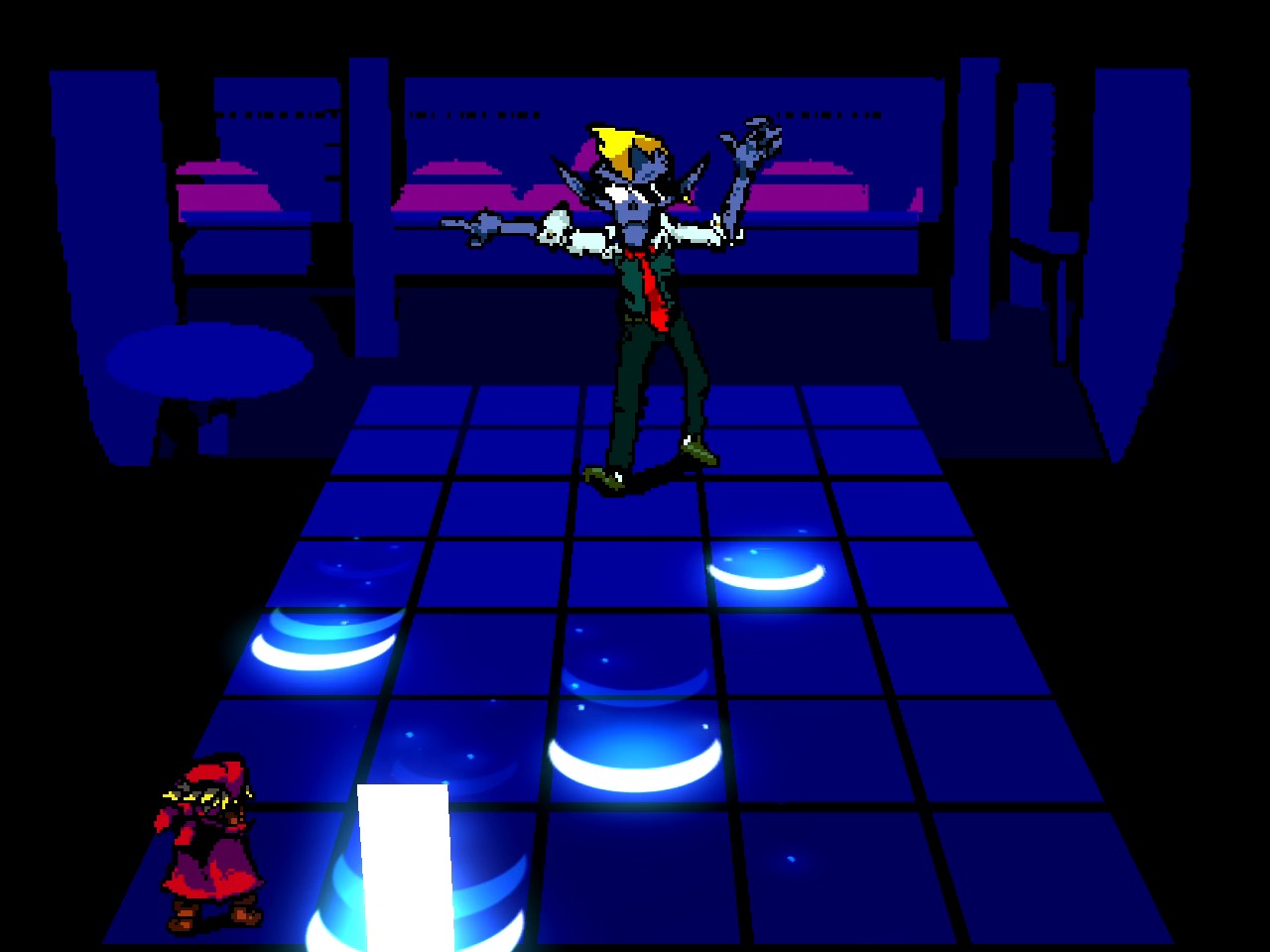
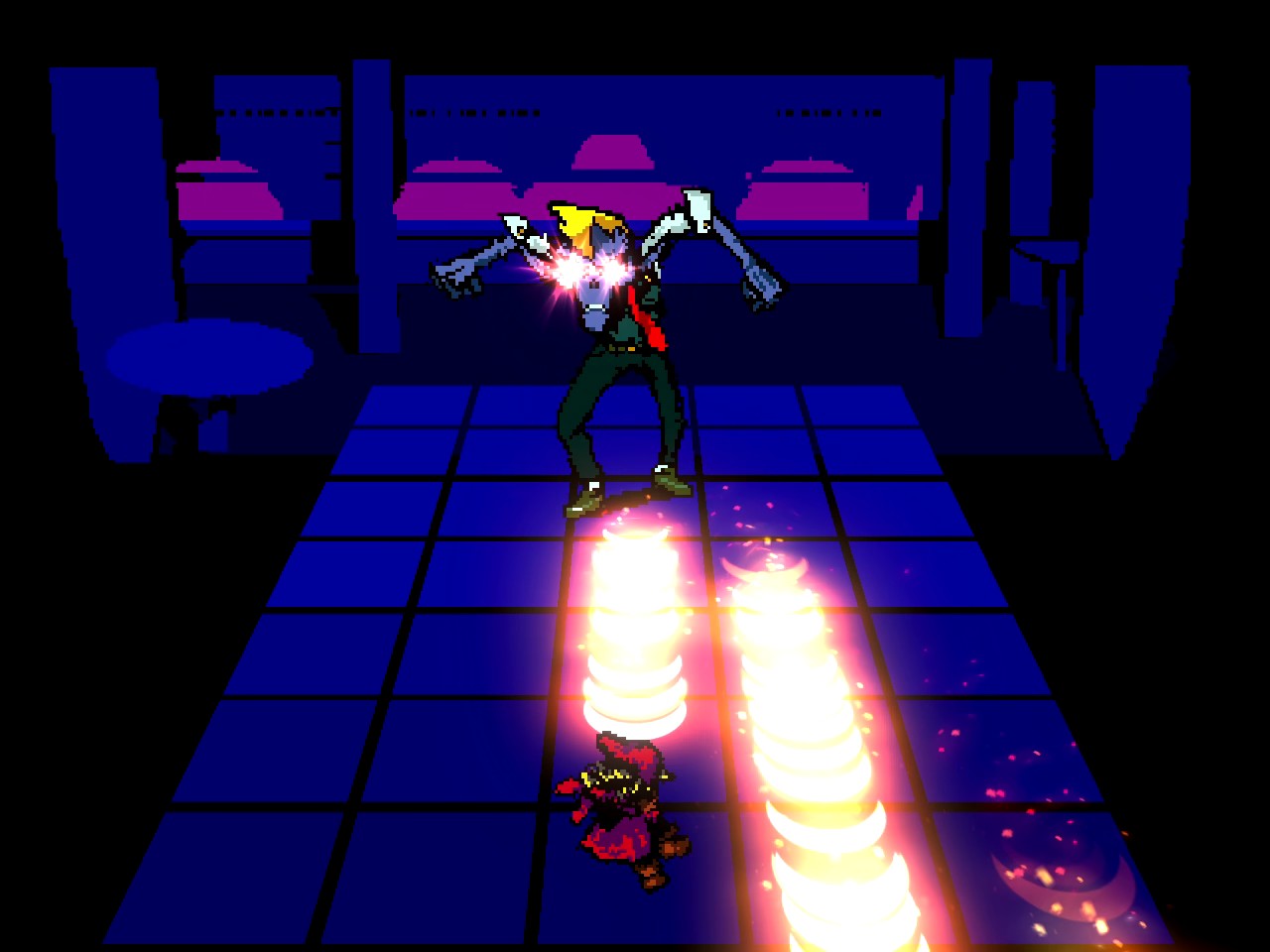
It's great. You can feel the personality in their stepchart, forced to slalom between individual beats before having to weave past their eye lasers whenever you get an opening. Zigg is positioned perfectly, hitting all the right notes of a "first boss" character.
You exhaust Zigg to the point of collapse, allowing you to nab their VIP card, which lets you pursue Blue Thief into the backroom of the club. There, you find a treasure horde gathered by the monstrous Gold Pig, who was the one who commanded Blue Thief to steal your arm in the first place.
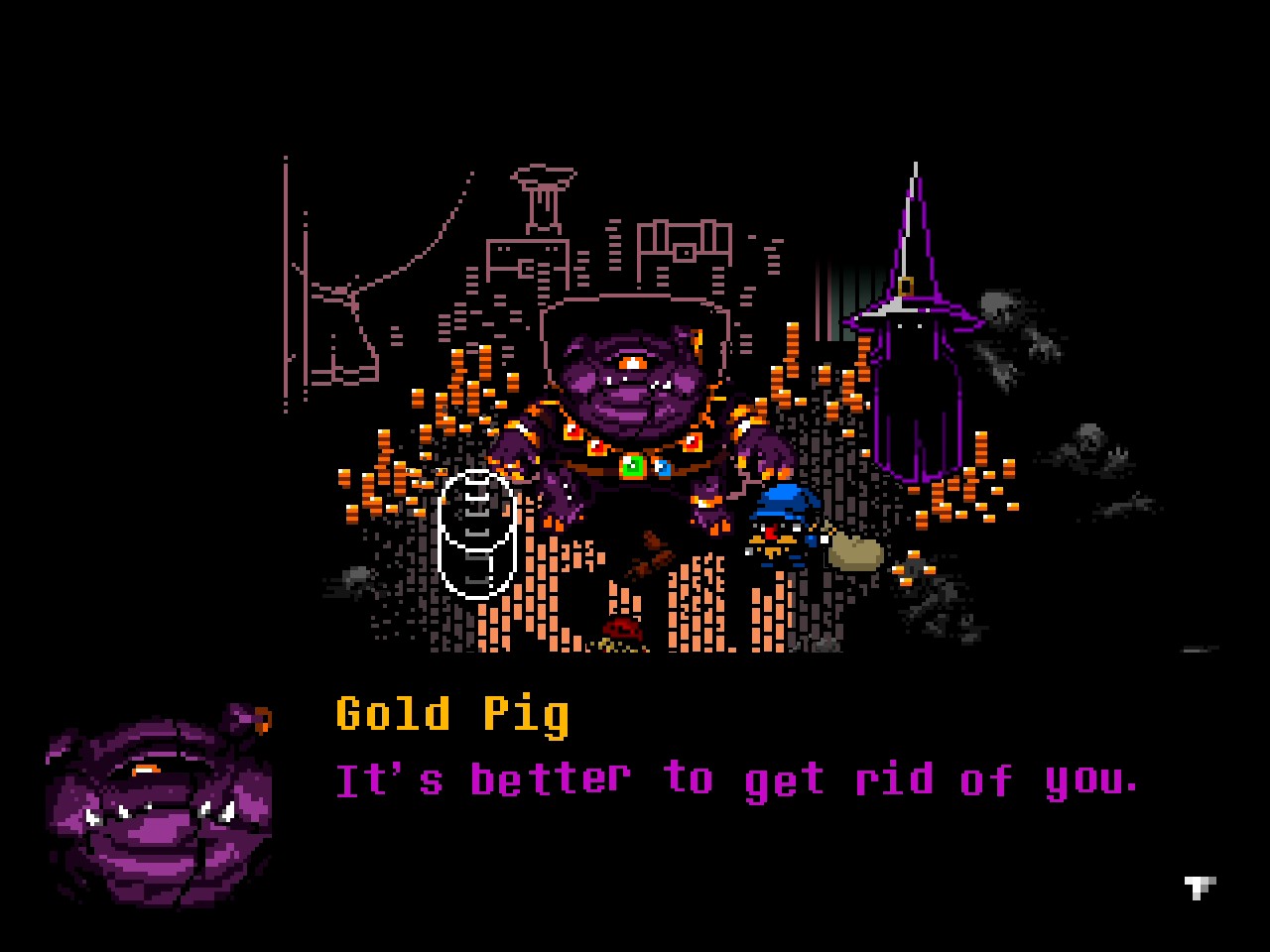
Gold Pig telekinetically seizes you without a fight and drops you into an incinerator. The incinerator turns into an "overworld" battle, but it's one you're intended to lose, burning you to death.
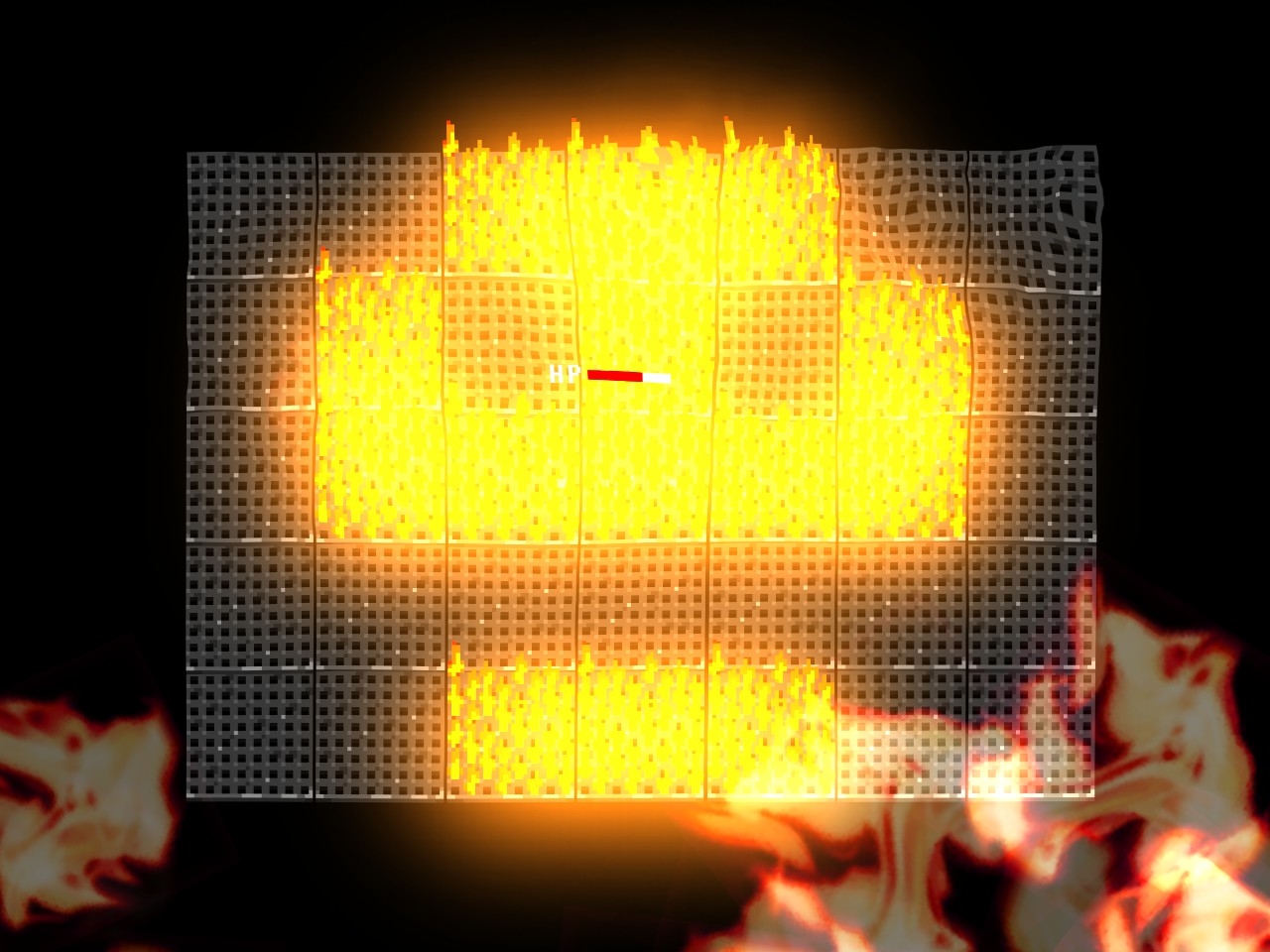
Burning to death drops you into a battle in the afterlife. Completing that battle has you walk a short path (through an area that doesn't look different from any part of the game), followed by a second battle. Both battles are trippy battles in the afterlife, nonsense but also some good fun.
The UI screwery is heaviest here, and I wish there had been more of it in the rest of the game. It's weird and abstract and great. You fight a white Aztec(?) skeleton with a dinosaur skull for a hand, who explodes into Terra from FF6 a non-infringing glowing pink spirit, who remains curled up in a fetal position until they absorb an endless trail of stick figures, who then makes it rain as they drift away, their light hinting at something massive and invisible in the distance.
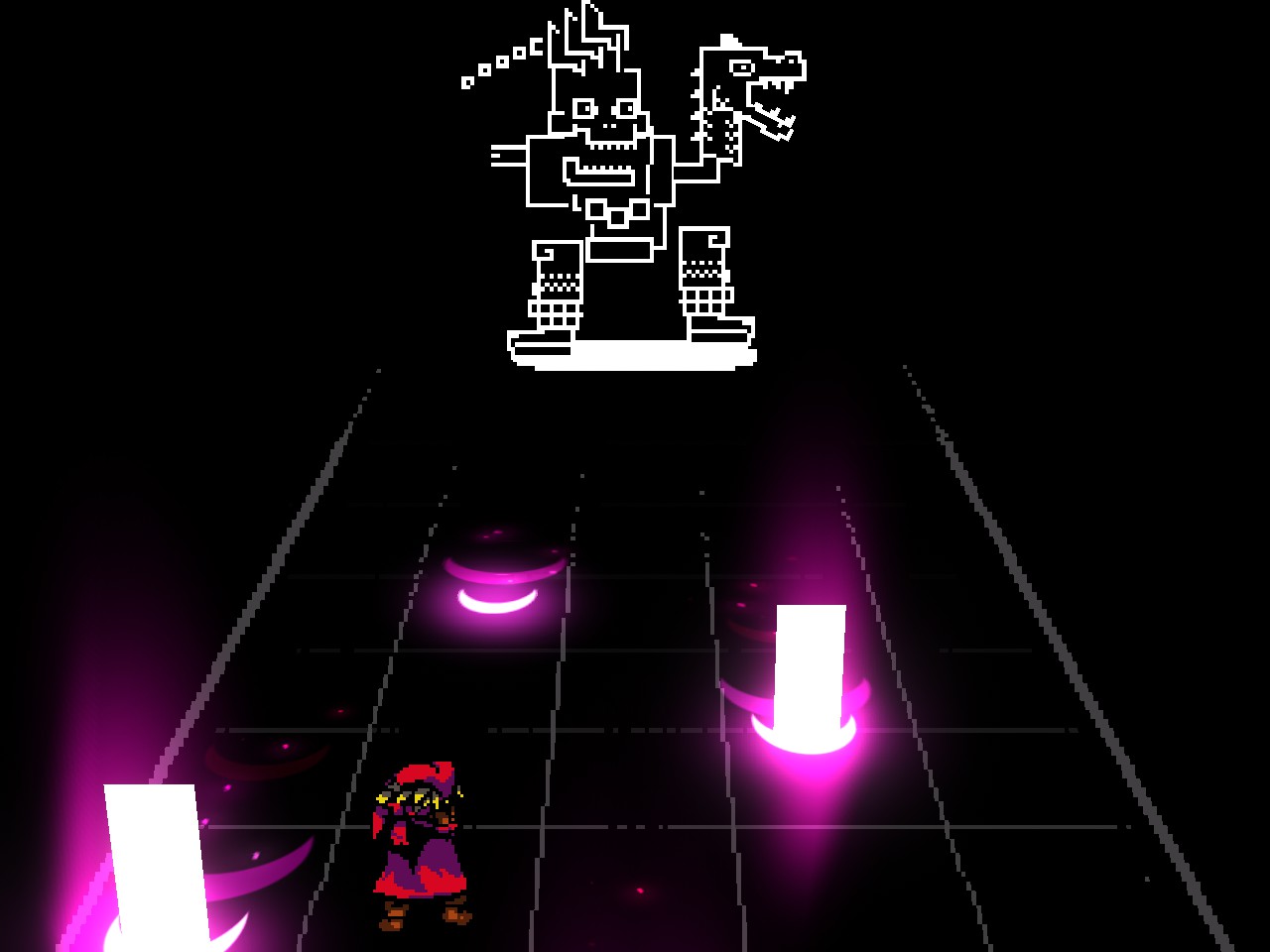
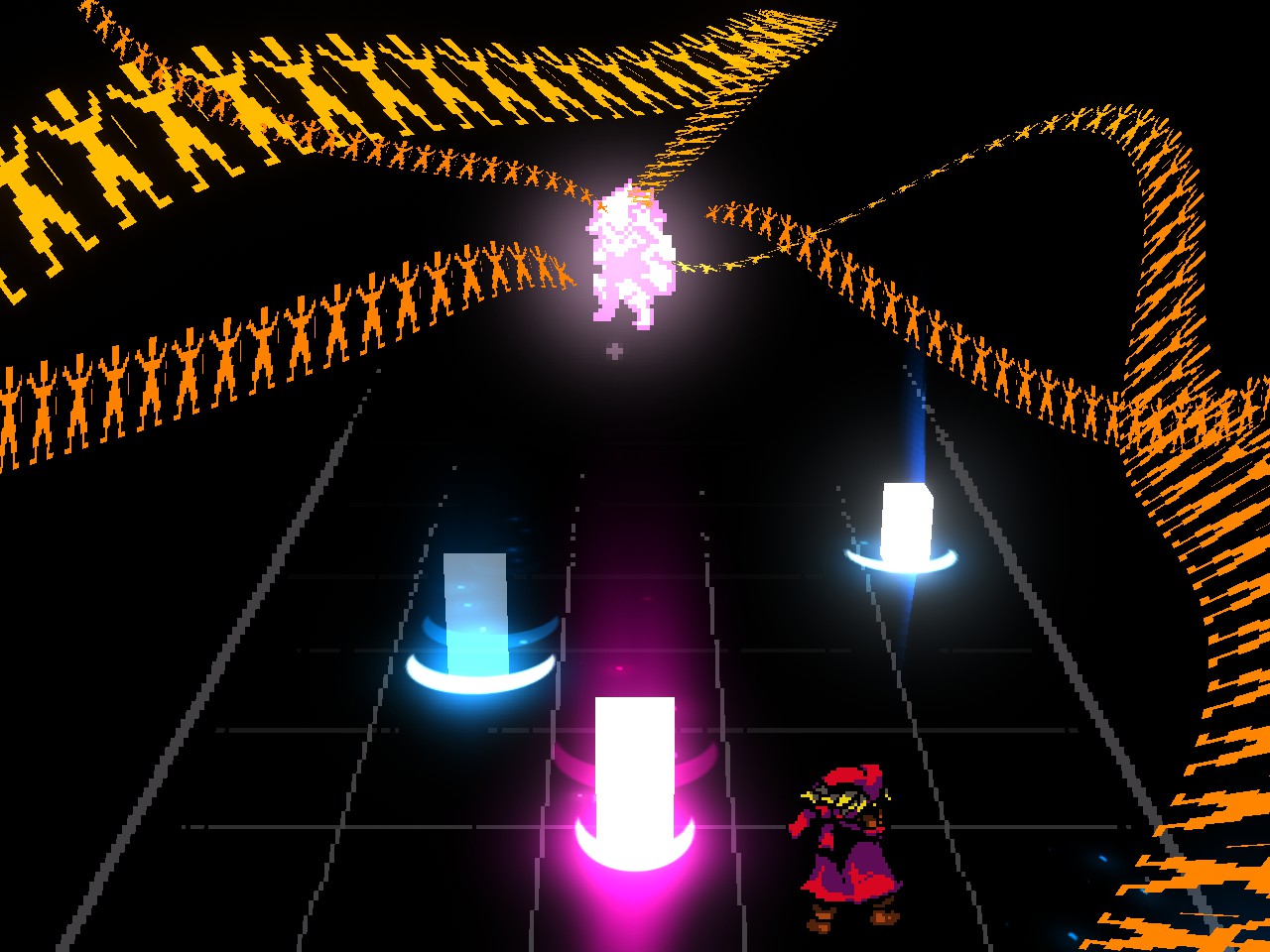
There's a weird grinning face (possibly the Buddha), an army of gnomes, and then the Buddha (definitely the Buddha).
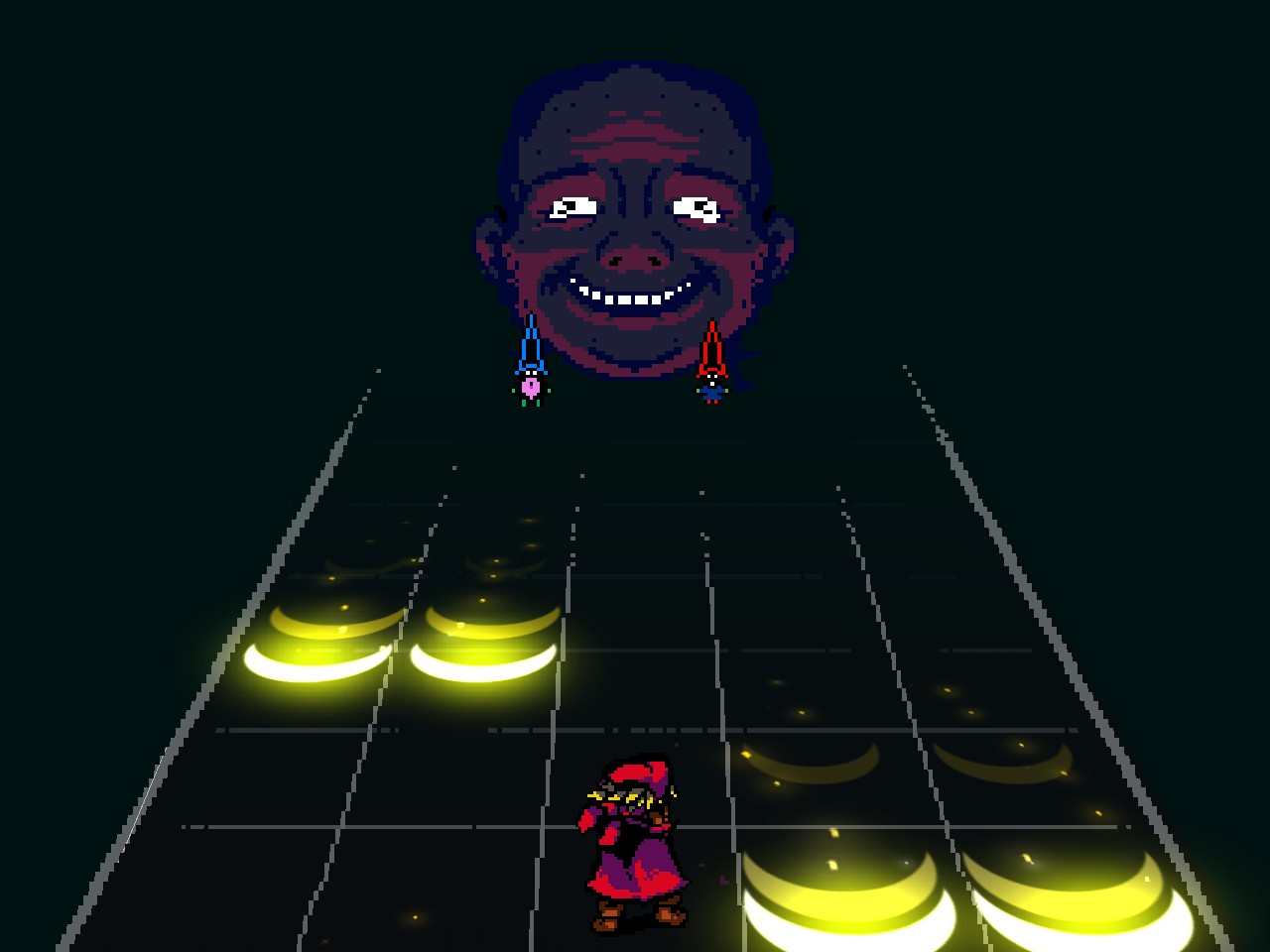
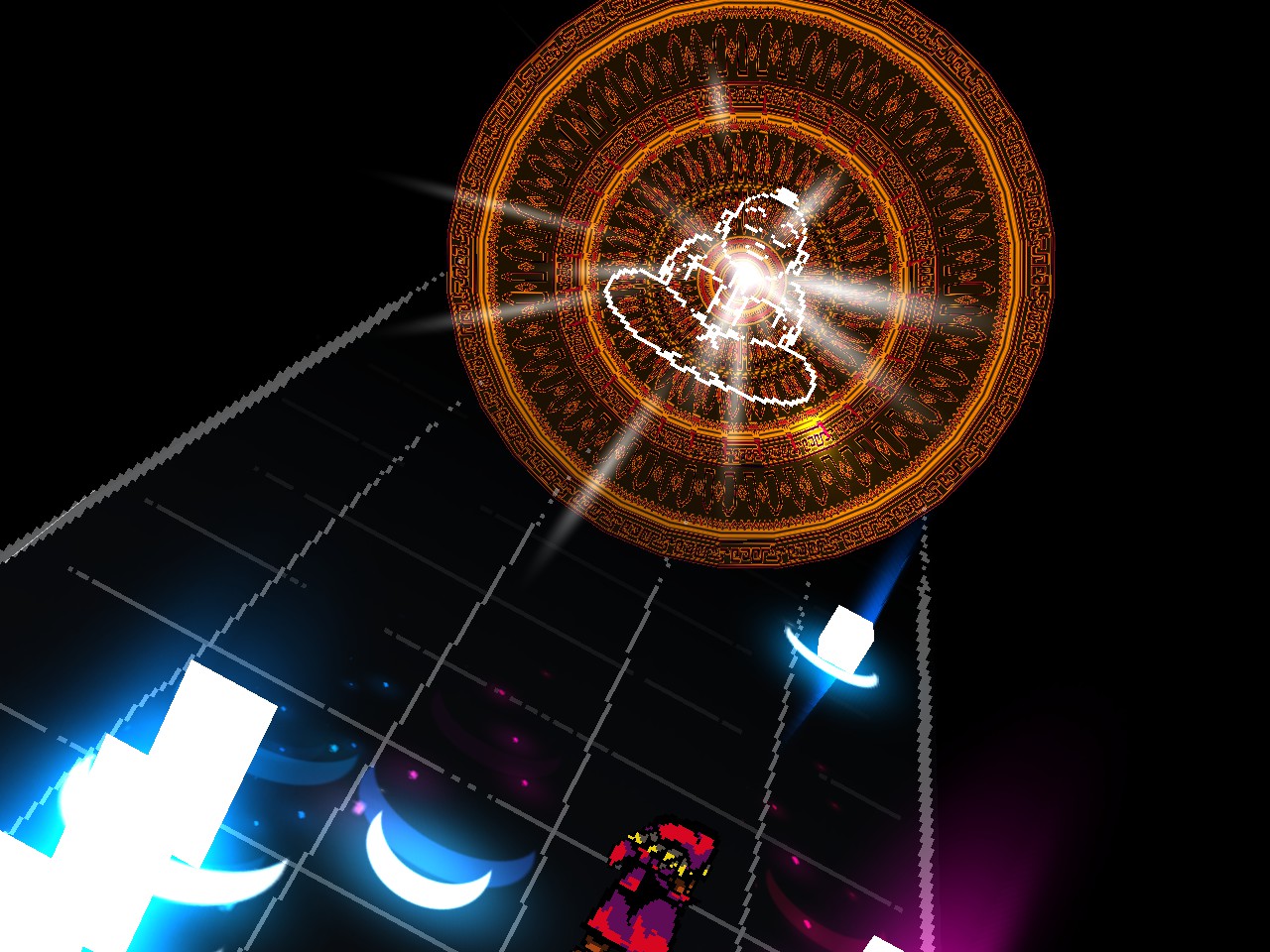
By this point, your screen is rotating and the background is doing the screen-bleed/Hall-of-Mirrors thing and your controls are getting reversed and the camera is drunkenly listing from side-to-side and it's great. Love it. Great stuff.
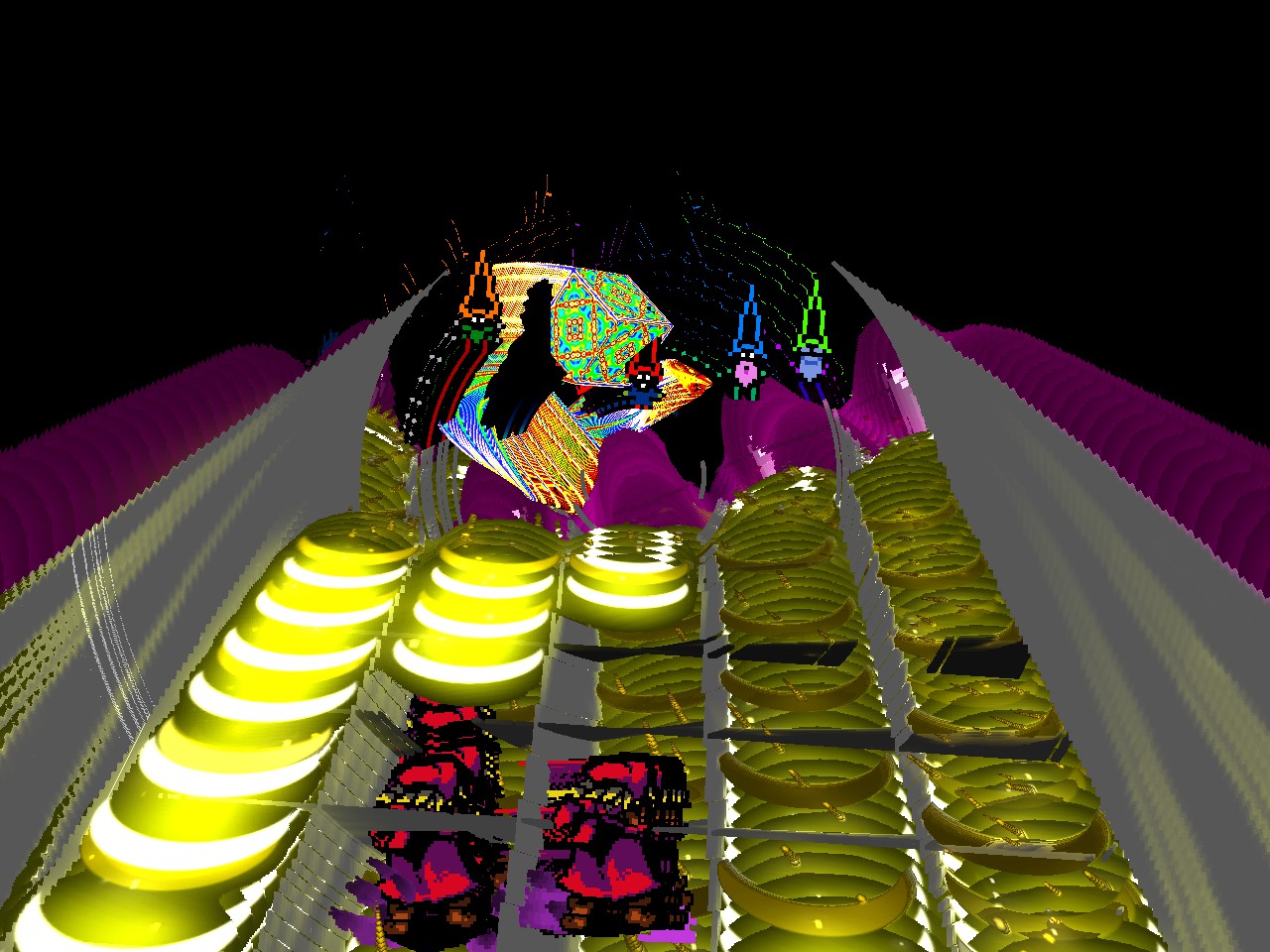
You eventually win, and are resurrected by the weird omniscient narrator from the intro, who tells you that your death shouldn't have been possible, so they're going to restore your body to before you got incinerated. Remember that for later.
You wake up in the ruined incinerator, with Gold Pig gone. Blue Thief is still there, though, because they had their legs stolen by Gold Pig. They're not a doll, their legs are just detachable. For some reason. The two of you form an alliance, you being the legs and Blue Thief being the voice, as you work together to recover your pilfered limbs from Gold Pig.
You arrive at a hub world, which consists of a bunch of free-standing doors that lead to various little realms. There's also a conspicuous empty frame that goes nowhere, which you learn will lead you to Gold Pig's hideout once you've reassembled its door.

You spend some time exploring the various worlds, meeting the same zany, kooky characters in each locale and collecting pieces of the missing door. There's an Outrun-inspired go-kart minigame, a dreadfully tedious obstacle course, a creepy Cursed Castle that is conscious and speaks to you, a mad scientist's lab, an extended trading sequence à la Link's Awakening (except with most of the trading being done in a single area, all in a row), etc. There's enough variety to keep things fresh, each little realm having a different tone and flow than the others.
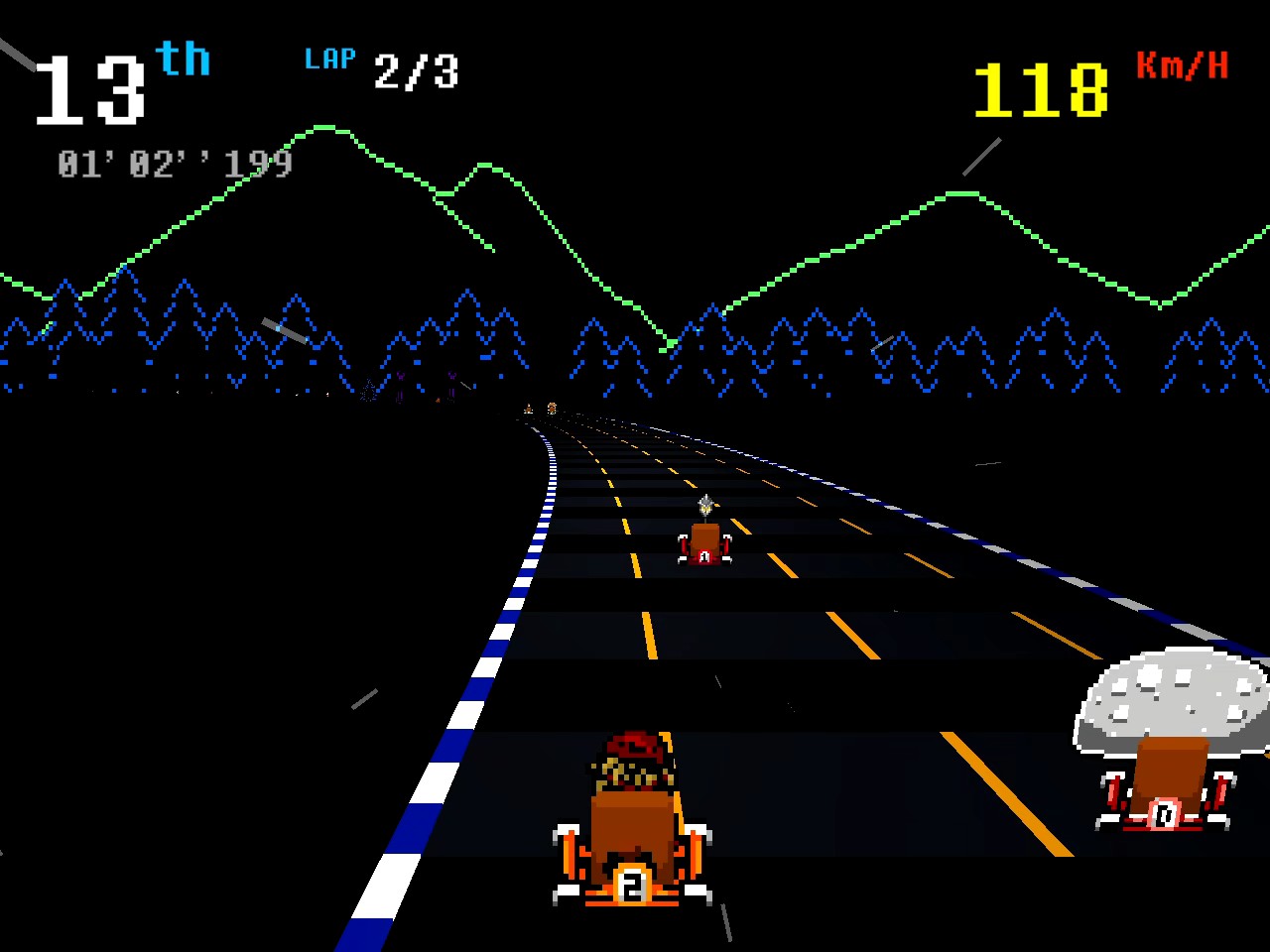
The highlight is getting invited to join a tabletop roleplaying game called Medallion (clearly based on Talisman) with some of your new buds.
Just as an aside, Everhood has Rasta Beast in it, and they own. It's clear from when you first meet them that they own. They're just cool. They have a cool design, they're fun and they seem like they're really with it. They seem genuinely friendly, in a way that stands out in a setting where most of the characters are Extremely Weird and Definitely Not All There. You get to bond with them over the course of the Medallion game and it's great. Love it. Rasta Beast and Green Mage are the best characters in a game, hands-down.
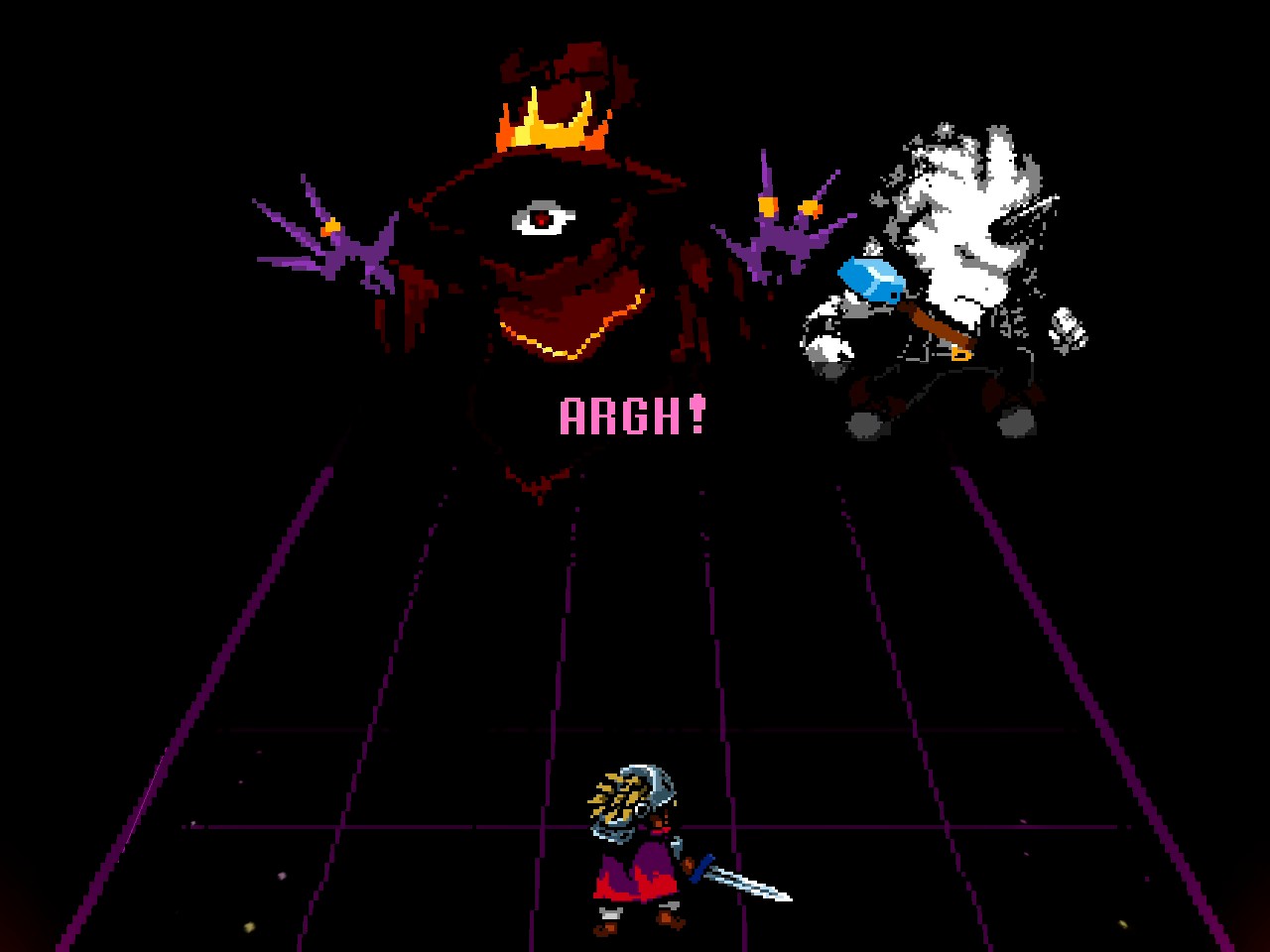
Everhood has that "indie horror game" vibe to it, where everything is light-hearted on a surface level while also making it extremely obvious that you're supposed to feel unsettled by how things Aren't Quite Right. There's a movie theater that plays only static, yet still has attendees staring at the endless noise. While walking through the hub world, it's possible for lightning to strike, revealing an endless background of tally marks. Sometimes you see a rabbit that runs off as you approach it. In the dance club, you can find a floating mask that gives you a magic 8-ball which reveals how many souls are in the realm right now. There's a mage that lives as a recluse in their tower, paranoid about any possible danger and only interacting with the outside world through a speaking tube.
As the only other character who comes close to being as cool as Rasta Beast, Green Mage goes from needing your help finding their single eye in a swamp, to helping you remove a boulder in your path to return the favor, to attacking you because you're in a weakened, one-arm state, to inviting you to participate in their tabletop RPG. Professor Orange catches you in a pretty funny trap that legitimately caught me off-guard the first time I played, followed by a few funny attempts to defeat you with their scientific genius.
It's that Undertale vibe, where characters are technically "threatening" you, but in a lighthearted framework.

As a result, every character has a sense of playfulness and levity to them.
With an exception.
There's a character in Professor Orange's lab, Harrowed Haley, who looks completely withered and seems mentally broken to the point of not even knowing where they are, trapped in a miserable existence of delusion and agony.
This ruined the tone for me: instead of Professor Orange being a goofy, comedic mad scientist with zany inventions for you to challenge, they're now responsible for mentally breaking someone and keeping them in perpetual agony as a result of their experiments. That's not fun. That's horrible.
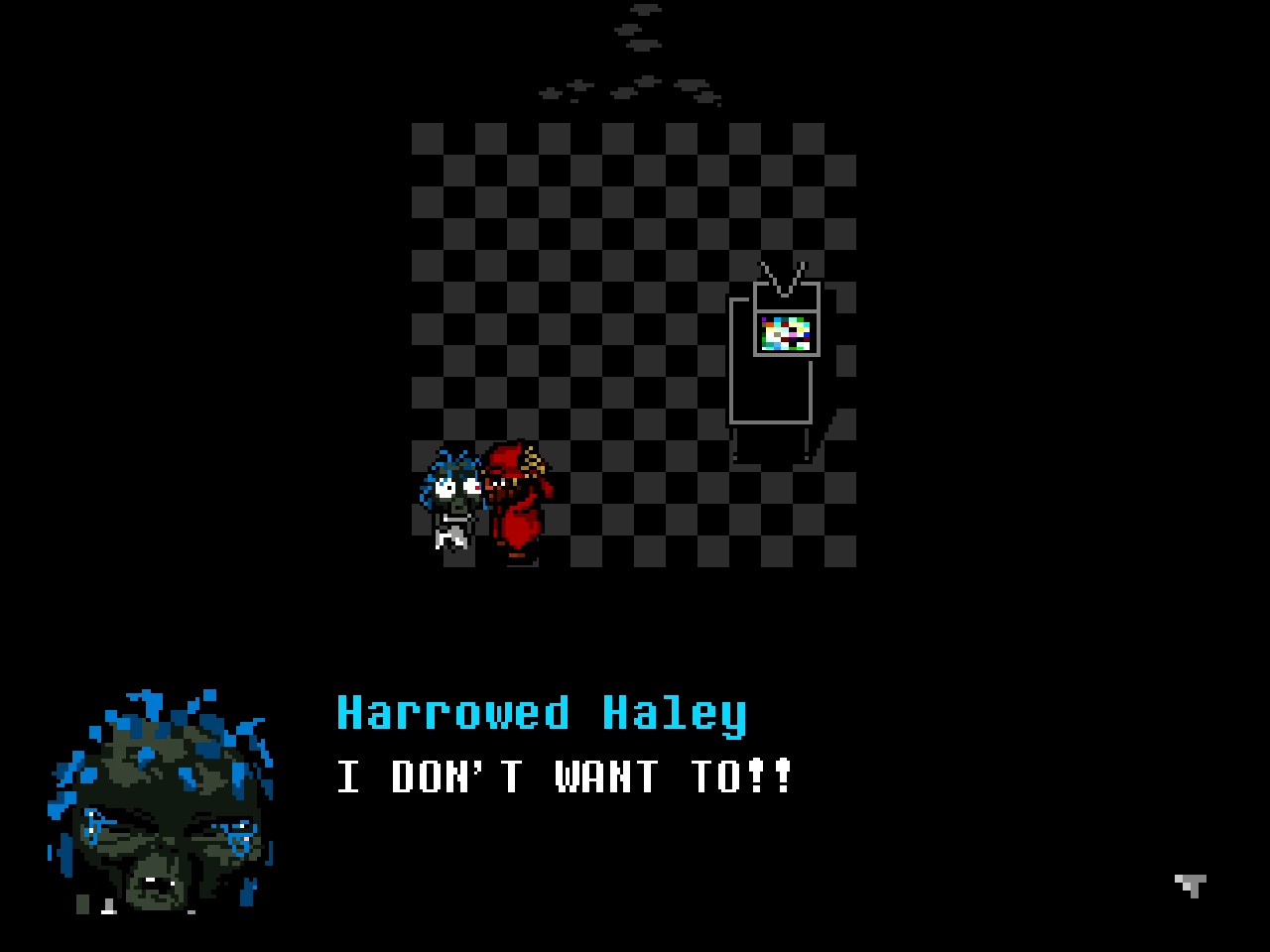
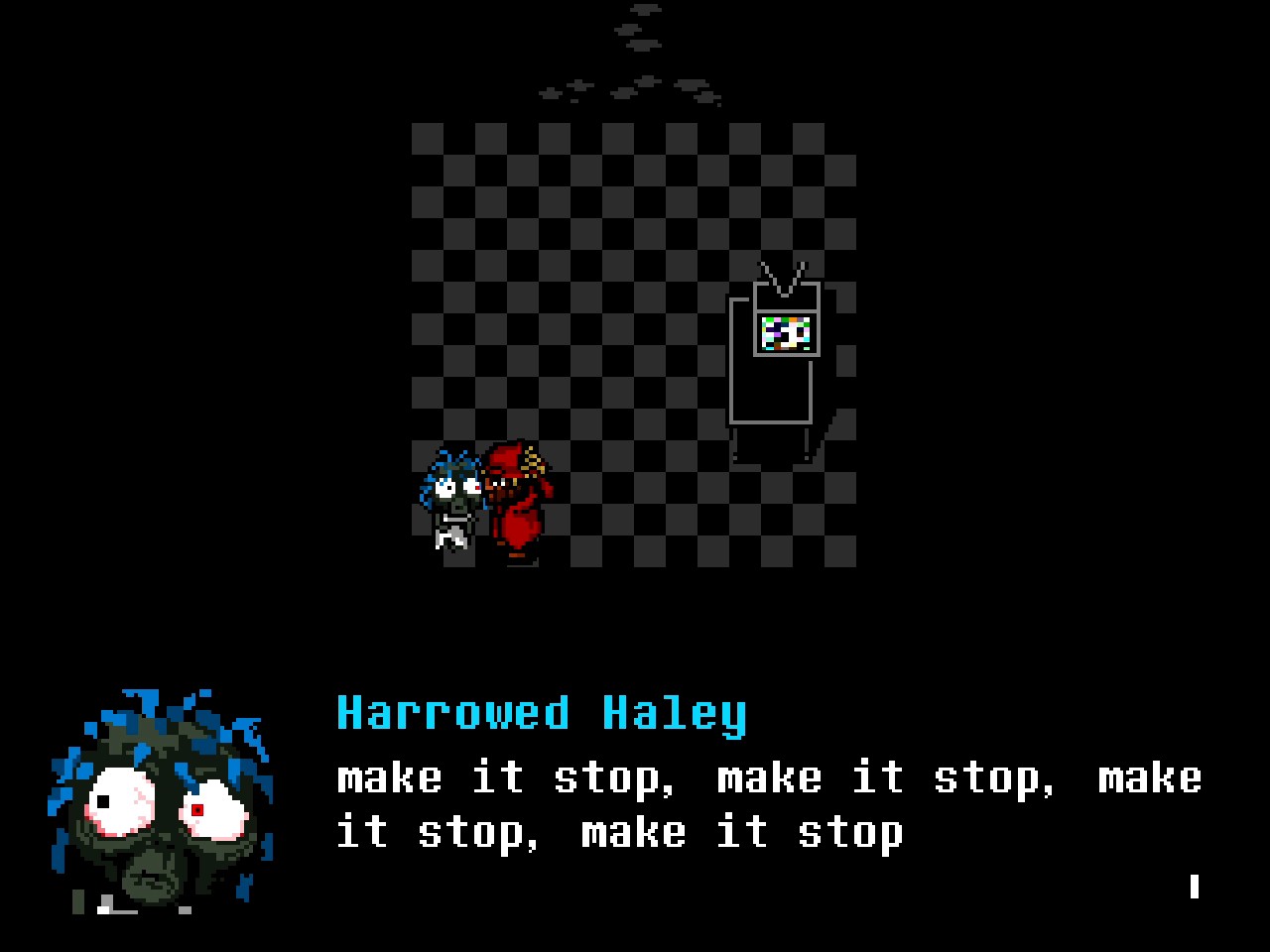
I have more to say about Harrowed Haley. I'm still not ready to really talk about them. We'll come back to them, I promise.
Continuing along, you encounter a Mirror of Truth; looking into it causes Red's reflection to say that it divided itself into pieces to protect everyone, that they disgust it, and that it has nothing more to say to them. So. There's clearly there's Something going on.
Also, every so often, a character will refer... the HUMAN. Gasp! That's right, they're talking to you! The player! It's like in Undertale and Deltarune, where "The Player" is treated like a character in the game!

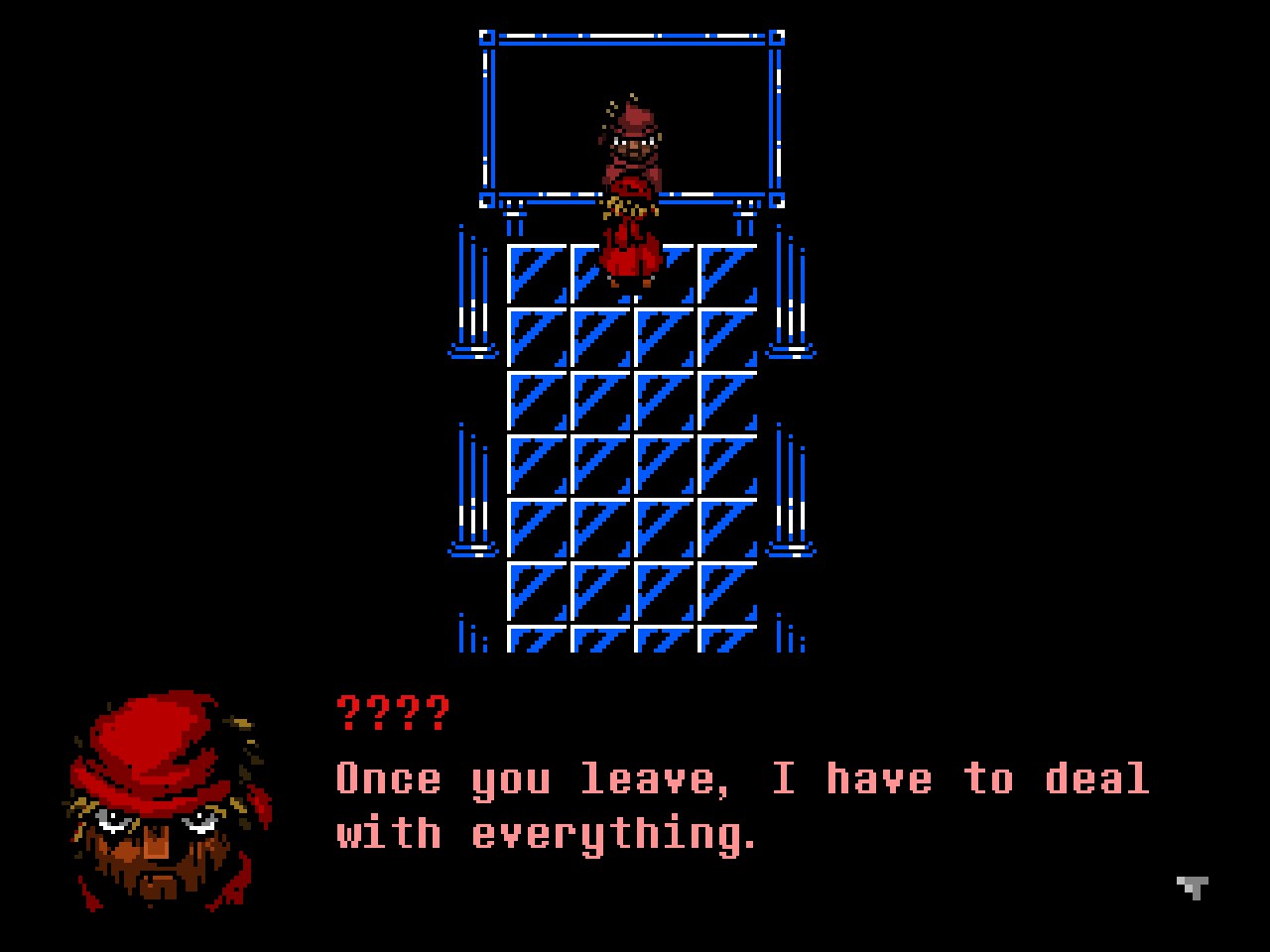
It didn't really do anything for me. It just felt like each time was supposed to be A DRAMATIC REVEAL, but with no real payoff. It's implied that I, as the player, have controlled Red in the past. Except... I haven't. "Your character has amnesia" works in a way that "you, the person playing this, has amnesia" doesn't. I guess I kinda see how it could be a cool implication, but it doesn't feel like the game does anything with it besides use it as a Plot Twist.
It's built up over the course of the game, but I don't get what the point was supposed to be, in the end. I hate to constantly bring up Undertale, but it seems like they were trying to make me reflect on my behavior à la Undertale's genocide route. Except instead of luring me into performing horrible deeds of my own volition and then calling me out for it, they just imply that I did them at some previous time? So it never actually connected with me, and then gets further muddied later.
(Also later the game goes back on this, implying that it's been a series of humans controlling Red, even though this sequence puts the blame on you for Red's past actions. This game is so inconsistent.)
This is endemic throughout Everhood: things that seem important never end up with any real payoff, and things that seem unimportant are brought back for massive climaxes with no actual buildup. In fact, I've already mentioned a super critical character who holds the key to Red's identity, as well as the character who acts as the final battle of Act 2, kicking off the game's finale. See if you can guess either of these. The character who holds the key to Red's identity will only show up once more before The Big Twist, so keep your eyes peeled.
Eventually you reassemble the missing door and pass through a desert to reach Gold Pig's castle.

In the castle, you're confronted by Purple Mage and their undead minions as you work your way to Gold Pig's throne room. The minions are a lot of fun, and Purple Mage has a fun combat mechanic that I think could have been emphasized more: when you take damage, the song also loops back to an earlier point in the song, forcing you to replay the part that just tripped you up. Neat idea, but I didn't even notice it on my first playthrough. Having a more obvious "rewind" effect would've gone a long way.
Points for cleverness, though: having a wizard figure out what part of the song you keep fucking up and forcing you to replay it repeatedly as a way of "finding your weakness" is a clever idea.
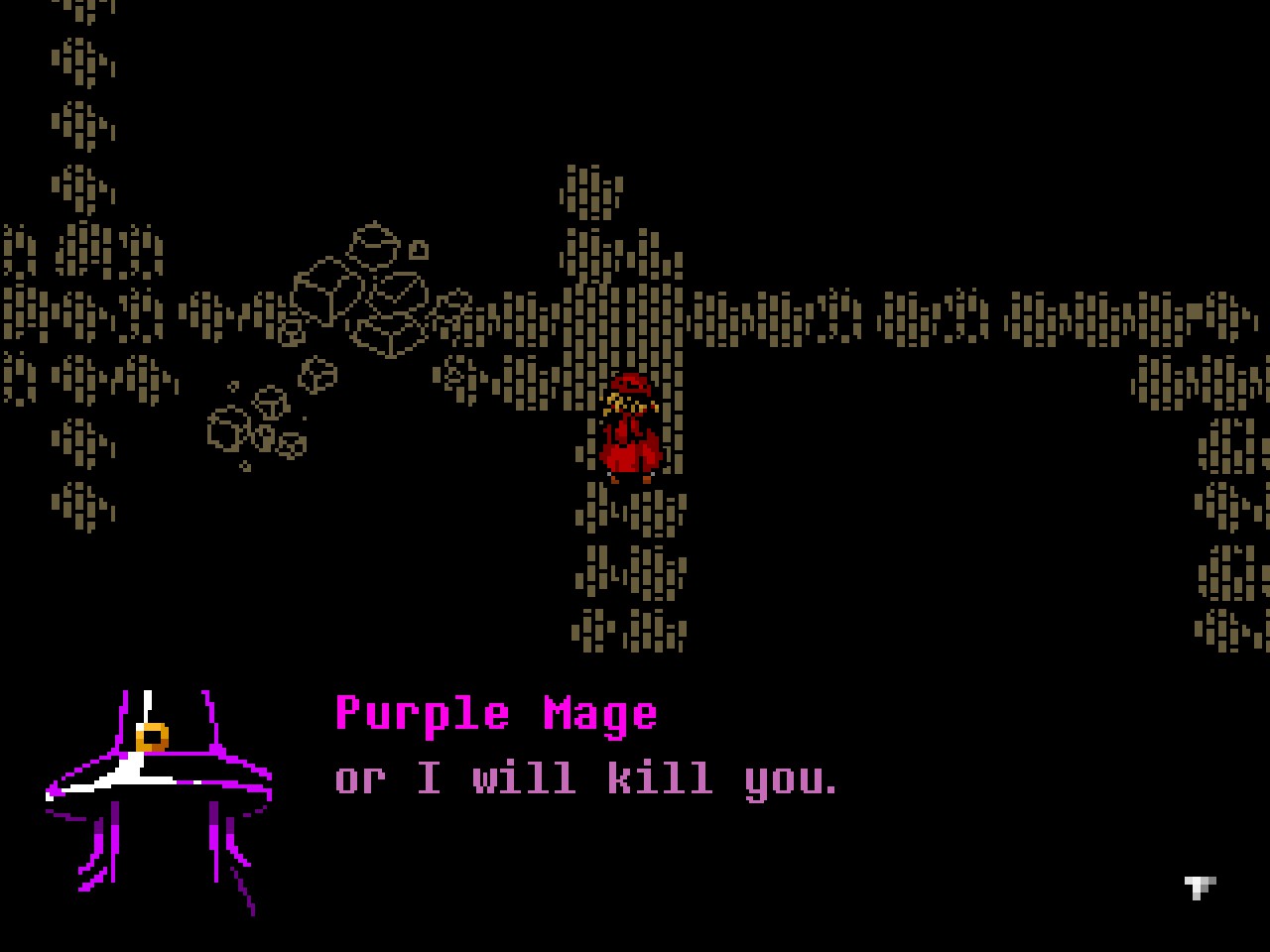
You also learn through a loredump note that some of the residents of Everhood used to be human, and came through a rift to this place, achieving immortality in doing so. The note implies that there used to be millions of residents here, as opposed to the 28... no, 30 souls remaining by this point in the game. (Purple Mage summoning two undead minions causes your 8-ball's soul counter to go up by 2, which is a neat little touch.) You also learn that Everhood is a place where memories are transient, allowing you to live out the same euphoric moment again and again, always forgetting it happened so you can experience it fresh again. Fucked up. But also convenient for a script where the characters don't seem to have any consistent motivations or knowledge!
You best Purple Mage and confront Gold Pig. This time, there's no incinerator, so you enter a battle with them. It's fairly decent as the climactic fight which closes out Act 1. Gold Pig has several distinct patterns to their attacks (stomping their feet, channeling power through their hands, tapping into the power of the gems of their necklace), there's a bit where Gold Pig recedes into a fog, leaving only their eye visible, etc. At one point, that pink spirit from before shows up and asks why you keep coming back, lamenting that they're powerless to stop you. I thought the gems on Gold Pig's necklace or their stepchart might be more tied into Gold Pig's control over Green and Purple Mage, but unfortunately it seems like there's no connection there. A shame.
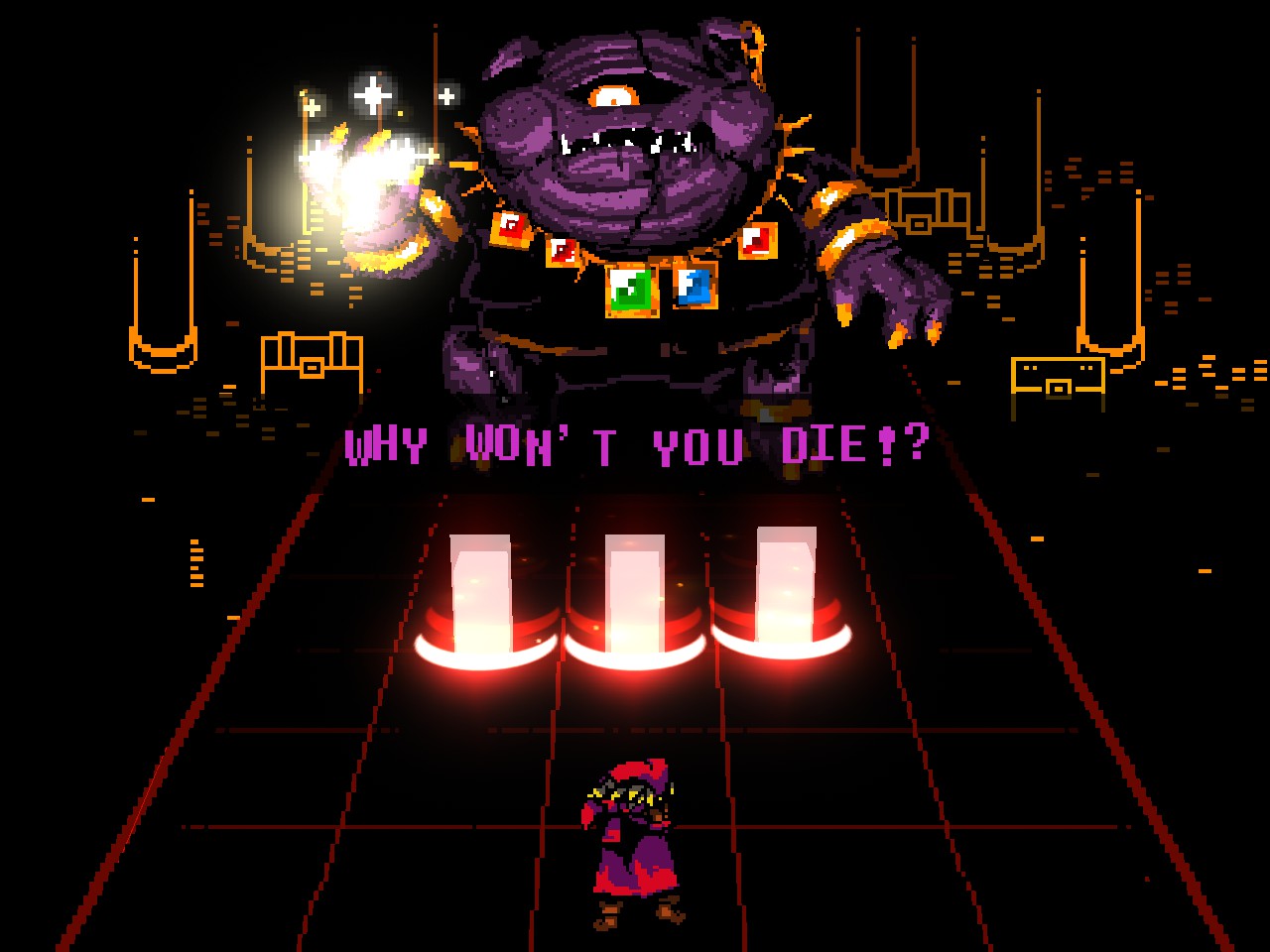
Once you defeat them, Purple Mage shows up to ask Gold Pig why they keep challenging you when they always lose. Apparently Red has an "Other Side," one that Gold Pig has battled before. Green Mage and Purple Mage chide Gold Pig about stealing Blue Thief's legs out of pointless greed, and for stalling on giving Red their arm back when it's clear they've won.
So it's clear Something is going on, but Green Mage and Purple Mage both seem positive about you getting your arm back, with Green Mage saying they understand what it's like to have lost something "essential," and Purple Mage saying you've fought hard and earned your reward.
You walk down a hallway, go to get your arm, and as you reach for it, lightning flashes, revealing a wall of panicked scrawled messages like "STOP" and "LEAVE" and "SCRAM" and "DEMON" and "NO MORE."
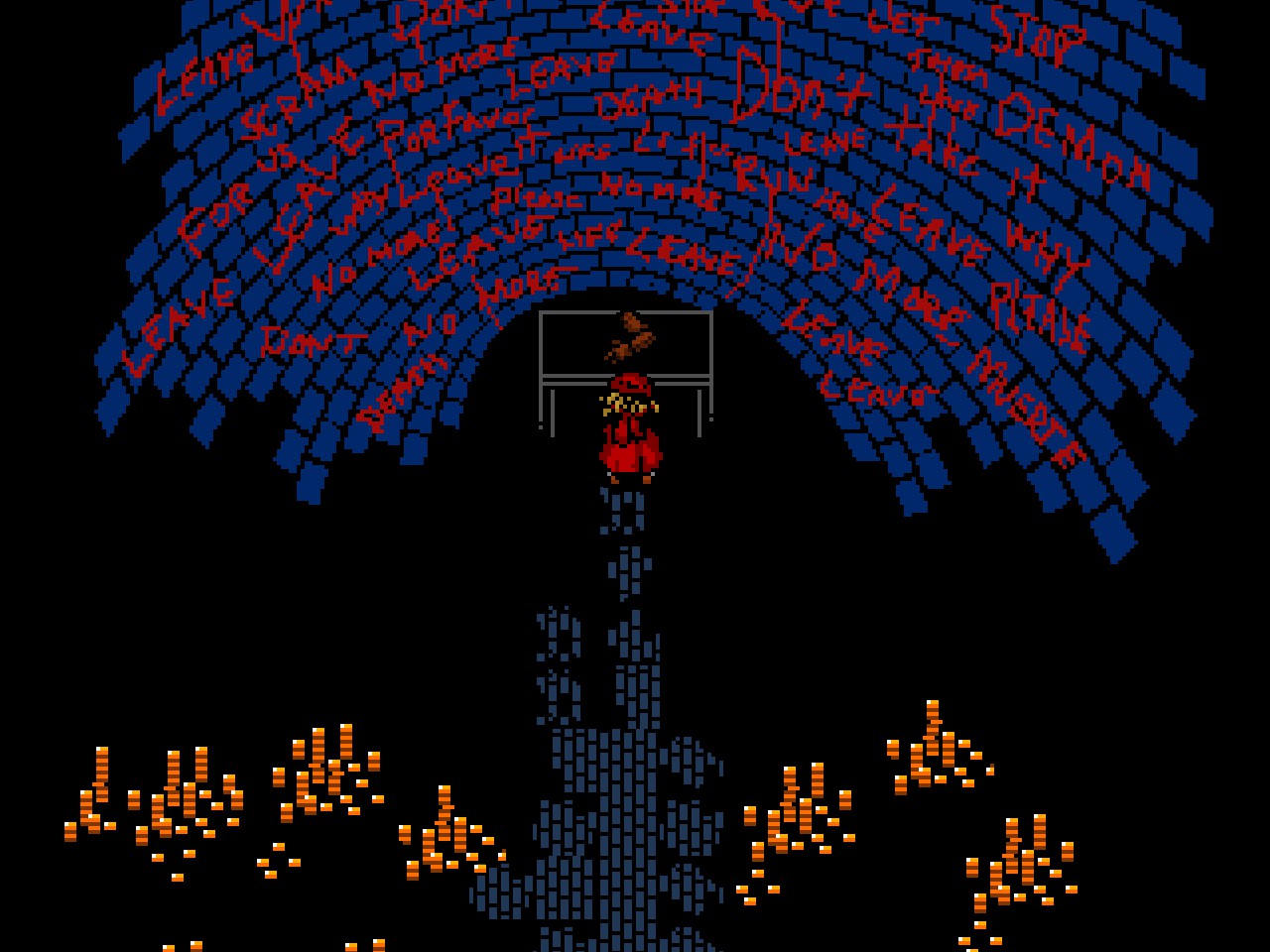
You reattach your arm. Credits roll.
...
and then, of course, the game continues. Act 1 over. Act 2 begins.
Here's where the midgame major spoiler happens. If you're interested in playing Everhood for yourself, this would be a good chance to bail and come back.
...
...
If you're still reading, it's time to talk about the twist, and how everything falls apart from here.
PART 3: THE PLOT RECAP: ACT 2
The Tutorial Frog shows up and explains the premise that will define the entirety of Act 2. Everyone you've met is trapped in this realm, they explain, and has been for many many many many many many eons. "Seeking for release, for purpose, for a meaning for far too long." Now that you have your other arm back, you can actually fight back in battles, catching two notes of the same color (one in each hand, you see) and throwing them back at your opponent.
The Frog (and a Forest Spirit) asks you for a big favor: to end the world by killing everyone in it.
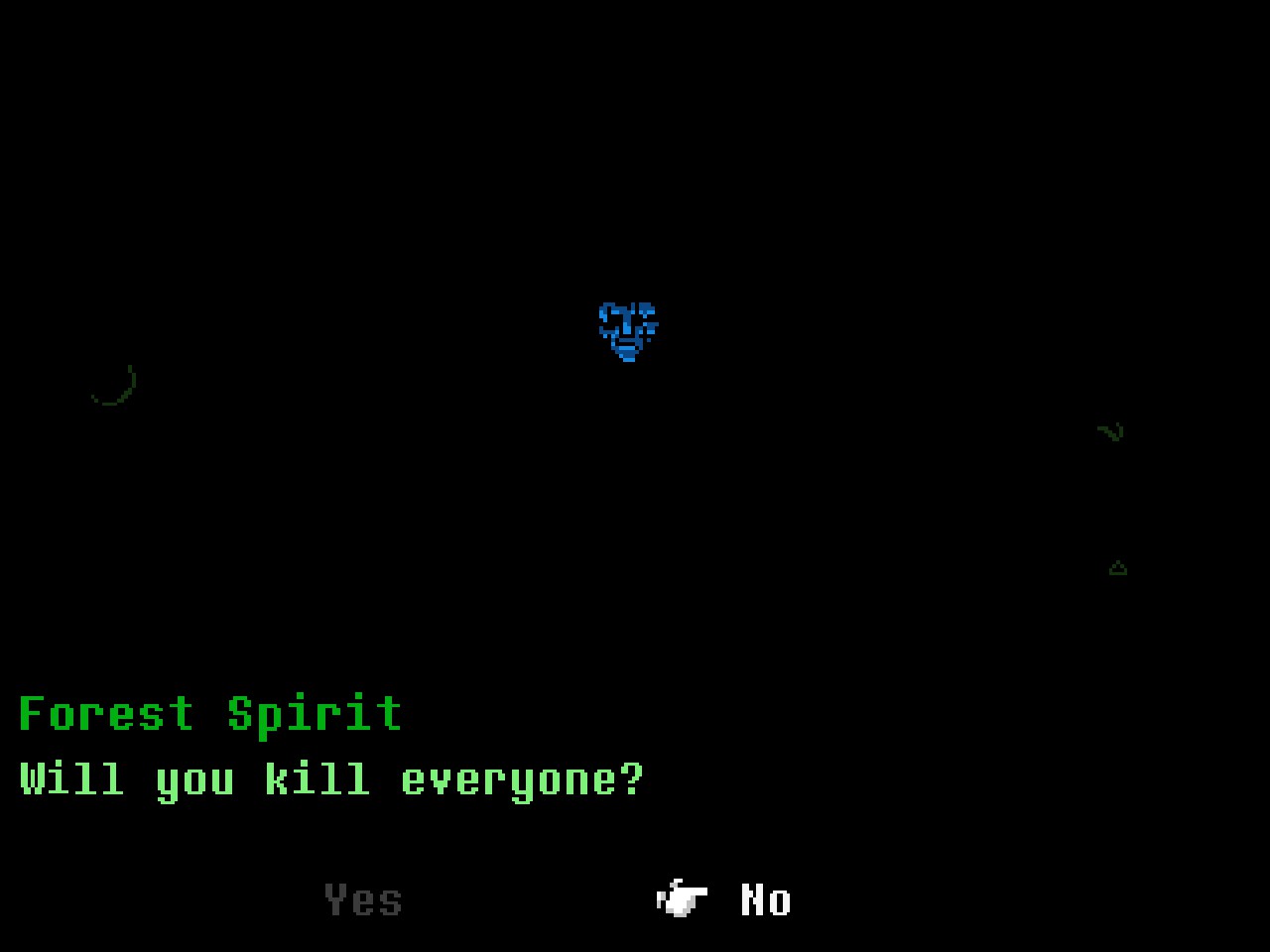
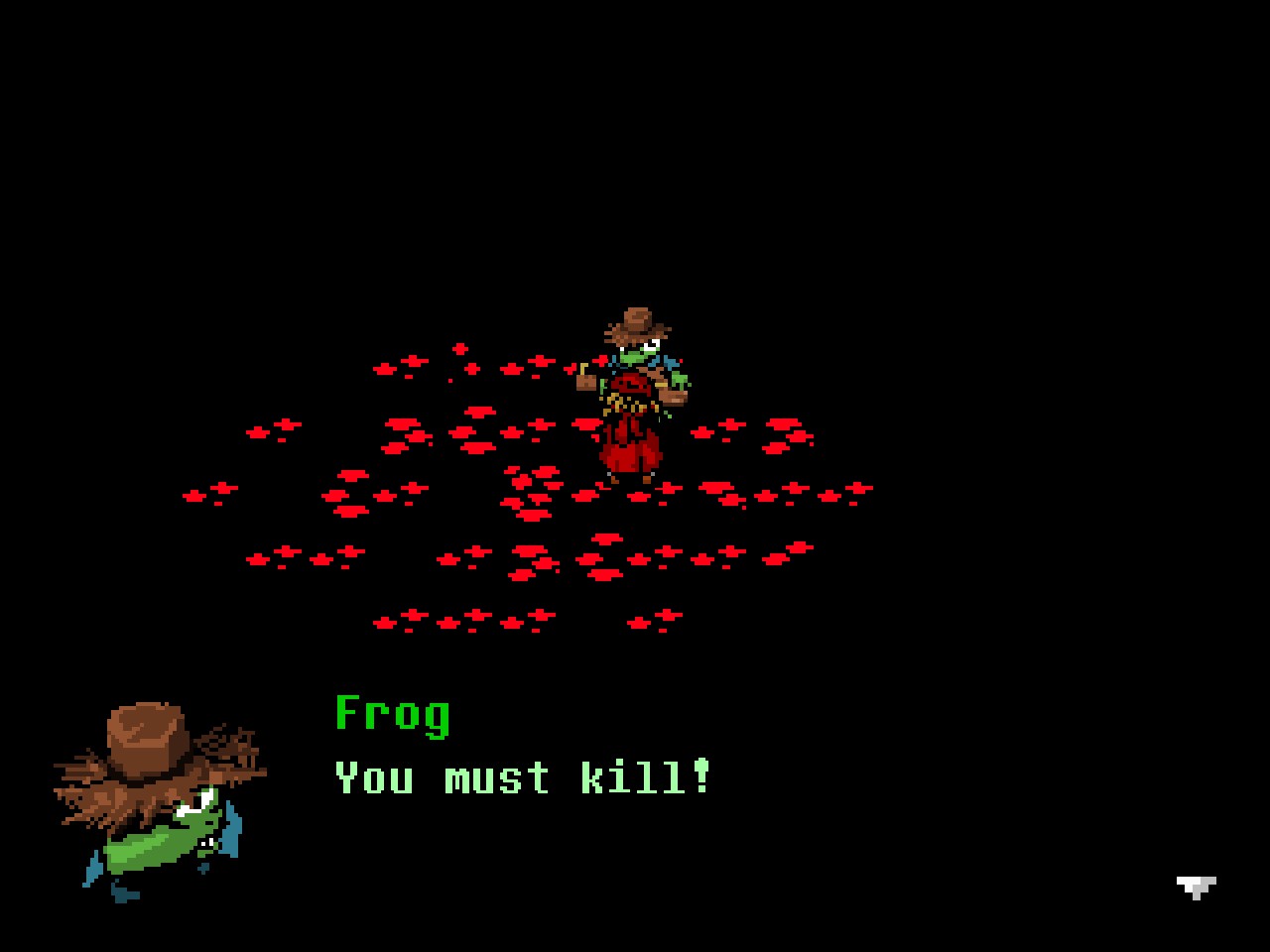
Okay, so, not a bad premise. It's a premise with legs for sure. (Ha ha, take that, Blue Gnome.)
I just wish it didn't feel like such a reaction to Undertale. Undertale billed itself the game where "no one has to die," and now Everhood responds by being a game where everyone has to die.
The problem here is that Undertale was already a reaction! It was a reaction to RPGs where killing is your only real means of interacting with the world. It appeared to maintain the typical RPG reward structure (use Attack to kill monsters -> gain levels for stronger Attacks -> repeat), but then made it far more rewarding in every non-material sense to engage the monsters as characters rather than stat checks.

Undertale doesn't have a monopoly on alternative RPG combat systems or worlds filled with quirky monsters for you to either befriend or kill. But Undertale was really considerate about what it wanted to say about human nature, and that Everhood critically injures itself by inviting the comparison.
As you might expect, if you refuse the Frog's quest, they get pissed off and fight you, cursing you for refusing to end the world and "free the souls" trapped there. It's an excellent fight, with an amazing song. The Frog summons a halo of guitars, and as the song progresses through various musical styles, the Frog plays the appropriate guitar to fit the music. It's extremely well-done.
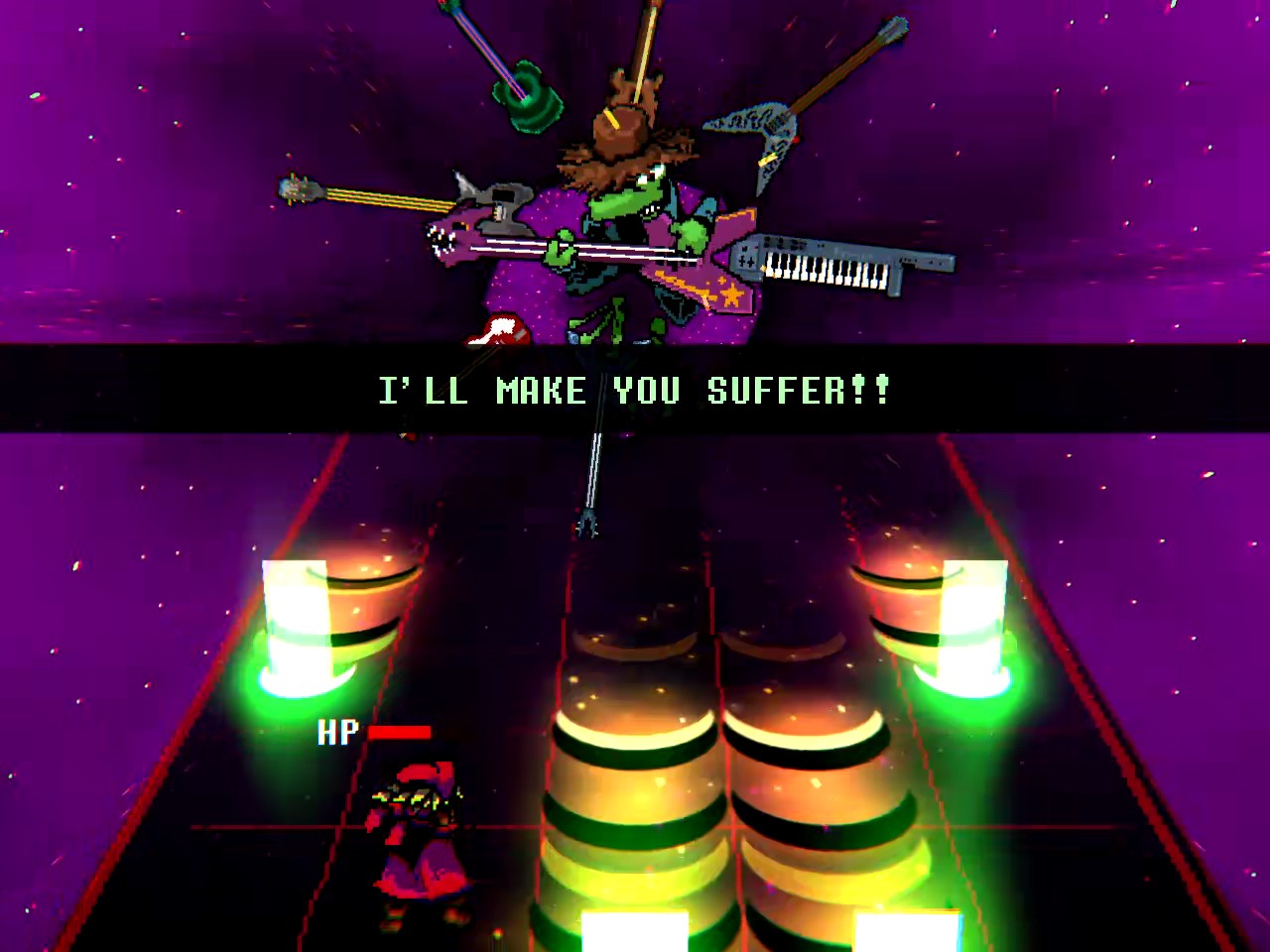
There's an incredible moment where the Frog swears, "I'LL FIGHT YOU FOR ALL ETERNITY!", which is only a little bit undercut when they give up less than a minute later. A minute is a long time in bullet hell time, but it's not quite "an eternity."
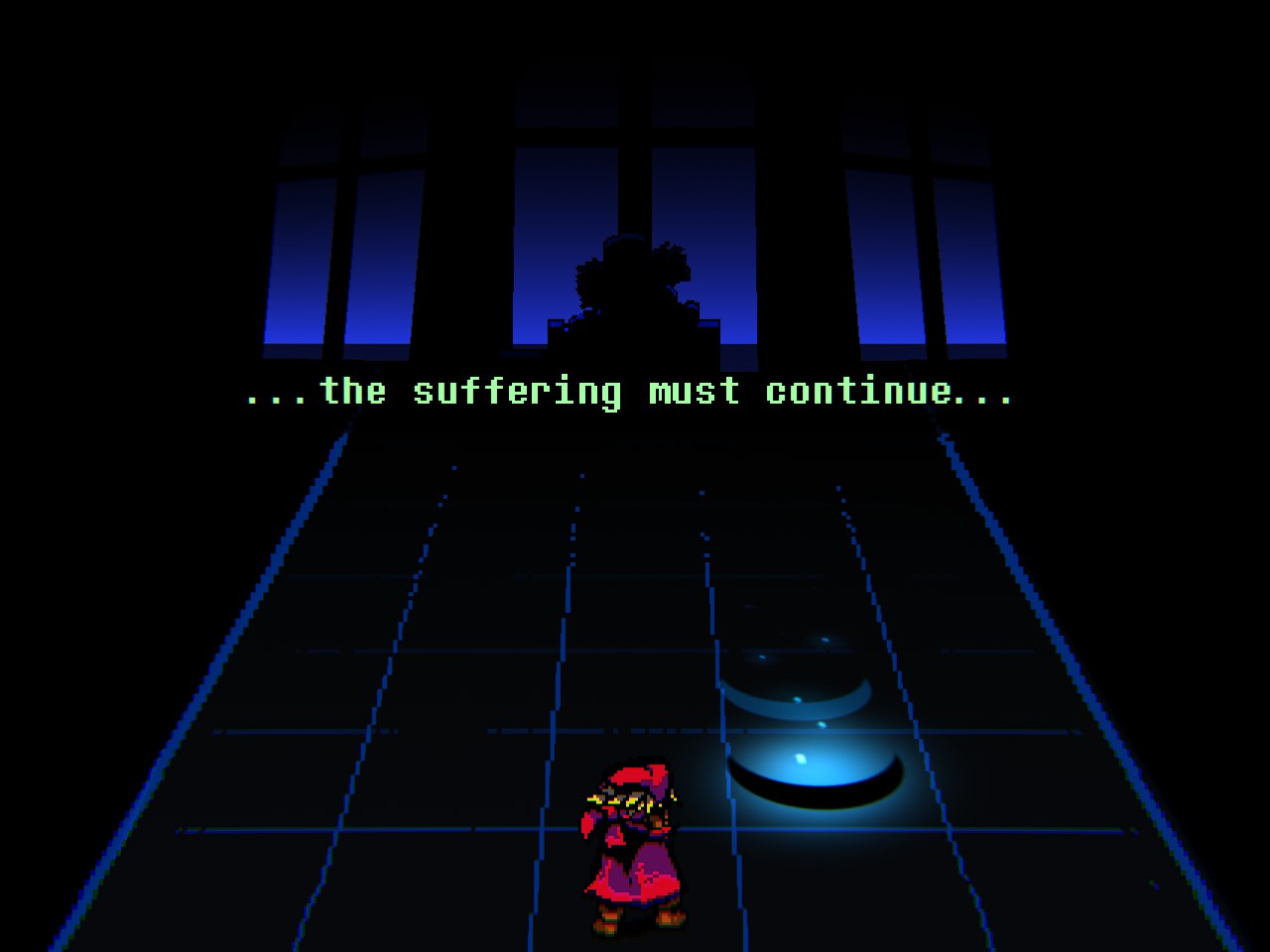
Yes, this is Everhood's version of the Sans fight. The harmless-seeming character who punishes/rewards you with an incredible battle if you deviate from the framework the game puts in front of you. It's the character who's far more aware than they let on, who pledges to fight you forever, who curses you for not doing what's right.
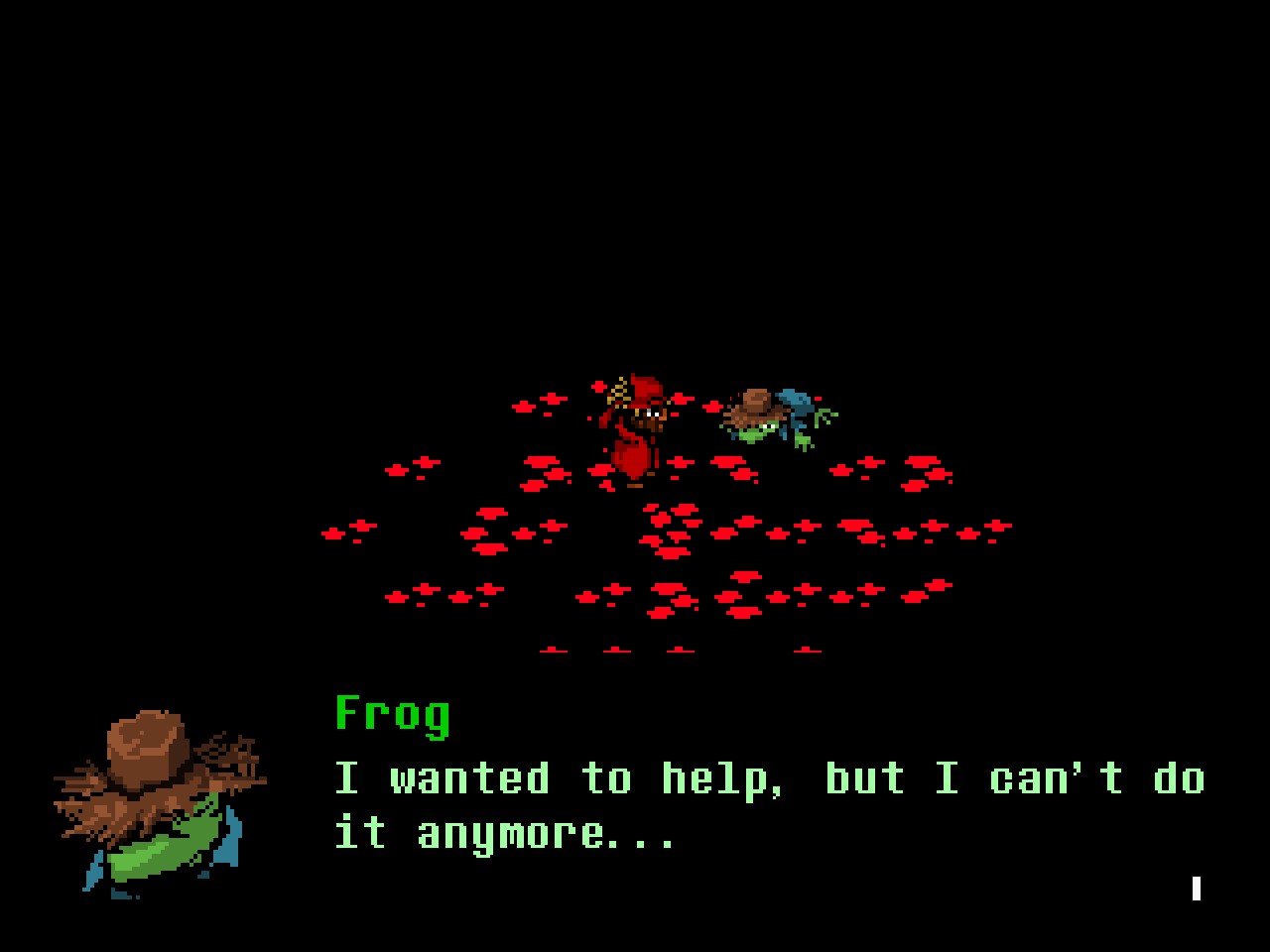
Except Sans actually makes sense. Sans is trying to protect his world by exhausting you, knowing that you can never truly be beaten. It's a critical moment for him: he's breaking the promise he made to a dear, departed friend he never even got to meet because of you. He's mourning her, his brother, his friends, his people. He knows that you could bring them all back, and that you might do so only to kill them all again. He knows that as soon as you feel like you've seen all there is to see, you'll murder the world itself. All he can do against your immortality and ability to rewrite history is drag you into a stalemate, denying you that final ending, hoping against hope that you might come to regret your choices and restore things to the way they were before.
Frog, in contrast, is... what's their goal, exactly? If they exhaust you, or succeed in "fighting you for all eternity," then everyone is still trapped in the realm. They're just unproductively trying to punish you. And it's harder to accept it as a punishment when Everhood was like this when you got here, versus the misery you inflict on Undertale's world during the Genocide route. It doesn't help the comparison with Undertale that Sans is a far more fleshed-out character, with established relationships to other characters, including you.
Frog just shows up at the start and midpoint of the game, never connecting to anything outside of themself. They call the other characters their friends, but Frog never interacts with anyone besides you. They don't mention any other character by name, and none of the other characters ever mention Frog. They are a non-entity to the rest of the cast.

I don't want to turn this into "Everhood isn't as good as Undertale, therefore it's Bad." But Everhood invites the comparison. Between the Flowey fight, the "Pacifist/Genocide" routes (but reversed!) and the degree to which Frog plays a Sans-like role, Everhood shoves its inspiration in your face.
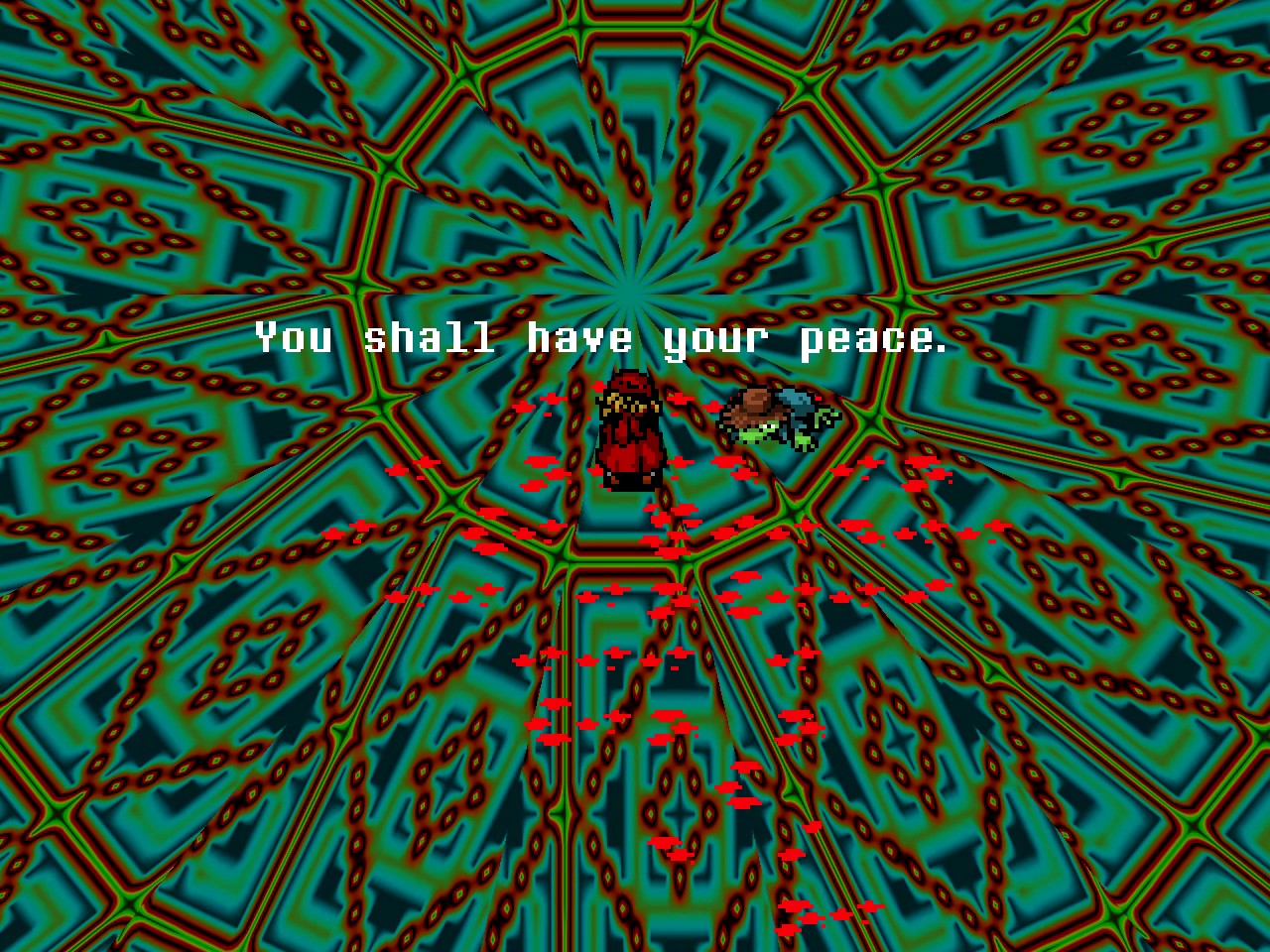
I understand that Everhood's setting is a decaying, dismal realm, and it does make the case that ending it would be for the best. It's not "killing" in a literal sense, right? Well, no, it is killing, in a literal sense. But everyone will probably be reincarnated, so it's okay to kill them! They do establish that. It's just that they fail to sell it in the way they need to.
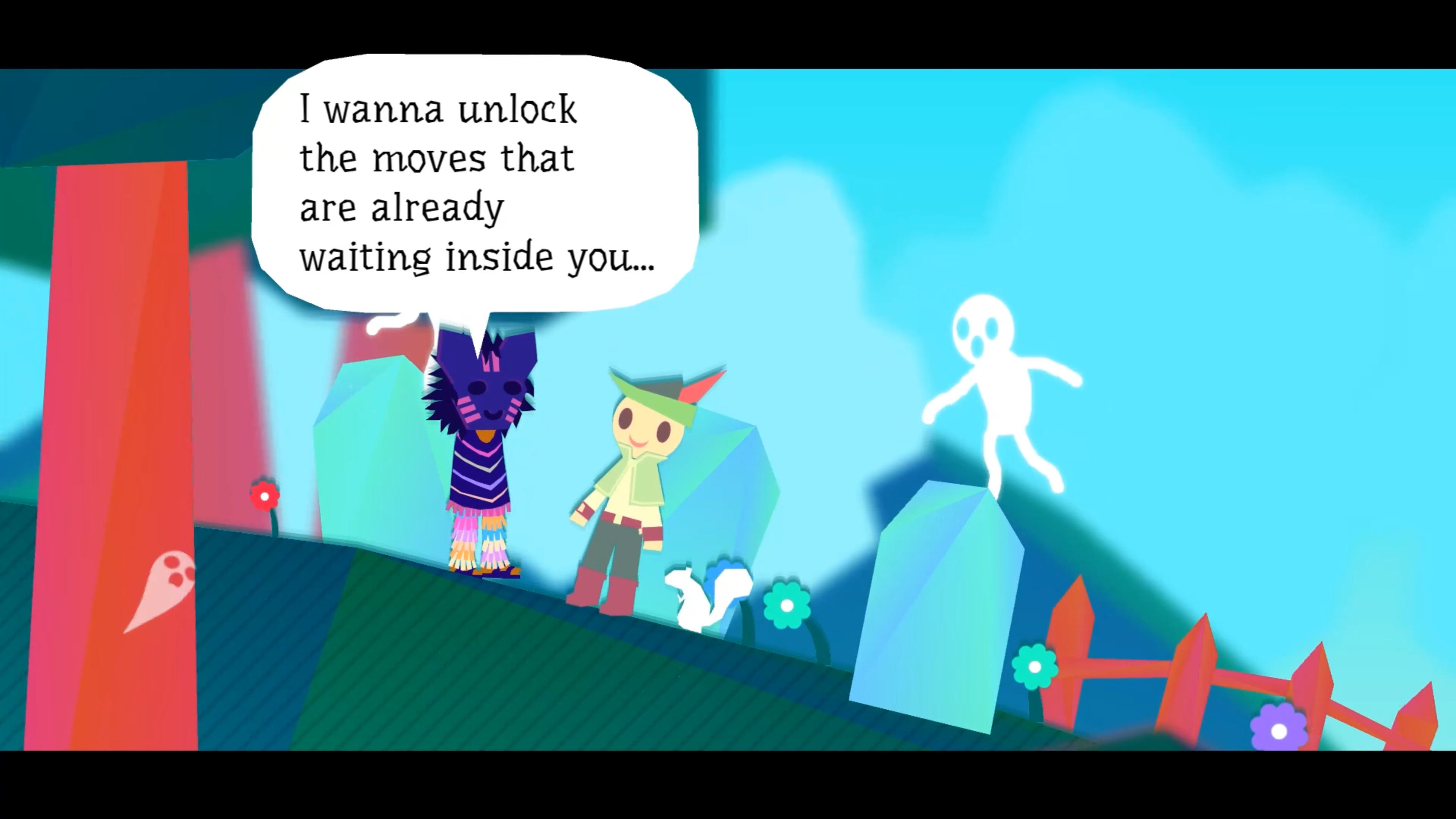
Frog's insisting that you Kill Everyone hinges on convincing you that everyone is Secretly Miserable and would be better off having their souls "released." That's a fine motivation, except that nearly all the characters seem like they're having a great time! They're racing go-karts, exploring creepy castles, playing RPGs, having fun at dance clubs, running successful plank rental services, all sorts of things. Are these things supposed to lack the "meaning" and "purpose" that Frog mentions in their "time to kill everyone" speech? Are we supposed to see a world where characters explore, play and dance with their friends, and feel disgusted by their pitiful existence?
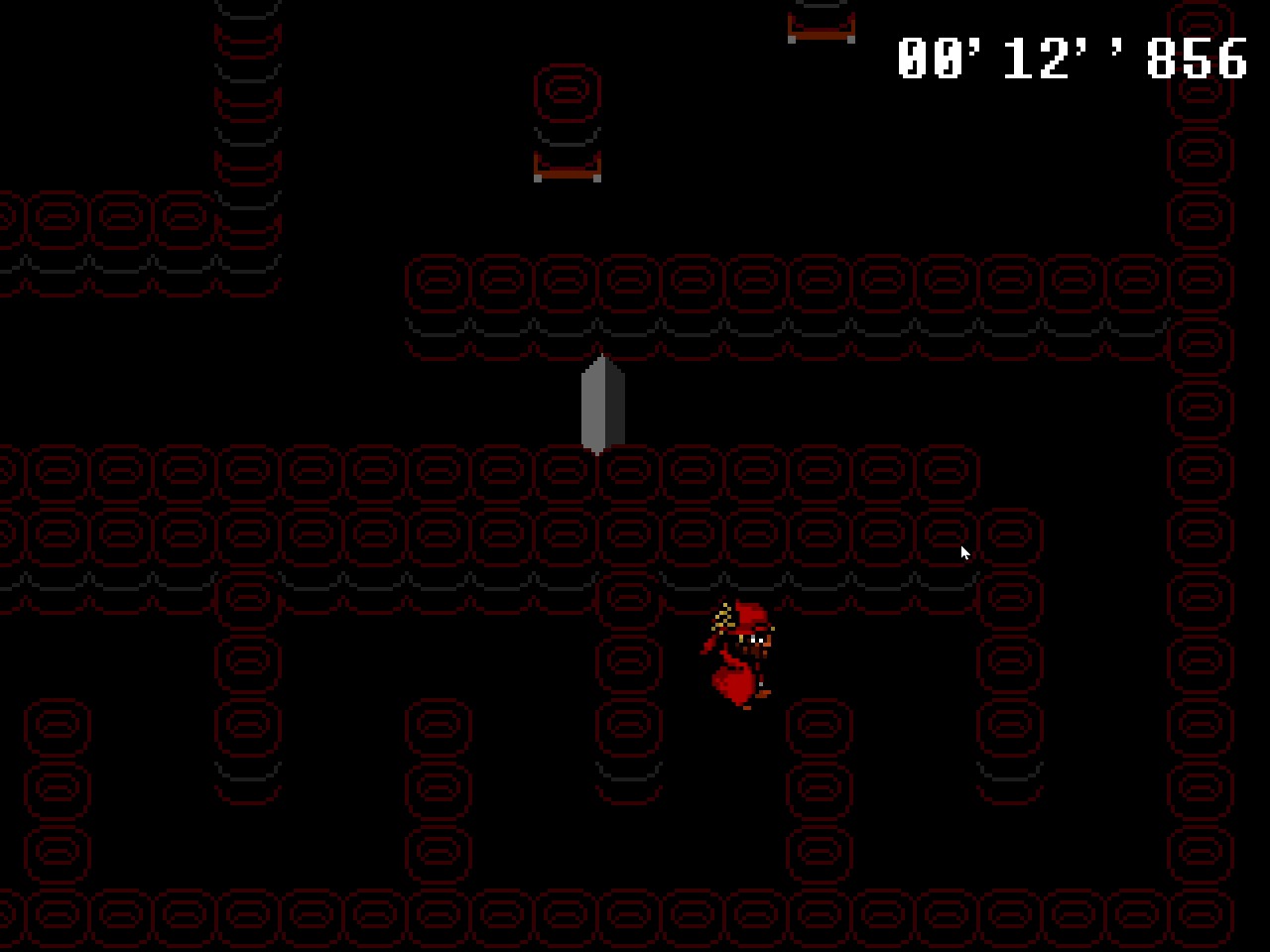
The one place where they almost sell it is in a reveal that Green Mage lost their eye on purpose, due to the boredom of existence. That sucks! Maybe death is appropriate for Green Mage, if the only thing they have for entertainment in their life is crawling around a swamp, blind and helpless.

But this doesn't work when they're also hosting fun and exciting roleplaying games with their friends on a regular basis!!
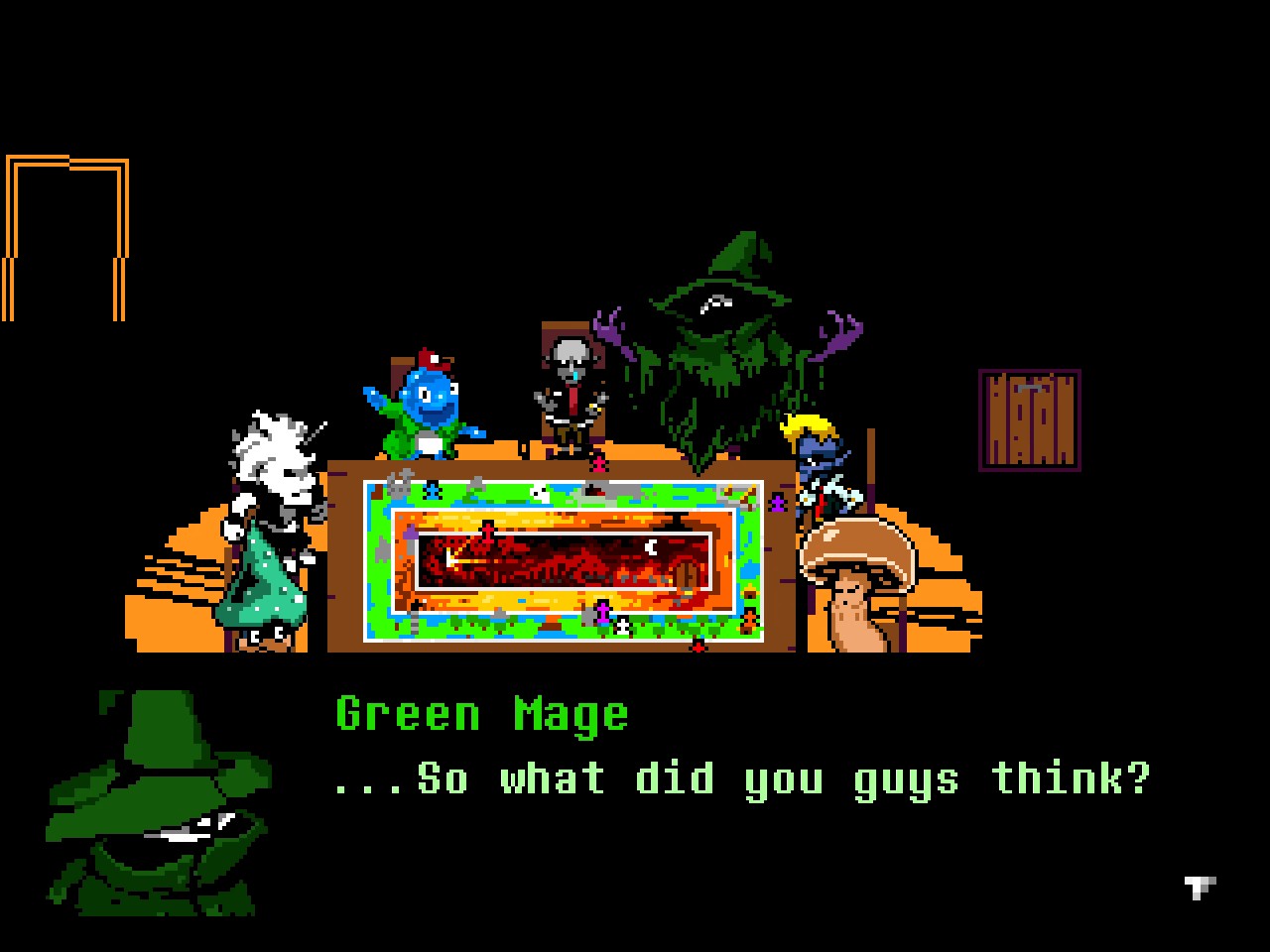
Here's how I'd rewrite this: have the Medallion game go the same way. Then, at the end, when Green Mage asks how everyone enjoyed it, have Muck say something like, "That story was great! Just like every other time!" Then Green Mage can be surprised that they've run it before, and Muck can blithely reveal that it's the only story they ever run. Green Mage's horror of realizing they're stuck in a loop and unable to even remember it? That would be a reason to consider ending their existence.
Then you could have Green Mage remember that spending ages blindly crawling through a swamp is something they chose for themself because they were so desperate for anything besides the loop, and now they've fallen right back into it. That would be a situation where it might feel like not taking action isn't acceptable: where you can't just leave Green Mage to rot, even if the only other alternative is to take their life.



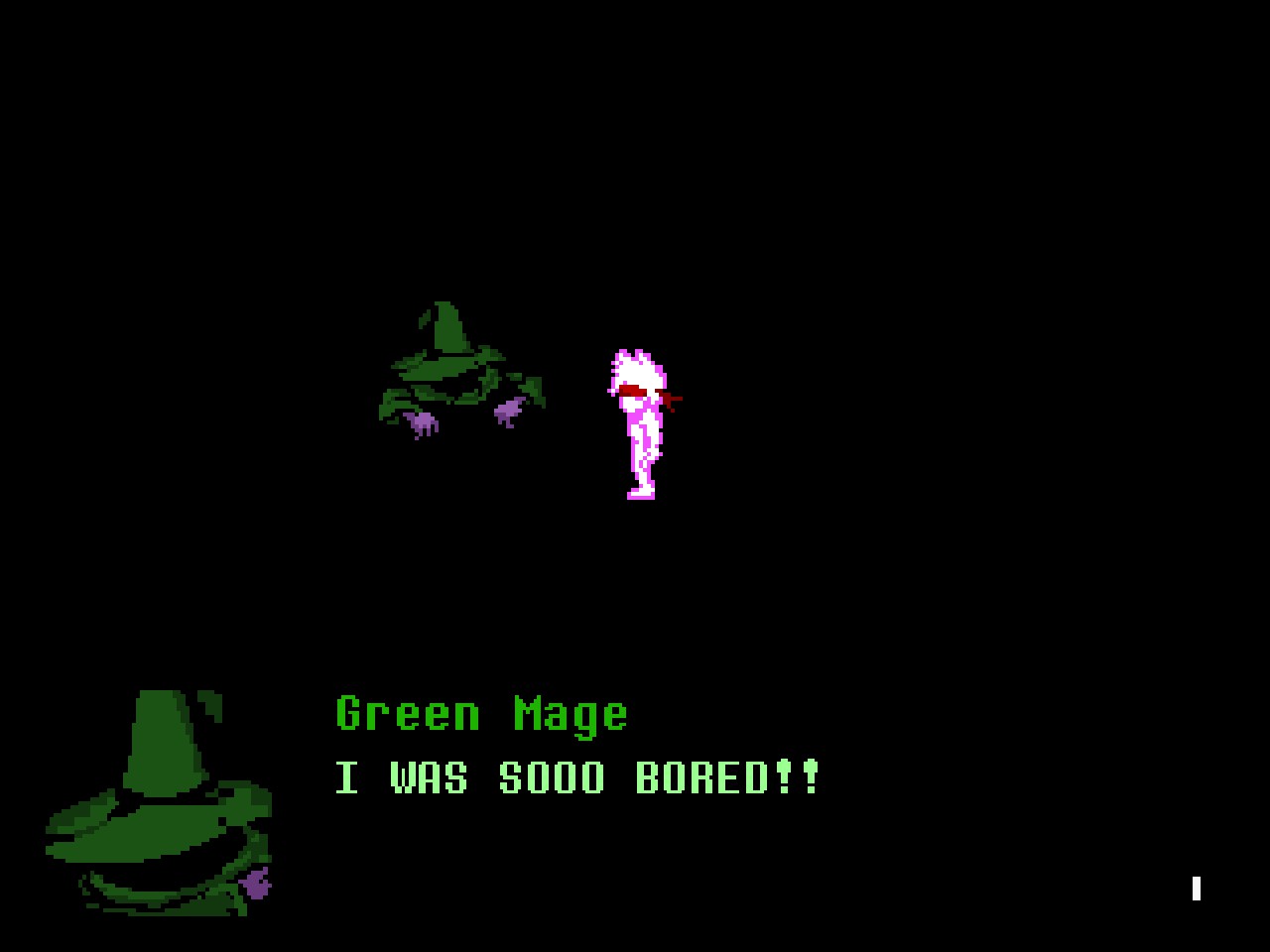
It's worth noting the Medallion sequence is the only portion of Act 1 where you can fight back, by giving you a parry move that can send red notes back at your opponent. What if instead of that just being a neat gameplay gimmick, it was revealed to be Green Mage's subconscious desire to have you kill them, even as they can't consciously process that?
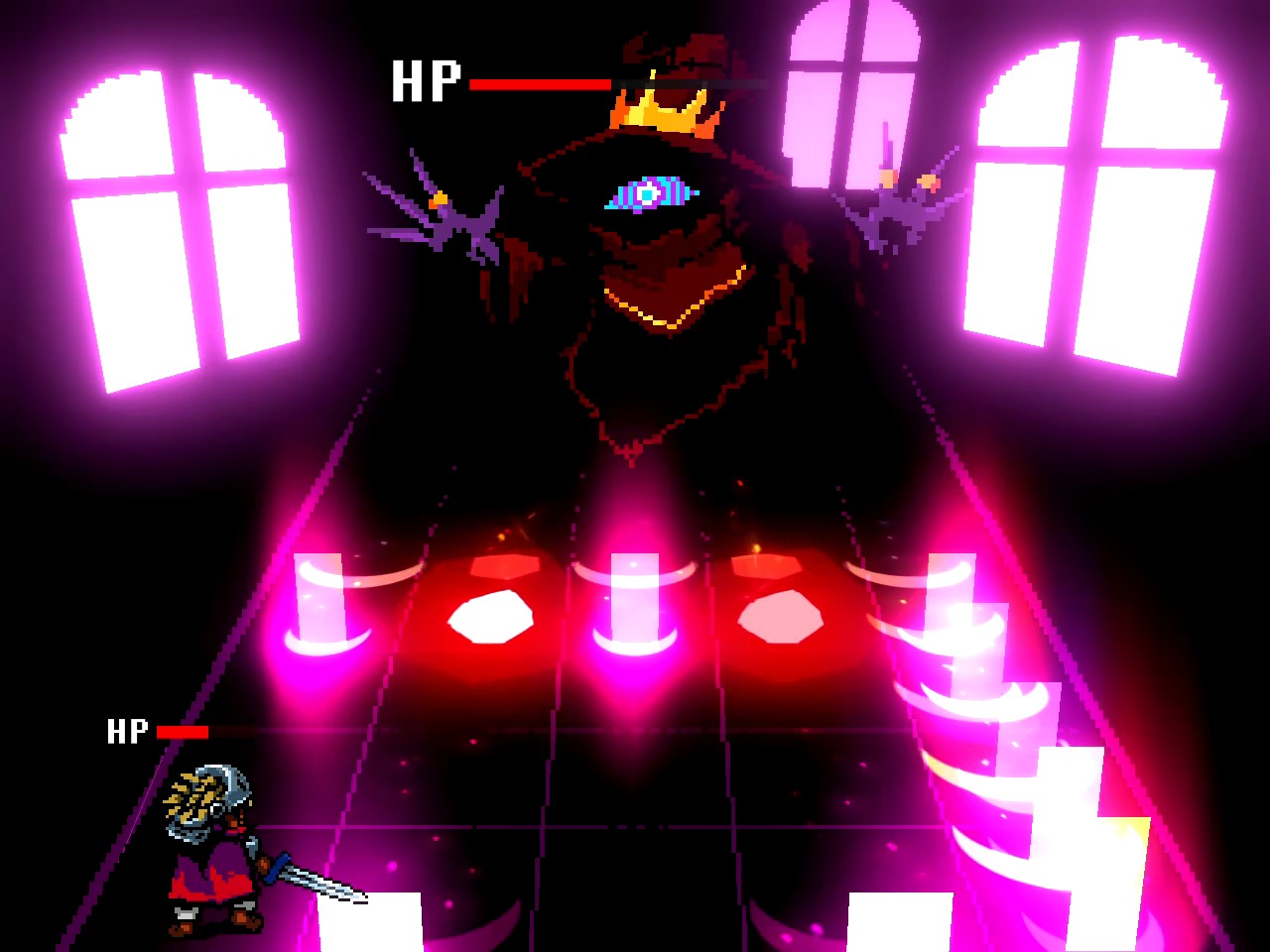
Hard to say. It doesn't feel like it's Everhood's style to not mention it at all, if that was the intent.
(As an aside: Defeating Frog doesn't actually end the game. After Frog is whisked to the afterlife by the narrator, you're told that you can return whenever you want to finish the mission Frog gave you. Defying Frog and asserting your moral authority to not be pressured into murder is a zero-commitment decision that the game doesn't take seriously. You've had your fun, now get back on the railroad, chump.)
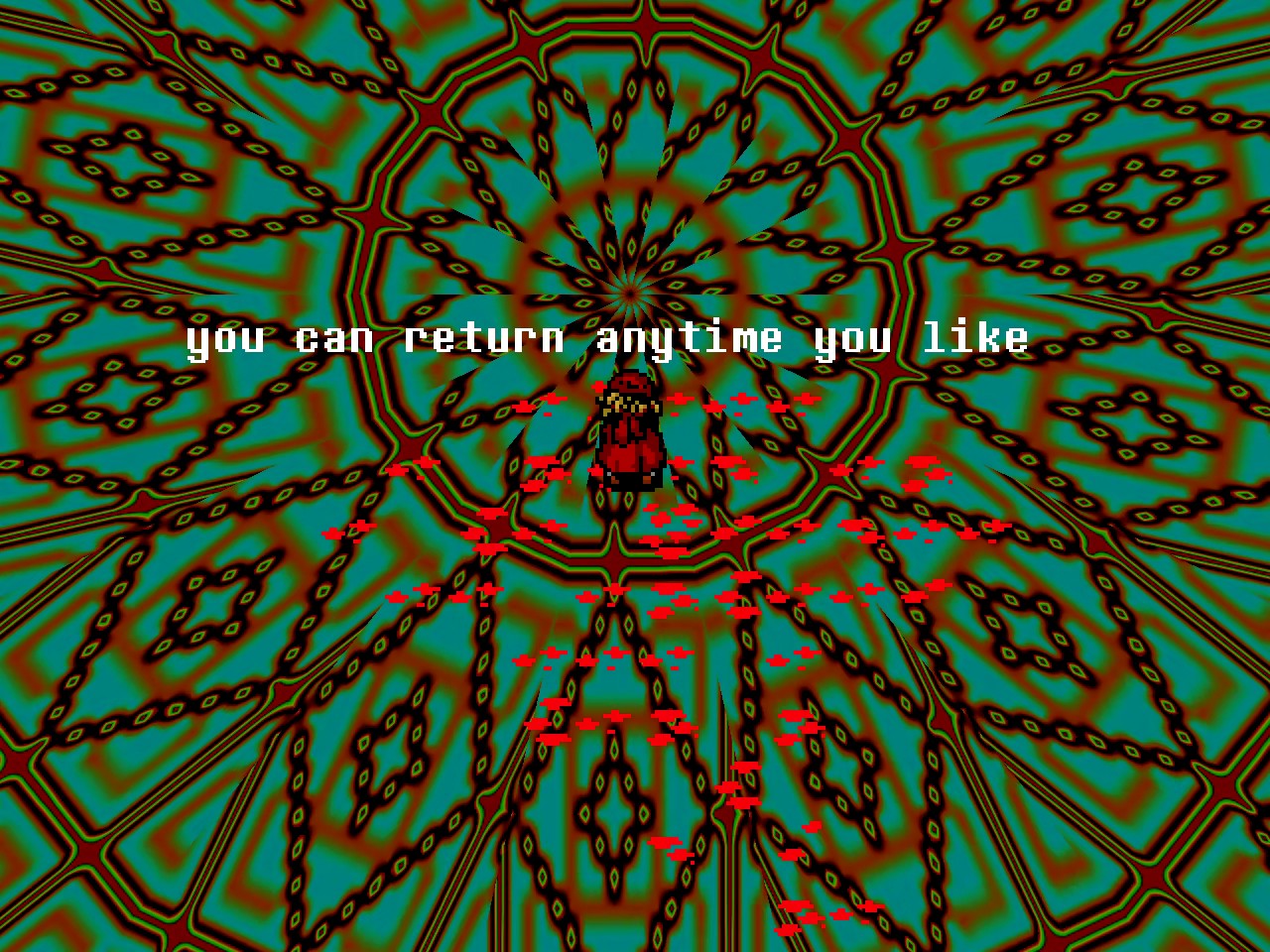
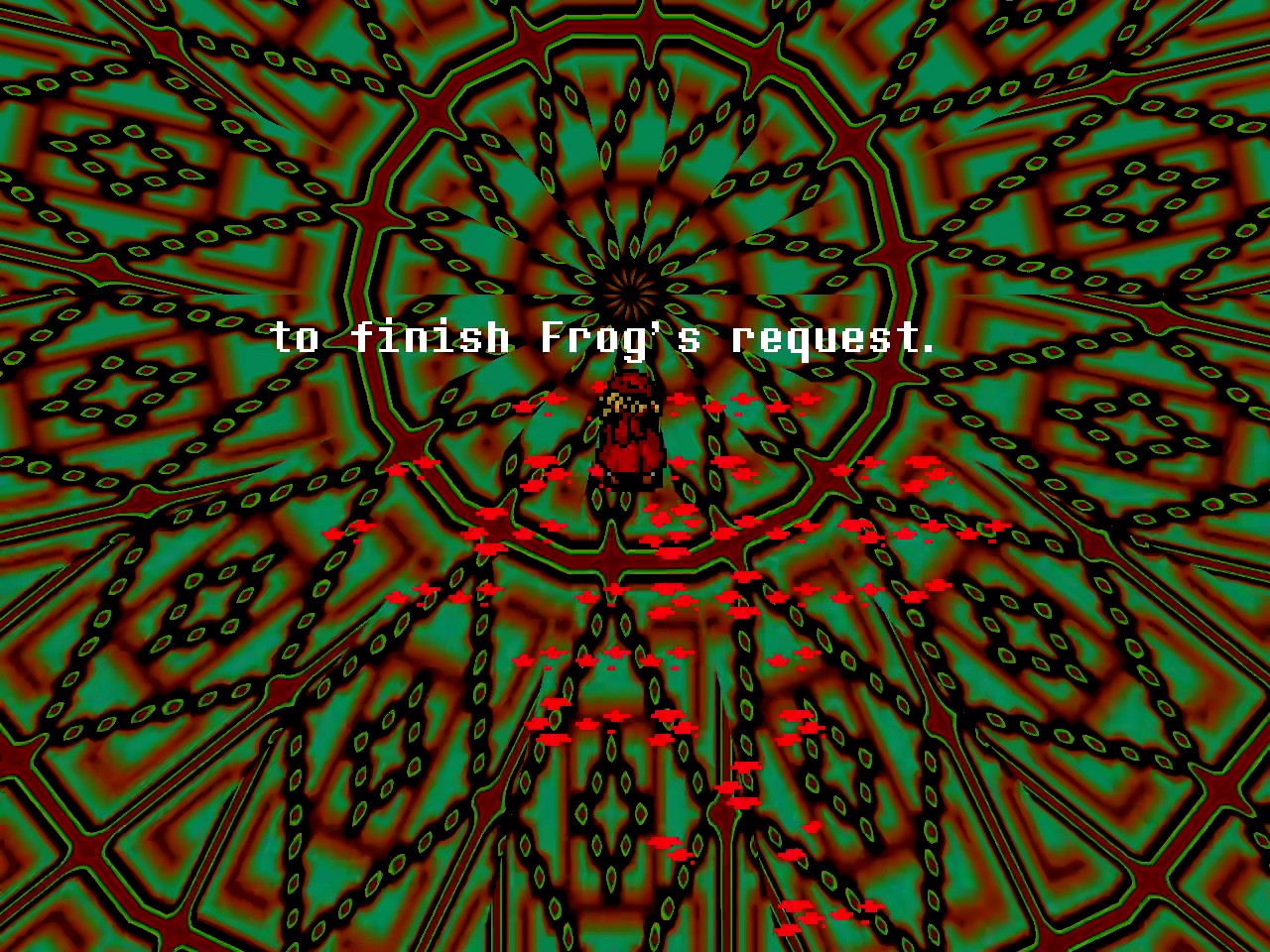
Moving along.
There's some dialogue suggesting the rot of the world is due to Gold Pig's hoarding of wealth, but... why? No one uses money. Zigg blames you for spilling their outrageously expensive drink, but money never comes up again. What does Gold Pig's stockpile of gold bars have to do with the world decaying? No one lives in poverty. No one's needs aren't being met.
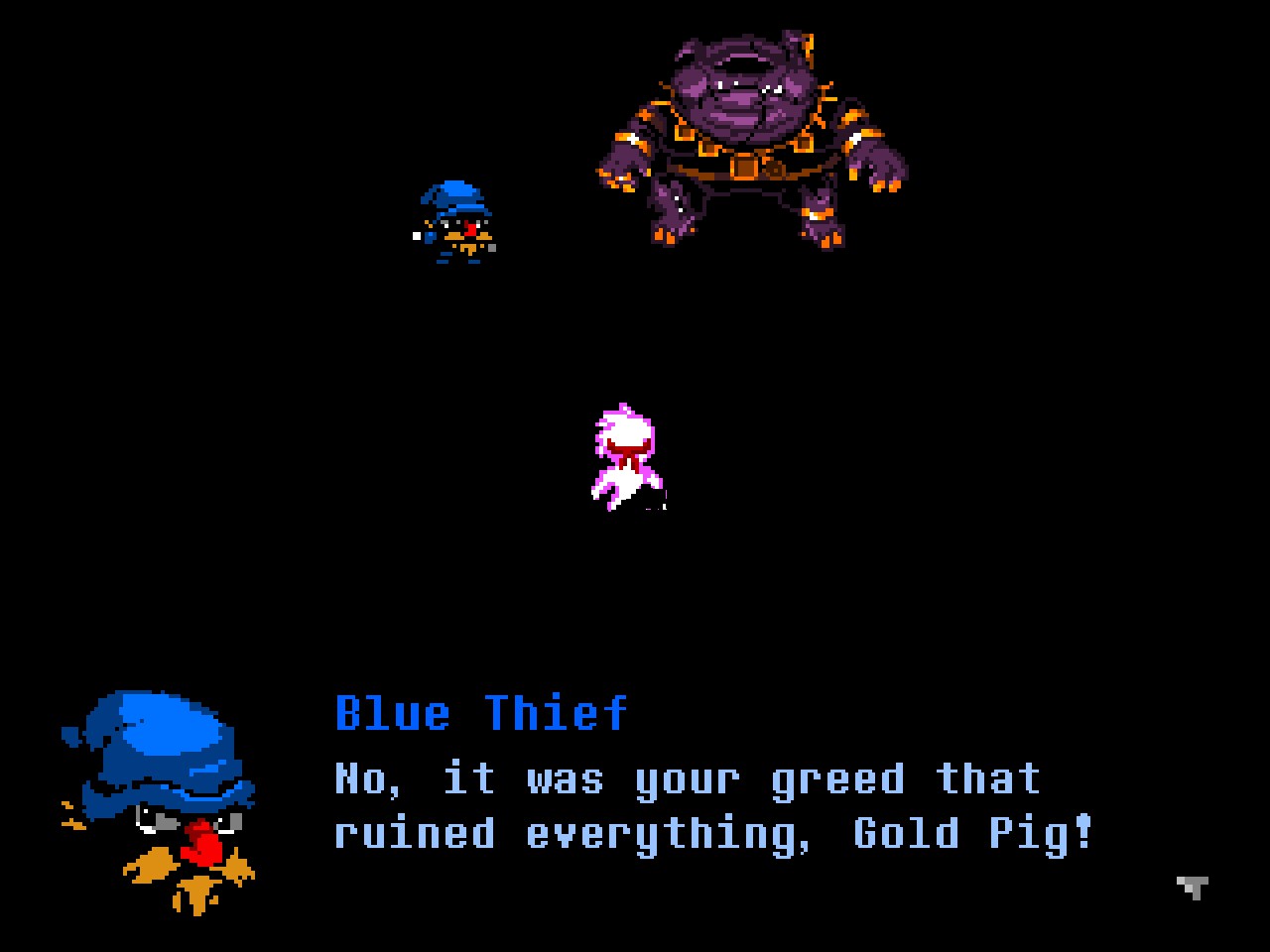
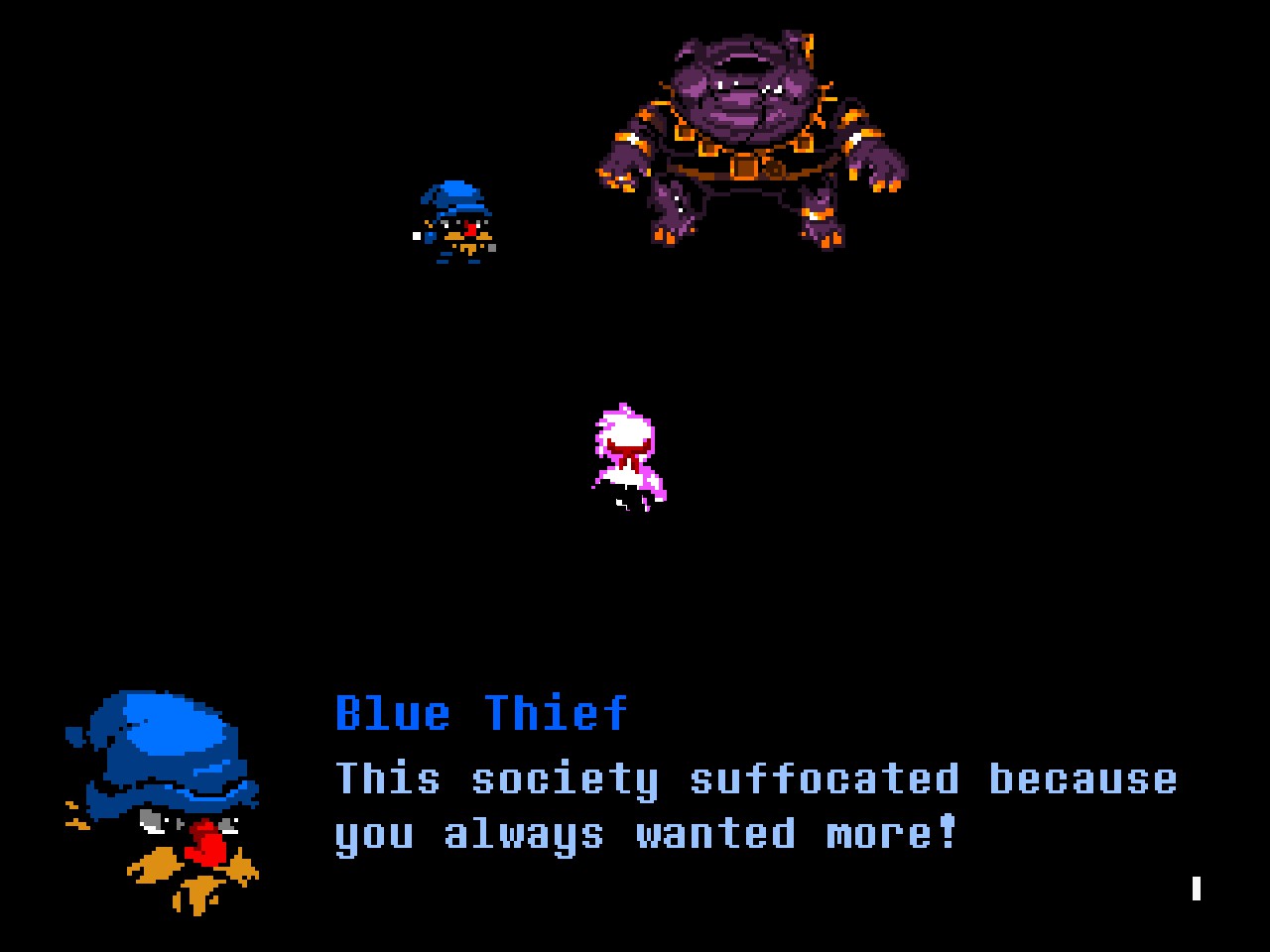
You tell them, Blue Thief! Hey, wait, if Gold Pig was ruining everything and suffocating society, you must have had a really powerful motive to work for them! So what was it?
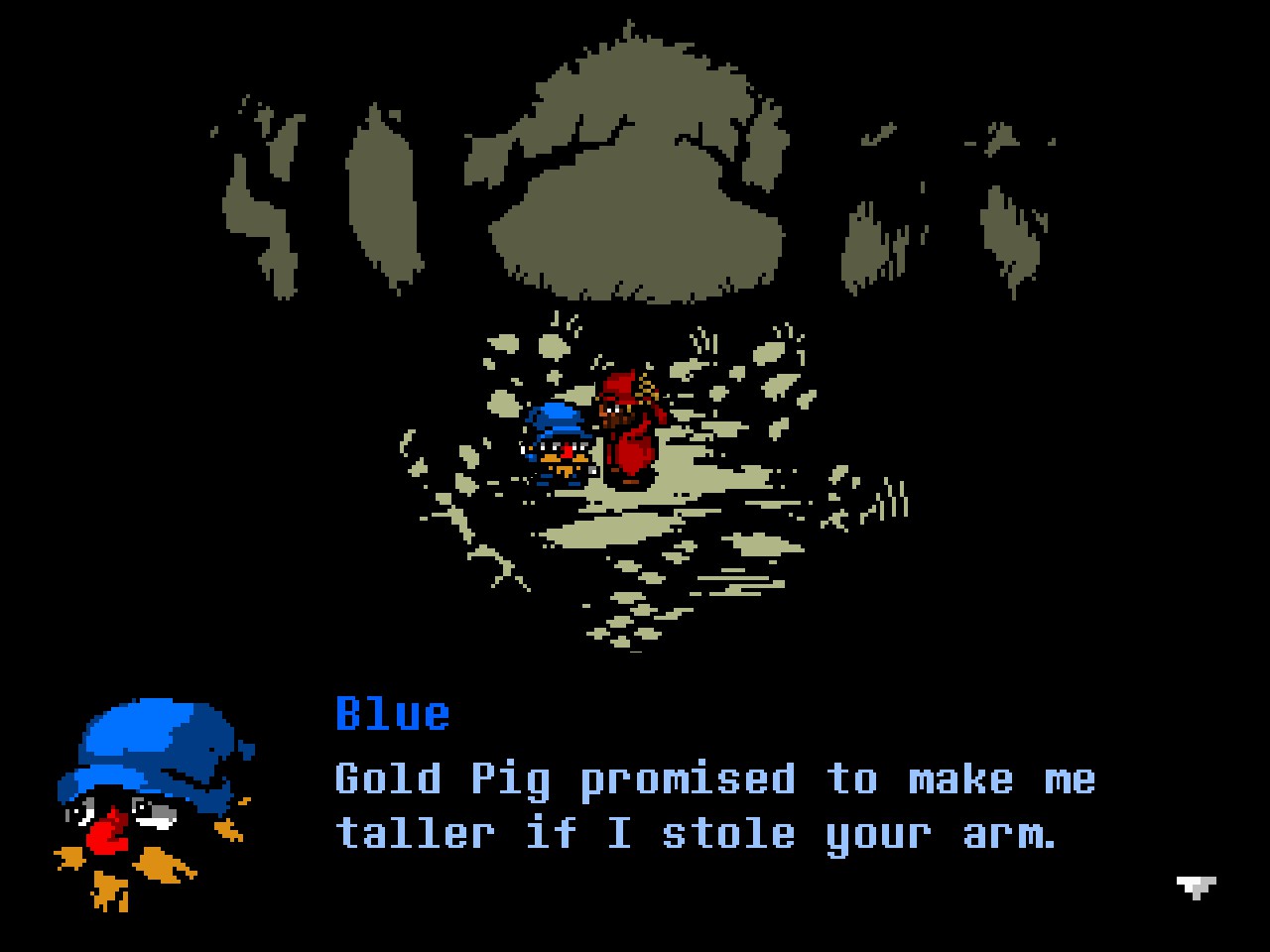
And if Gold Pig is slowly ruining the world, why doesn't anyone try to stop them, or seem to care? Green Mage and Purple Mage may be in Gold Pig's service, but when they openly chide Gold Pig about their greed, it feels light-hearted. They seem amused by how Gold Pig's greed leads them to act in short-sighted ways, rather than mourning the slow death of their world brought about by Gold Pig's avarice.

Like, come on, devs. You gave everyone they/them pronouns. Don't tell me you were afraid to put an anti-capitalist message in your game.
Here's an idea about how to improve this: what about linking it to the movie theater that only plays static? It's not used for anything besides a general Isn't This World Weird? moment. What if we learned the movie theater used to play actual movies, until Gold Pig dismantled its antenna just to hoard the metal in their treasury? There, now you have another anchor for "The world is getting ever worse, and Gold Pig is at the heart of the rot."

I feel like Everhood has some really obvious emotional hooks in its setting: a stagnant world that can only get worse, surely but steadily. And it just didn't seize that opportunity.
What about a shot of an endless field of broken doors? What about a glimpse of a verdant and complete realm, to contrast with the current sparse and rambling areas you explore? You can't just say that Murder is the Moral Option and be done with it; you need to work really hard if you want to sell that.
Again, it's not a total failure of a message. The atmosphere of the game is unsettling throughout, and I don't think it would take much to convince me "this is a world that calls for its own destruction." I think there is a really powerful throughline in an idea the game almost lands on: that escaping from a decaying, abusive situation can feel like death, but is the only way to move forward.
I think if the game had really leaned in on what you were doing feeling like death and tried to work in that message through the game -- lots of little examples of the fear involved in escaping bad situations, how people can blind themselves to their own pain, how abuse contorts your memories and robs you of your feelings, what it's like to resign yourself to simply trudging forward -- then Everhood could've been a masterpiece.
Instead, what I felt like I got was... "what kind of sick bastard are you, you disgusting pacifist. how could you be so cruel as to not murder a bunch of people who seem to be Doin' Fine."
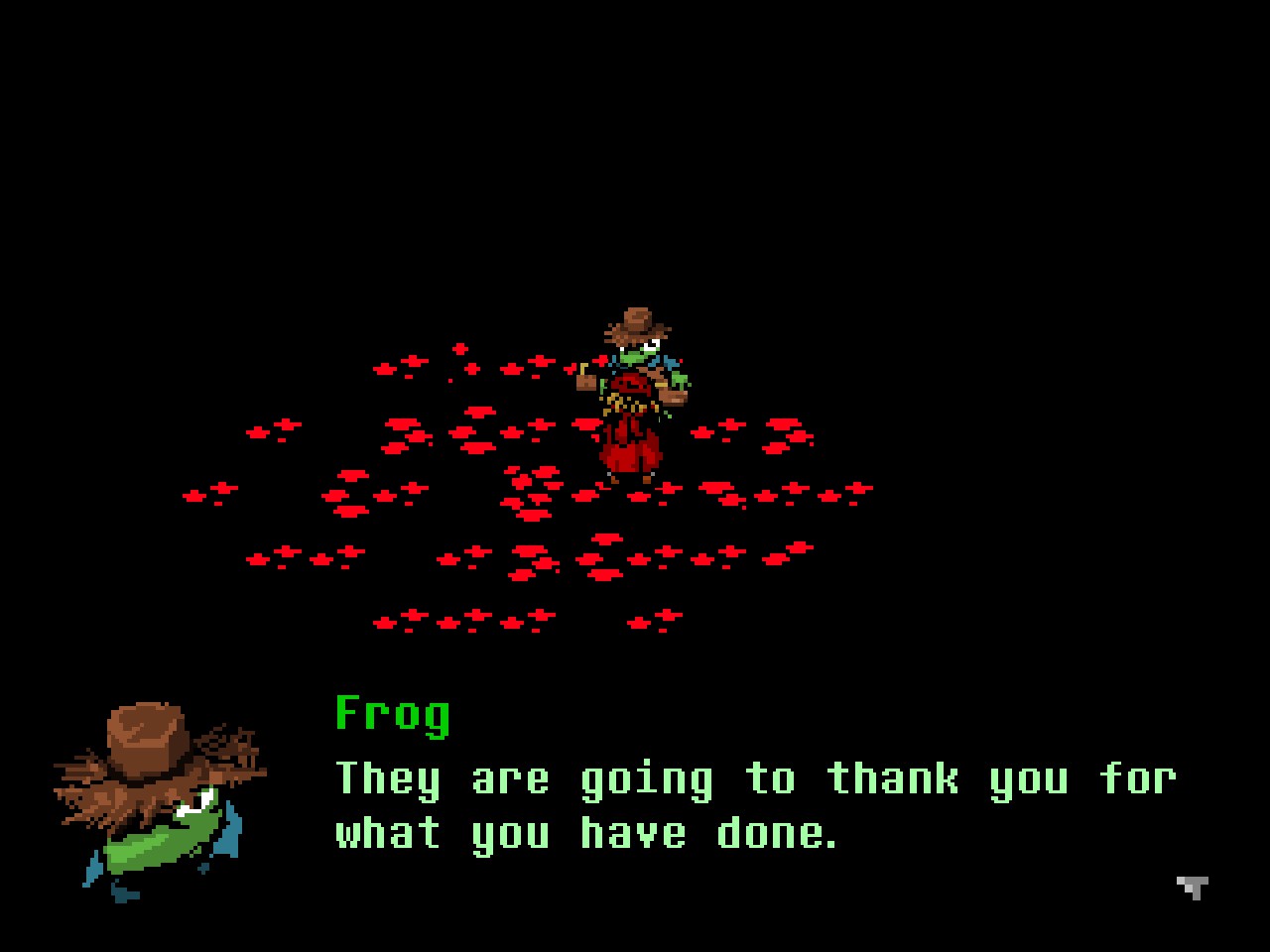
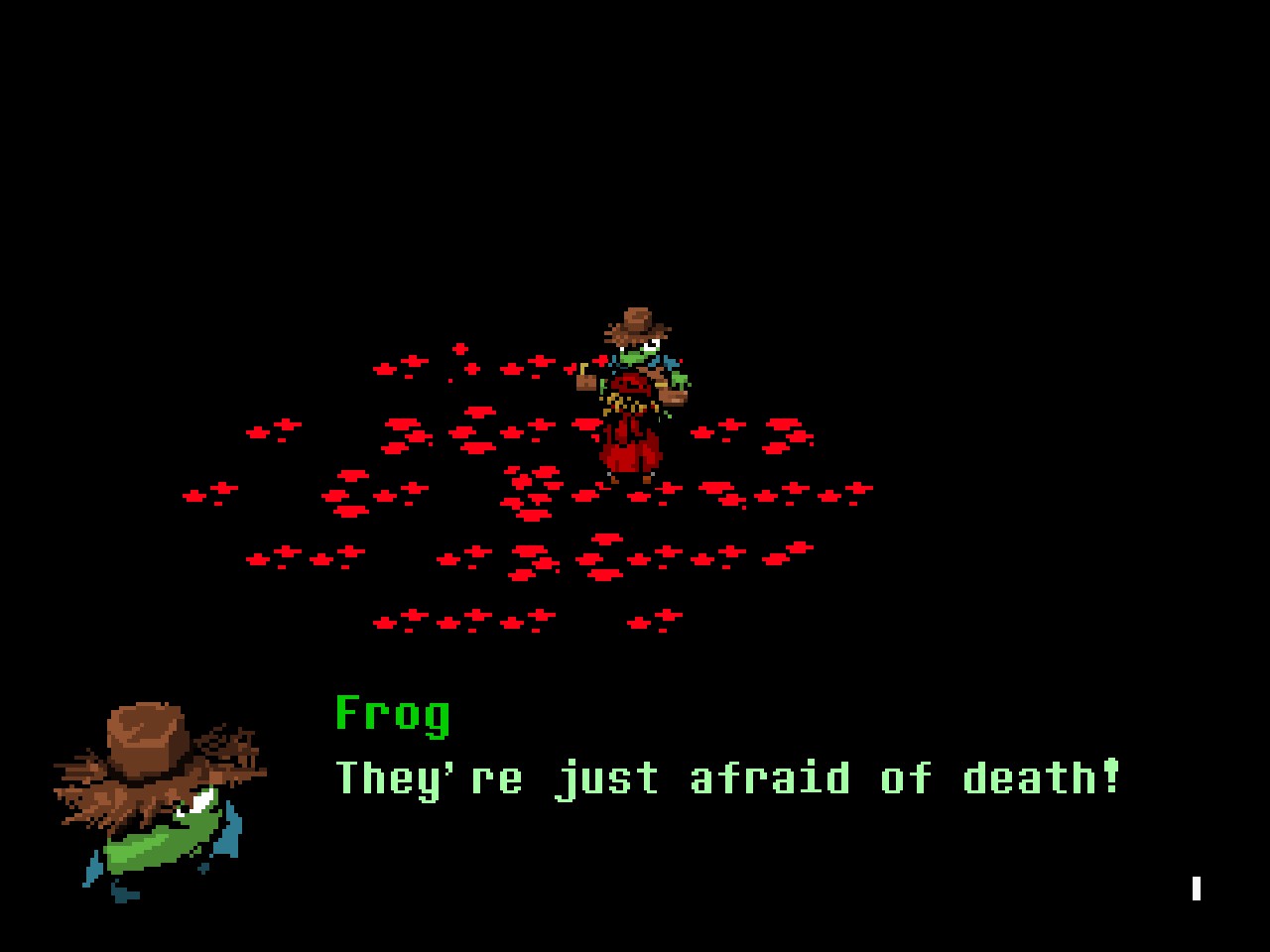
Okay. Fine. I will do murders, Everhood. I will indulge your framework.
To be fair, the Murder Everyone part works well, ignoring the problems with the larger moral framework. With each character you interact with, you get a choice to either talk to them or kill them. Choosing "Kill" starts a battle... sometimes. Sometimes you simply kill them while they offer no resistance. It's tense and painful every time. Sometimes you get a new battle to reflect the changed circumstances, and sometimes you just get the same battle you already had against them. It is horrible to have to slowly kill someone who doesn't even necessarily realize you're doing so, as if this were just another fun sparring match like the ones you shared in the past.
Killing Rasta Beast? Killing Rasta Beast sucks. It sucks so hard. Rasta Beast is the one character who starts a fight with you, rather than passively standing by and waiting for you to choose "Kill." It sucks!! In a good way!! Having to kill Rasta Beast was definitely the emotional low point of Act 2 for me. Their death felt like a loss more than any other.
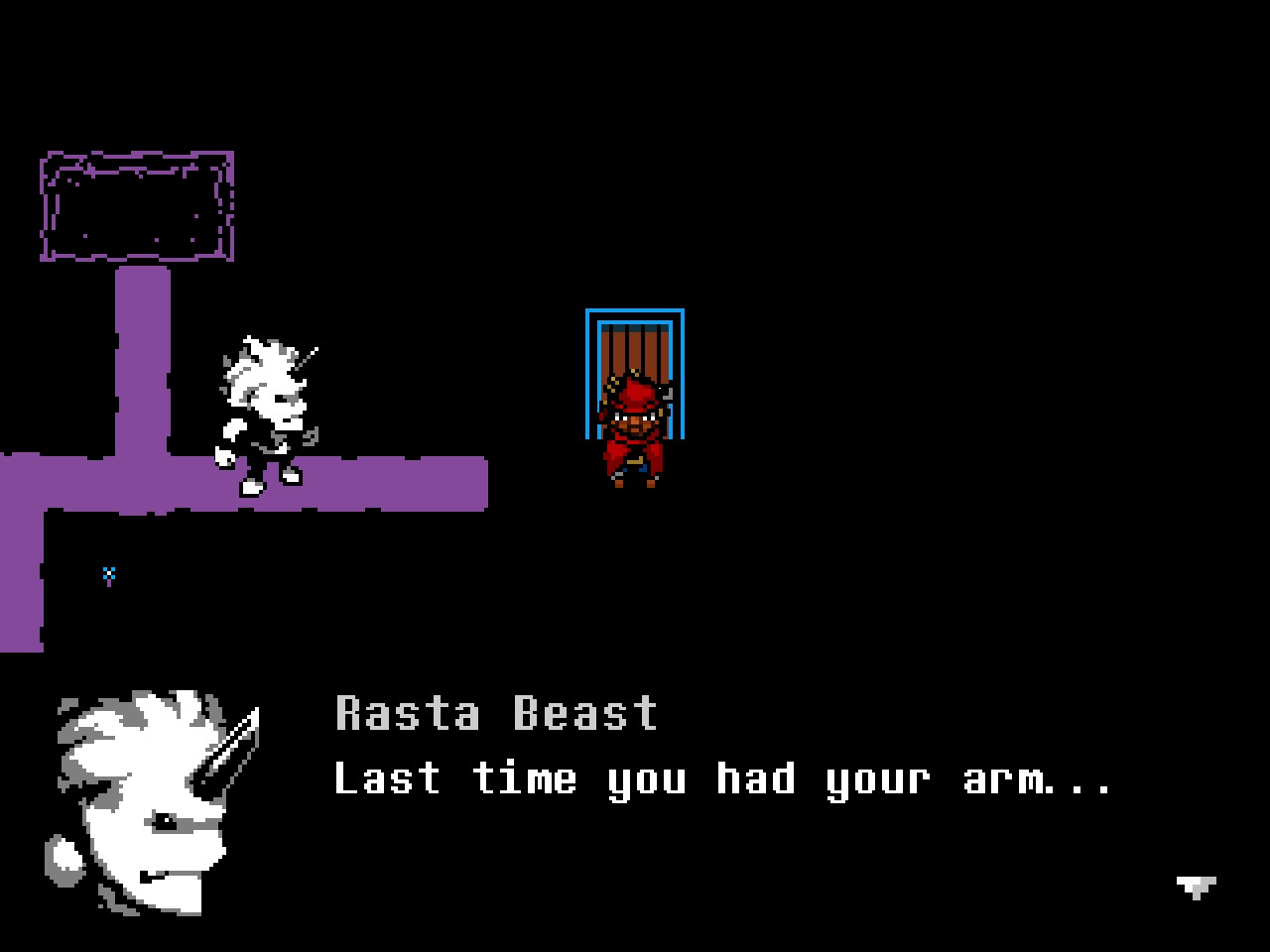
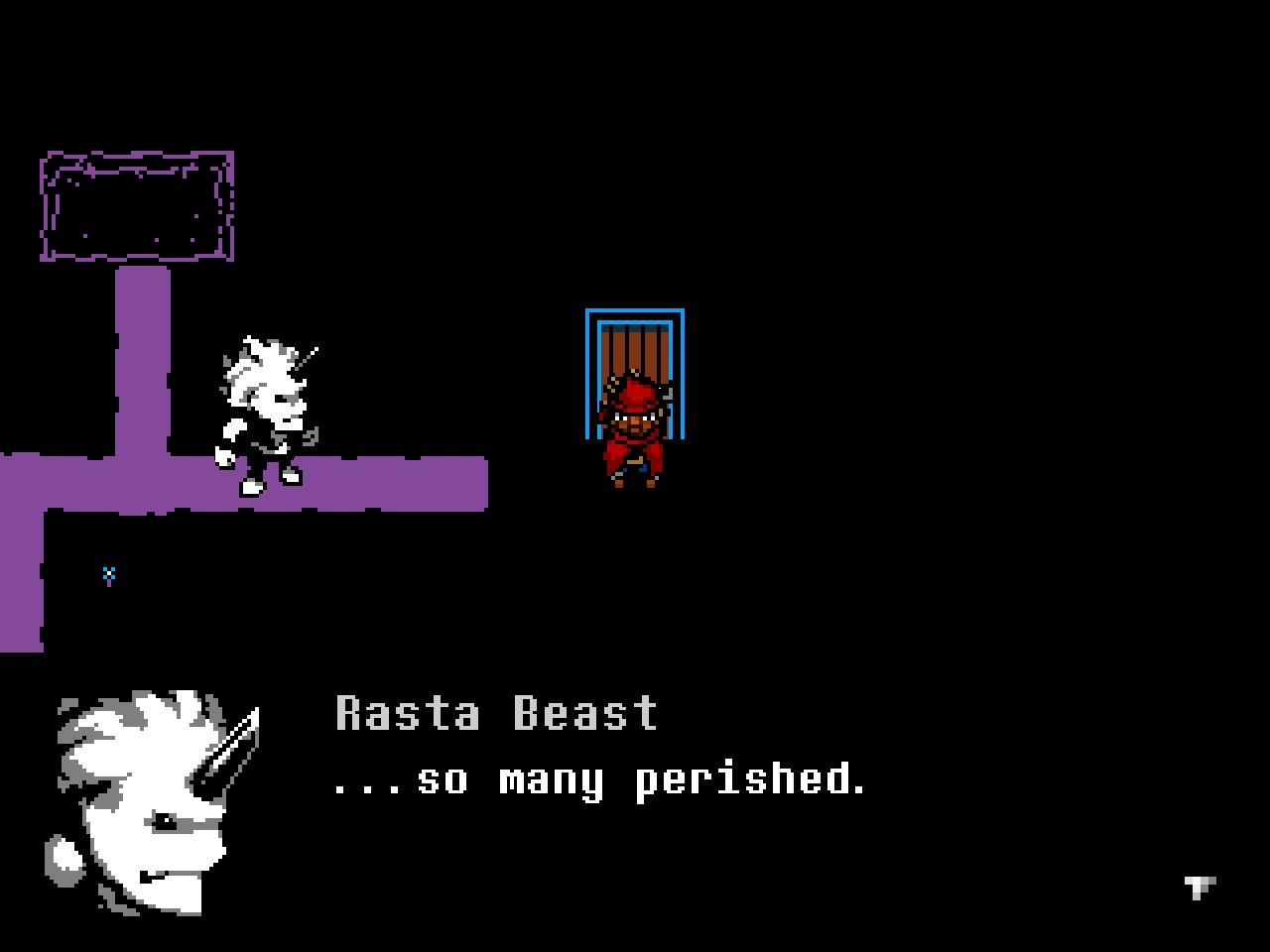
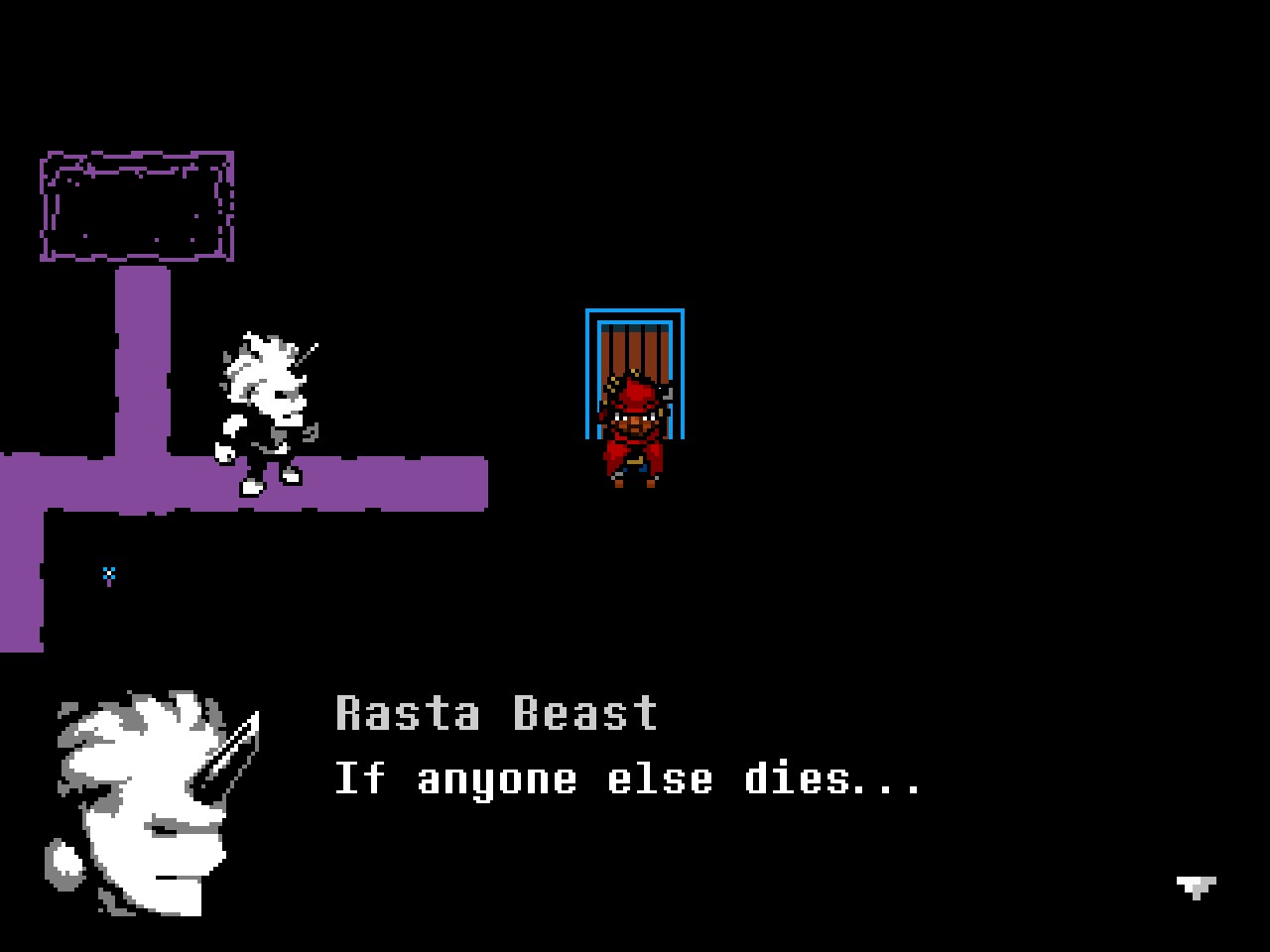
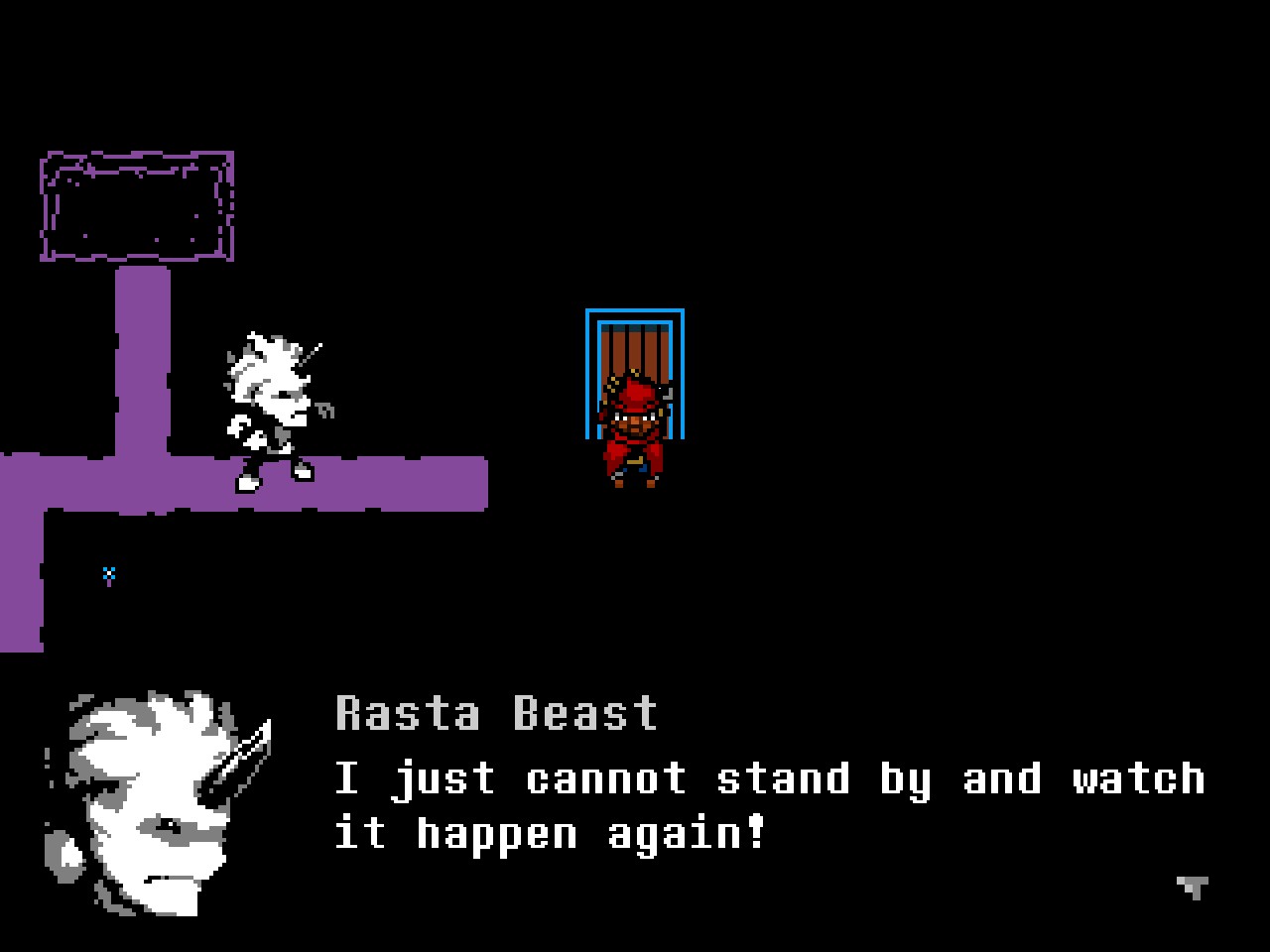
Another well-executed aspect: Red never speaks (aside from their reflection speaking to them through the Mirror of Truth), but throughout the majority of Act 1, you have Blue Thief to speak for you. Once you've beaten Gold Pig, however, Blue Thief gets their legs back, and no longer accompanies you. So for all of Act 2, you have no voice, no companion, just one silent murder after another. It's a far more lonely and hollow experience, and, yes, bravo, credit where it is due.
And yeah, it does feel bad to feel like you are slowly limiting your points of interaction with the world, little-by-little. Even if you're doing the right thing, it's hard. Closing time, folks. Everyone move on.
As badly as I feel that Everhood flubbed the feelings behind why you're going around killing everyone, at least the moment-to-moment execution of having to do so works well. It falls far short of Undertale, given how dynamically Undertale responds to your actions... versus Everhood, where each kill is an entirely independent event, unaffected by every other. Still, there are some real feelings in depopulating the world, and Everhood deserves credit there.
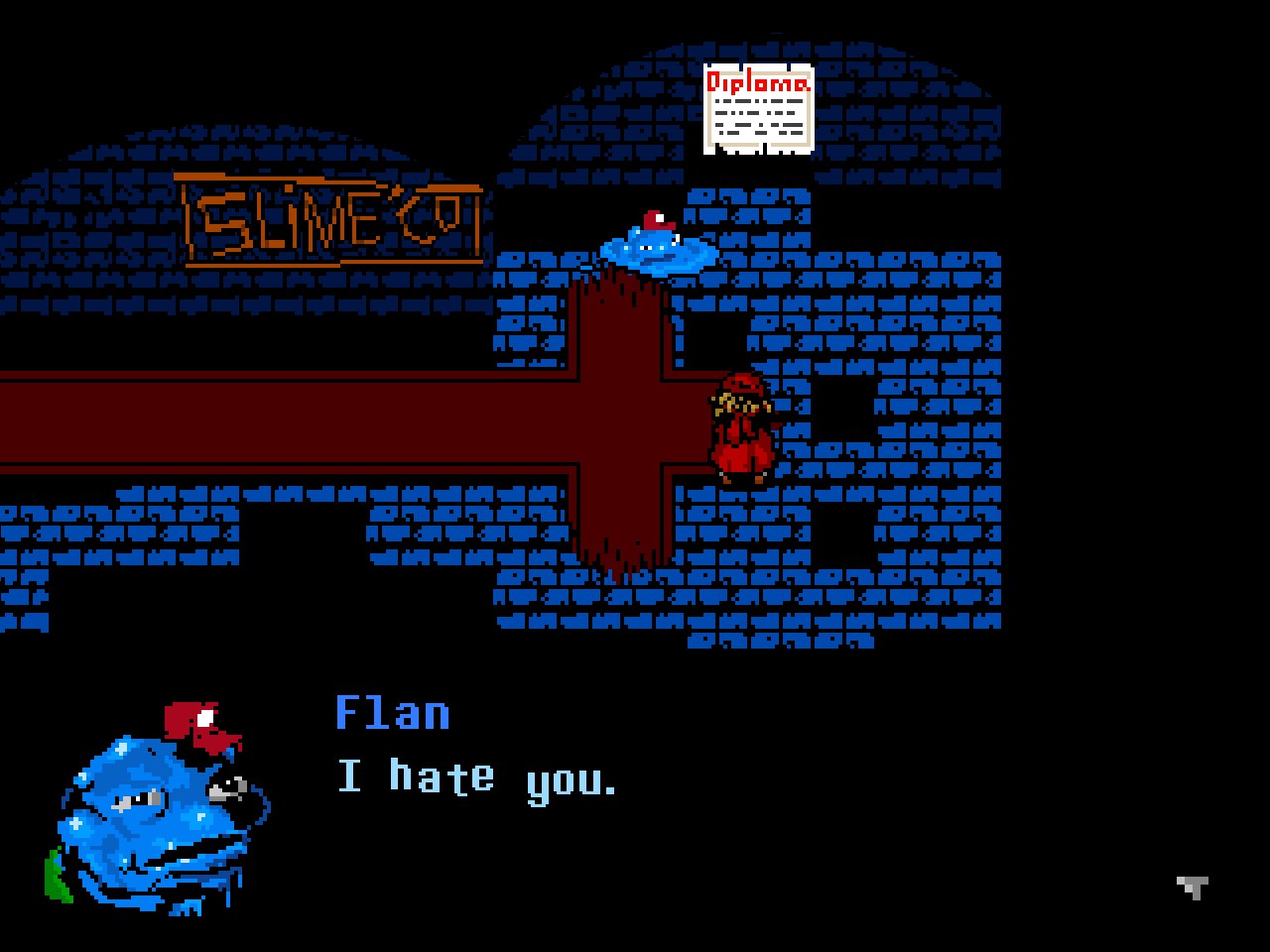
It works well... with one exception.
Remember Harrowed Haley, the tortured, withered victim in Professor Orange's Lab? The one suffering from unending pain and wracked by terror? The one character that you might think it would be appropriate to kill, given their misery, and their shattered grip on reality? I went there first, trusting that the same game which pressured me into killing everyone would not try to guilt me over the single kill that could be considered euthanasia.
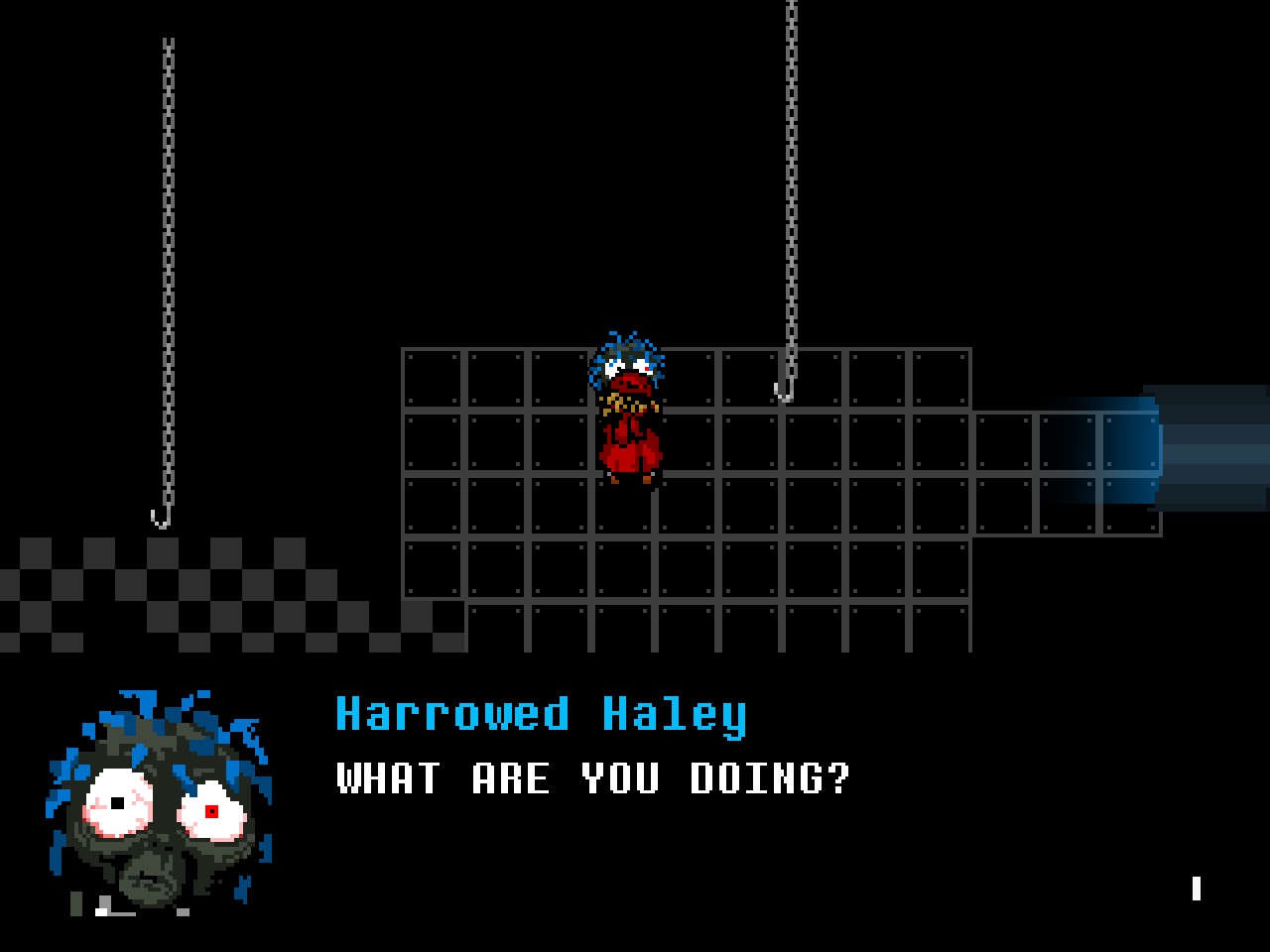
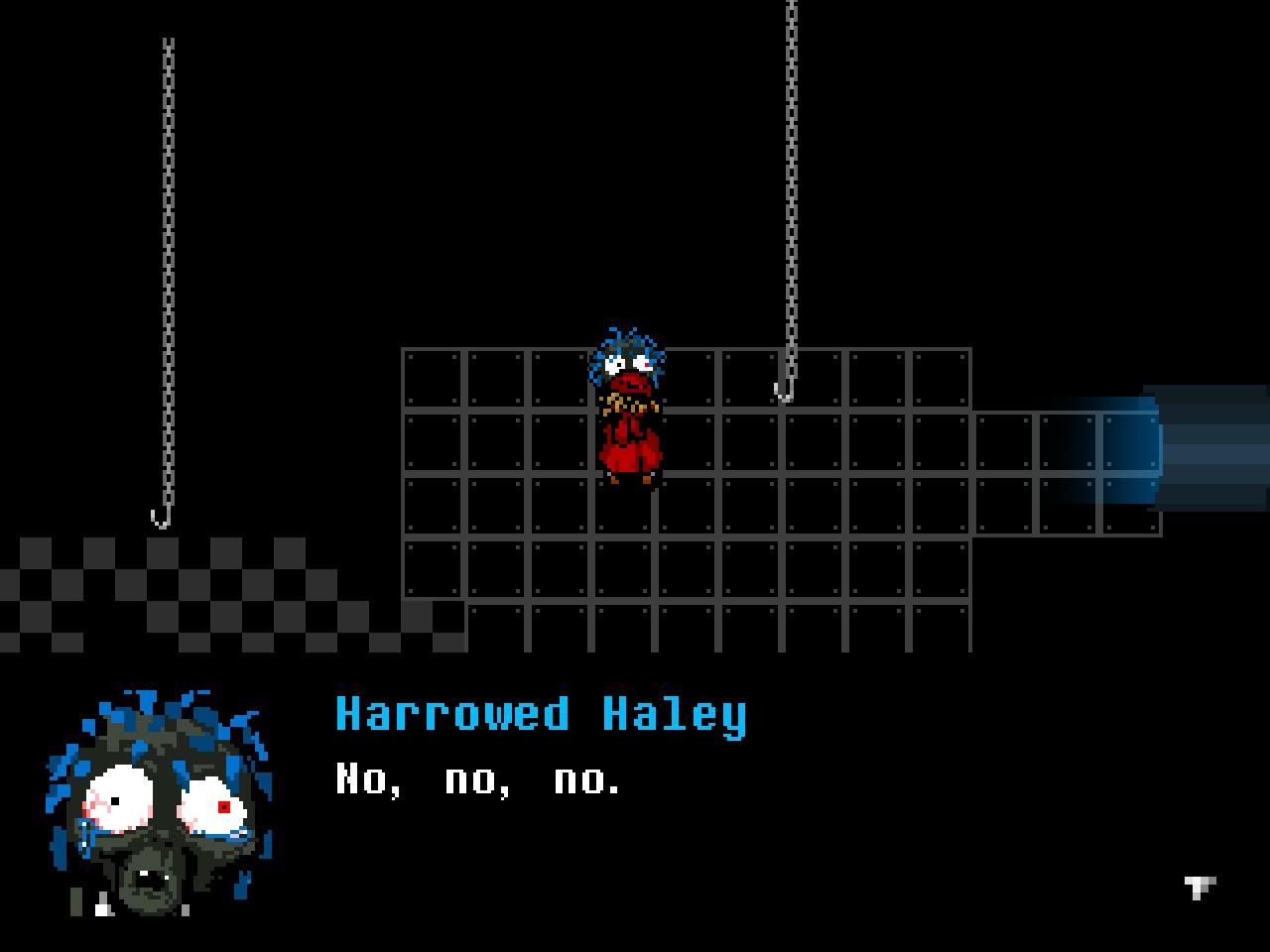
My trust was not rewarded. Harrowed Haley becomes perfectly lucid as you kill them, begging for their life, too late for you to stop the deathblow.
It felt absolutely horrible to me, and not in a good way. Act 2 leans heavily on trying to make you feel guilty, and I get that, but the part with Harrowed Haley just felt inappropriate and cruel. It felt like a nasty bait and switch.
I'm still not ready to really talk about Harrowed Haley. We will come back to them. Because it gets worse. Somehow, it gets worse.
There's a minor missed opportunity I need to mention here: remember how I said that the Cursed Castle has a consciousness? That it spoke to you, and seemed to have a soul of its own? It's something that the game emphasizes when you're first exploring it, with multiple characters commenting on it to really hammer it home. Your goal in this part of the game is to hunt down every living soul. So I was really excited to see how that was going to pay off: how do you fight a castle? How do you find and kill the soul of a castle?
The answer is: you don't. It just doesn't come up. I don't get it. Anton Chekov is rolling in his grave.
Also, something weird about this whole section is how it's emphasized that Red is the only one in this realm with the power to kill. But also, 15 minutes into the game, you're introduced to The Incinerator, which kills you. And also Purple Mage threatens to kill you. So what gives? Why is this your job? Why can't Frog do it themself?
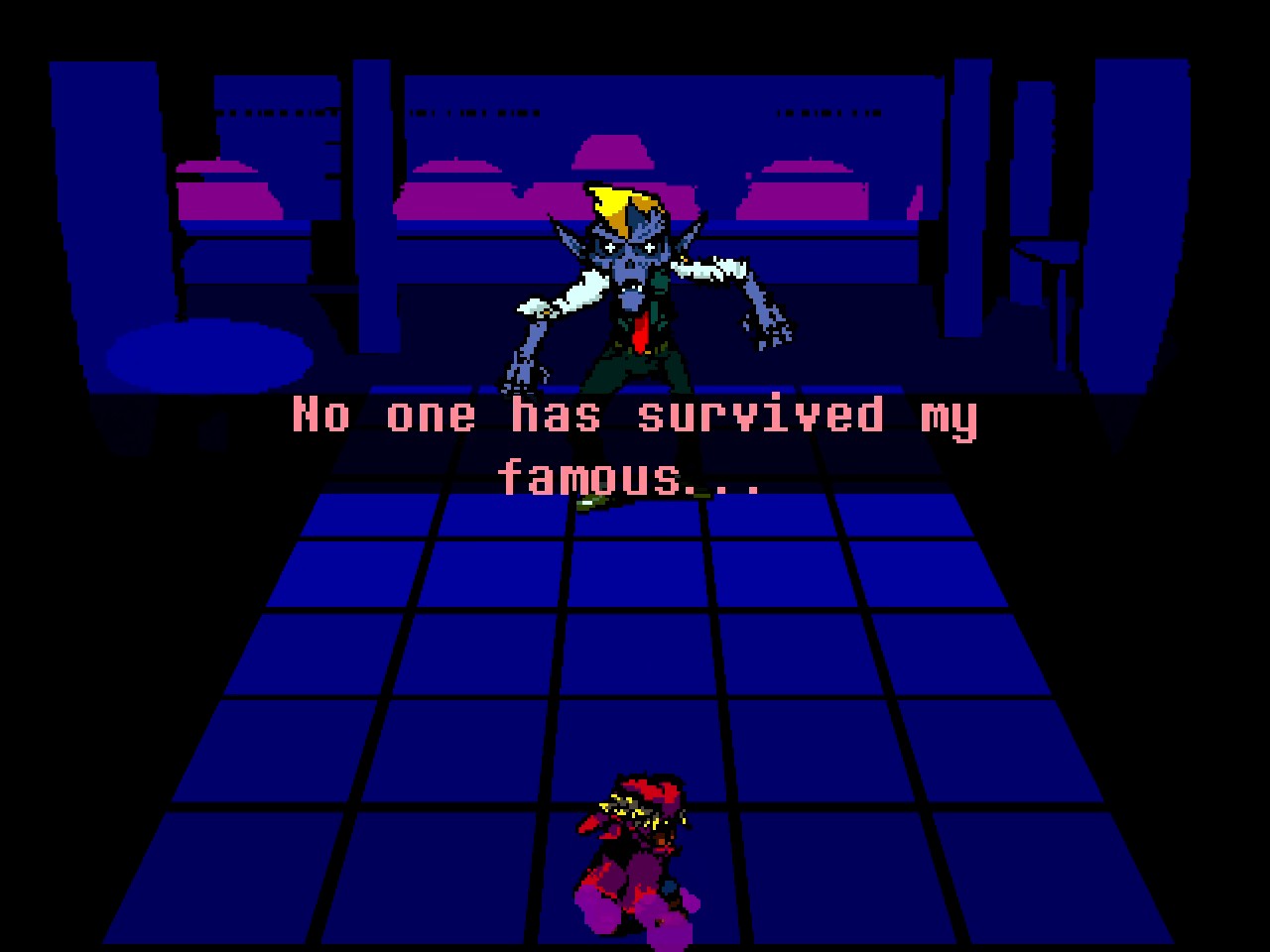

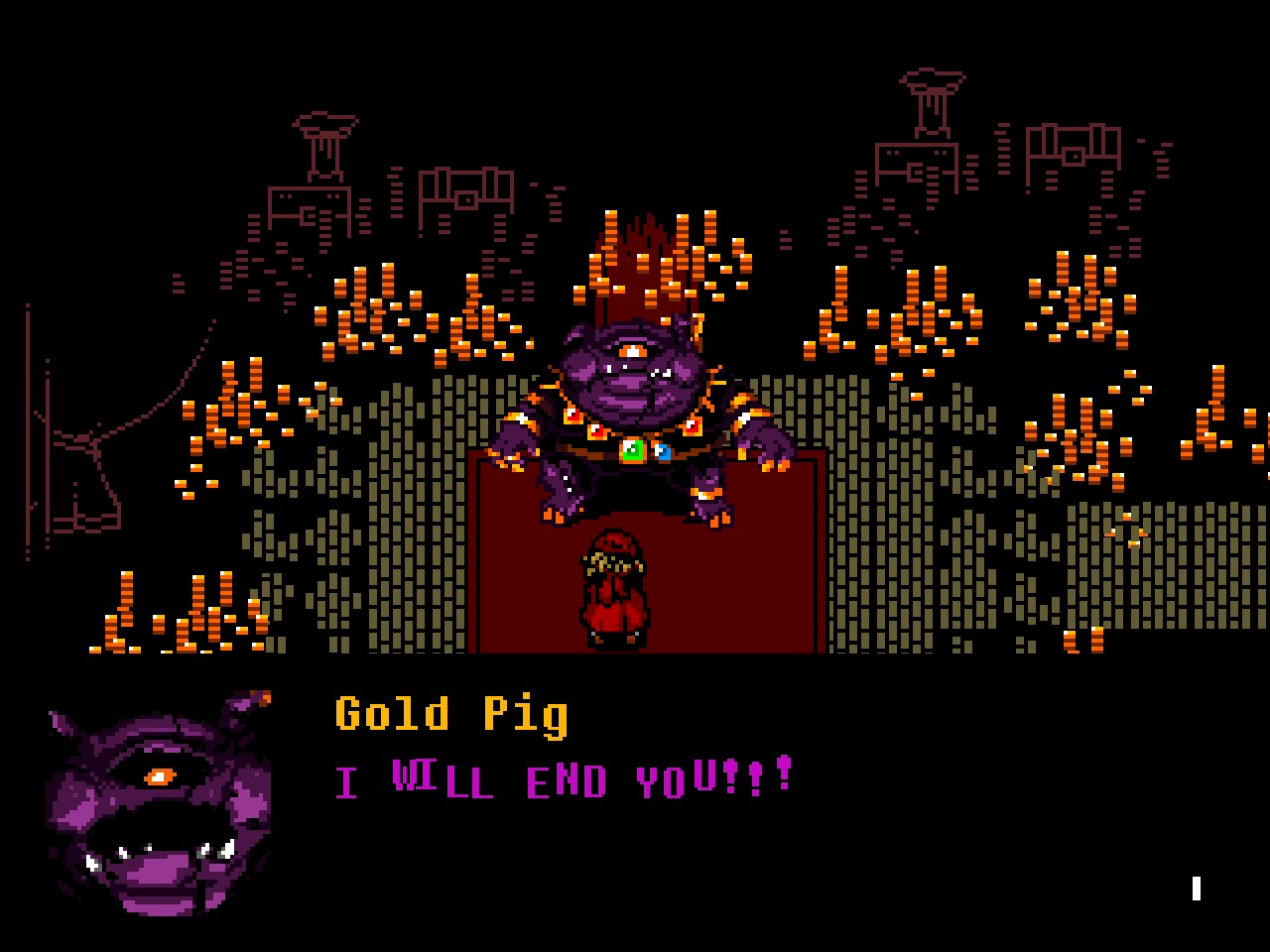

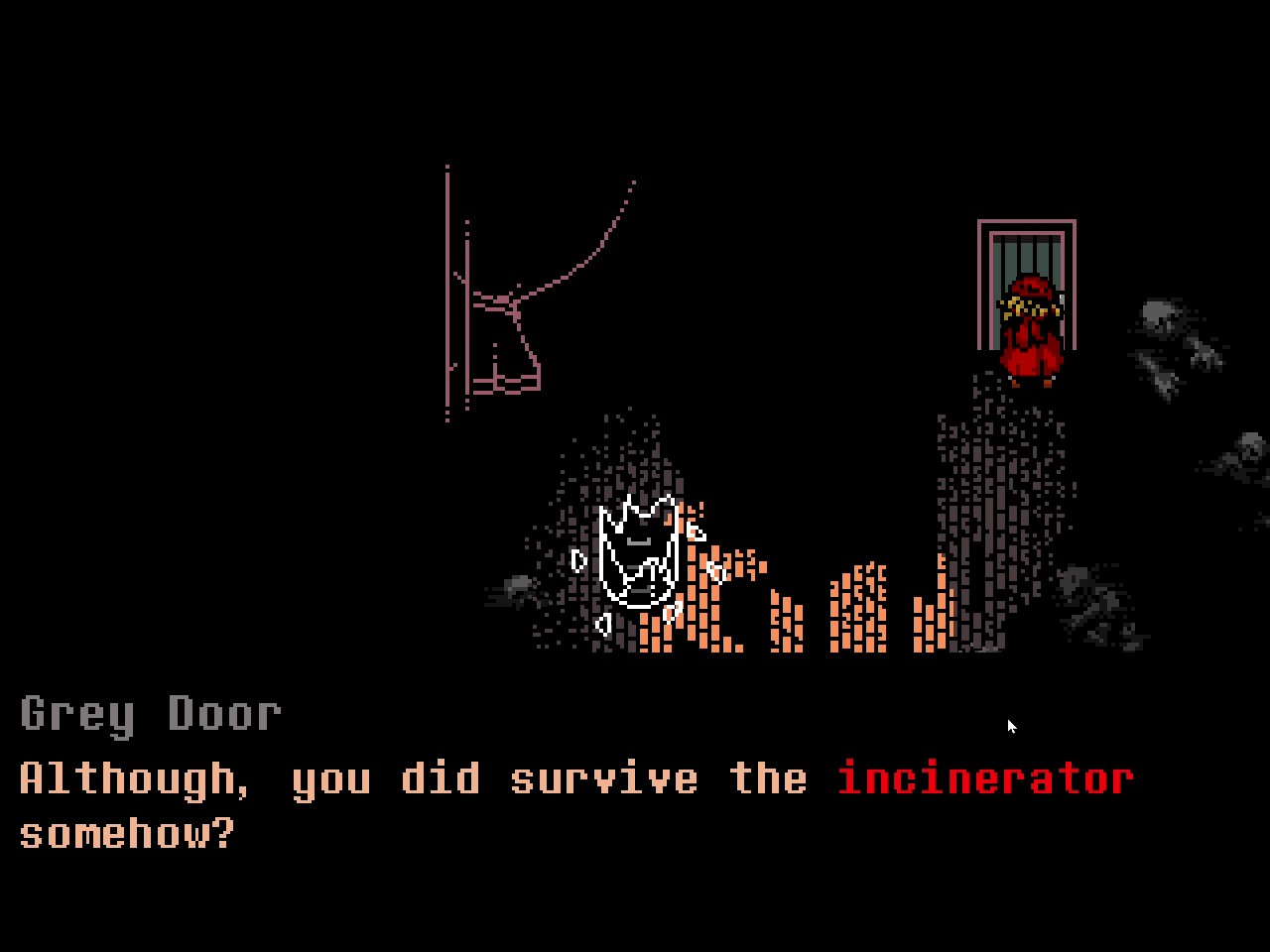
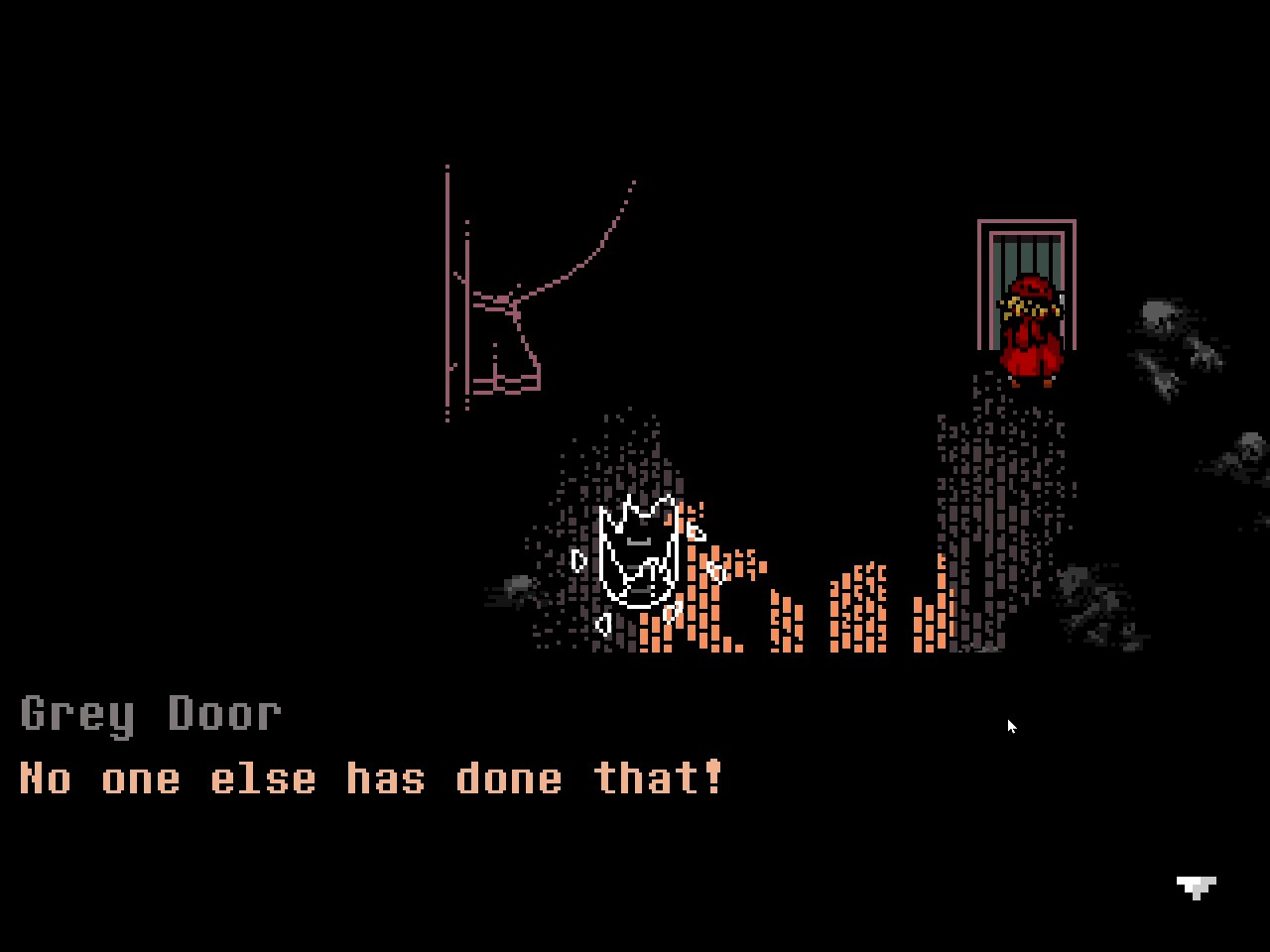
It feels like the devs genuinely forgot that Red was supposed to be the only one with Power of Death when they introduced the Incinerator and the various threats of death made throughout the game. I don't know how to explain it. Again, not to CinemaSins this game, but it just further cements that feeling of "they improvised the script and didn't bother going back to revise it properly when later worldbuilding decisions demanded it."
On that note, during this part of the game, Purple Mage and Green Mage seem like they definitely don't want to die, but they also seemed totally cool with you getting your arm back at the end of Act 1? It doesn't feel like they're simply resigned to their fate. When you defeat Gold Pig, they don't seem even a little upset that they failed to stop you from reaching your arm. It just feels inconsistent: like instead of writing their dialogue with the whole story in mind, they just wrote for the current scene. Improvision, without proper revision.
Maybe the implication is that the mages have a death wish?? But they don't mention this either on the cusp of you getting your arm back, nor when you hunt them down to kill them later.
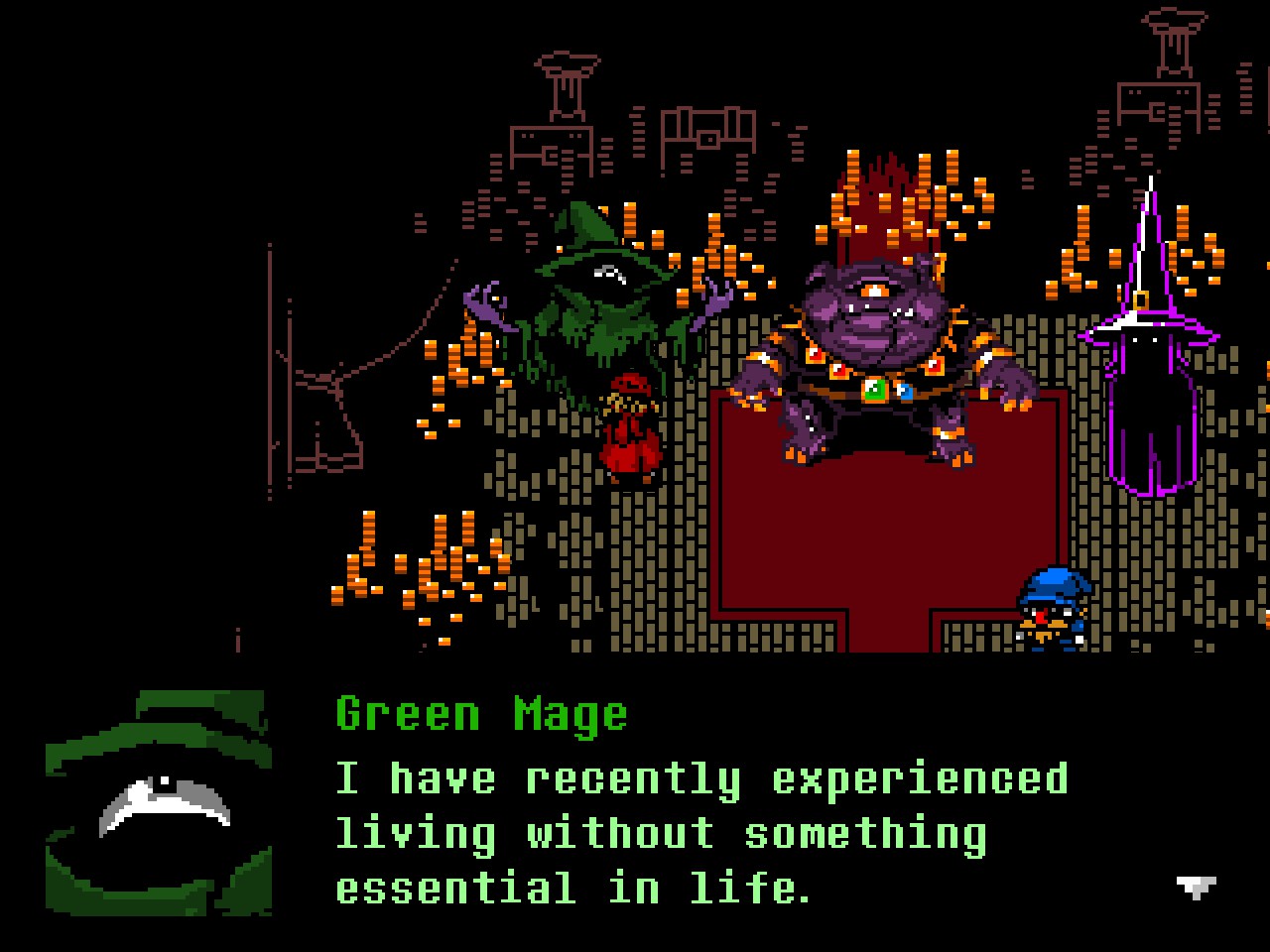
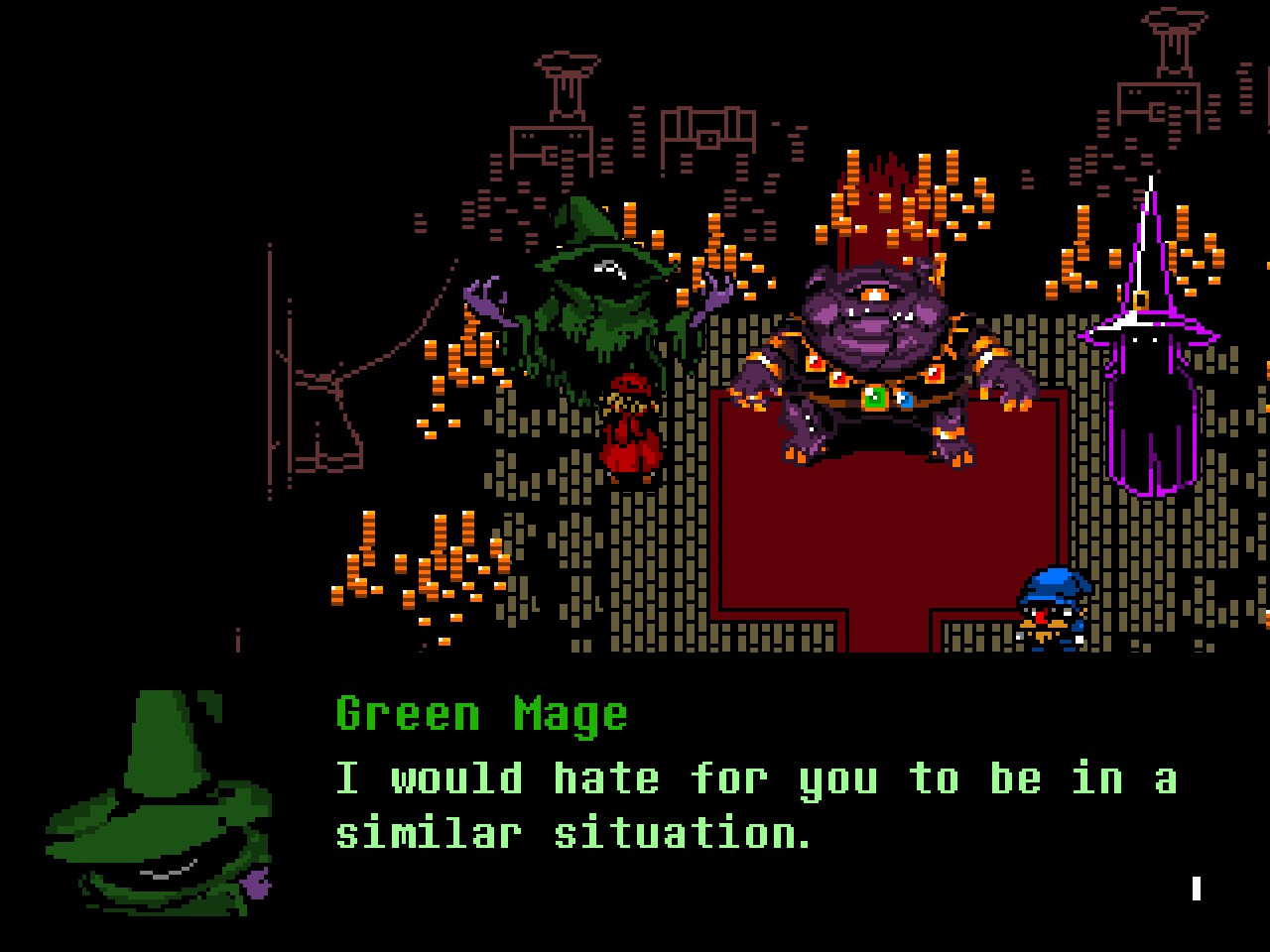
The Mages seem to agree with Gold Pig's initial plan to keep your arm, and then don't protest you reclaiming it once you've trounced them in battle. Gold Pig doesn't protest and say giving the arm back is dangerous, like you would expect them to. Instead, Gold Pig simply insists that you "buzz off" after you take the arm, as if they only remember Red's arm is a murder weapon after the scene has finished.
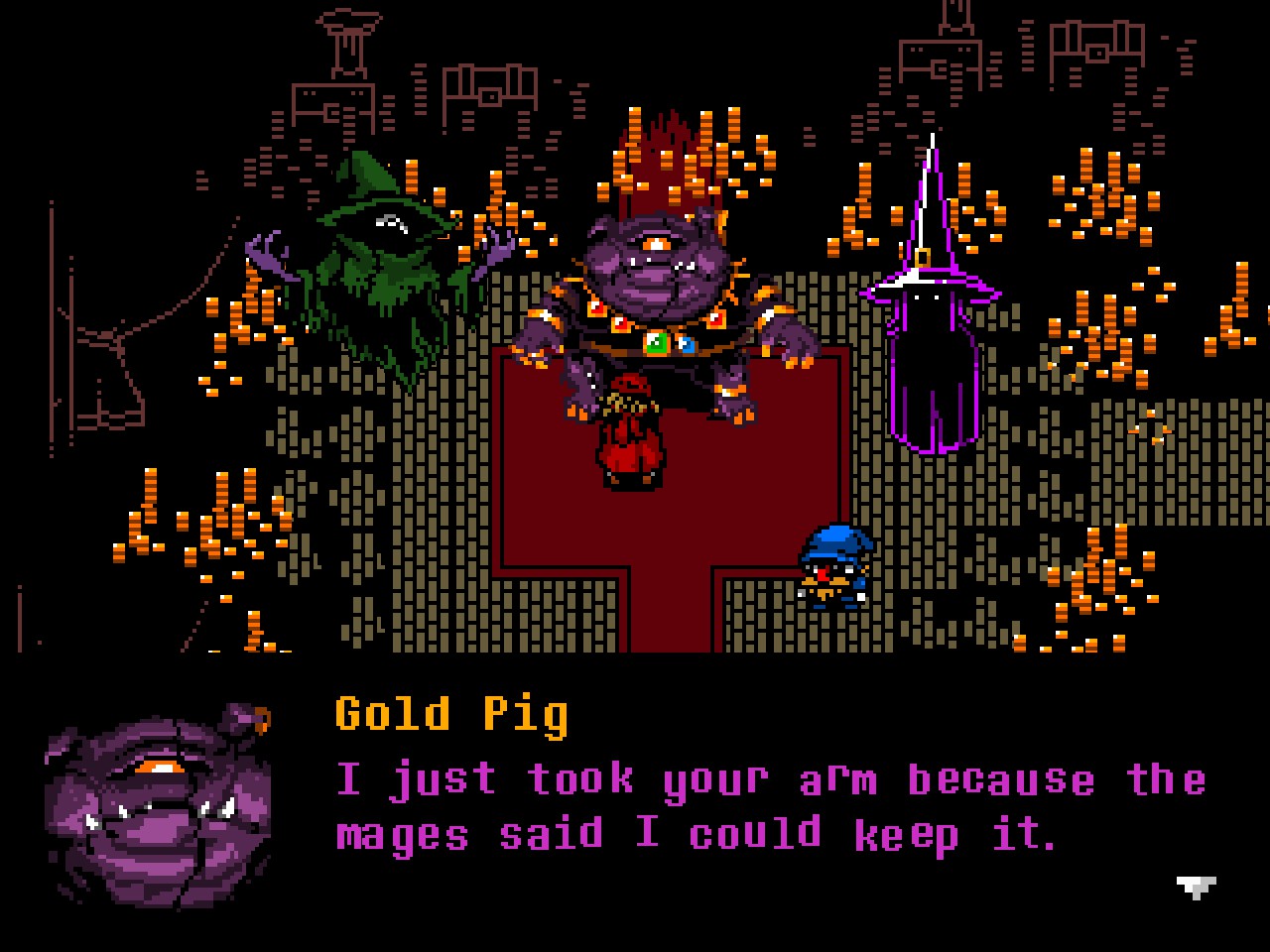
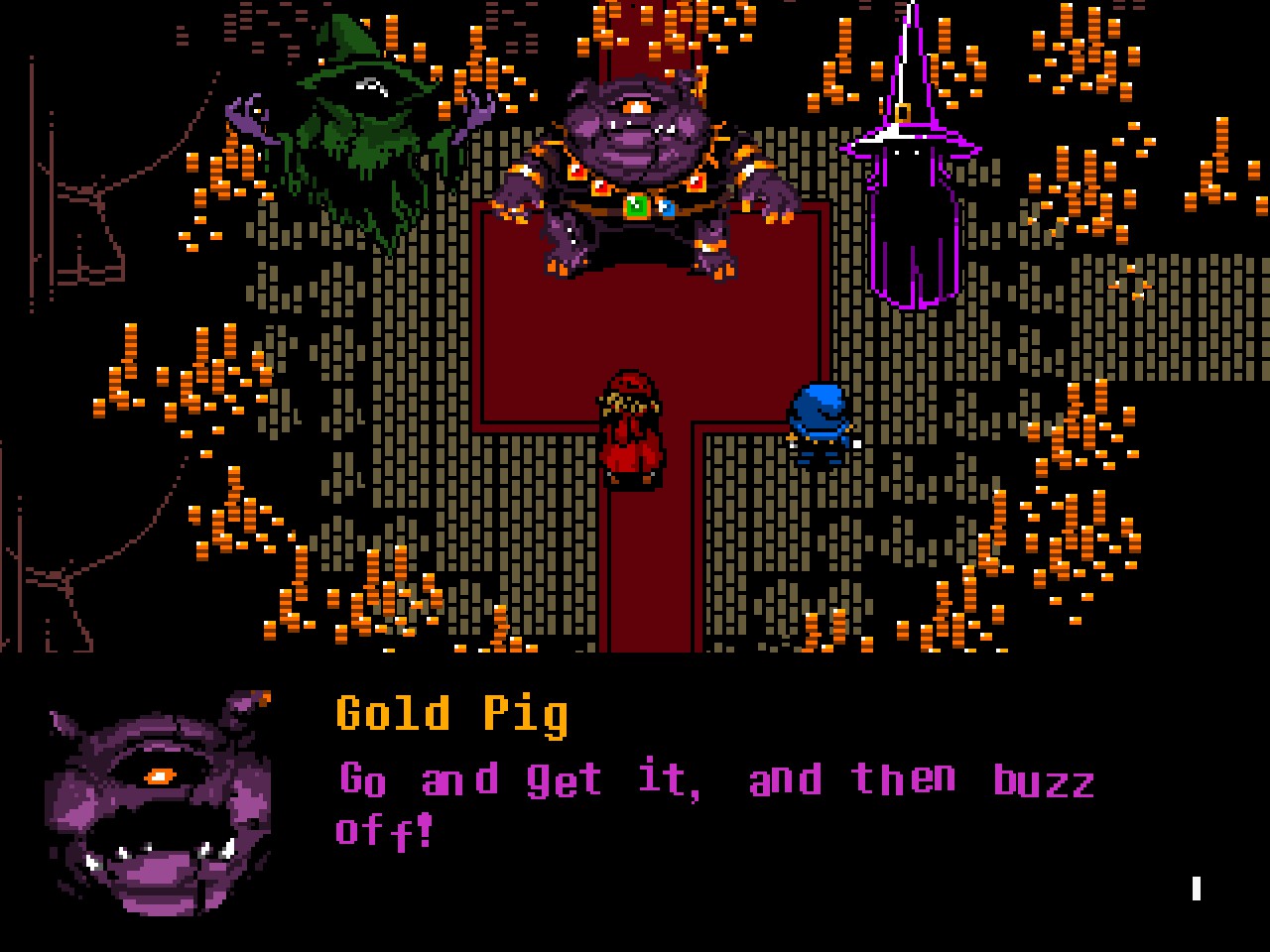
For that matter, why are they even mad at Gold Pig? If Gold Pig stealing your arm stopped you from murdering everyone, doesn't that make Gold Pig a hero? The game tells you that you're supposed to see Gold Pig as a gluttonous, greedy monster, but then it fails to have them do any actual harm with their greed. Beyond delay your righteous genocide, I suppose.
I feel like the game's emotional narrative depends entirely on recognizing the tropes and ignoring the actual implications. There's nothing wrong with tropes, but you have to be thoughtful in how you employ them! You're supposed to feel bad about refusing Frog's Call To Adventure, even though their Call To Adventure is "Do A Genocide". You're supposed to hate Gold Pig because he's The Final Boss Character, but Gold Pig doesn't really do anything objectionable besides steal Blue Thief's legs! Being a wealthy bastard isn't especially villainous when no one else is suffering due to a lack of wealth, but that's how they're treated by the dialogue.
Oh, while we're talking about the Mages: You also learn through another loredump note that each of the Mages sacrificed at least one of their senses to create "soulbound gems" that would enhance their power. I thought "soulbound gems" would end up having something to do with the necklace of gems around Gold Pig's neck, seeing how they command Purple and Green Mage, but I don't remember this worldbuilding element coming up again at all. I thought that, at the very least, one of the mages would end up talking about which senses they sacrificed for their power, but nope. Every single mage seems to have given up their eye(s), except for Purple Mage, whose gem seems to have been installed where their heart is. And Pink doesn't seem to have a gem at all, but we'll talk about them later.

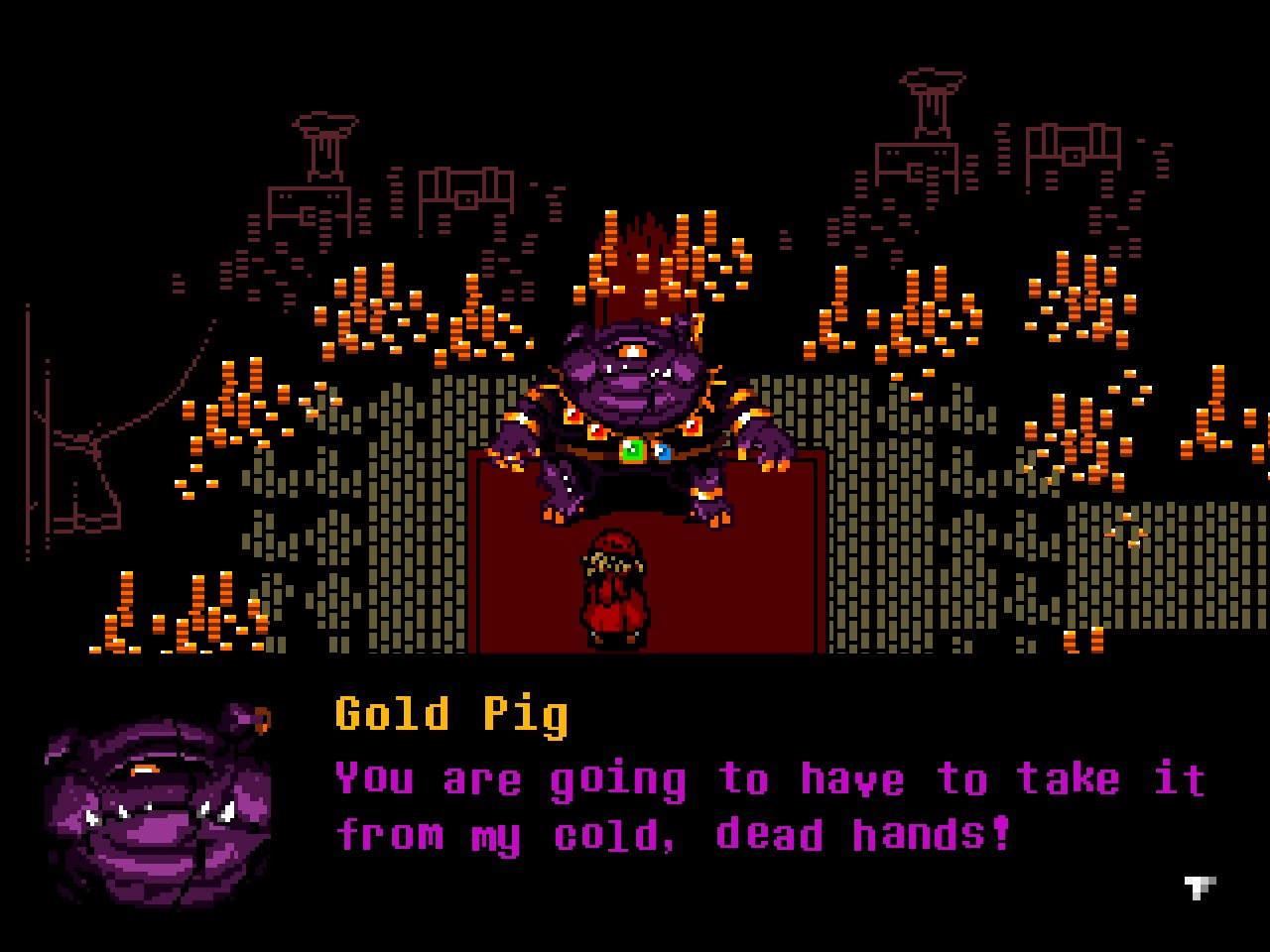
Anyway, to help you in your mission... do you remember that magic 8-ball I mentioned, which tells you how many souls are left in the realm? Well, that's how you know how close you are to completing your task. You get to see the number fall by 1 every time you end someone's life. It's a good touch, and gives you a constant sense of build-up as the number ticks down. The end is coming. It is inevitable.

30 souls.
20 souls.
10 souls.
5 souls.
4 souls.
3 souls.
2 souls.
1 soul.
At this point, you are told to go visit a court of Lost Souls, spirits that look like discount Gasters broken, distorted masks. "Go to the court of the lost spirits," you're told. You'll need their help to release the final soul.

One soul left. One soul left to kill. What a moment it is.
Who's even left, after you've killed everyone else?
That's right. It's you.
It's time to die.
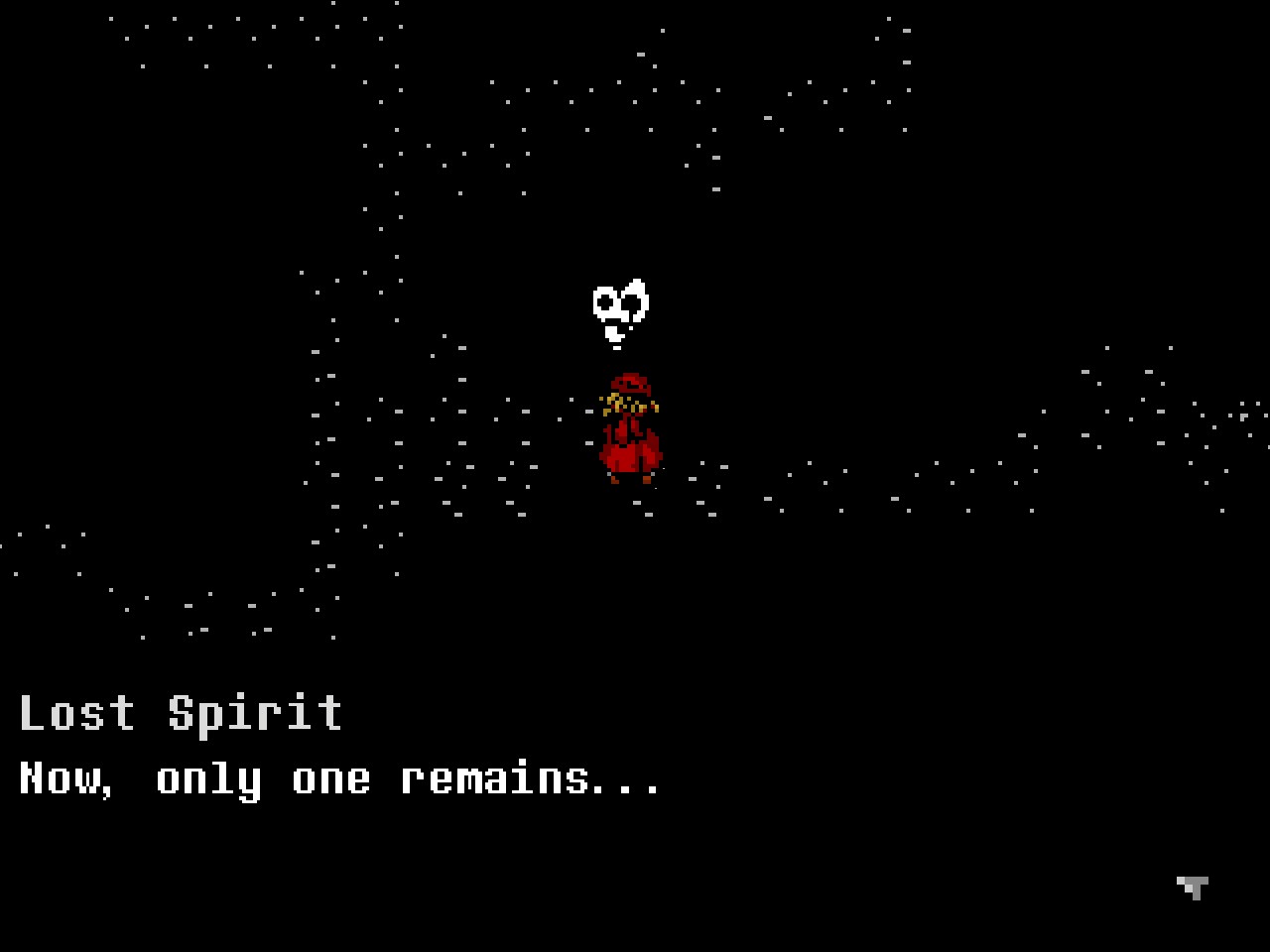

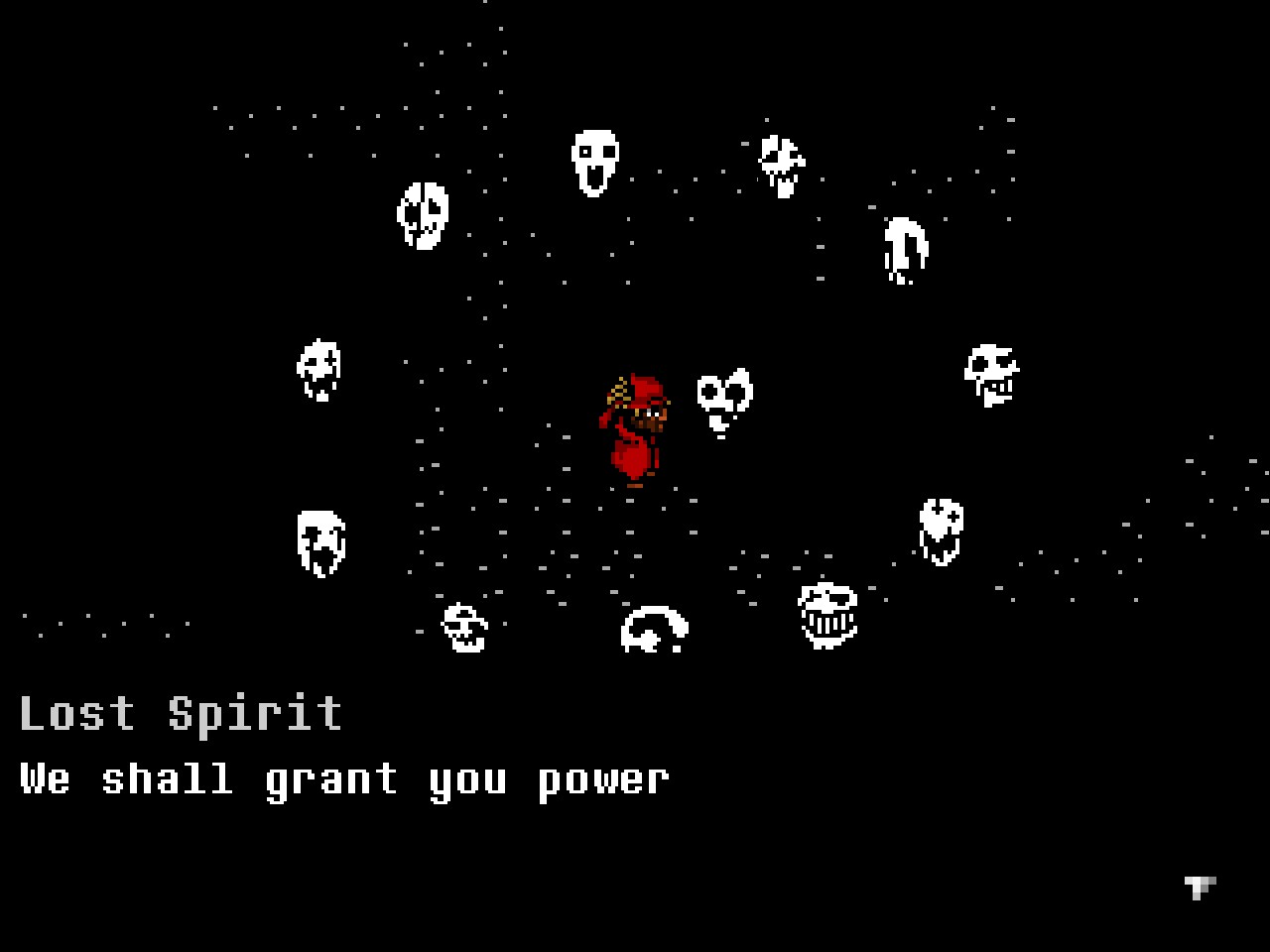
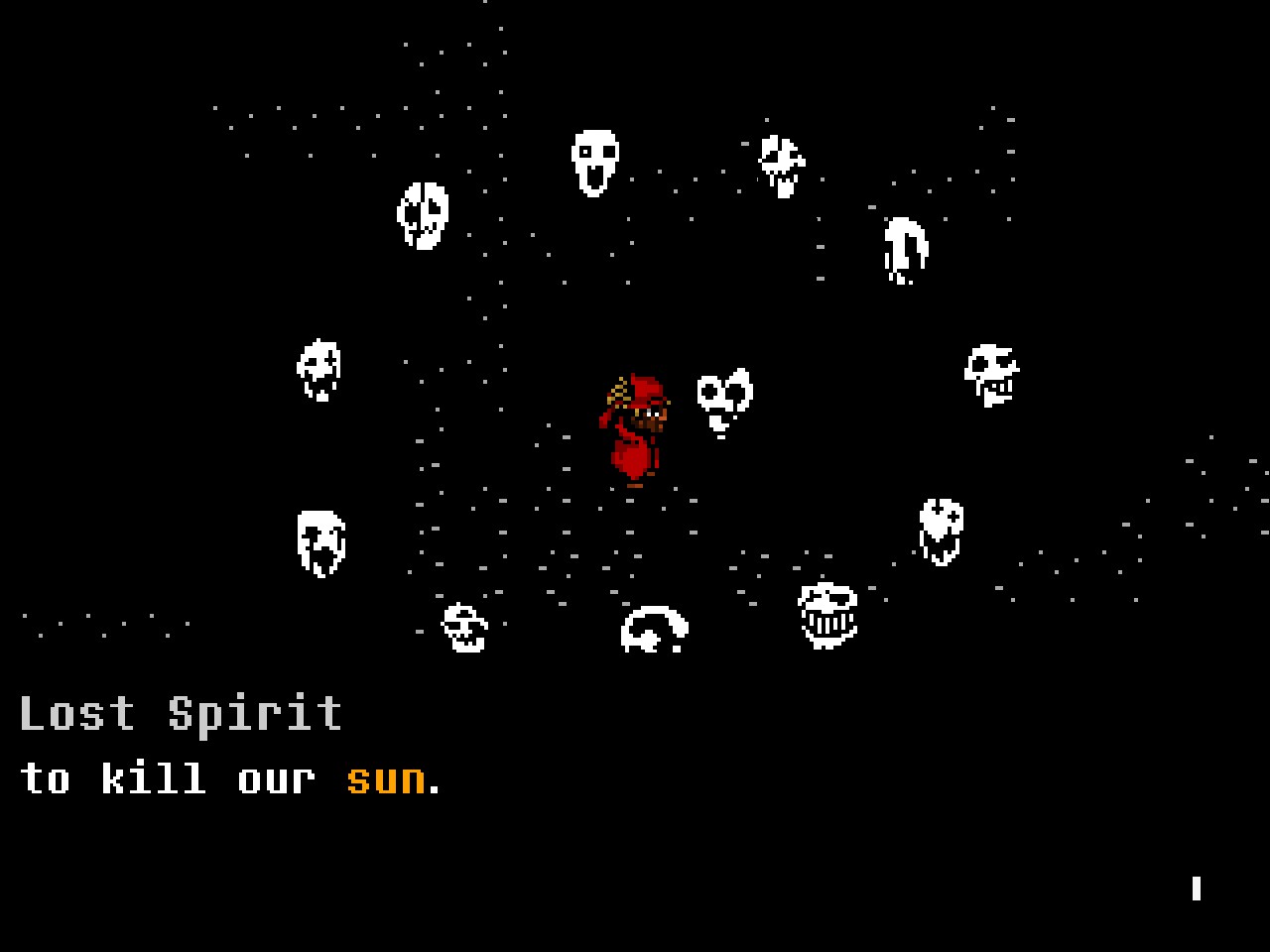
Except it's not you. Wrong, idiot! It's the sun.
"What?" you are probably saying right now. I know it's what I said.
The sun doesn't appear or even get mentioned in the game prior to this. Or, well, it does, but I managed to miss it.
Do you remember the rabbit I mentioned 5000 words ago? The one you can find in a few places, but can't interact with because it runs off immediately?
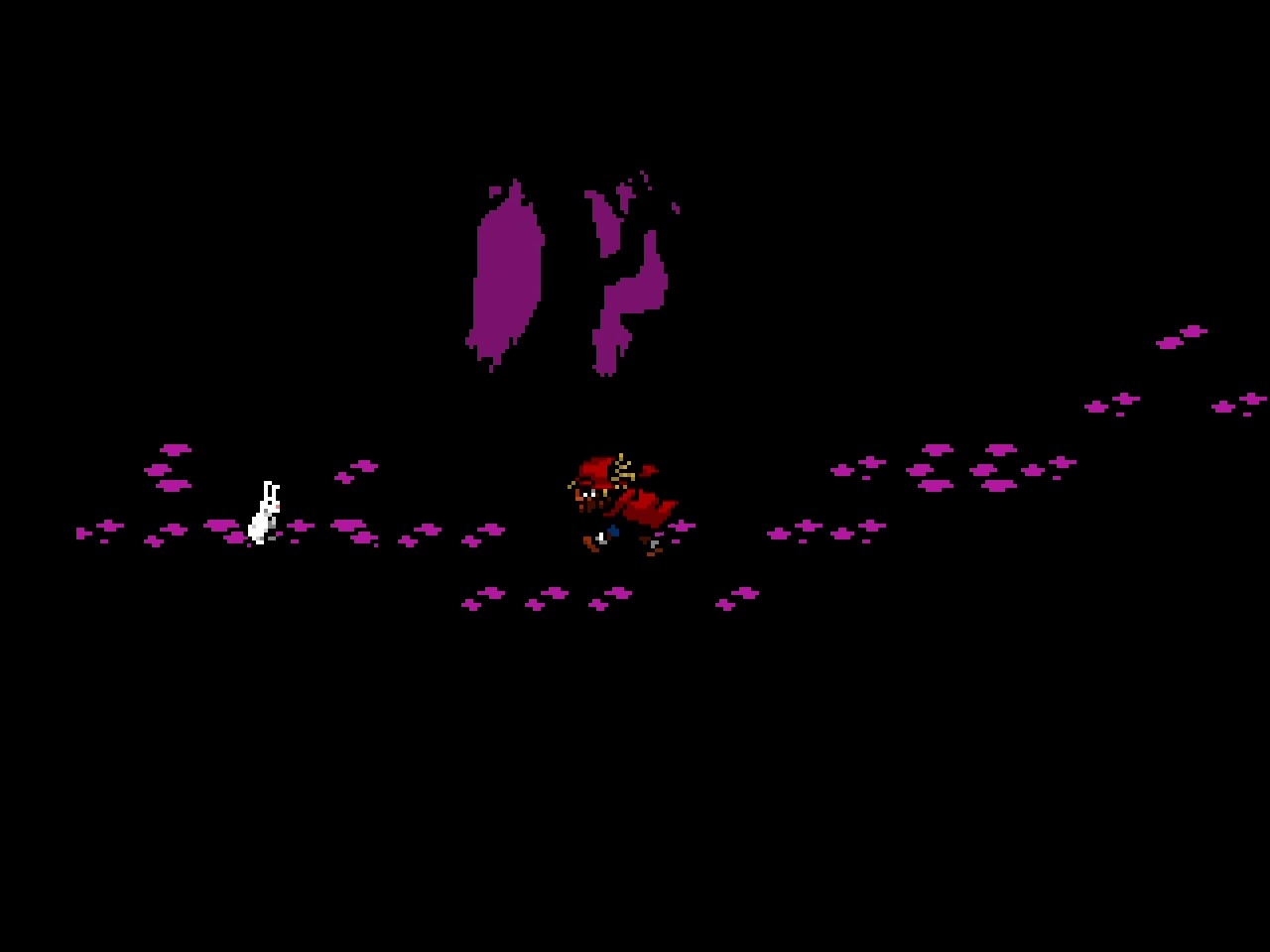
Well, it turns out in each room where you can spot it, you can backtrack after seeing it, and from a certain spot in that room, spot a white point of light in the otherwise black sky.
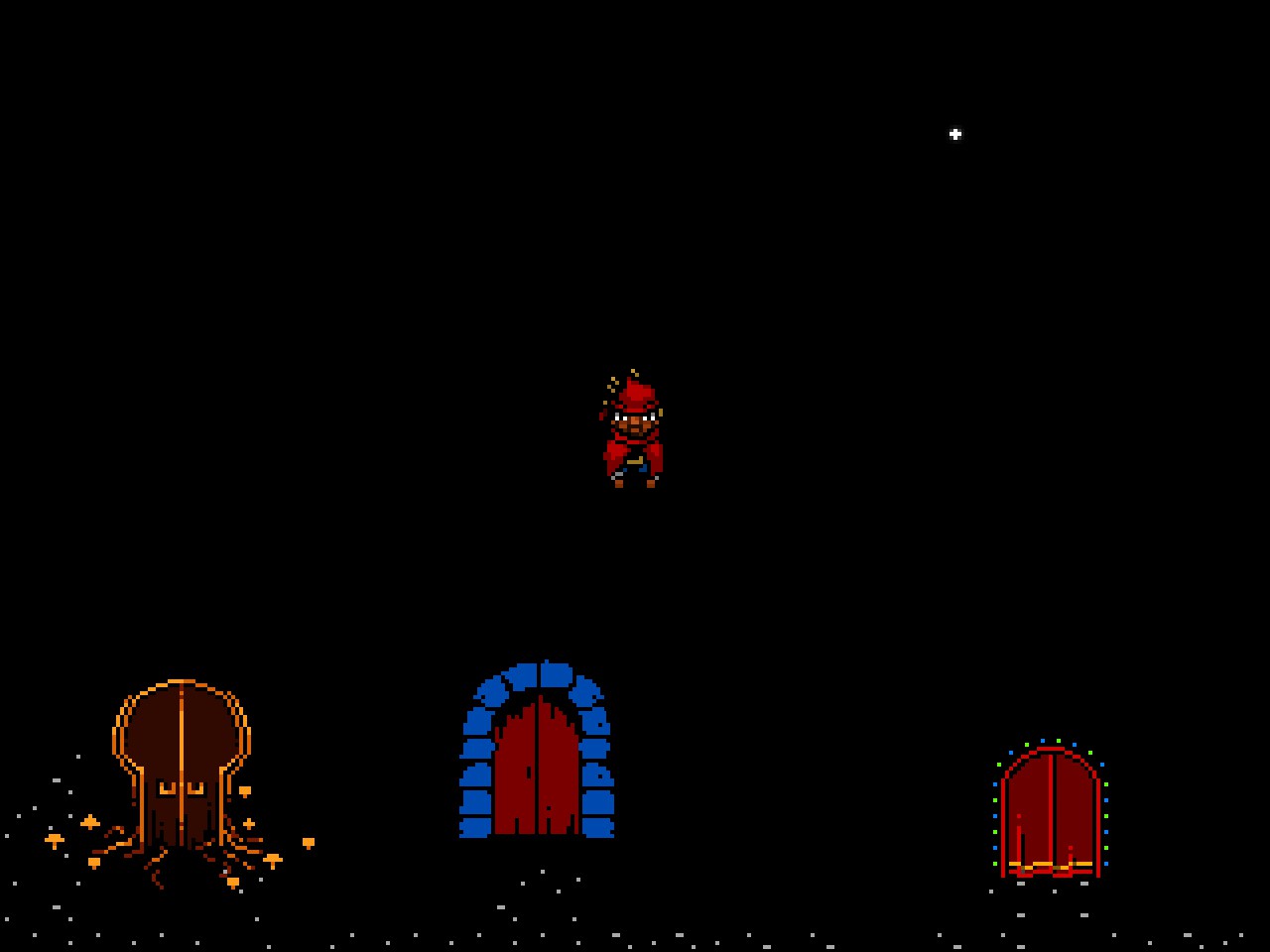
That's it. That's the build-up. You sometimes see a rabbit and sometimes seeing the rabbit makes a white dot appear somewhere in that map area.
I really need to harp on this. You spend all of Act 2 with this soul countdown looming over you, building up towards a final, climatic battle, and it turns out it's... fighting... the Sun? Which was represented by... a rabbit? For some reason? The Sun is a rabbit?
This is what I mean by tremendous climaxes with absolutely no build-up. Why a rabbit? Why the Sun? If this is what the writers wanted, why not work in metaphors about light or sunlight or dawns or dusks or sunsets or characters looking to the sky and seeing the Sun or warmth or missing the Sun or "hope running away from you" and hope being represented by the Sun which doesn't show up in the sky anymore or anything anything anything about the Sun??
It gave me nothing so much as an impression that they wrote the script in one pass, improving in whatever felt "cool" in the moment, without going back and actually developing any of their ideas.
I imagine it sounds unfair of me to keep insisting that the game feels like the script was improvised instead of planned out. Here's the thing: it feels that way because it's true. The devs admitted as much, in this IGN interview.
The story, he says, was largely improvised as he and Roca went along, for instance. "We just tried to create interesting scenes with the hope that we’d find the overarching story along the way."
Aughhhhhhhhhhhhhhhhhh
Listen, "going where the story takes you" is fantastic for a first pass. Definitely better to give your ideas a chance to develop naturally without you trying to impose a Message right from the very beginning. I'm all for favoring exploration over trying to be Clever and Deep right off the bat.
But it kills me to think about how much time, effort and love must have gone into Everhood, only for the writers to just not bother in some regards. There are so many places where it feels like they hit what could've been an incredible emotional beat, but just did not put in the groundwork to really make that beat the best it could be.
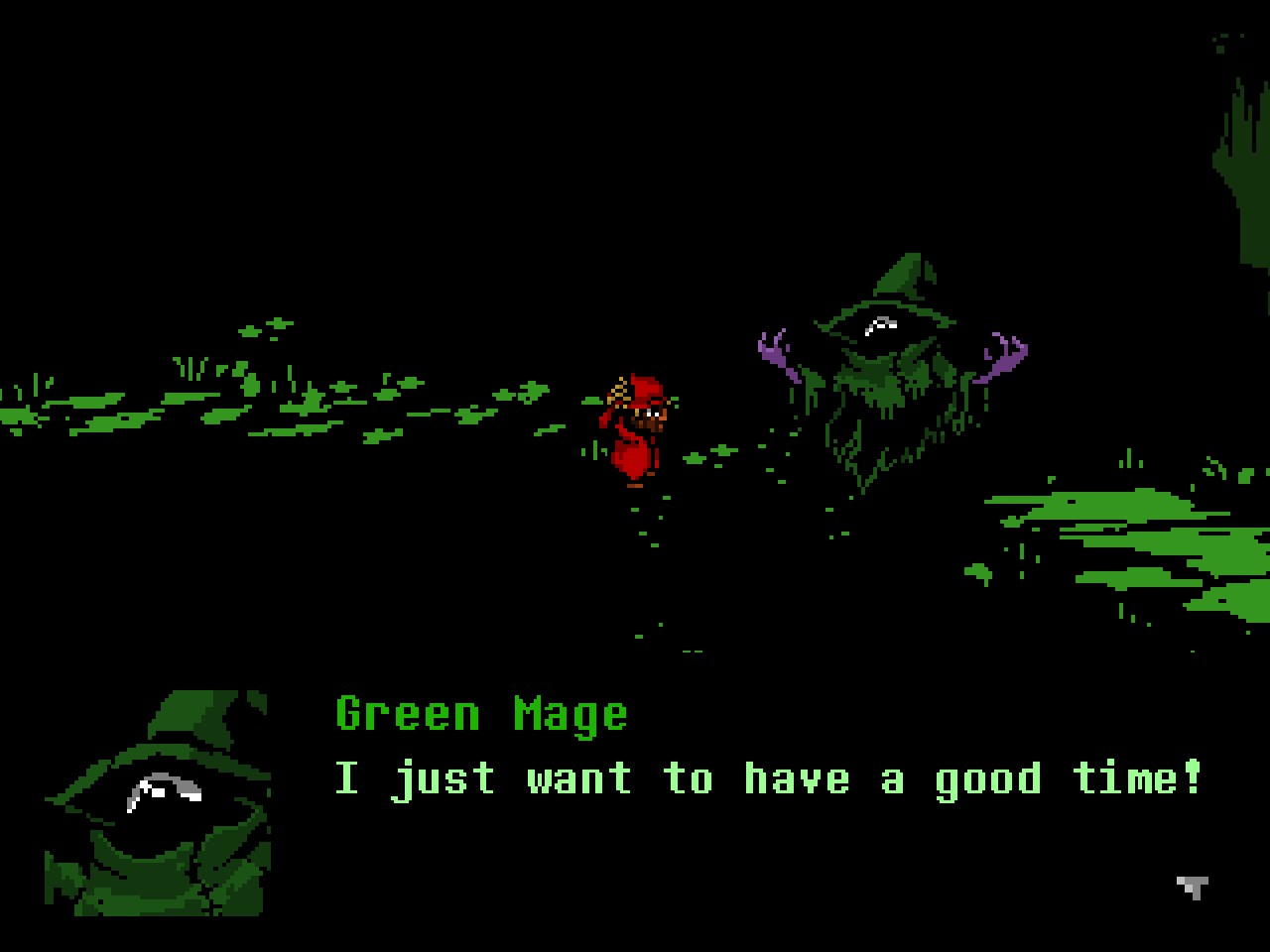
This is why I've been saying that a second or third pass would've done so much for the game and its muddled throughlines. I think what people love about it are these incredible moments, and all I can think about is how much better they could've been if they'd actually been established.
So instead of what feels like a cohesive, thematically rich story you get... "interesting scenes." Okay time to fight THE SUN, I guess.
The Sun battle is exceedingly cool and supremely intense. The camera zooms back, notes rocket towards you from the ever-growing expanse of the sun's surface, there's a temperature meter that rises cataclysmically; it's fantastic and fun. I just wish it hadn't come out of absolutely nowhere.
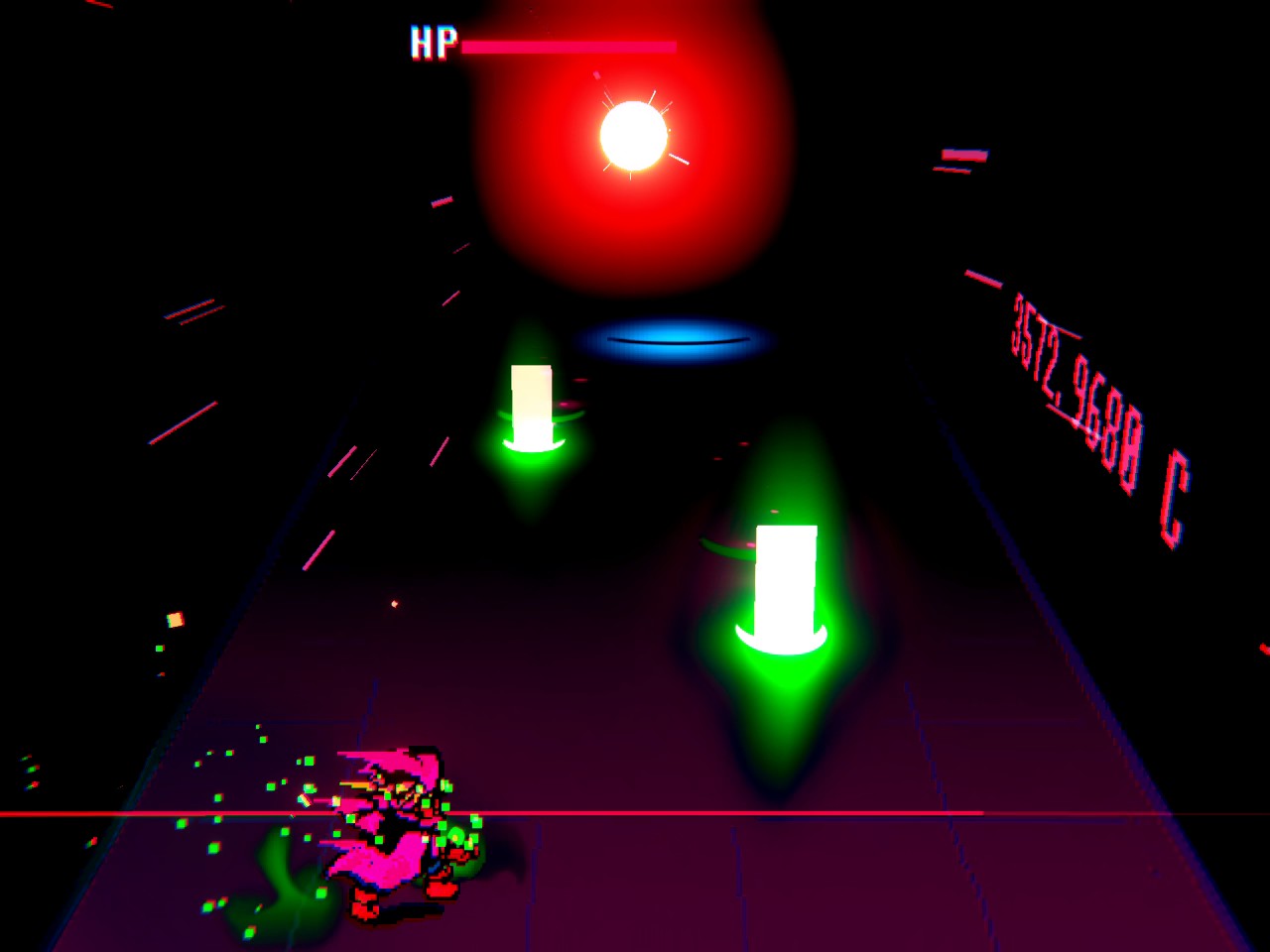
You kill the sun and, hooray, everyone is freed from their tormented existence!! Hooray!!
But also the Mages are mad at you!! Since you killed them!! Oops!!
Yes, despite the game endlessly, incessantly insisting that what you did for the Mages was an unambiguous good, the Mages still get a chance to beat you up because they "feel wronged" by you having killed them. I don't know whose side I'm on at this point, honestly.
And since the Mages are able to sustain their forms beyond death due to their Mage Powers, you now have to fight them! ALL OF THEM! AT ONCE!
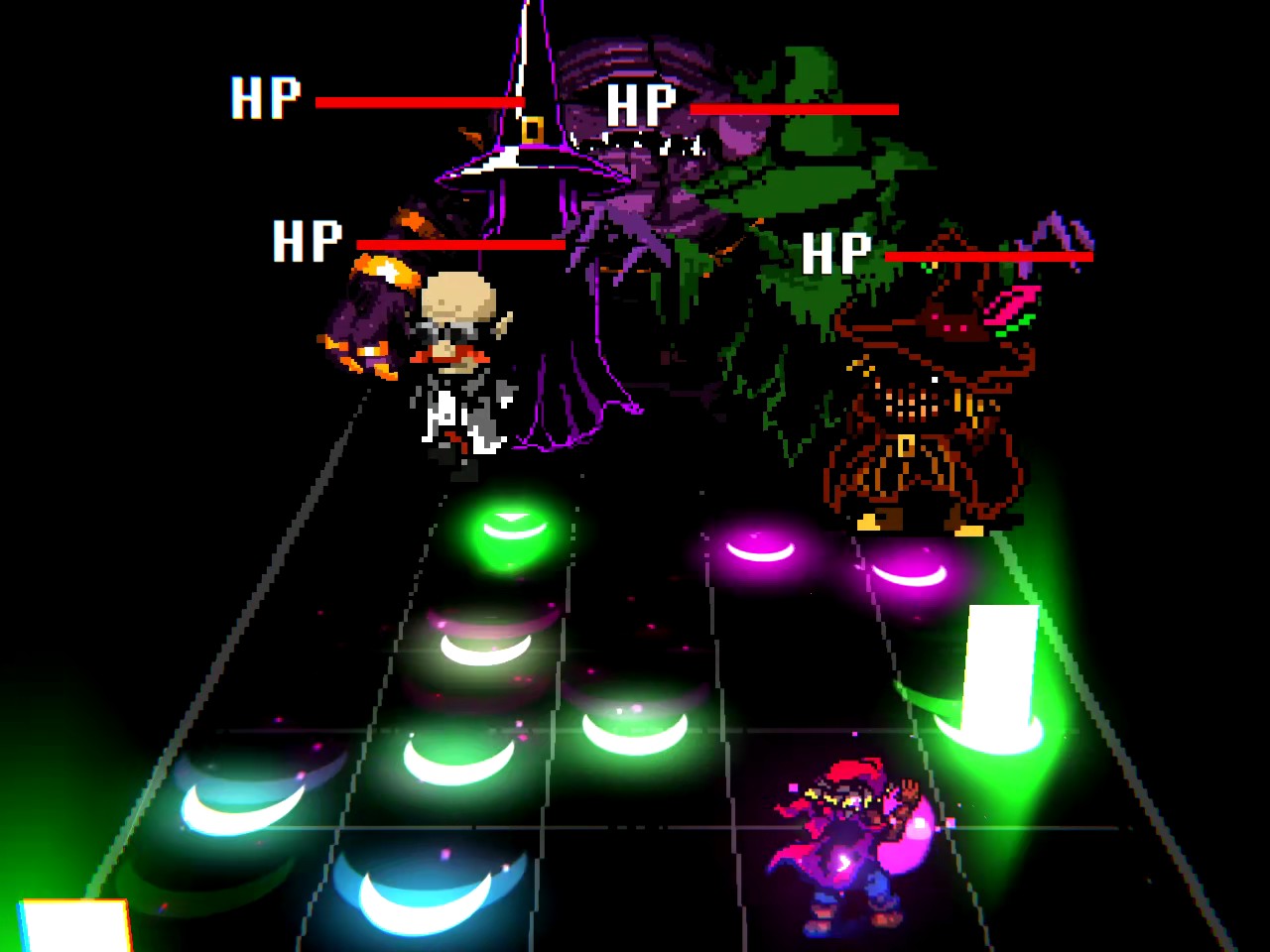
It's chaotic and amazing, and super appropriate as a climatic final-final battle. Here, the "meaningless" nature of the fight works. There is no "point" to the battle, and there doesn't need to be: this is simply you facing down the wrath you've incurred. You, in a group battle against the mages, facing impossible odds.
AND THEN RASTA BEAST SHOWS UP OUT OF NOWHERE TO FIGHT YOU INSTEAD
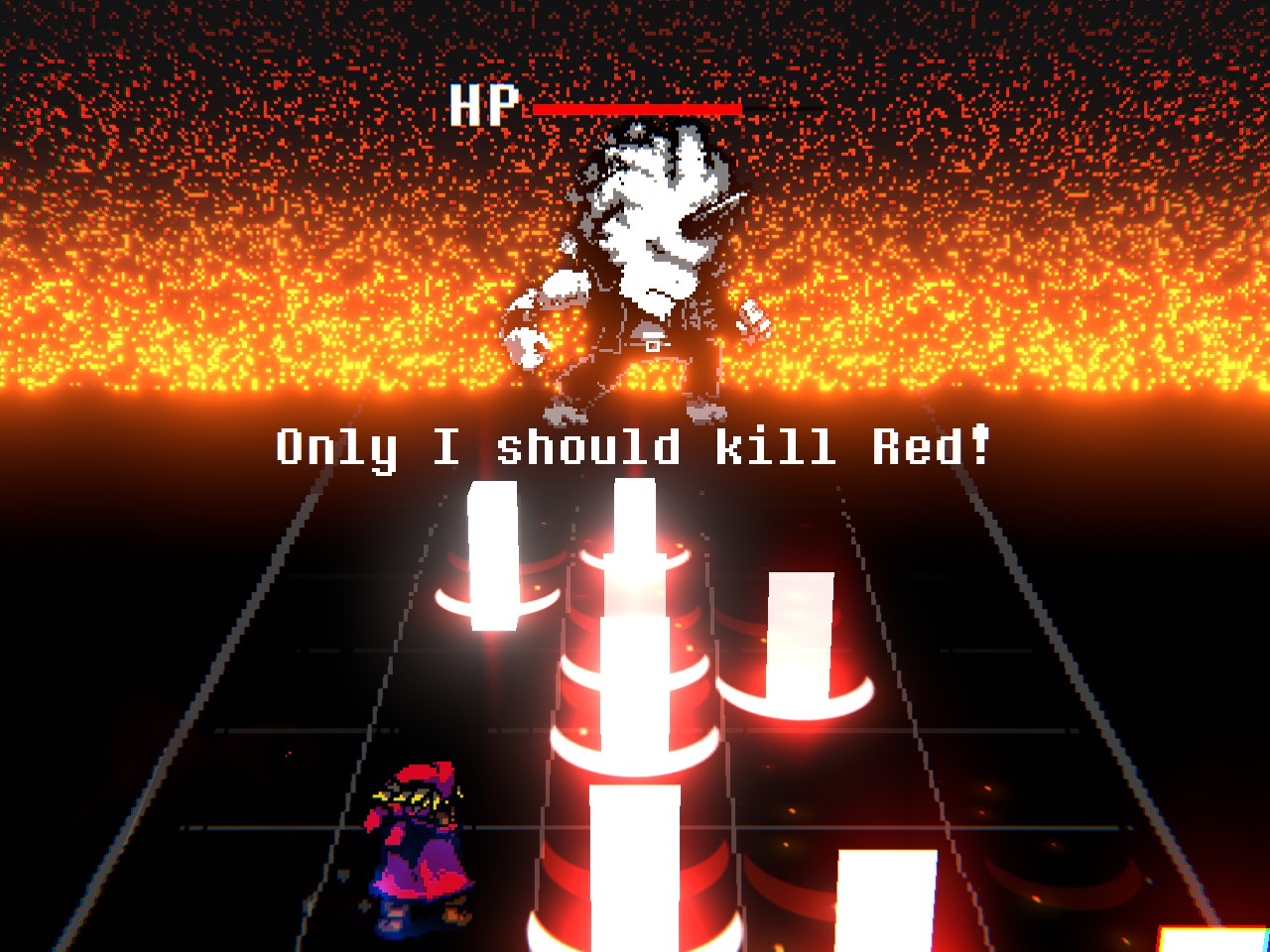
RASTA BEAST SHOVES ALL THE DICKHEAD MAGES ASIDE SO THEY CAN 1-V-1 YOU IN THE SPACE BETWEEN LIFE AND DEATH
This is given no explanation. The ONLY reason the Mages are able to keep fighting after their deaths is because of their Mage Powers and Soulbound Gems and whatnot, which Rasta Beast does not have. They're just some guy. And it's fucking badass. Through sheer force of Fuck You, Rasta Beast returns from beyond the end of existence just to punch your stupid murderous face in, you dumb asshole.
It is hands-down the coolest fucking moment in all of Everhood, oh my god, just absolutely brilliant. When I said this game had Good things about it, I was not just being polite. Rasta Beast, best character. What a perfect capstone for the final-final battle.
Your battle rages against Rasta Beast until --

Do you remember that pink spirit? The one I mentioned 7000 words ago, who showed up in the afterlife section amidst a bunch of abstract imagery? And who showed up to say two sentences during the Gold Pig battle? Well, they're back! They show up to stop the fight, chiding everyone who's attacking you, when all you did was help them.
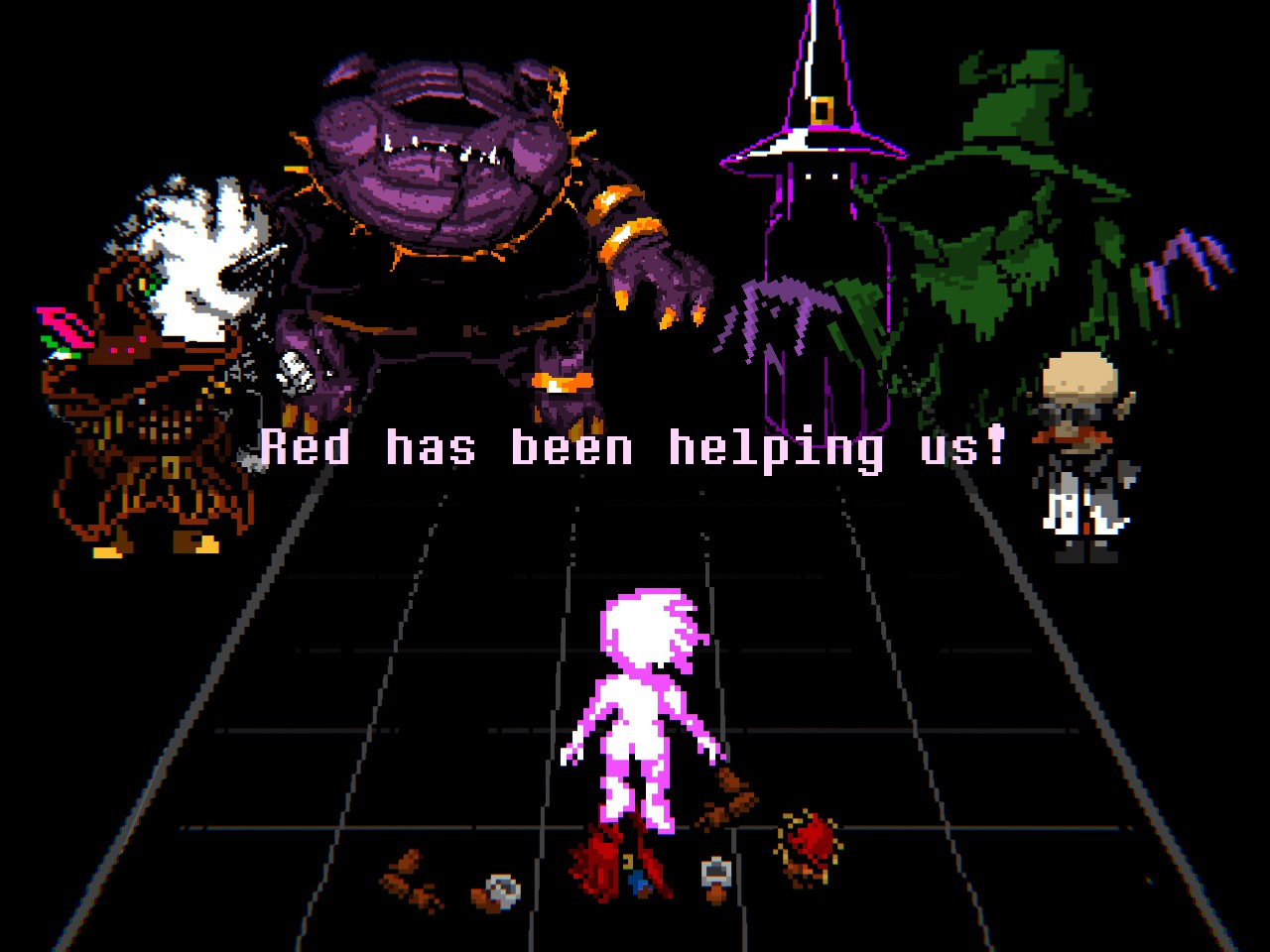
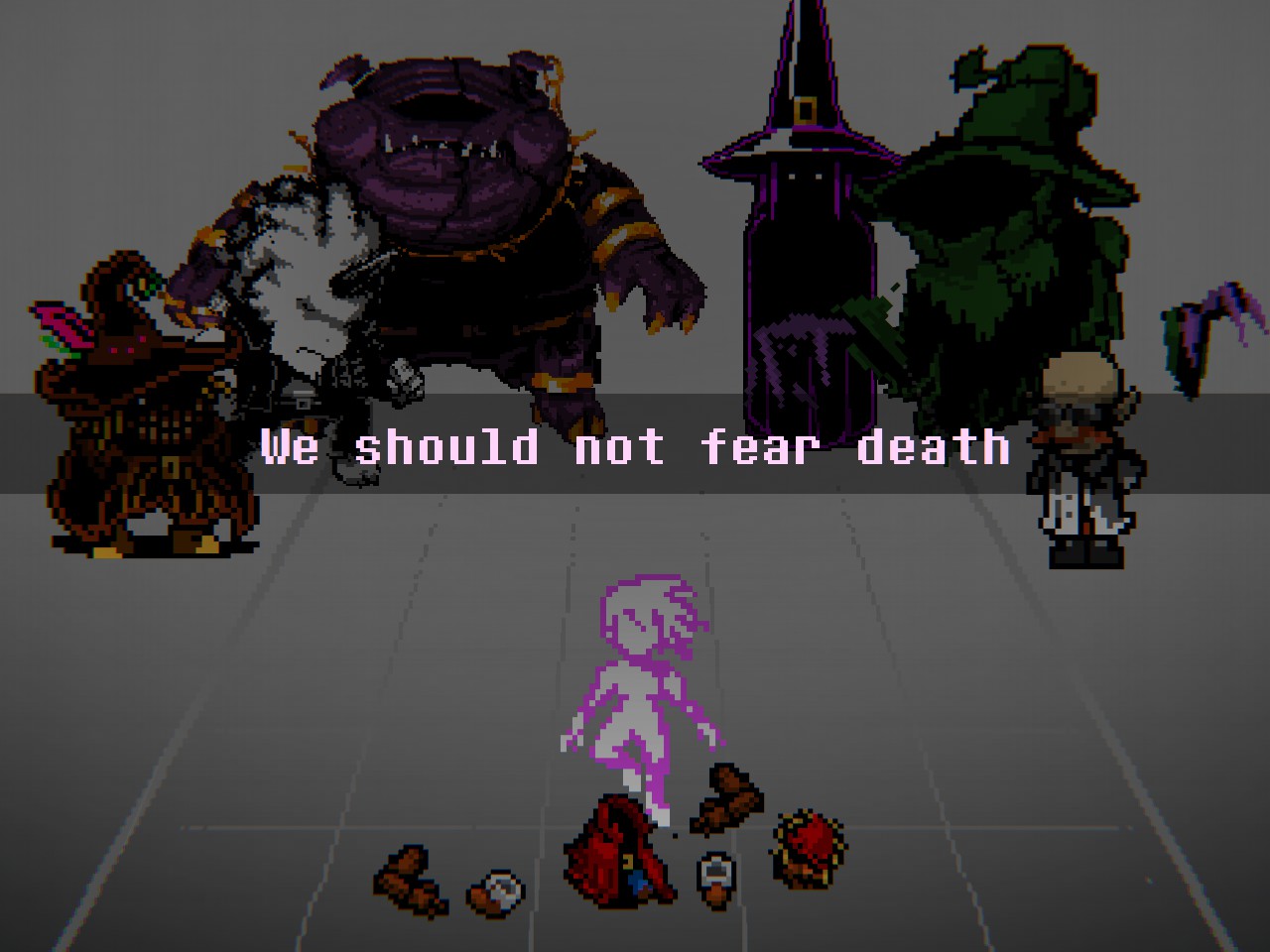
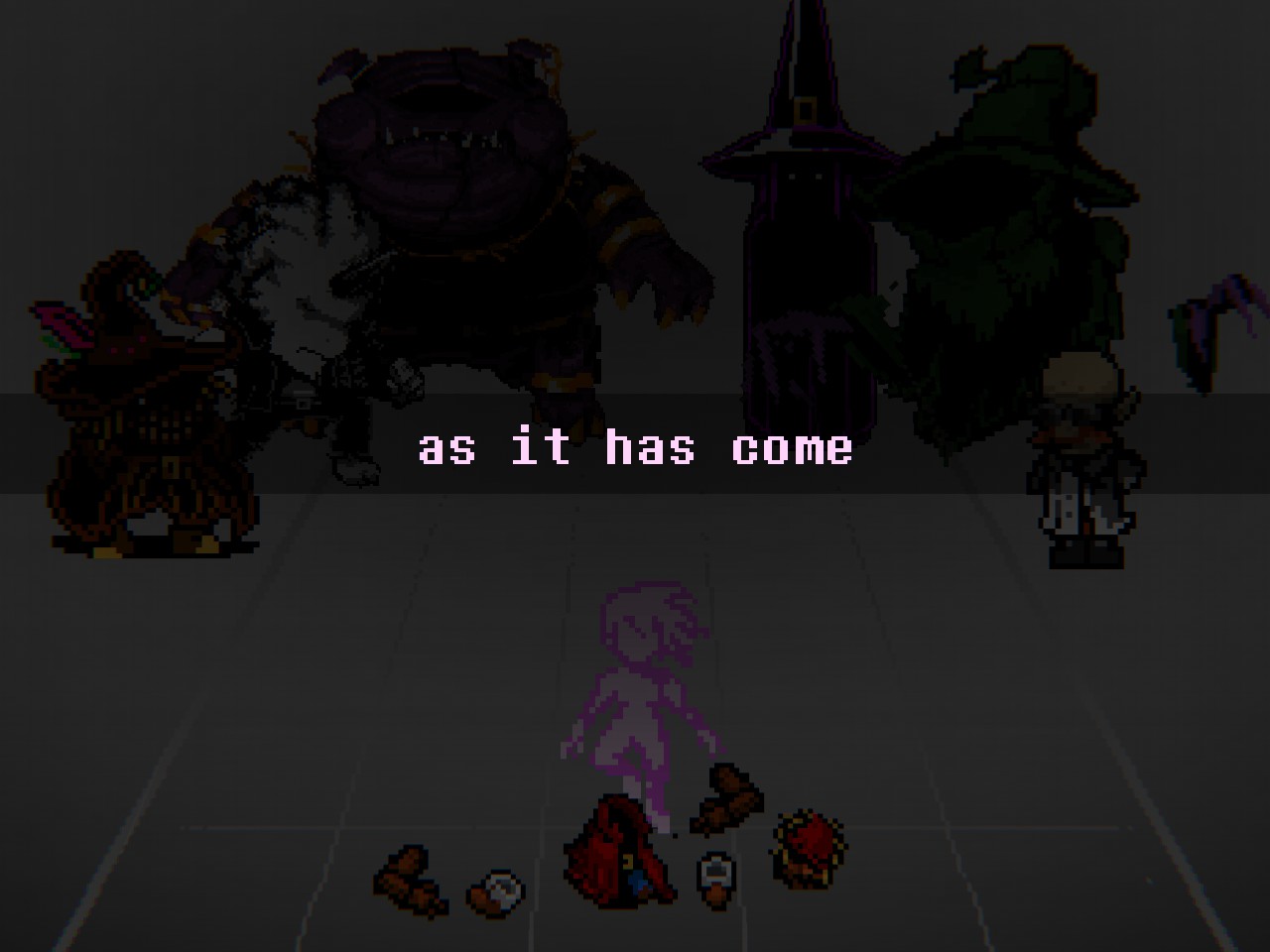
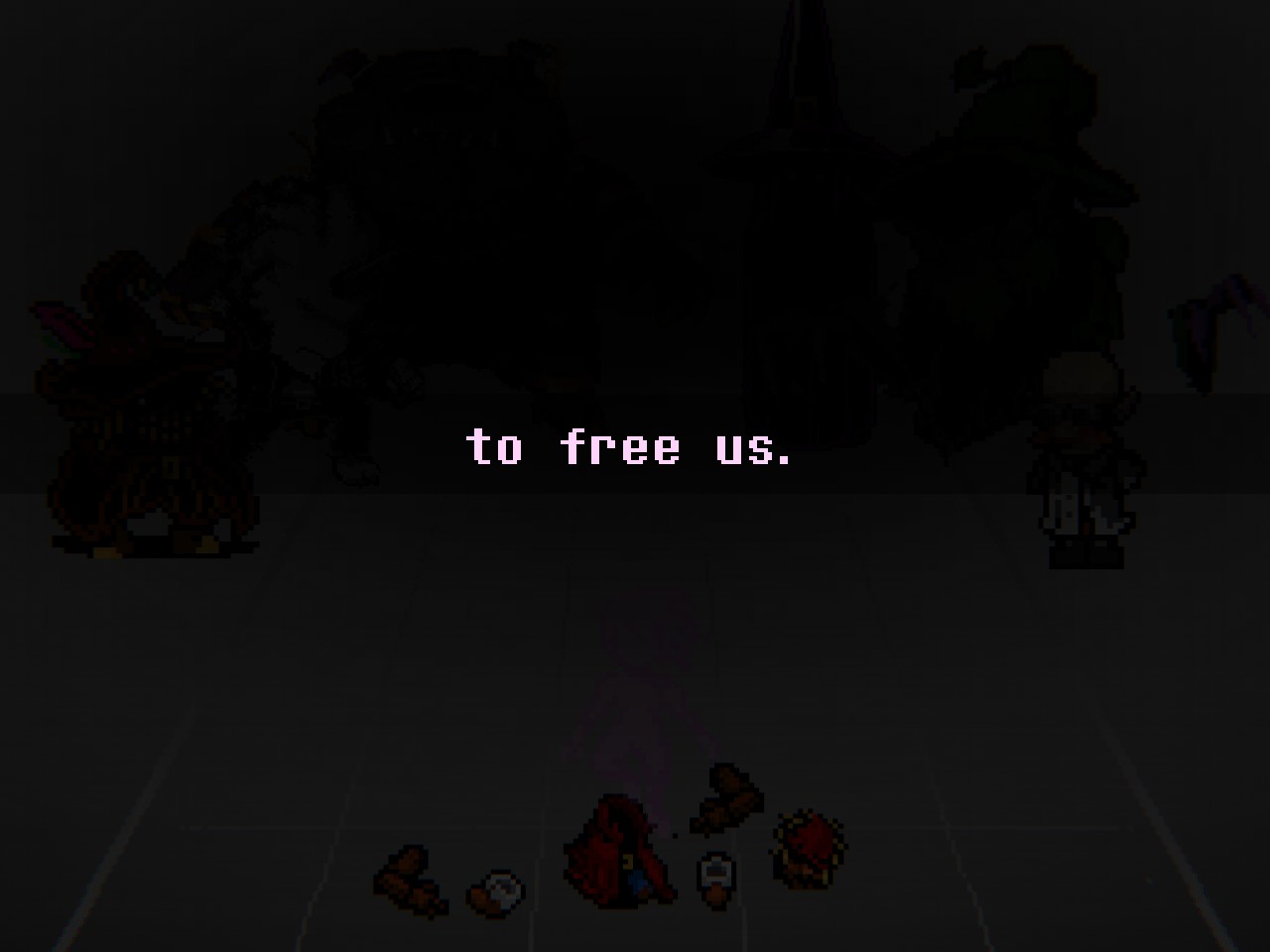
At this point, you might be saying, "What?" again.
I almost cheated and didn't mention them showing up during the Gold Pig battle, because I forgot all about it. I was only reminded of them showing up like that when I played Everhood a second time, specifically to write this essay. It's a potentially significant moment, but it doesn't connect to anything else at the time, so it's easy to forget.
This is a game with weird Aztec Dinosaurs representing the afterlife?/psychopomps?, hallucinogenic mushrooms, the Buddha showing up to cause screenbleed, the developers appearing as gnomes in their own game, and so on. One pink spirit floating around for 10 seconds is not going to leave a strong impression in a game that runs entirely on Vibes.
Regardless, having said a grand total of two lines in the story so far, now they're back, and stopping the fight. Also Red collapses into puppet parts once Pink shows up.
So, right. In the middle of the battle, Pink shows up and browbeats Rasta Beast and the Mages for taking their anger at being murdered out on you, when what you were doing was objectively helping them. The Mages, ashamed, stop fighting. The battle ends, and the game transitions back to walkabout sprites.
Pink turns around and asks you how you were capable of doing such a cruel thing as killing them all, and how monstrous you are for doing so.
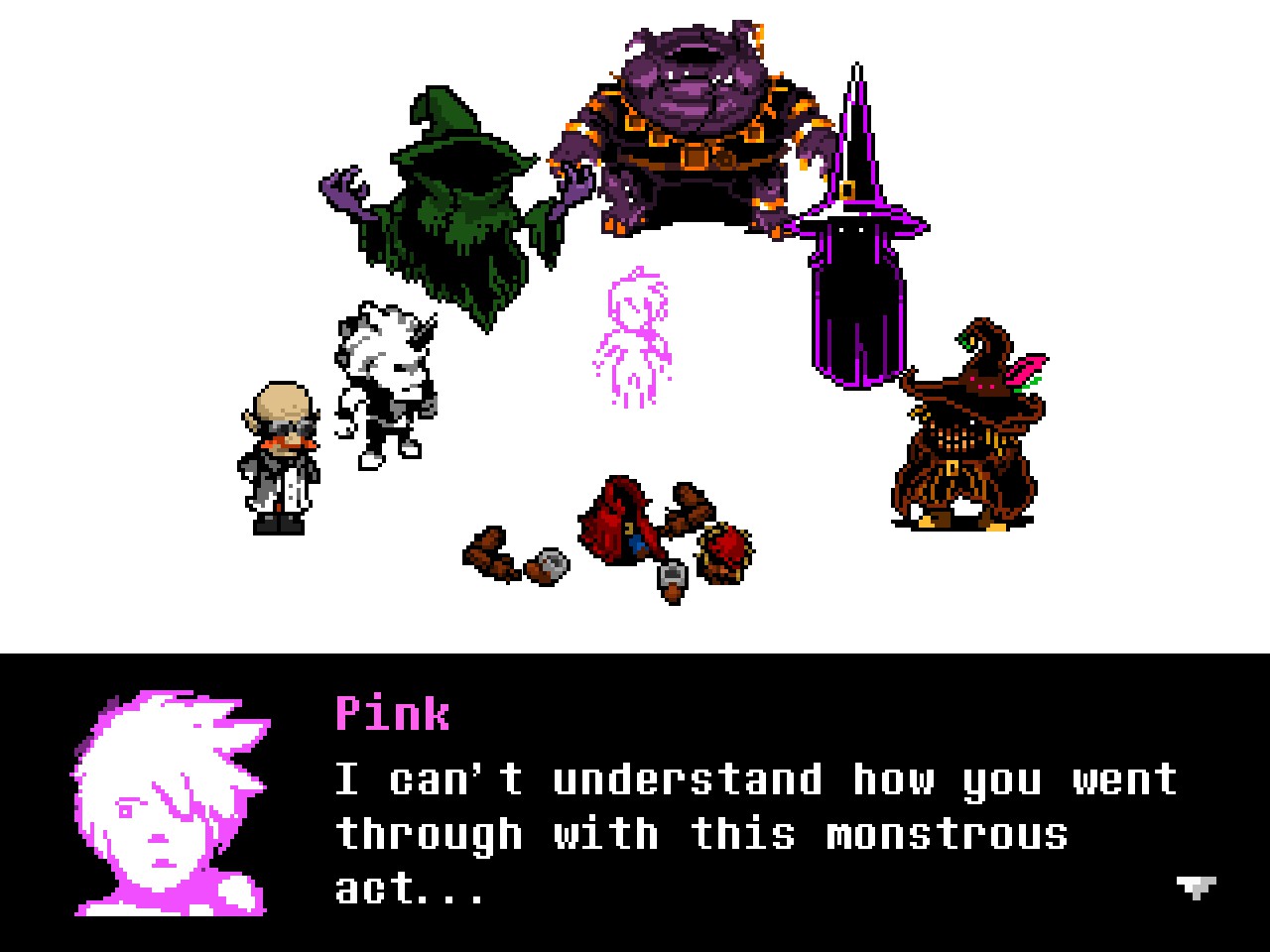
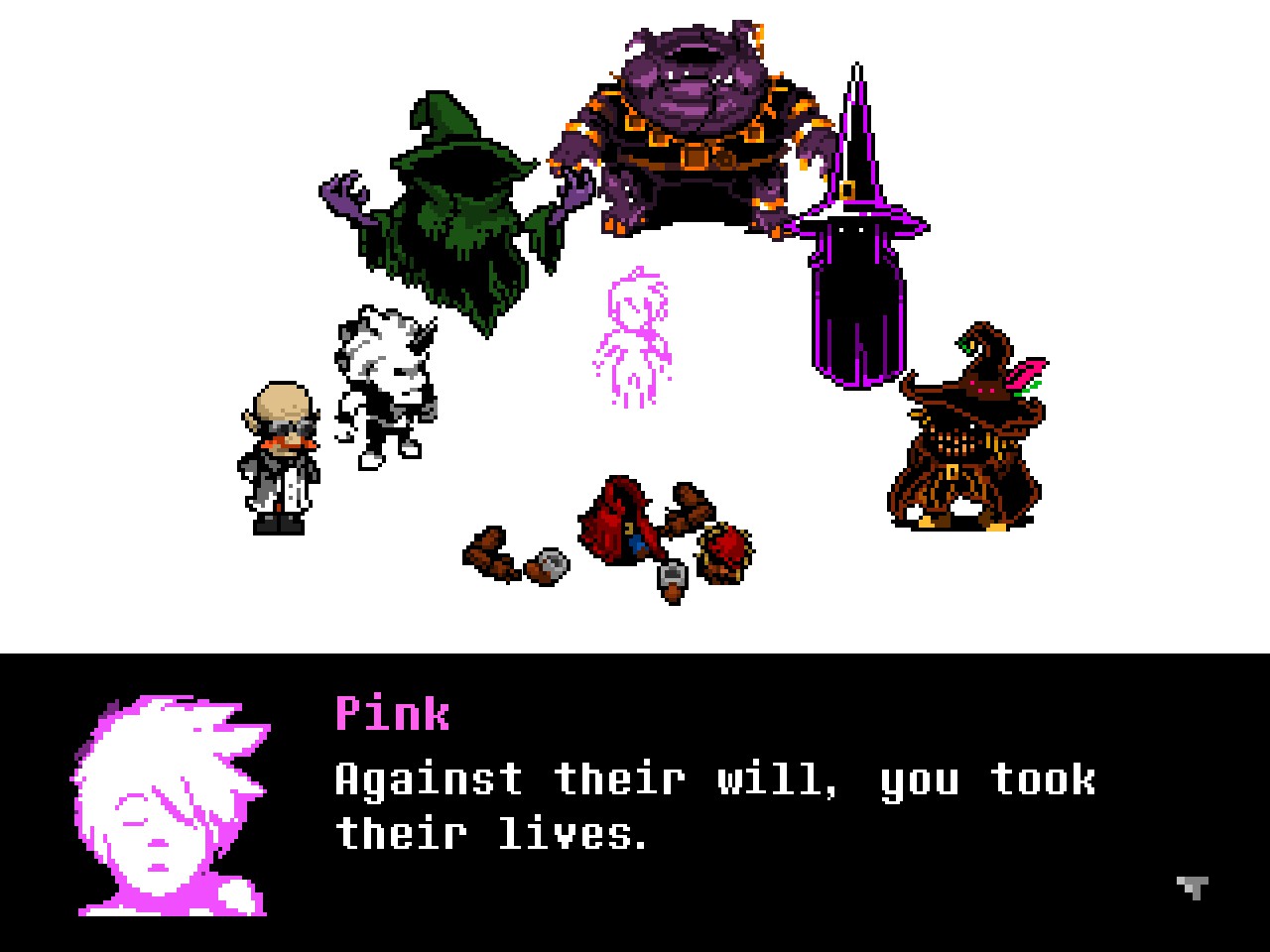
What?
Even writing that, I'm saying, "What?"
I genuinely don't know what to make of this. Pink goes from shouting down the Mages for attacking you after you helped them, to immediately admonishing you for being monstrous.
I can take a guess? Maybe they wanted Pink to refer to how difficult it must have FELT to kill everyone? Like... okay, I can imagine saying to a surgeon, "I don't know how you can handle slicing into someone else's flesh, even knowing you're saving their life. It sounds so horrible to have to do." But that's not how the dialogue comes across. You wouldn't call a surgeon "monstrous" for doing what they do.
I have a second theory, but it's less generous, so I'll save it for later.
So Pink seems horrified with the actions they were just praising, which is when the other Mages drop the big reveal, the huge twist, the mindbending secret the game has been hiding from you all this time, the massive payoff that recontextualizes everything you've been through:
Red. and. Pink. Are. The Same. Character.
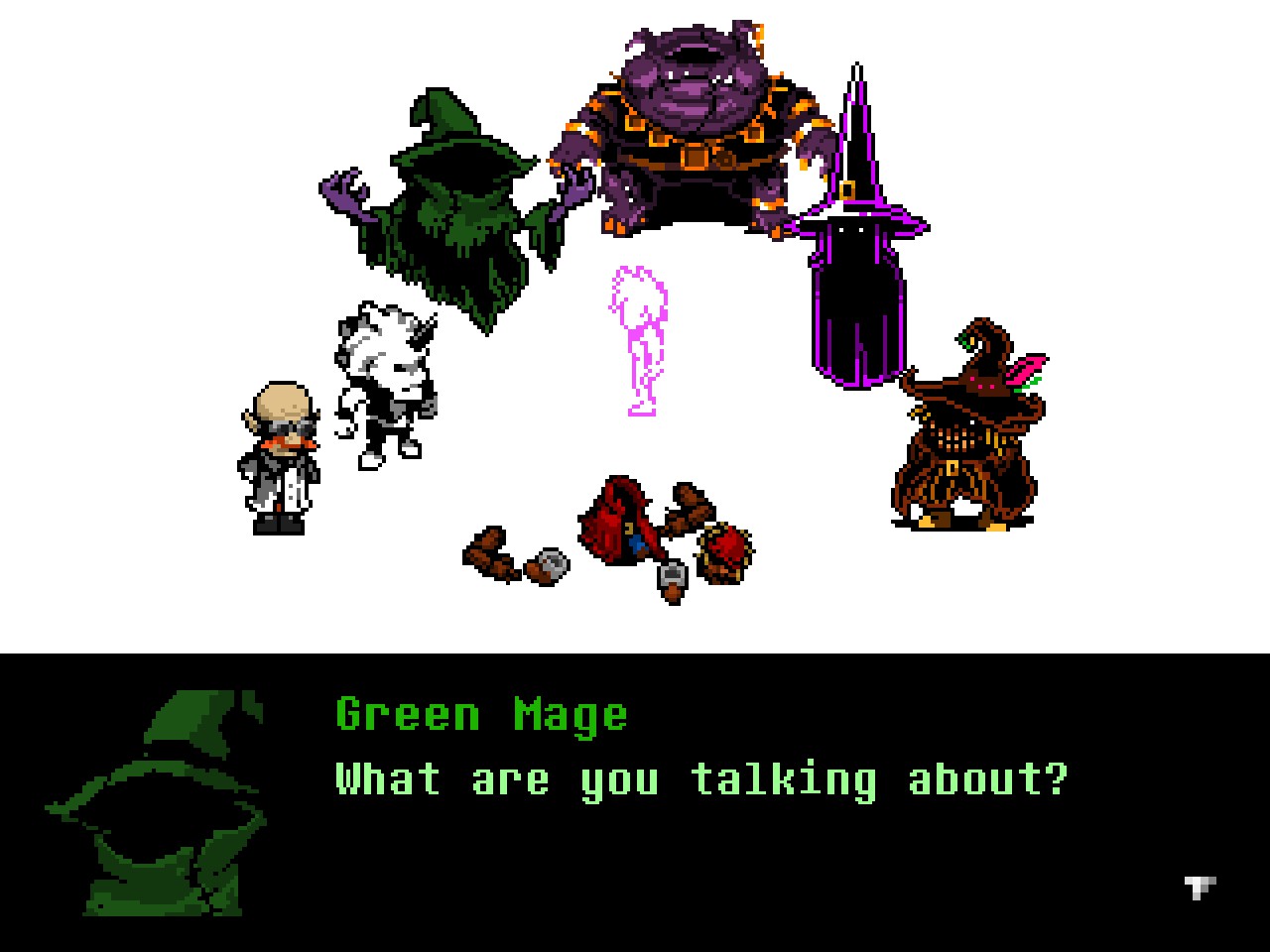
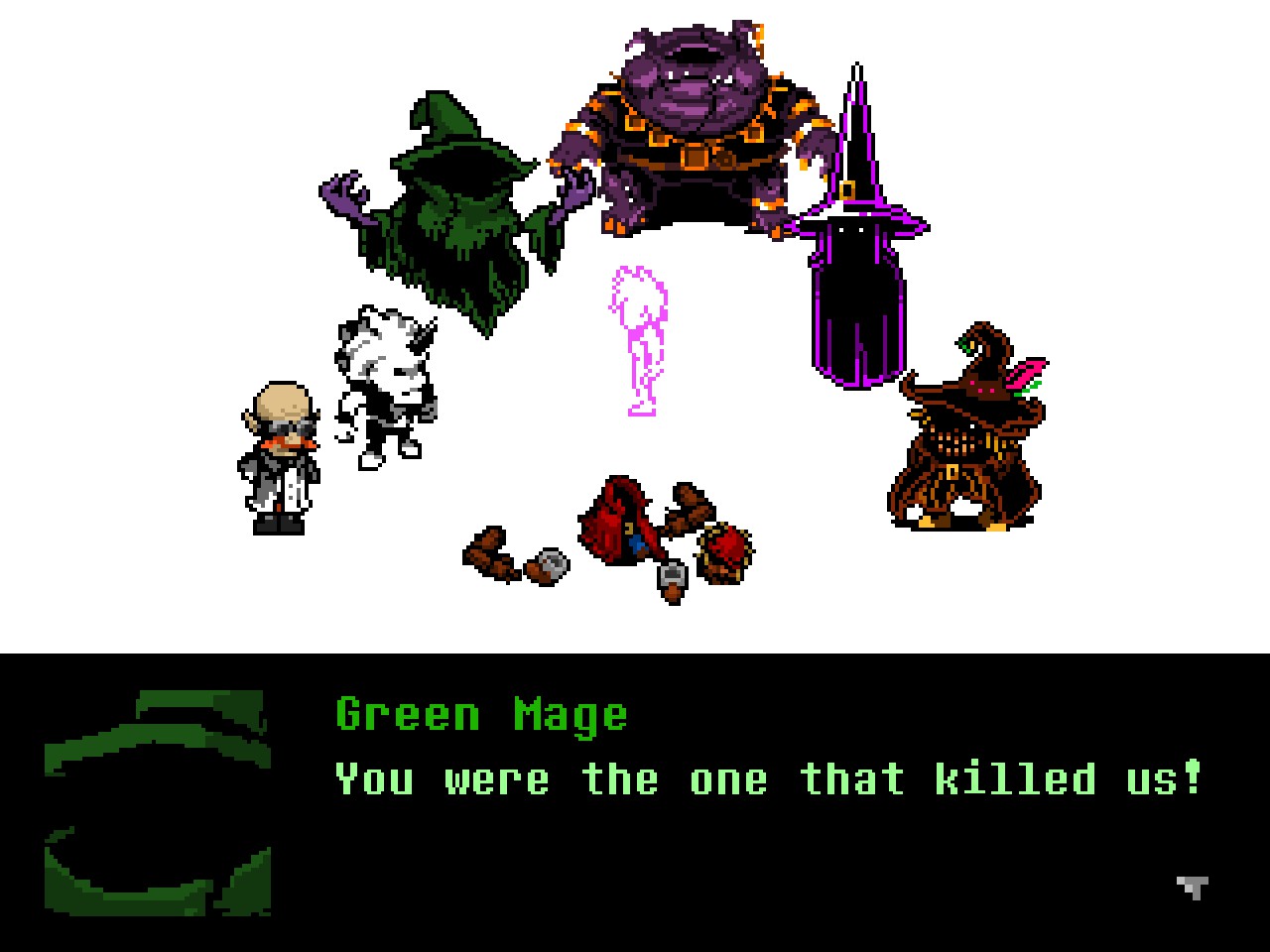
What.
You... can't do a big shocking "these two characters are the same!!" moment when one character is a voiceless, blank-slate player vehicle, and the other wasn't so much a character as a fancy visual flourish. Pink spends nearly all of Act 1 no more relevant than the wacky Aztec Dinosaur-Hand Skeleton they show up alongside, and then isn't present for Act 2.
I hope you see what I mean by now, when I say things that got no build-up receive unearned "massive climax" scenes. A twist with no build-up is nothing! Nothing's changed for me!
With that in mind, I think the "Pink = Red" reveal might shed some light on why Pink goes from defending you in the battle to demonizing you in the immediate aftermath. I think what happened was that the writers needed Pink to stop the fight, which meant Pink needed to remind the Mages that you were trying to help them. But they also needed Pink to talk about how different they are from Red to prompt the "but you're the same character!" reveal. That means Pink needs to distance themself from your actions, and the easiest way to do that is by condemning them.
So: Pink concludes one plot beat by defending you, then starts the next one by condemning you. This makes Pink inconsistent from one sentence to the next, but the devs don't seem to care about that. They'll write whatever they need to make the current scene flow, because that's all that matters to them.


I hope that's not the case, because it's not great. But I don't have a better explanation. This contradictory juxtaposition gave me whiplash. I don't understand how it made it into the final game. I don't understand how the devs didn't care to find a better bridge between these two beats.
So the explanation for the Pink/Red thing is that Pink loved being nice and Not Killing Everyone, but sometimes Pink would go Crazy, and end up going on horrible rampages where they would try to Kill Everyone. So to help Pink with their Killing Everyone problem, Professor Orange built Pink a doll body, the latest iteration of that doll body being Red. The doll bodies could be disassembled to prevent them from Killing Everyone, solving the problem once and for all.
Except the dolls would end up Killing Everyone anyway, over and over, causing the population to dwindle over the tens of thousands of cycles it must have taken. This process persisted over countless eons, reducing a population of millions down to 30, which is where the game starts.
Oh, except also, you haven't been playing as Red at all: "Red" got destroyed in the Incinerator, waaaaaaaaay back at the beginning of the game. Pink, distraught over the idea of being able to kill again, deluded themself into THINKING they still had the "Red" body. And also, somehow, this made everyone else see them as Red, I guess?? I don't know how this is supposed to work at all??
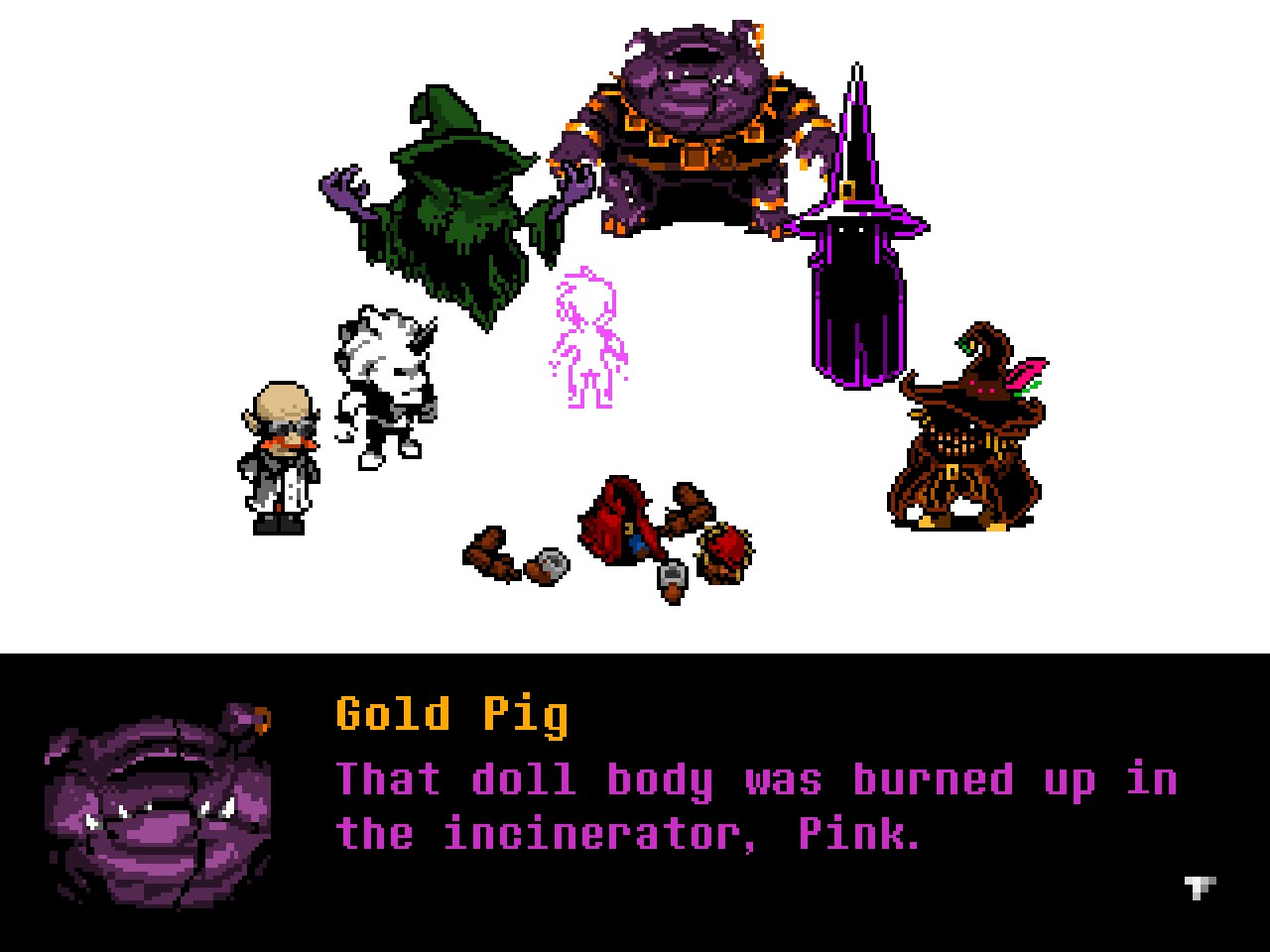
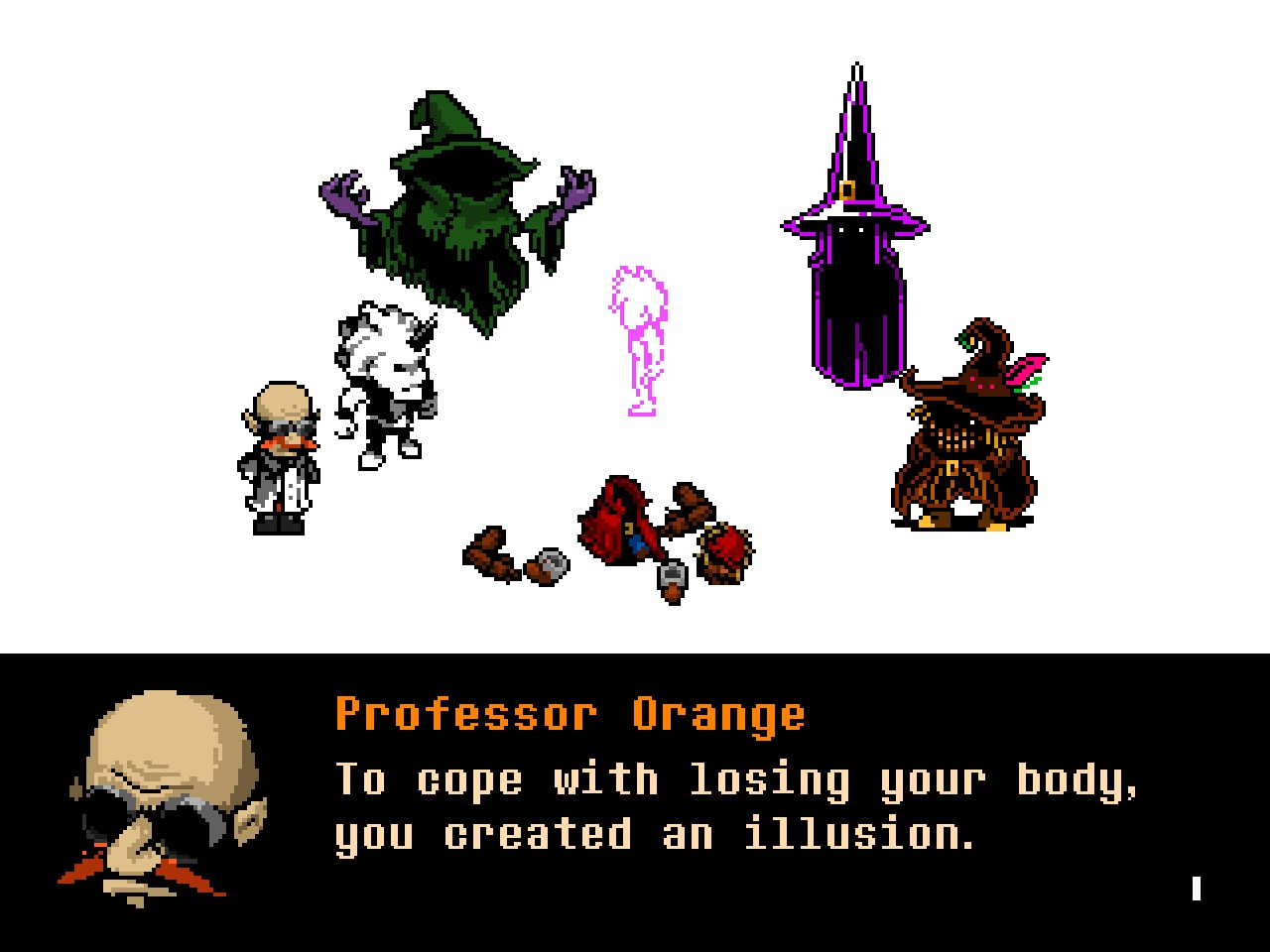
Okay. I have so many questions.
To begin with, why build a doll with two arms to begin with? If the whole point of the doll body is to limit Pink's ability to Kill Everyone, why did Professor Orange build a doll that can Kill Everyone? They mentioned looking for "a solution" for the Killing Everyone thing back when you battled them in Act 1, but wouldn't an obvious solution be to build a doll that can't Kill Everyone?
I get that Pink is possessing the doll, and not having a full range of motion or all your limbs would really suck. But it seems like Killing Everyone is traumatic for them, and after the first two or three or fifty thousand times they went into a Killing Everyone rampage, it might be time to build them a body that can be made permanently safe.
One of the Super Secret Endings you can get during a New Game+ sheds some light on this. In that ending, you accidentally walk into a second incinerator, which destroys your doll body (or I guess forces you to realize your doll body was already destroyed), leaving Pink behind. It's implied that this is how all your previous genocides ended, with Professor Orange building you a new doll body each time, hoping it would "fix" you.
This almost makes sense, except it doesn't. How does the Super Secret Ending work, when your doll body was already destroyed? Wouldn't the residents start to be wary of new dolls showing up to their stagnant existence, if every new doll eventually goes genocidal? Why did Professor Orange build a doll with two arms every single time?
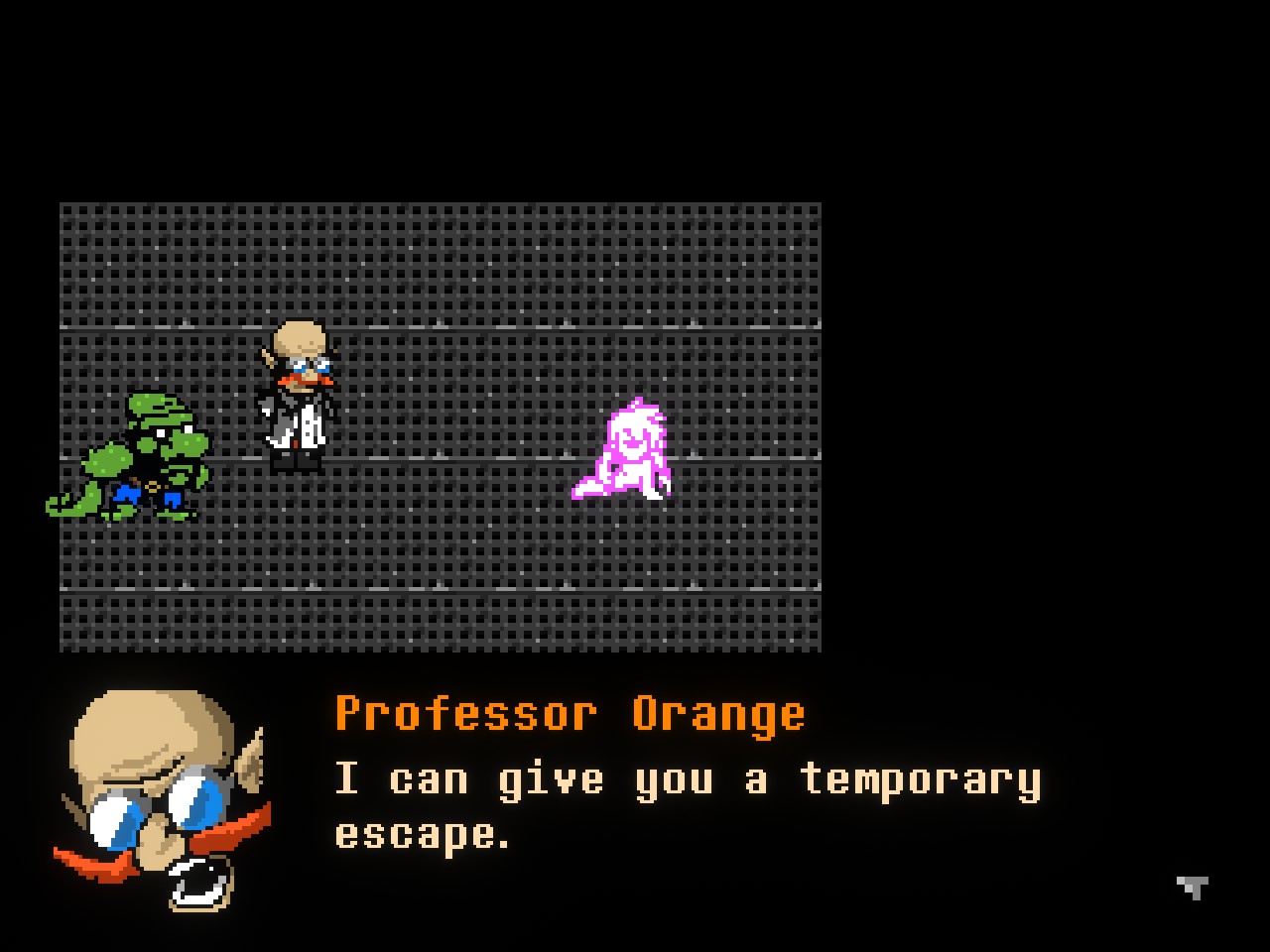

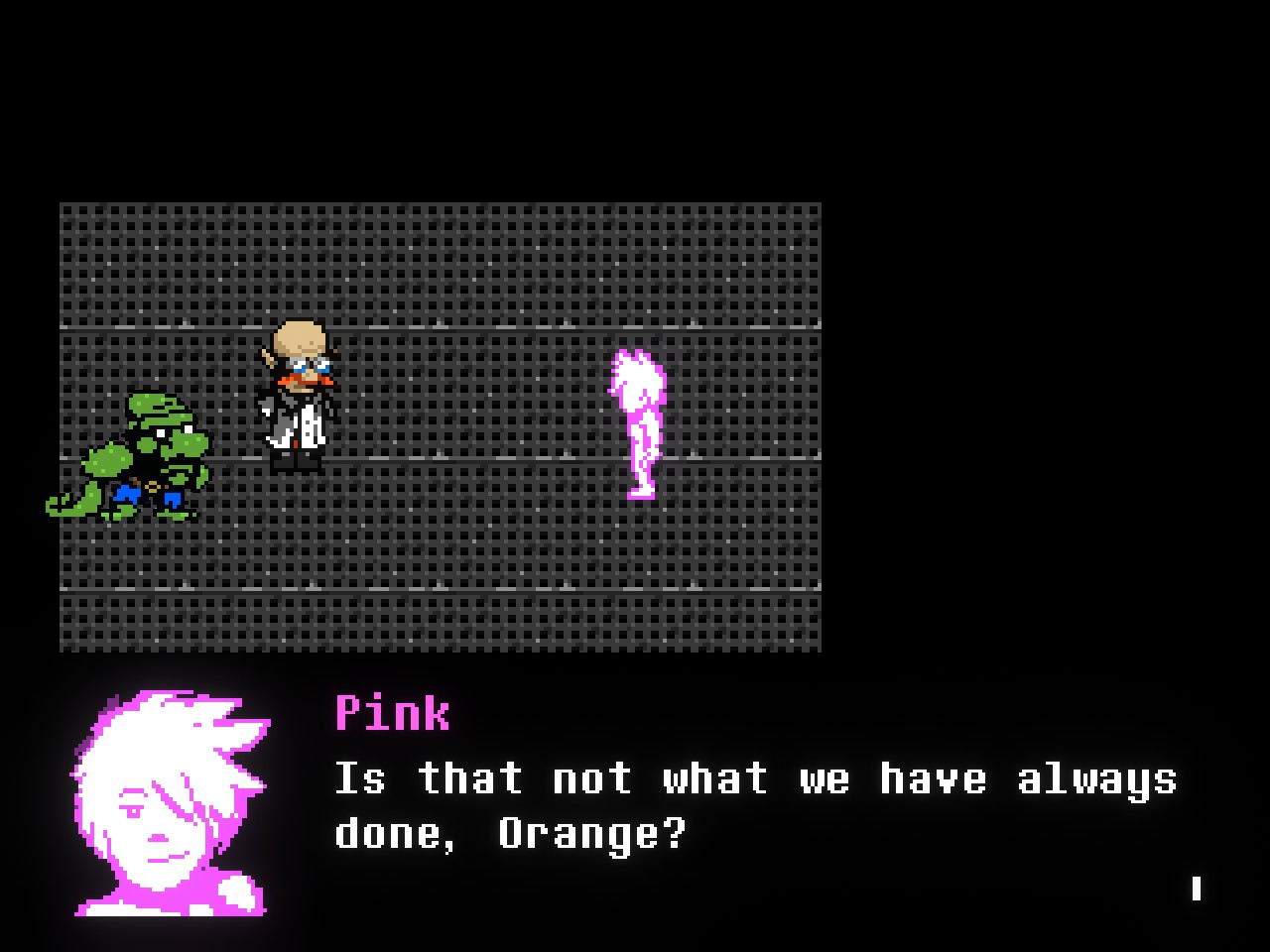
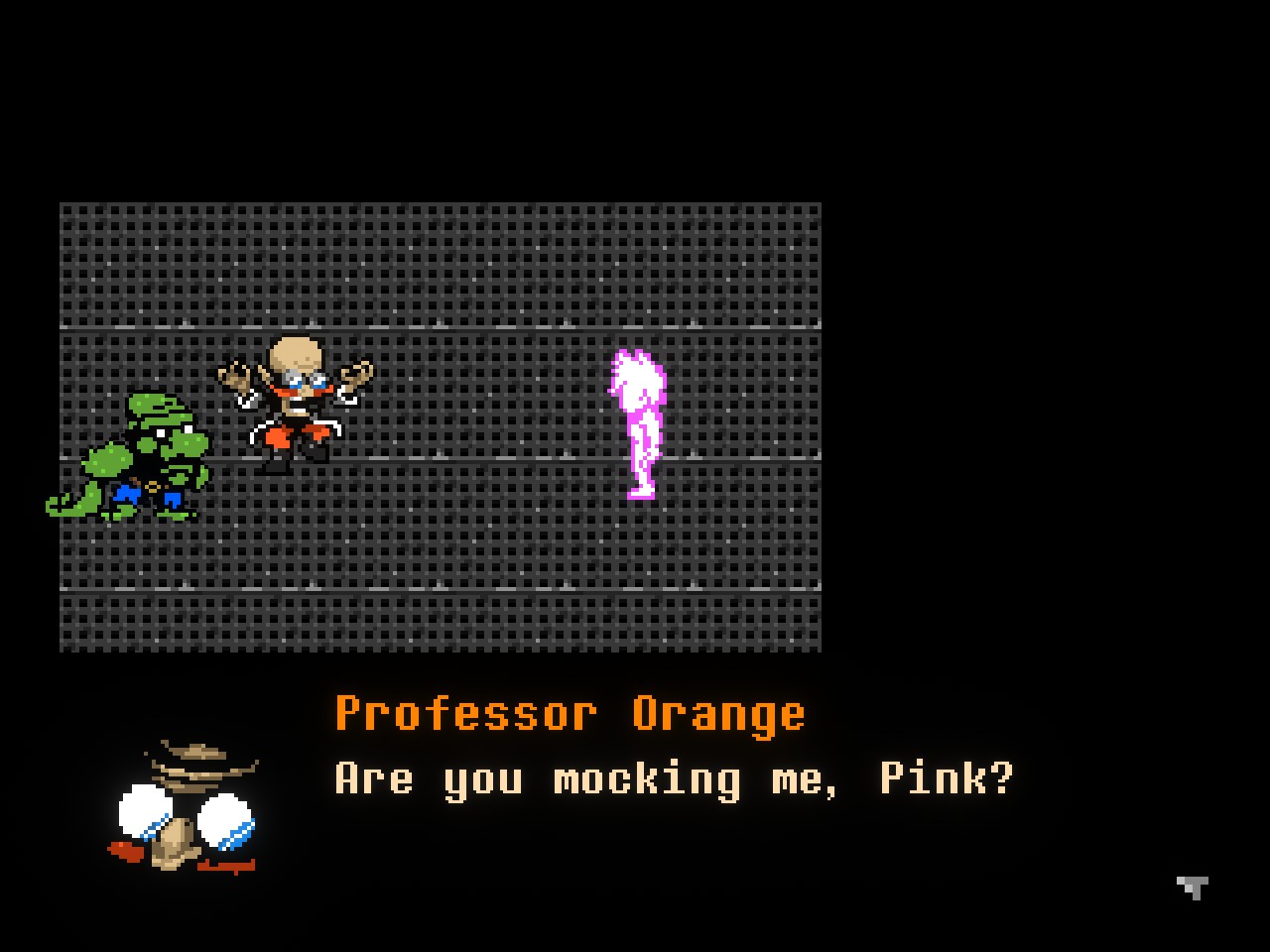
Moving on, why does Frog treat you like the key to ending the realm, as if you were the only one capable of killing? Purple Mage and Gold Pig both threaten to kill you. The incinerator is proven to be deadly to anyone who's not Pink. What makes Pink's ability to kill so special?
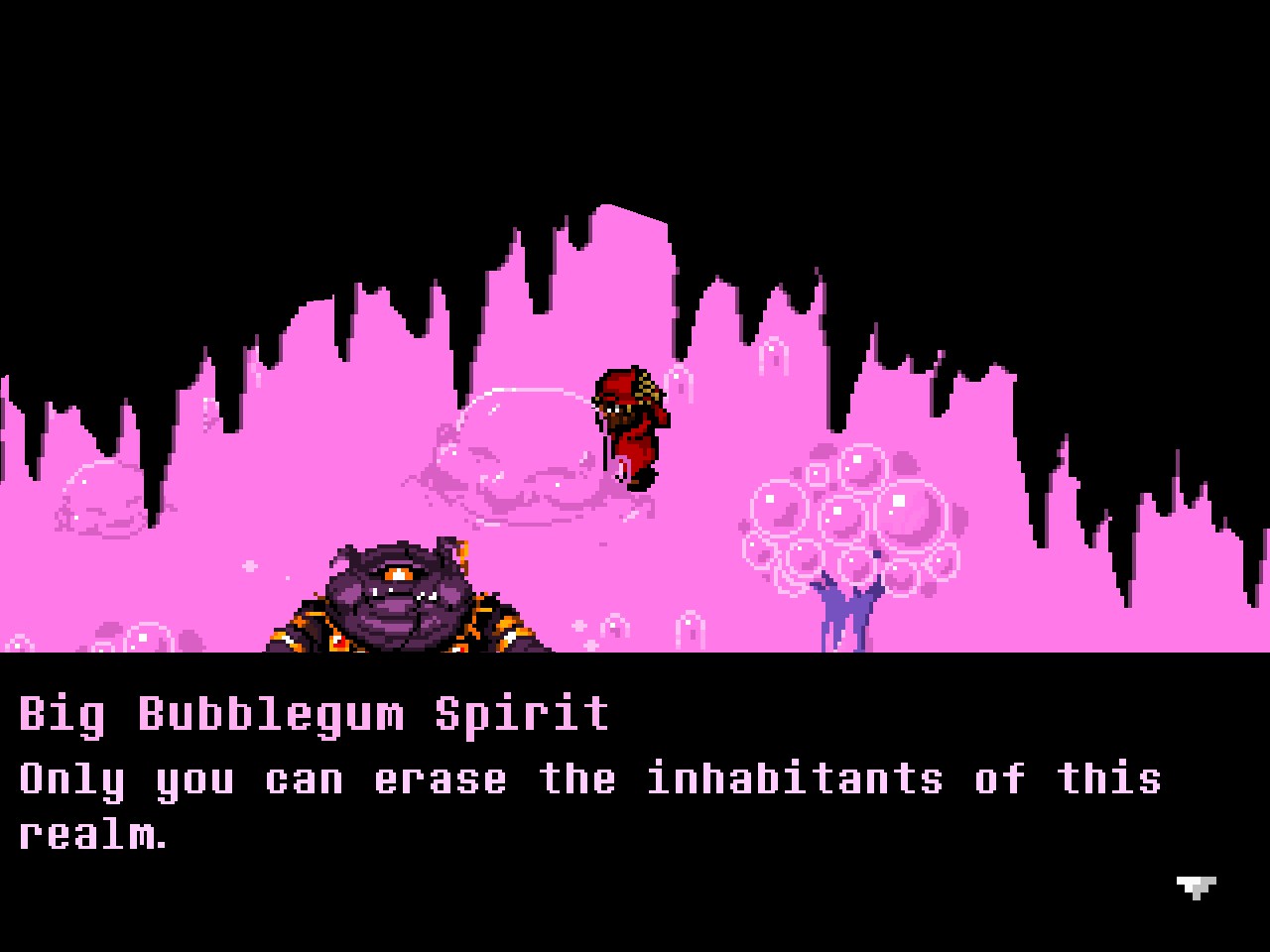
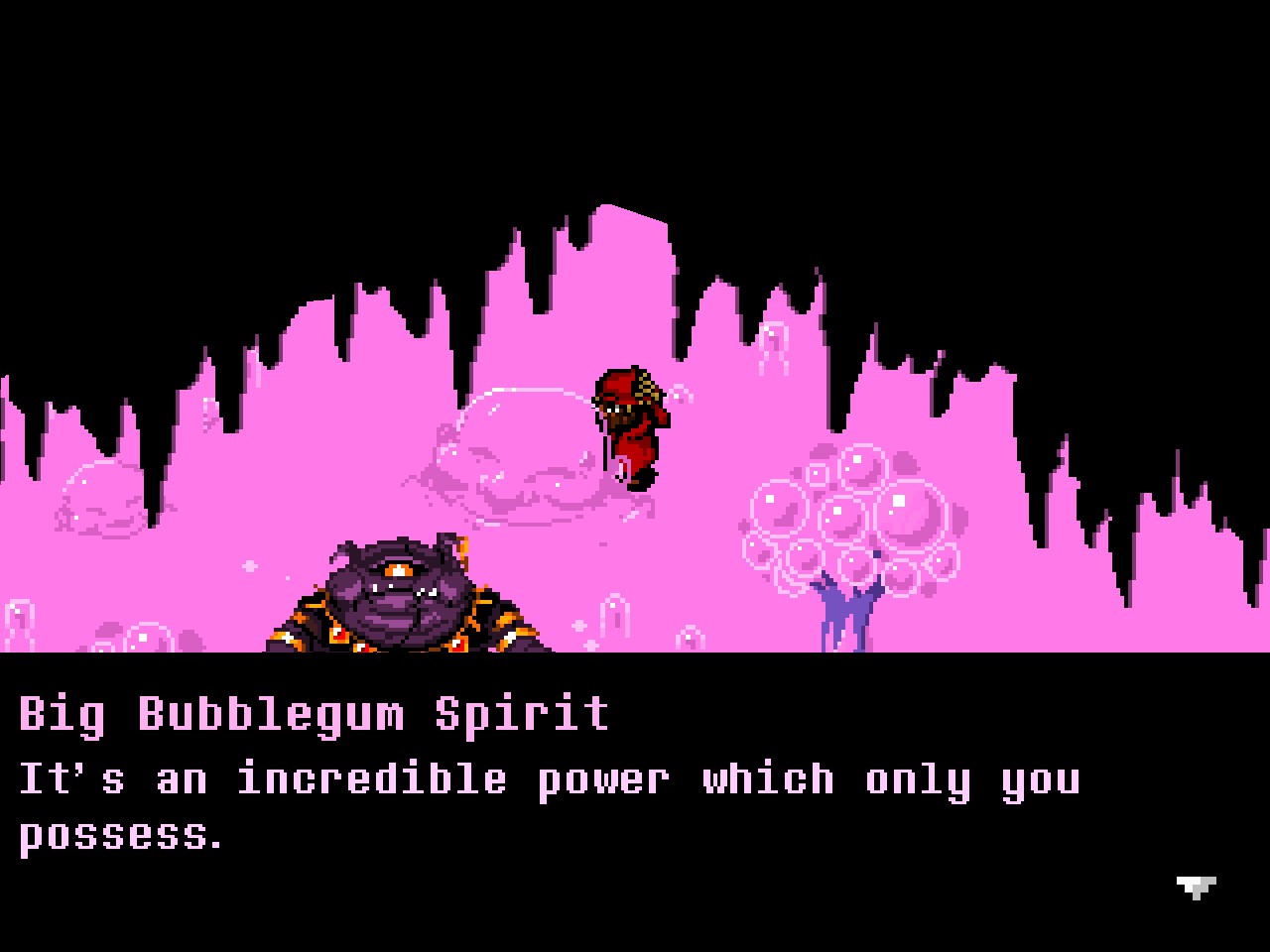
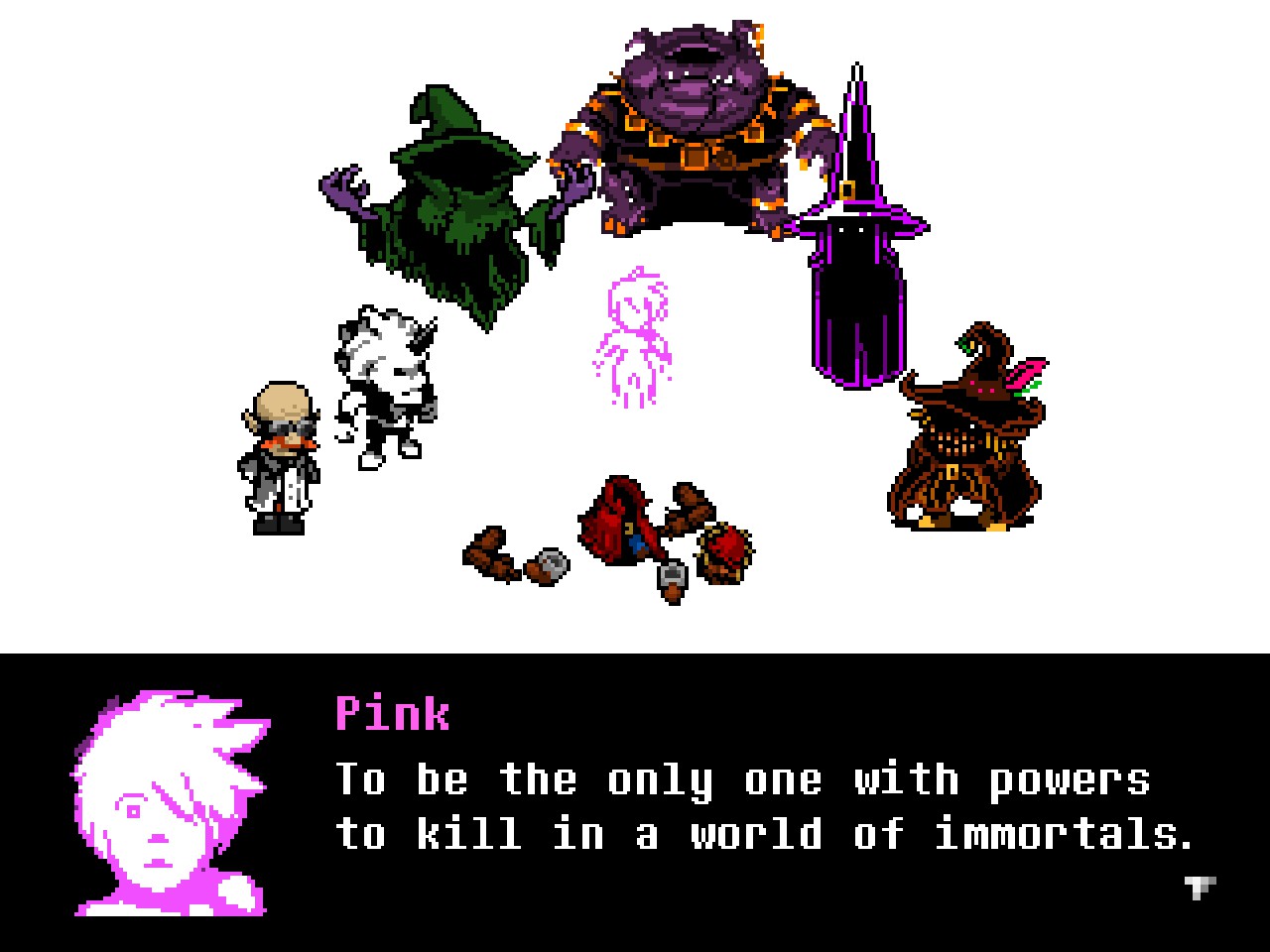
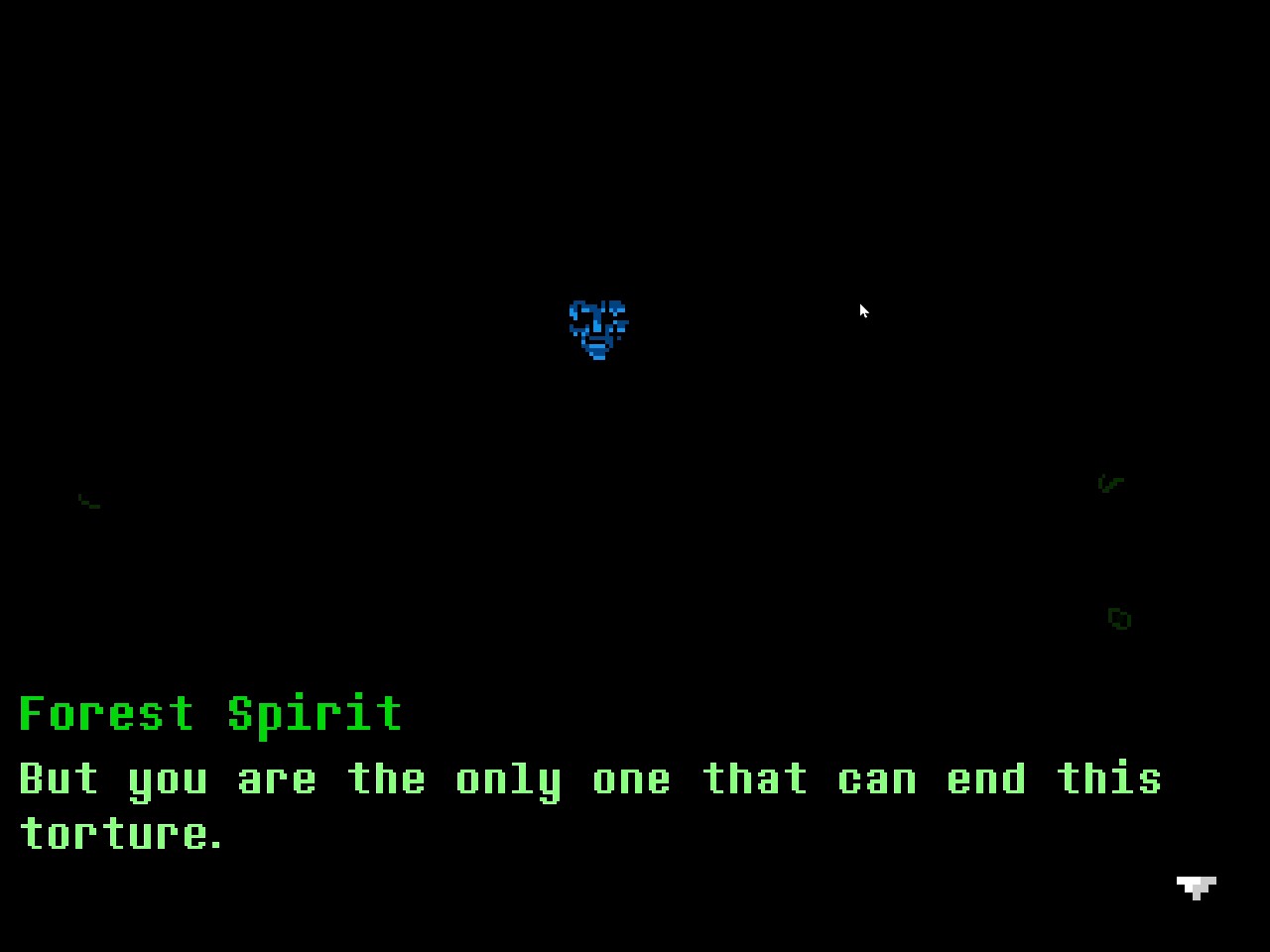
Was the Mysterious Narrator Voice just lying when they said they would restore your body to before you got incinerated? If so, why? Just so the game's narrative could function?
Why is Gold Pig the only one willing to even try to neutralize the doll's Killing Everyone ability, when being able to neutralize the doll's Killing Everyone ability is the only reason the doll body exists in the first place?
Why doesn't everyone you meet try to stop you from getting your arm back, since that will begin the next wave of you Killing Everyone? Yes, I know everyone in the realm is weirdly forgetful, but that feels to me like a post-hoc excuse so that Act 1 could happen.
Even if you don't consider these unanswered questions to be plot holes since there's technically an explanation in "everyone just forgot the specific convenient facts necessary for the plot to work!", it undercuts any sense of consistency in the characters. "Every single character has plot-convenient amnesia" means you can never trust how any character reacts to any situation, since you don't know what they're forgetting at the moment for the purposes of making that scene work. You can never gauge how someone actually feels about something if they're being written to make the scene work to the exclusion of everything else.
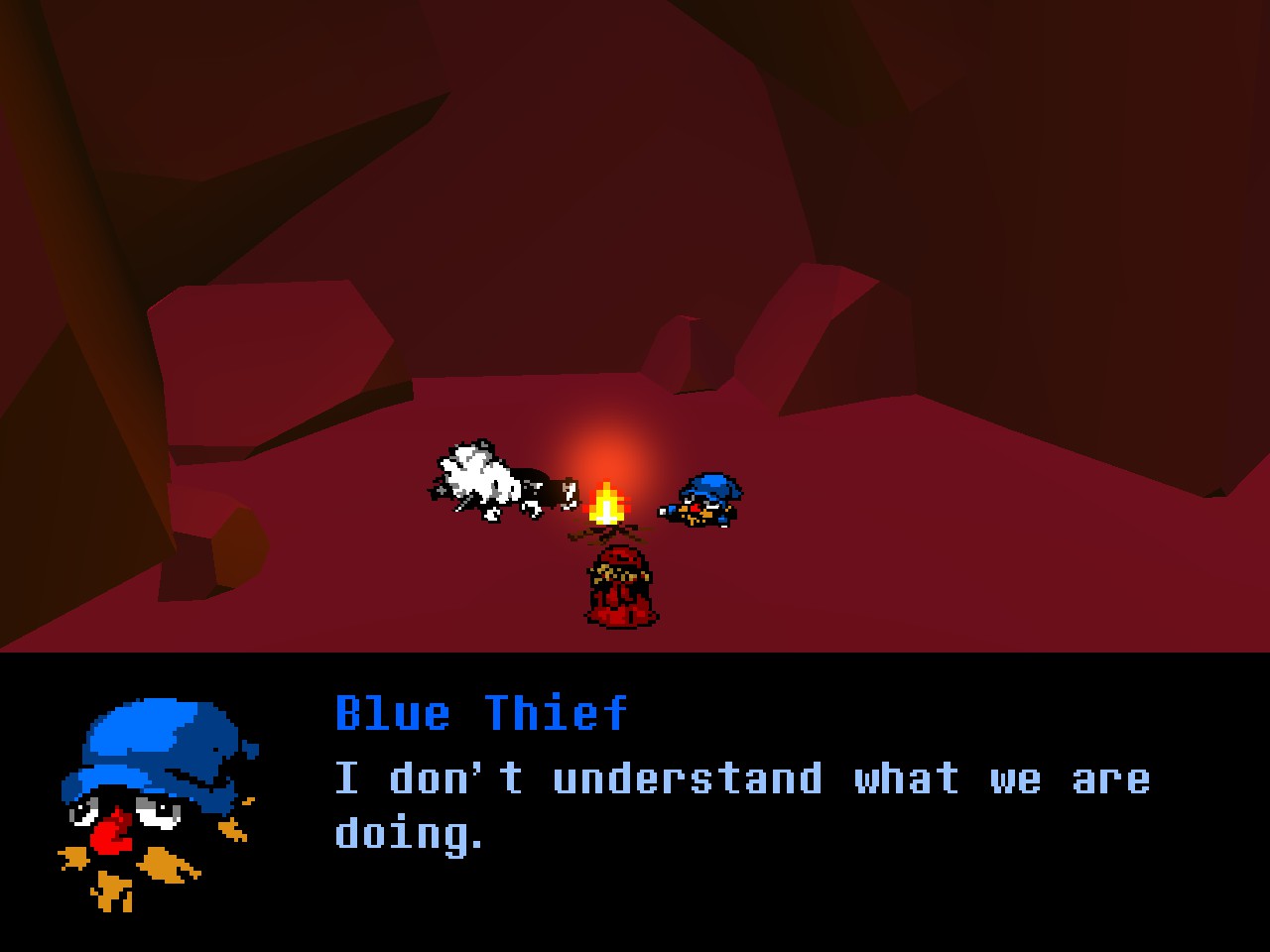
What's the deal with Pink finding Red's arm at the end of Act 1? The rest of the Red body is gone, so what do they do with it? Maybe they just... try to attach it, let it fall to the ground, and ignore it? Maybe they destroy the arm in the process of deluding themselves into thinking they've reattached it?
Also, it's kind of weird to me that Pink's will is still strong enough to maintain the "one-armed Red" illusion even after Red got incinerated, but then they give up on trying to delude themself about being in a Ready to Kill state once they found Red's arm again. I would've expected at least some resistance there.
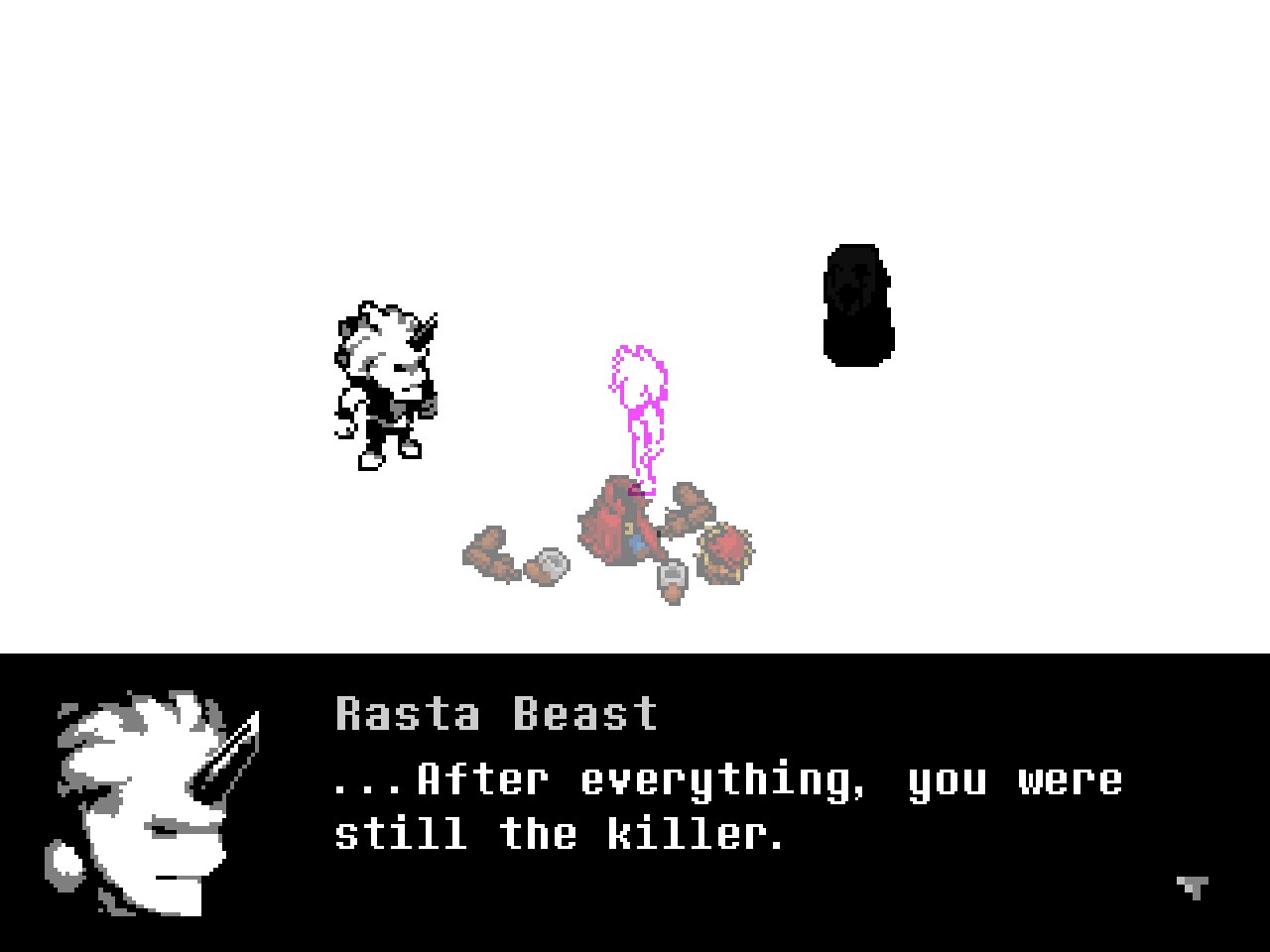
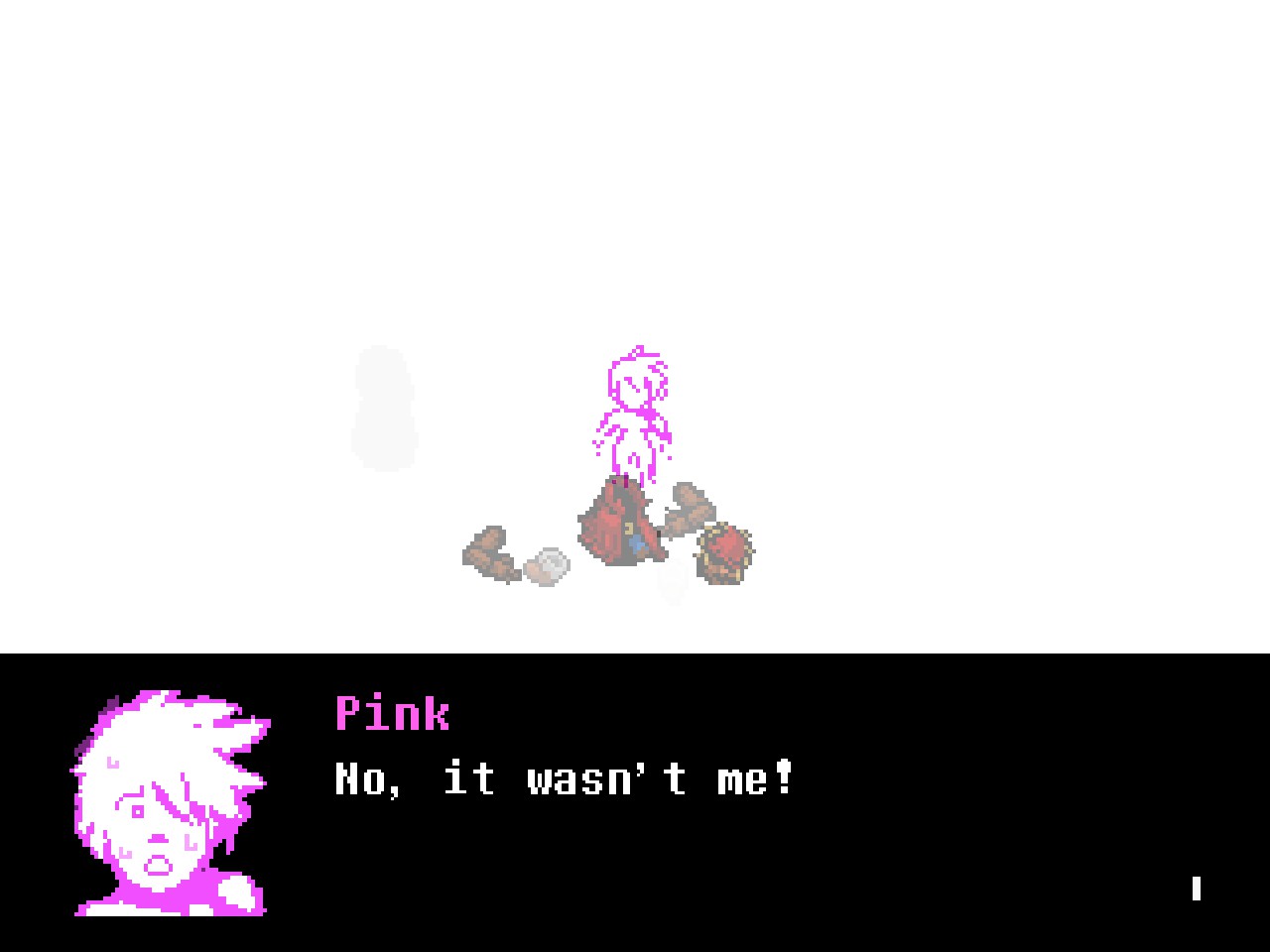
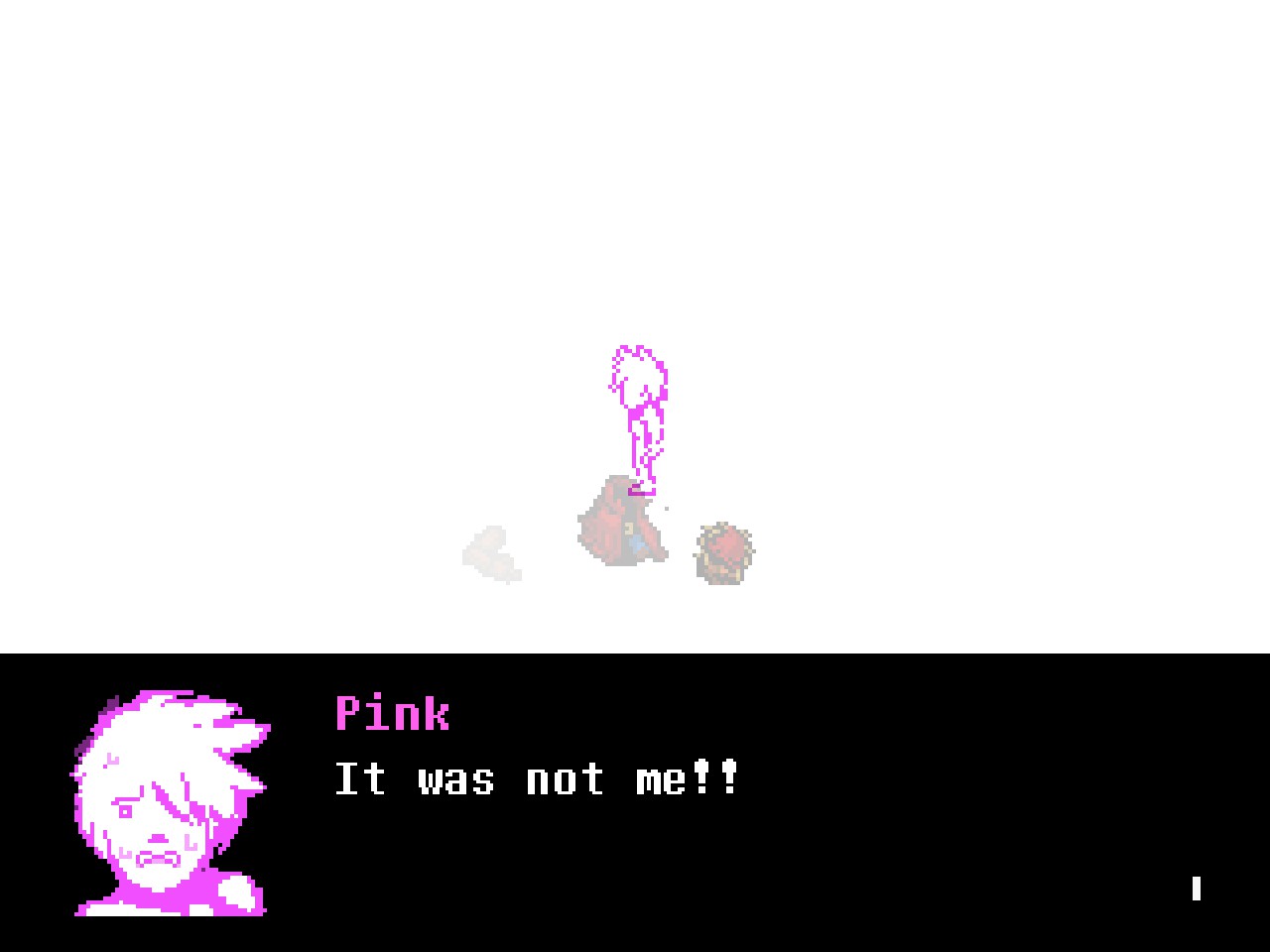
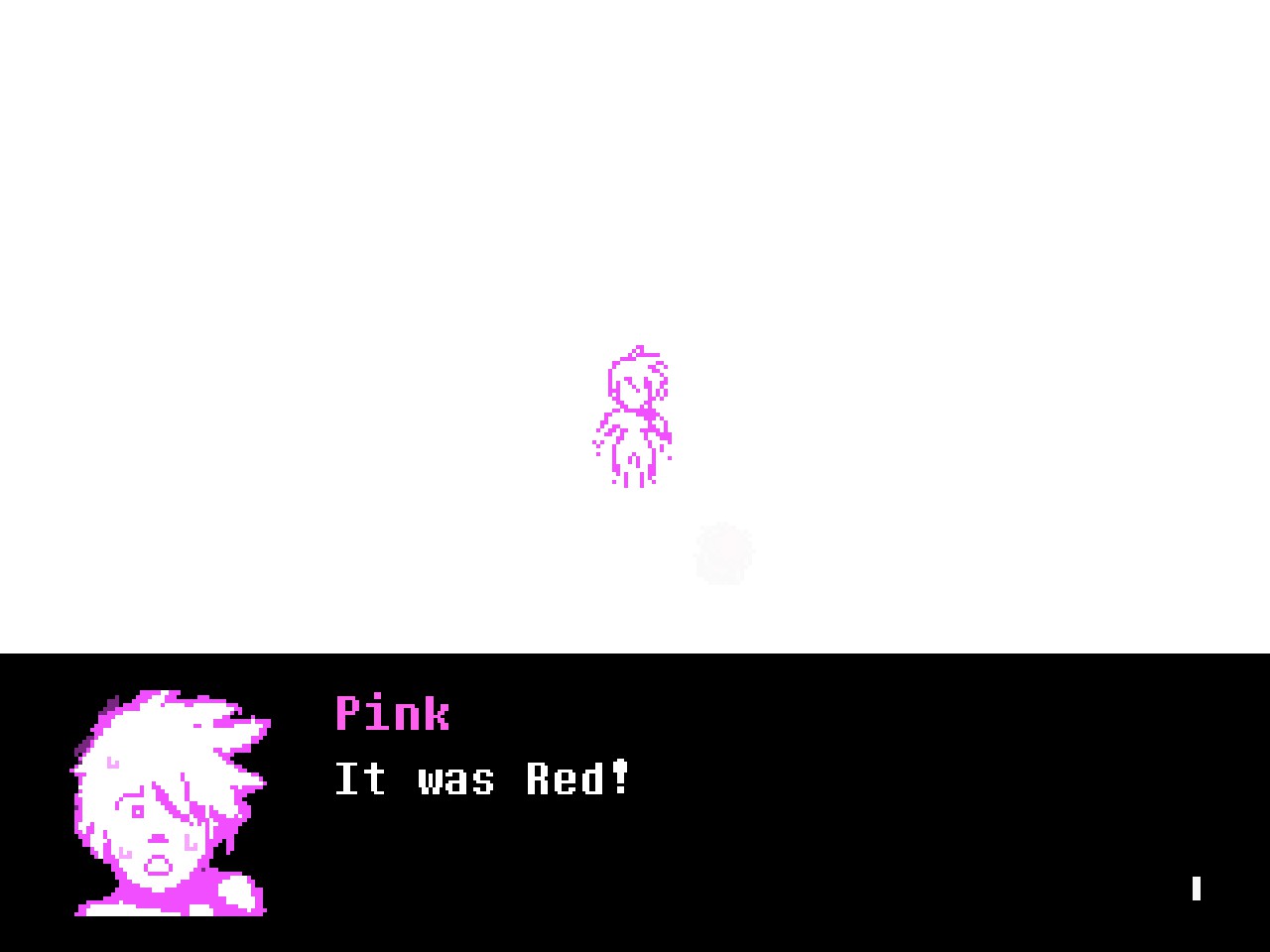
I'm not trying to CinemaSins this game. Things in games can make emotional sense without making rational sense. I just don't see how the solution to Pink Killing Everyone was to give them a doll body that can Kill Everyone on either a practical or metaphorical level. If there's symbolism here, I don't get it.
I feel like it all makes some sense to me, but not enough. There's definitely some kind of central idea of Pink being wrapped in several layers of self-denial: hoping that a doll body would fix their problem, deluding themself into thinking they were in a doll body when they weren't, handing over control to The Doll / You for the entire game... but I don't know what to make of it, in the end. It feels like some vaguely cool ideas with no actual thesis behind them.

There's no consistency to the characters. None of the characters seem to really care one way or another whether Red gets their arm back during Act 1, which only makes sense if they don't recognize Red/Pink: either they'd have a death wish and want to help (and it seems like Green Mage might subconsciously be acting this way: in a rare moment of hesitation, they pause before giving you a door piece you need to confront Gold Pig, as if recognizing the peril they're enabling by handing it over), or they'd be afraid of death and do everything in their power to help Gold Pig. And then when you do get your arm back, some of the characters go from not really caring to fearing/hating you the moment you've recovered it.

Why is Rasta Beast so friendly to you throughout all of Act 1, only to immediately recognize you as a repeat serial murderer once you recover your arm? Even if the idea is that they're trying to make friends to discourage you from going Murder Mode again, why don't they do anything to discourage you from getting your arm back?
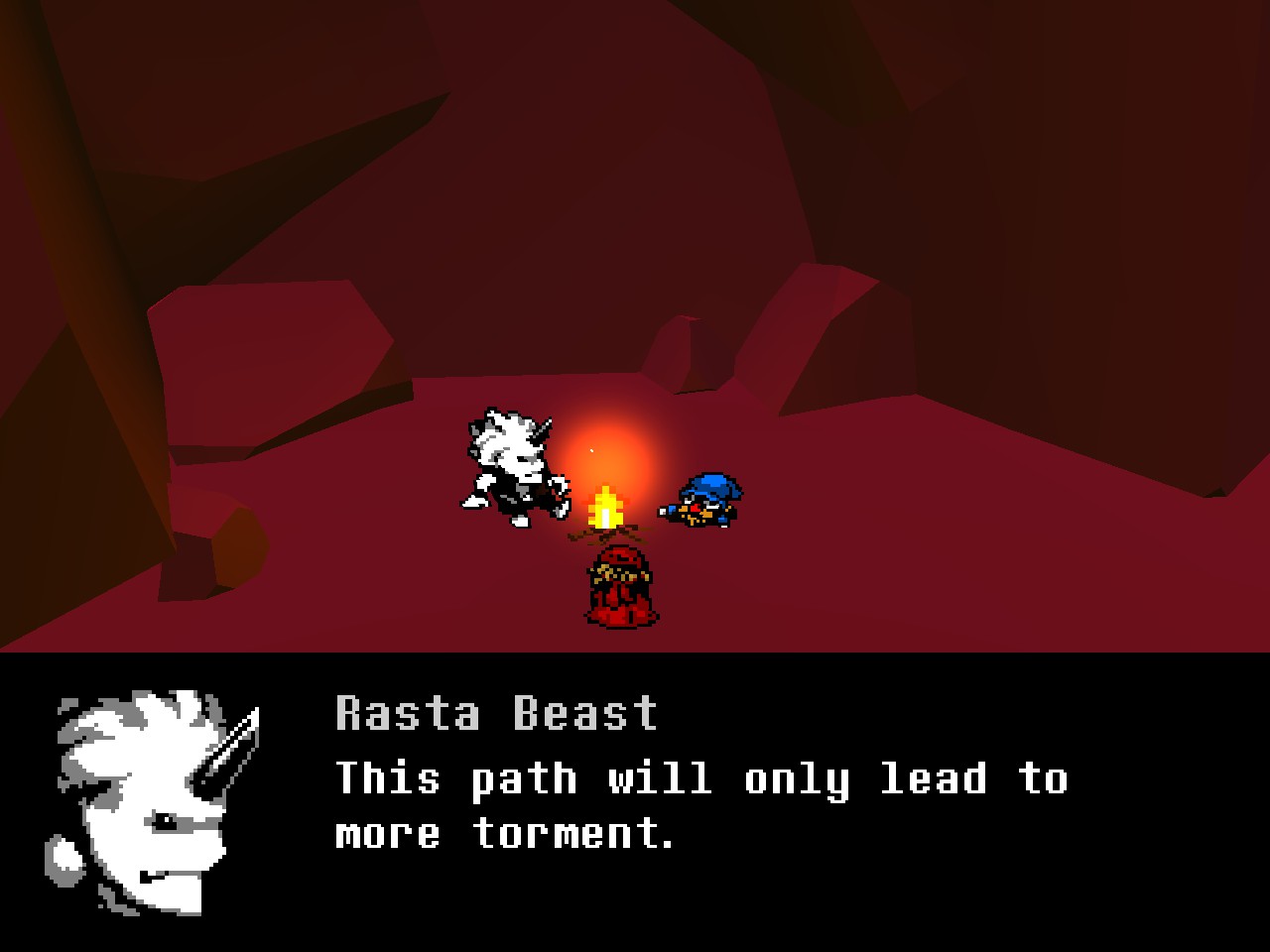
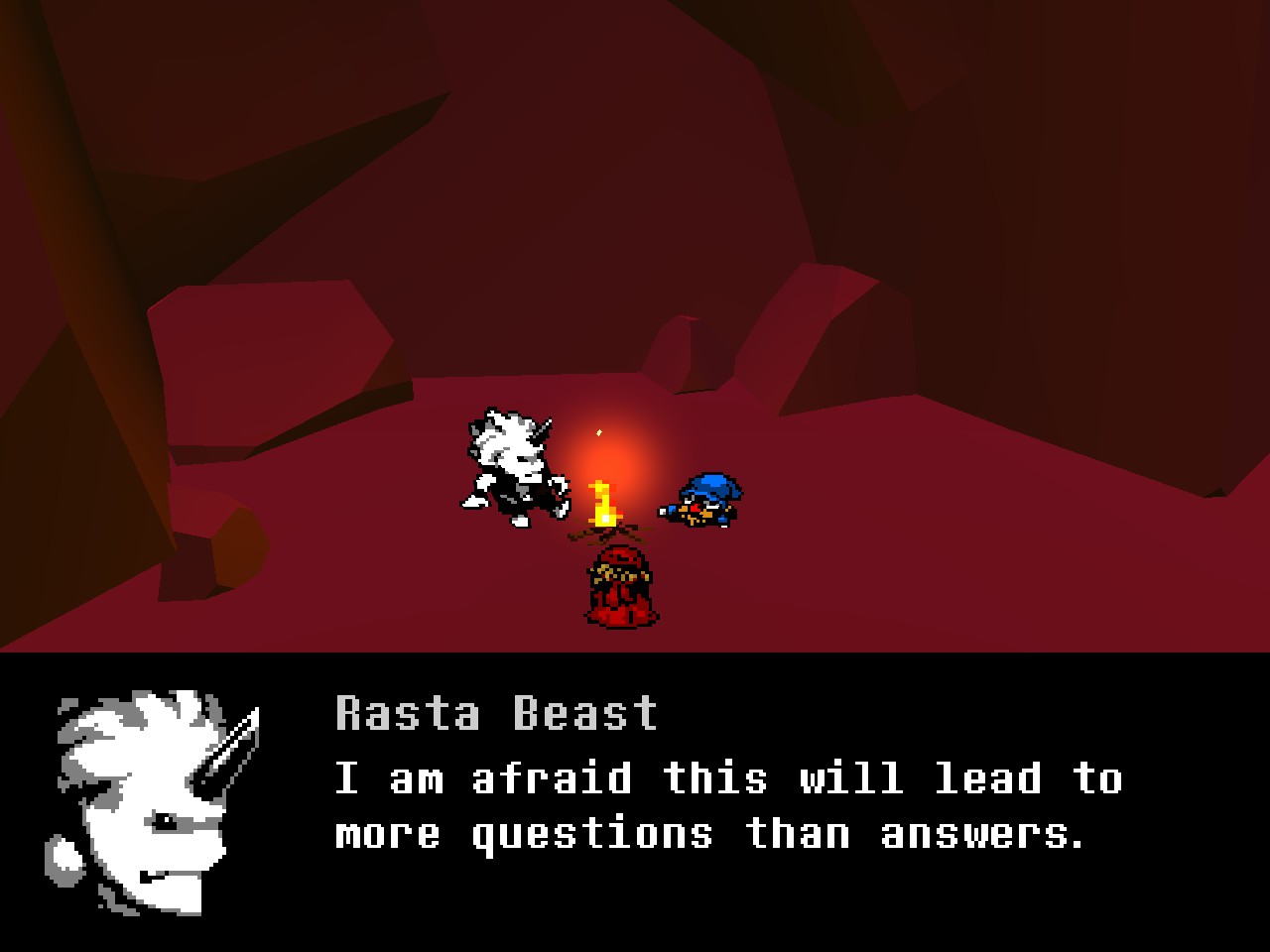
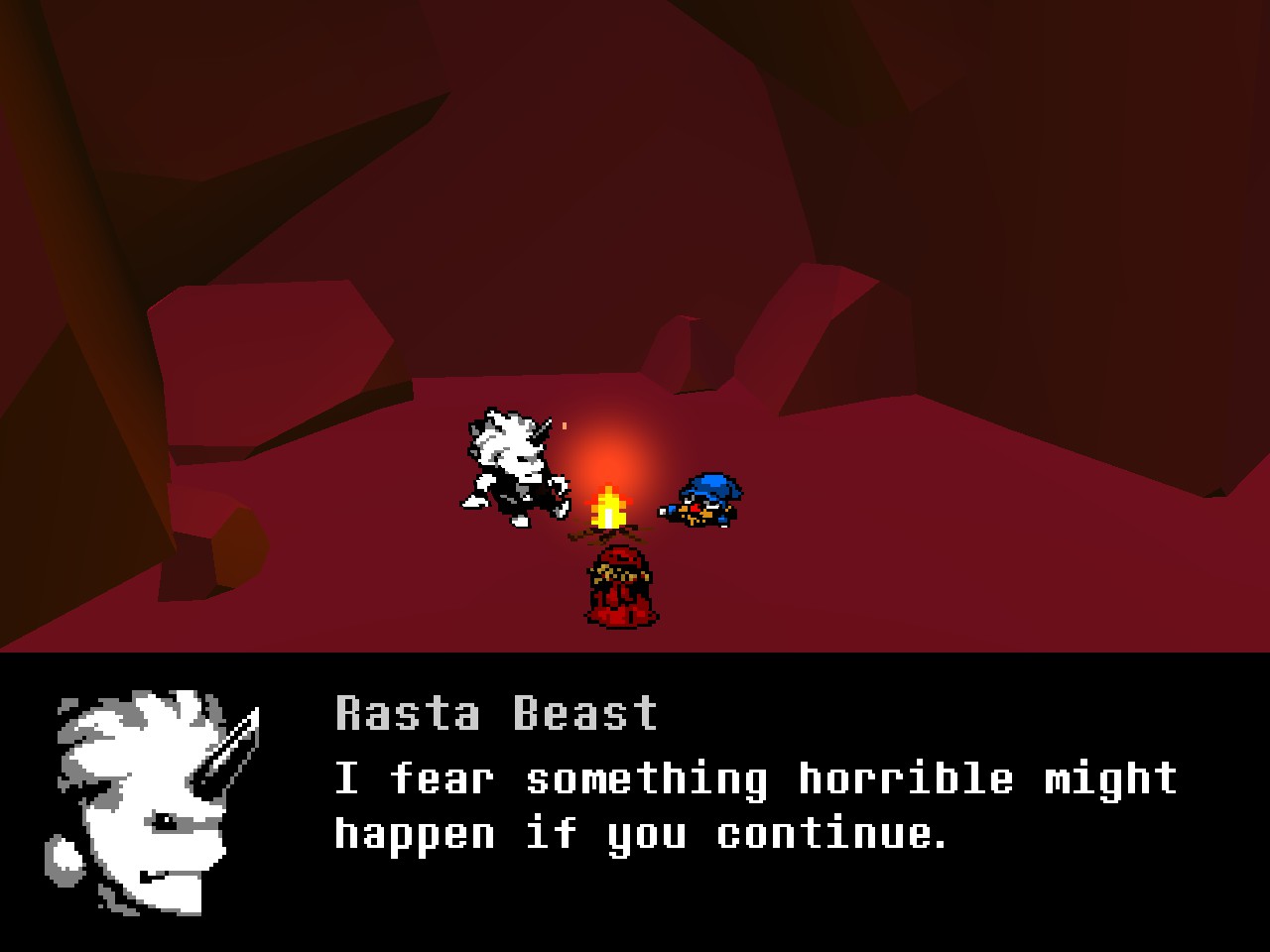
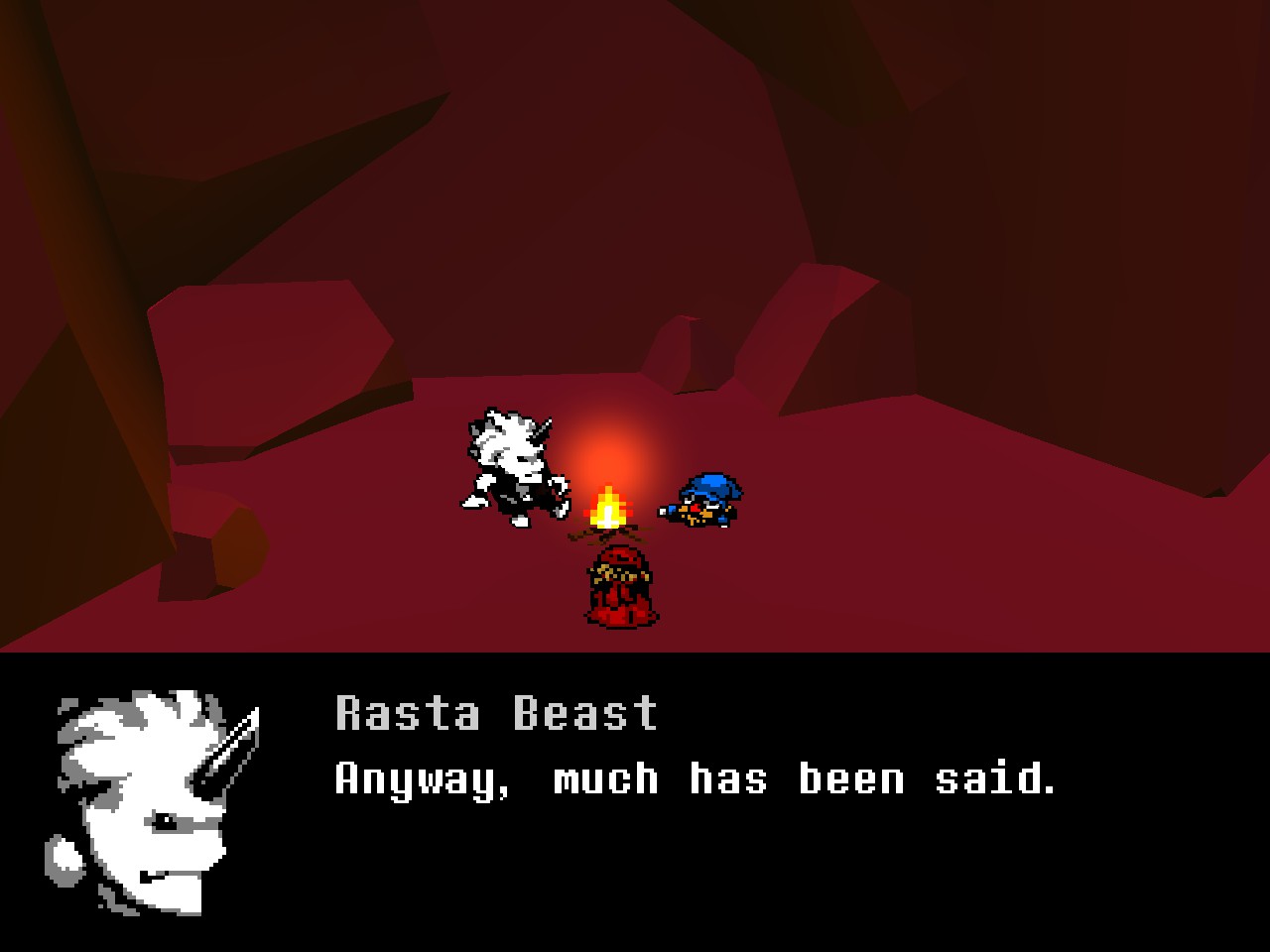
Rasta Beast is more passionate about life than any other character in the game. Immediately after you re-acquire your arm, they lock the entrance to the game's only town and appoint themselves the protector of everyone inside. So they knew what was coming, but also didn't make even the slightest effort to stop you before you re-acquire it. Why? What's the point of being cryptic?
The point, obviously, is to preserve the mystery for the player, without any consideration for the character. And that fits with how other characters are written: as if they always know exactly what the player knows and nothing more. Gold Pig isn't scared of Red getting their arm back until you, the player, learn that it makes you dangerous. Rasta Beast telling you that "[your] path will only lead to more torment" makes sense for a character interpreting tea leaves, not a character watching a Knife Murderer walk into a Knife Store holding their semi-annual Knife Sale on Murder Knives.
And to be sure, a plot doesn't have to make perfect rational sense to still make emotional sense. I adore Sayonara Wild Hearts, and that game's plot is told entirely through the medium of rad stunts, ephemeral motorcycles and face punches.

But having played through Everhood twice, I still cannot tell you what is going through Rasta Beast's mind when they give you their little campfire speech. Vaguely, I understand they're trying to deter you from pursuing your arm since that will result in more death, and more suffering for Pink. But what are the thoughts and feelings that lead them to express their fears as a few cryptic statements before letting you continue on your way?
I think the devs could've built a clear metaphor on top of the foundation that they seemed to be working towards. For example: why give the Red body two arms? They could've included something about how you can't really live without accepting every part of yourself. They could've included something about how being afraid of your "dangerous" aspects and trying to repress them just makes you dangerous. Something like that. Anything like that.
Instead it just feels like a bunch of hasty justifications thrown in after the fact to try to explain the Pink=Red twist. It does not feel like anything prior to this was written with Pink=Red in mind. It's a cool twist, and then some hasty rationalizations thrown in to pretend it was planned from the start. Stuff just happens, and it just keeps happening, and characters say whatever the current scene demands, and nothing more.

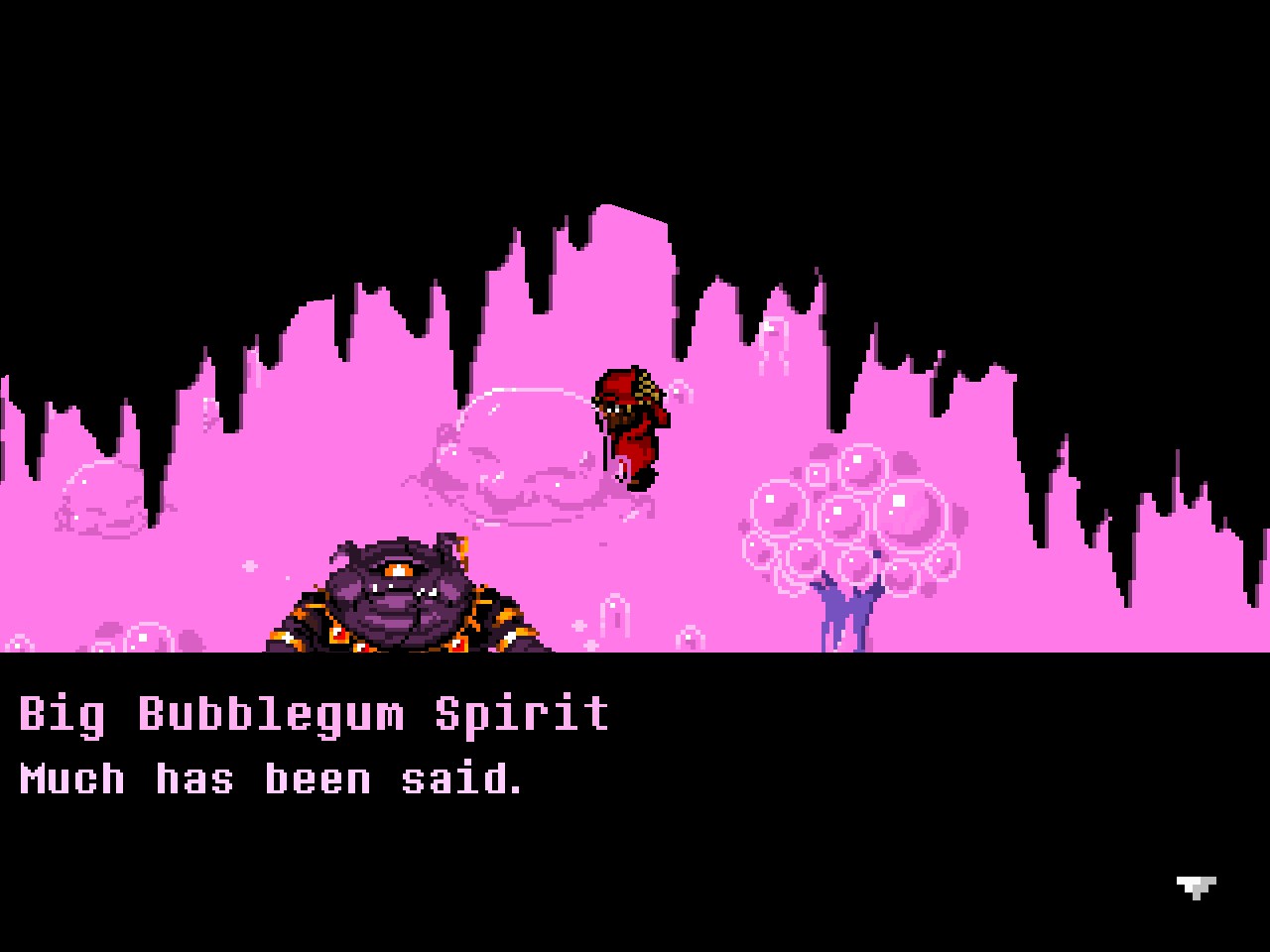
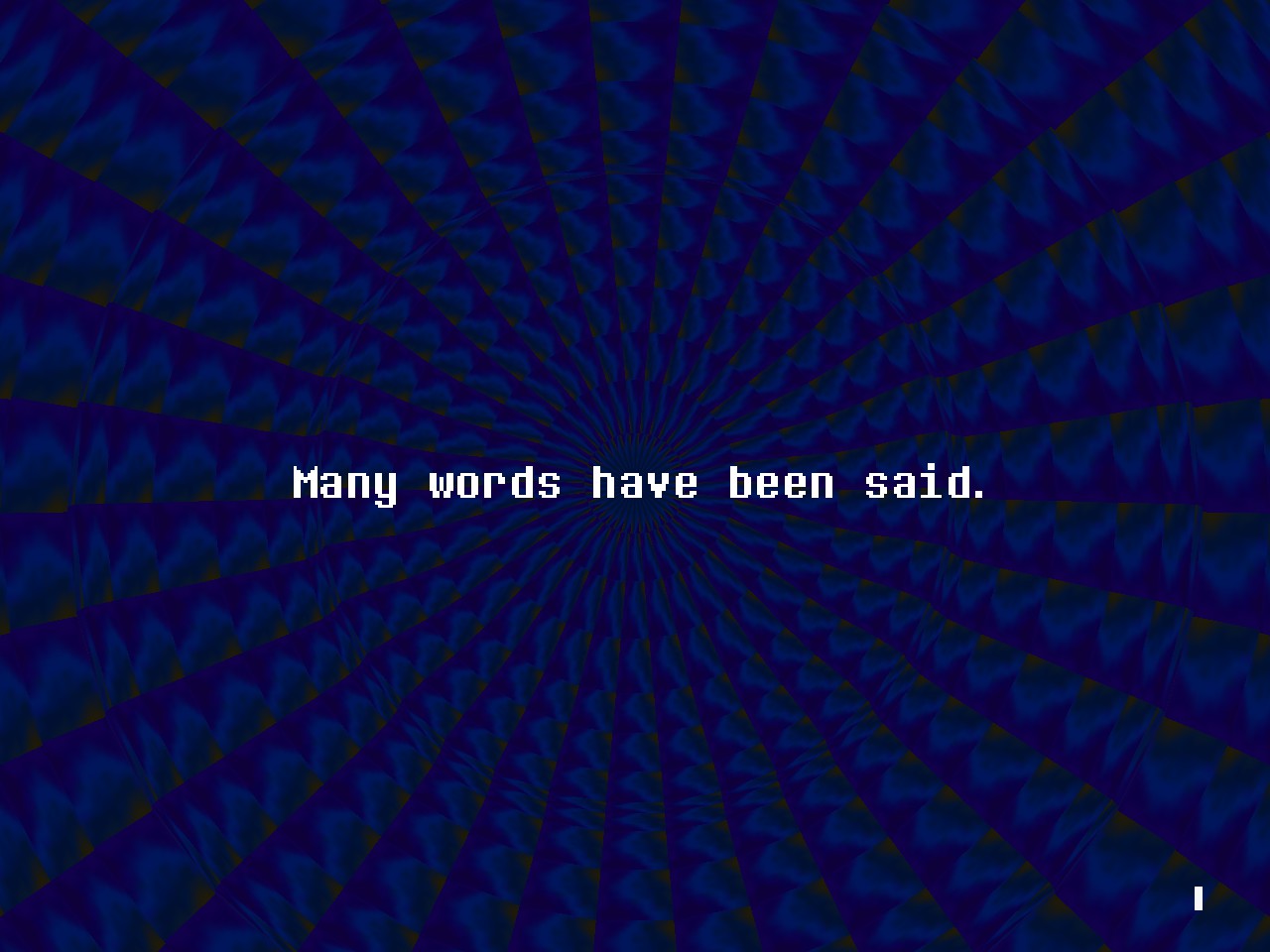
I cannot find the emotional throughline that carries me through "you thought you were playing as a doll, but actually you were playing a character who thought they were possessing a doll but actually weren't, and no one recognizes you because you're in the doll body but actually you were never in the doll body. And you, the player are responsible for the past genocides, except actually it was other humans, and those were terrible but now we need to you to finish those terrible genocides, except plenty of characters can kill, and also anyone who's dead can pass onto the next realm whenever the narrator feels like it." I don't know how to make sense of it.
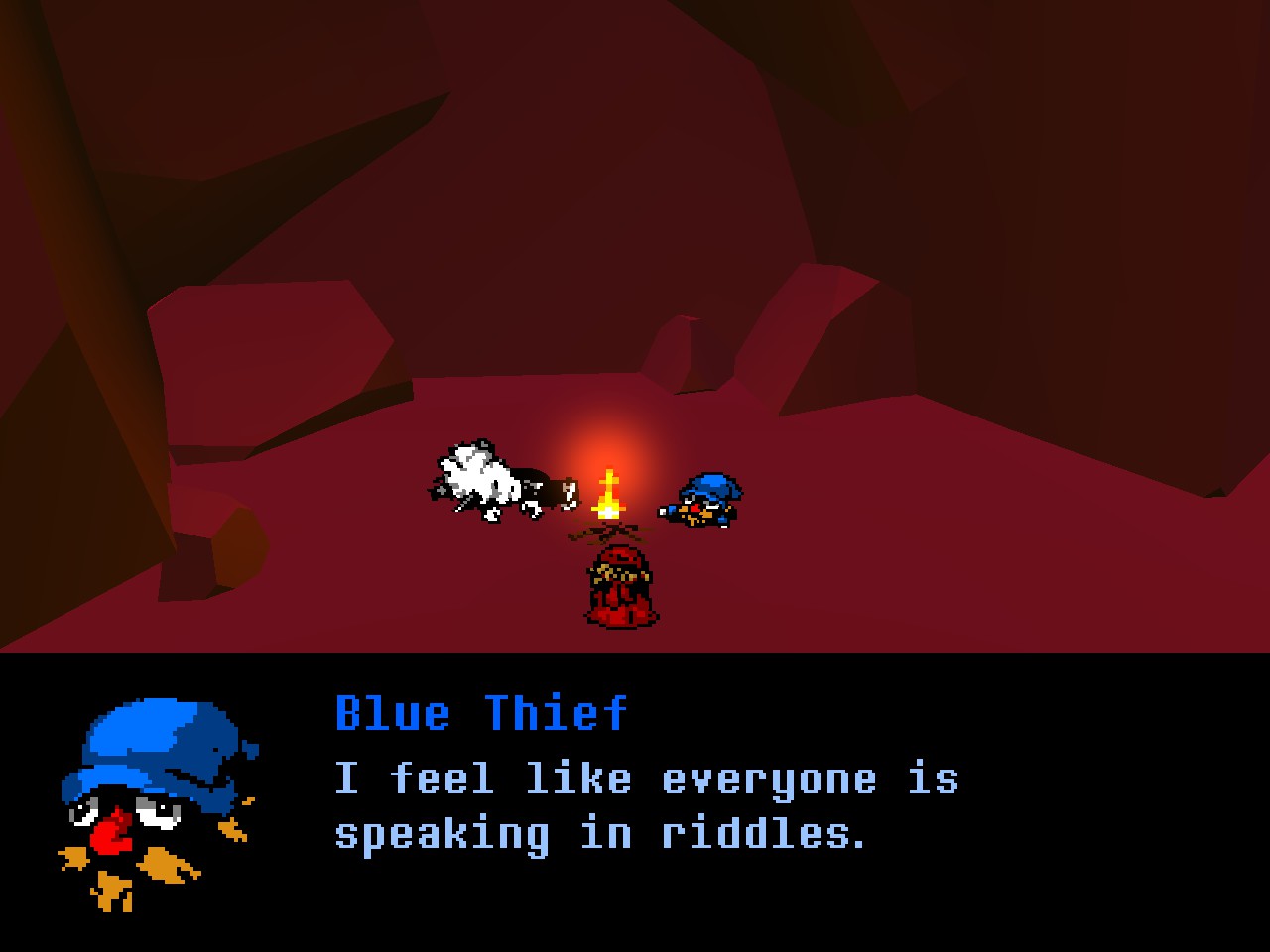
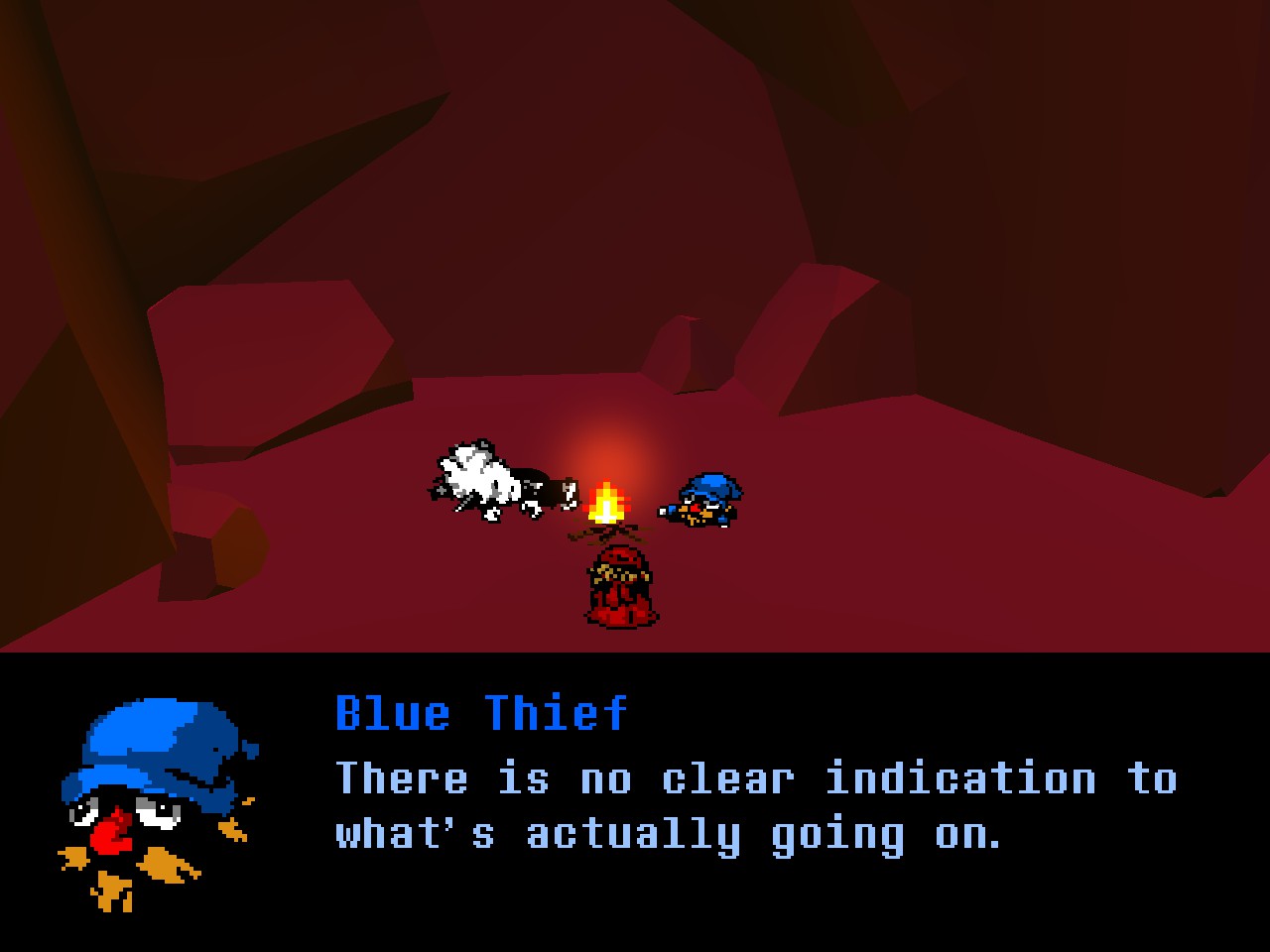
Also, hey, why does Frog care so much that you refuse to Kill Everyone? If this cycle of trying to Kill Everyone has happened countless times before over countless eons, why is it so upsetting that this particular cycle seems to be a bust? I know they'd have to wait for another human, but why is this their breaking point, when they've apparently had to wait through thousands or millions of these cycles before? They've had enough murder-happy humans in the past to reduce their population from millions to just 30, so why is one conscientious objector such a big deal?
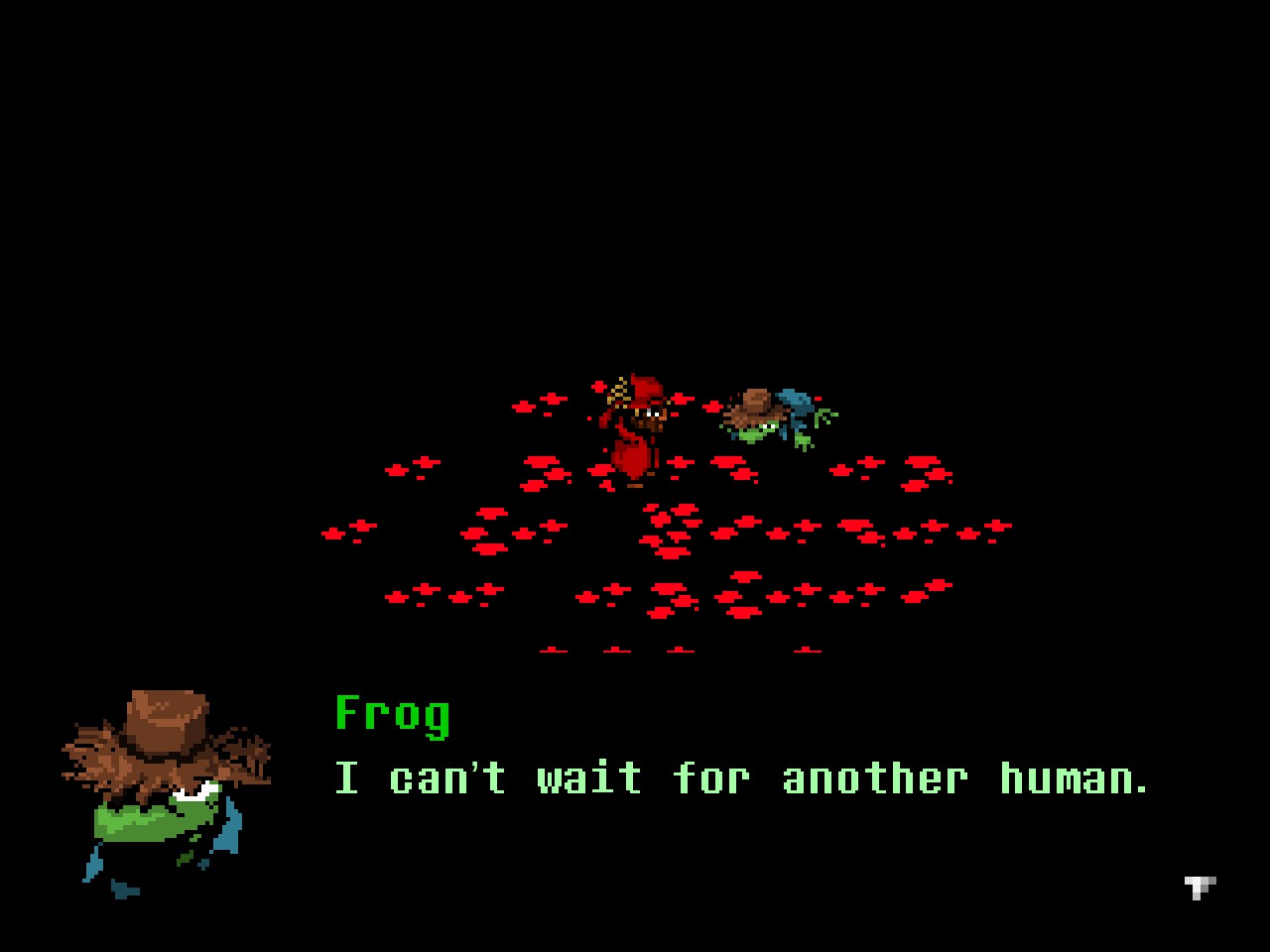
And hey doesn't this "Pink has been repeatedly traumatized by the Evil Murders they were forced to do" thing completely fuck over the entire emotional throughline of Act 2? How are you supposed to feel justified in forcing Pink to kill the last of their friends with their own hands? Doesn't that completely fuck over the "murder is merciful and just" symbolism that the entire game hinged its premise upon?
What is Killing Everyone supposed to mean to me, Everhood? Because up until this moment, I thought the game wanted me to understand "Killing" as a noble, courageous act of ending cycles. "Killing" only in a metaphorical sense. "The Death tarot card isn't literal death, it's change." Sure, fine.

But now it turns out sometimes Killing Everyone is just literal murder, something that people with mental issues sometimes do because they're just randomly compelled to? Everhood asks you to differentiate between killing, which is something good people do to break stagnation and allow for rebirth... and killing, which is something that mentally ill people just randomly do because they're prone to being possessed by Evil.
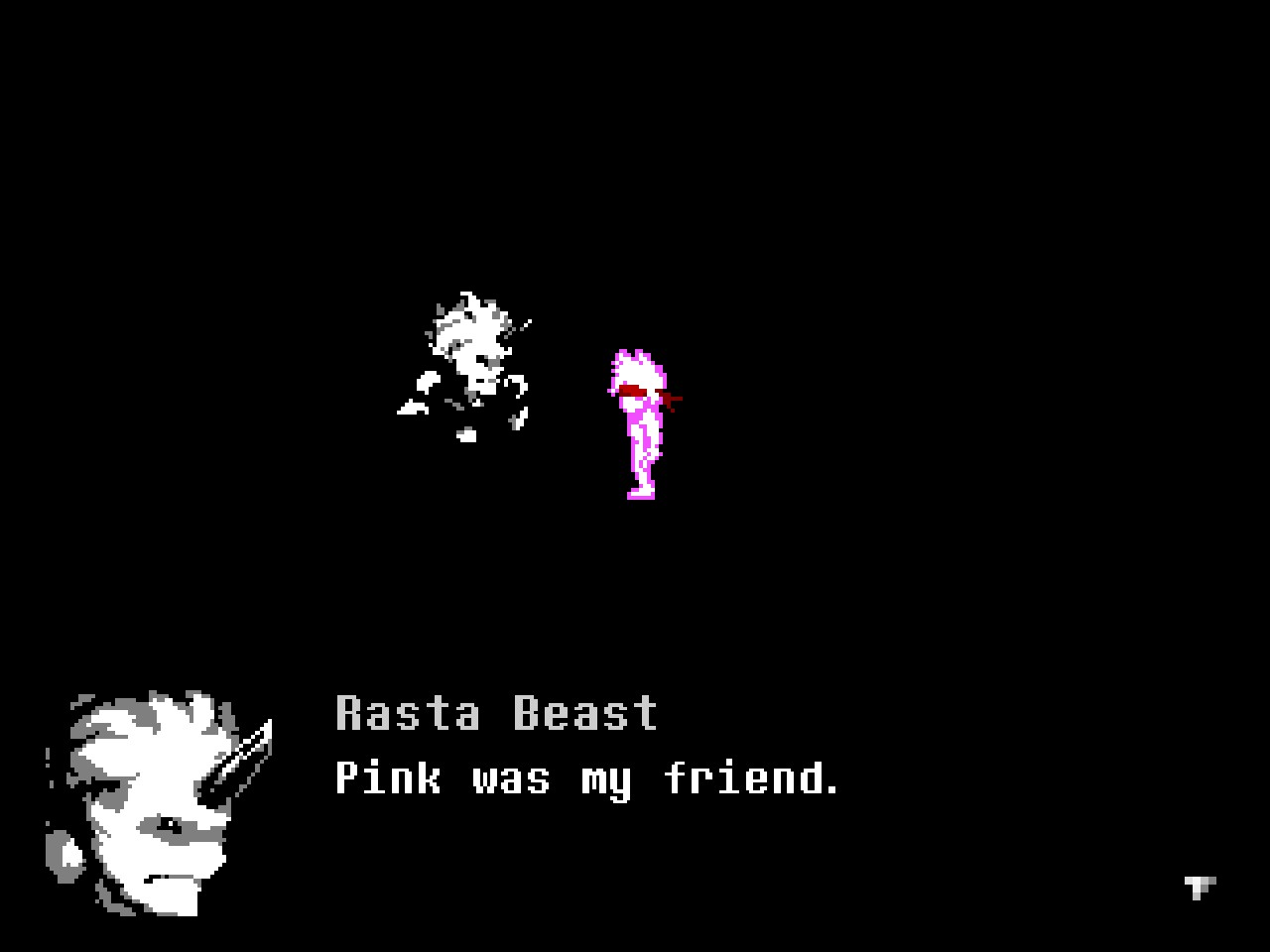
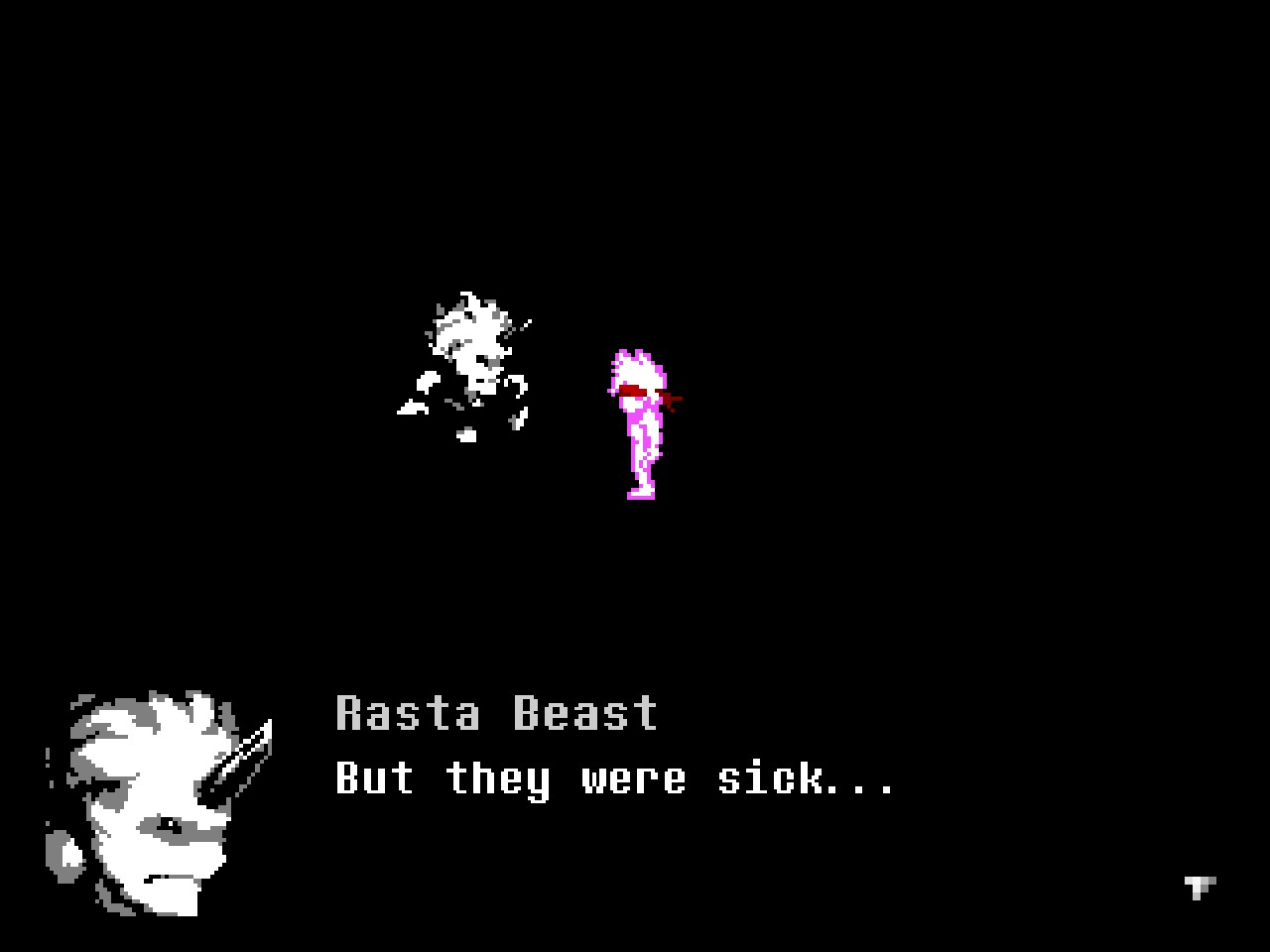
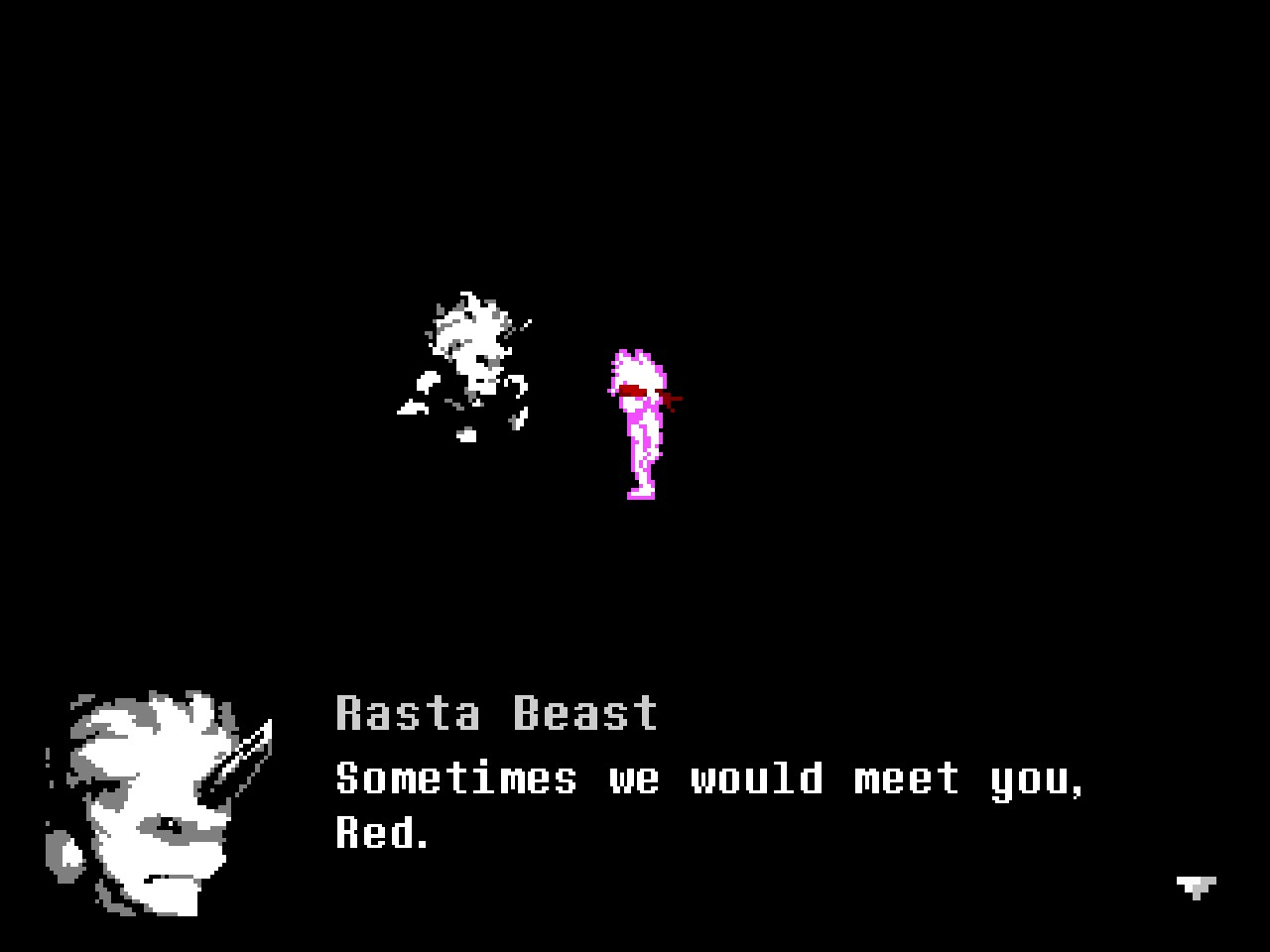
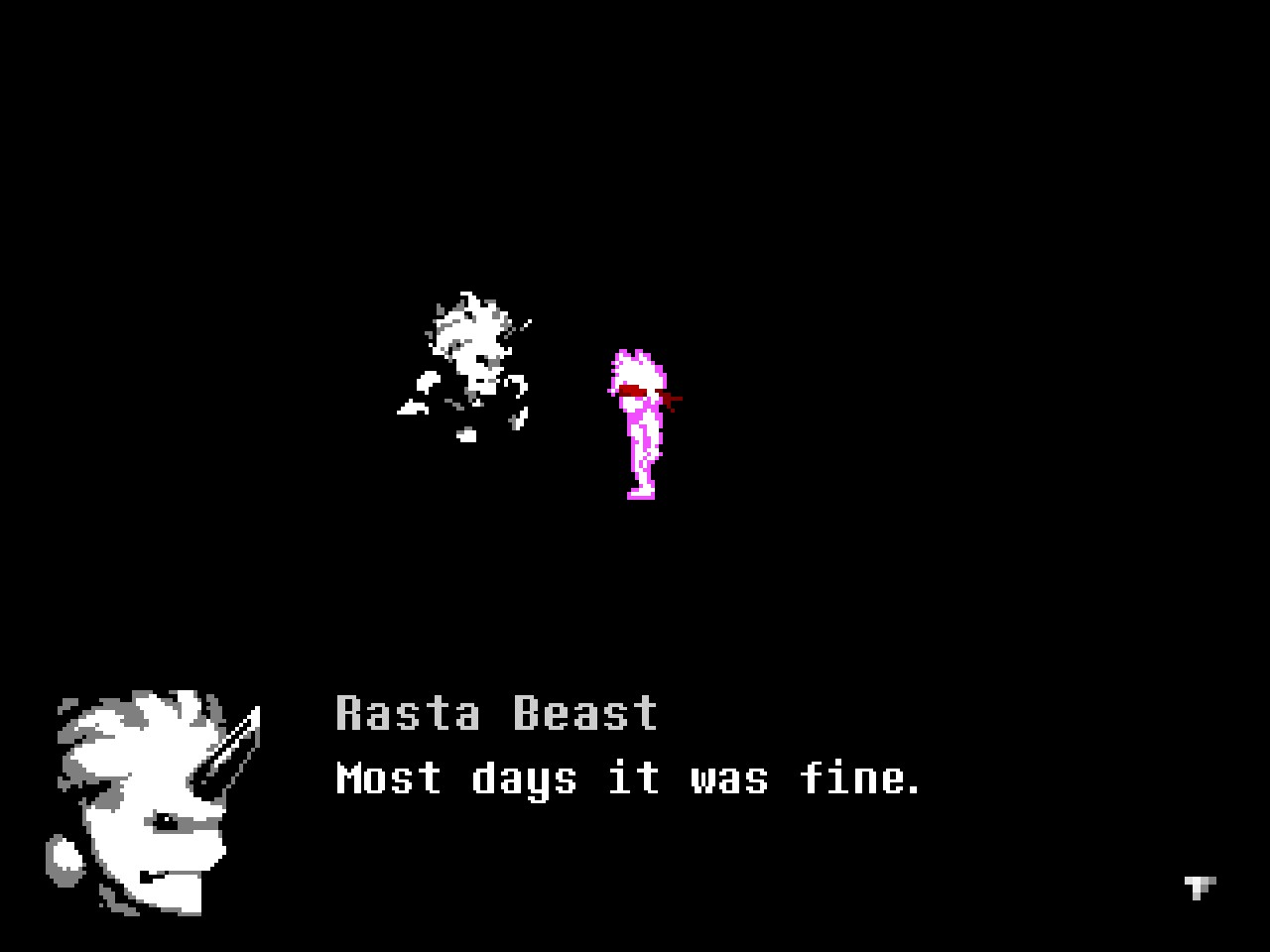
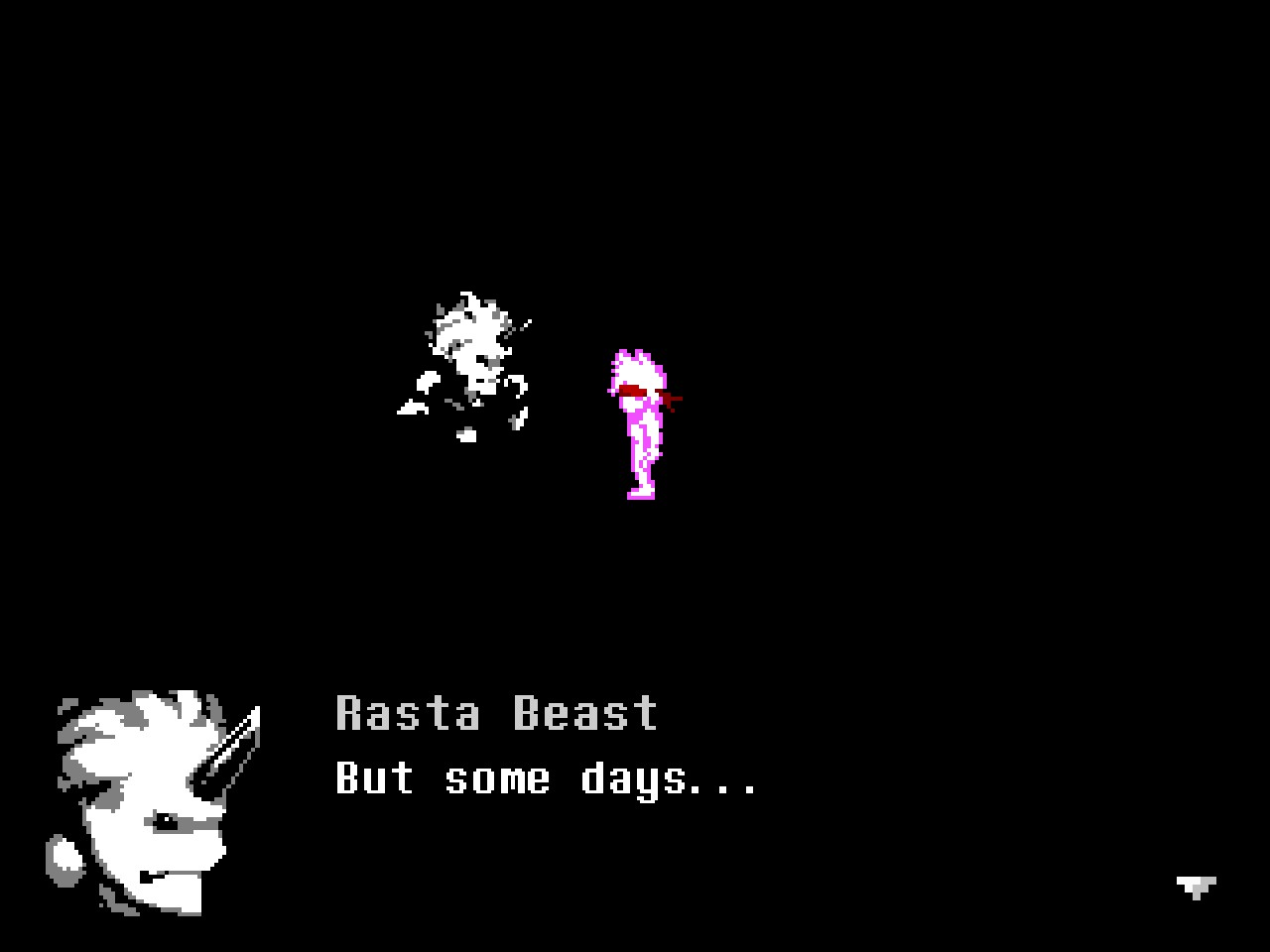
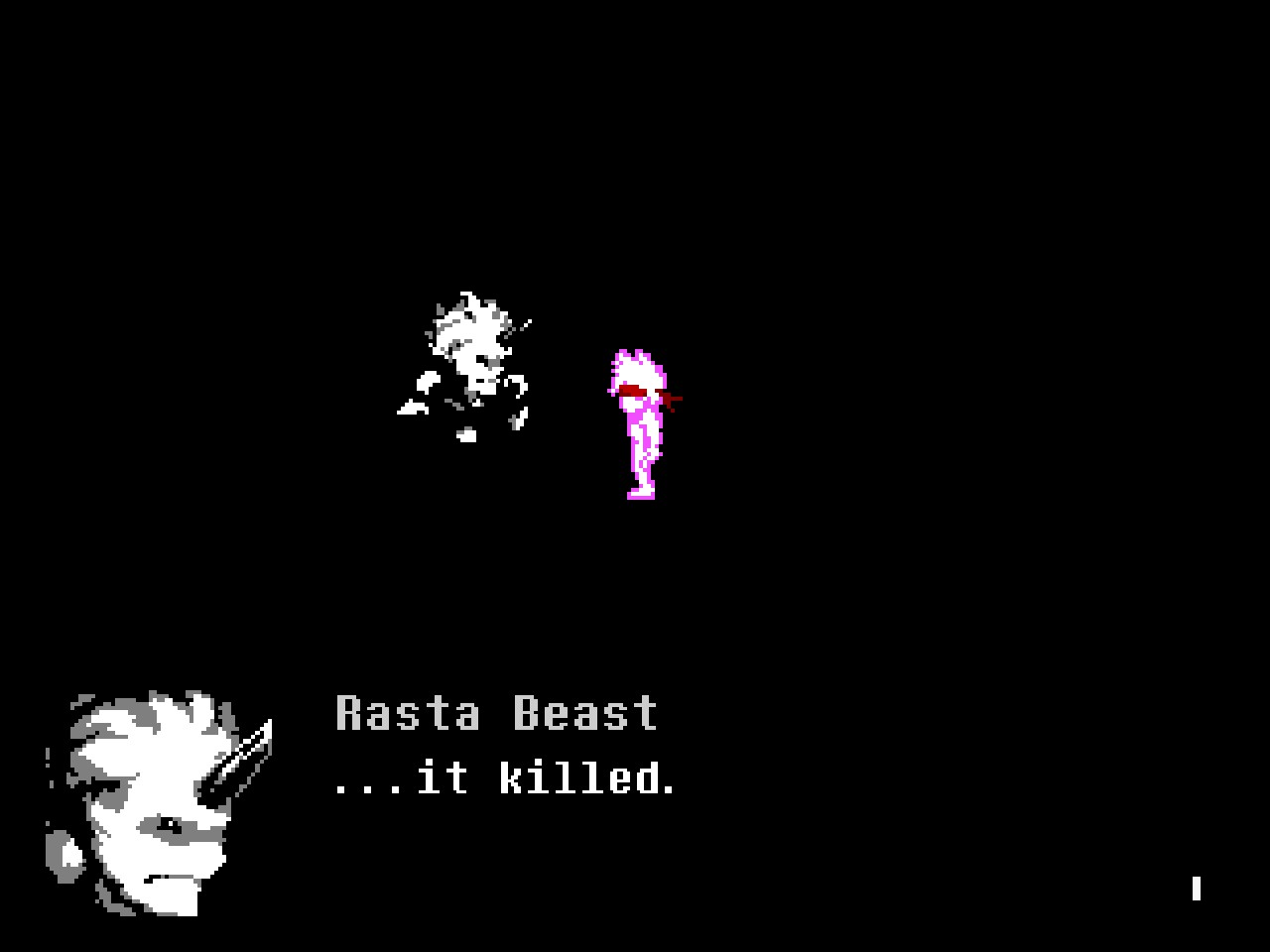
What the fuck, Everhood?
I don't love those implications about mental illness!! Or killing!!
It gets worse. I'm still not ready to talk about Harrowed Haley.

After the big twist, the other Mages, Rasta Beast and Red's parts fade away. You go through a sequence where you can't control Pink, but Pink also doesn't want to be in control. Red's bandana rematerializes, and Pink tries wearing it to give control back to... Red. Or, the Player. Pink seems to refer to the two interchangeably. Their effort to relinquish control doesn't succeed until they put the bandana on like a blindfold.
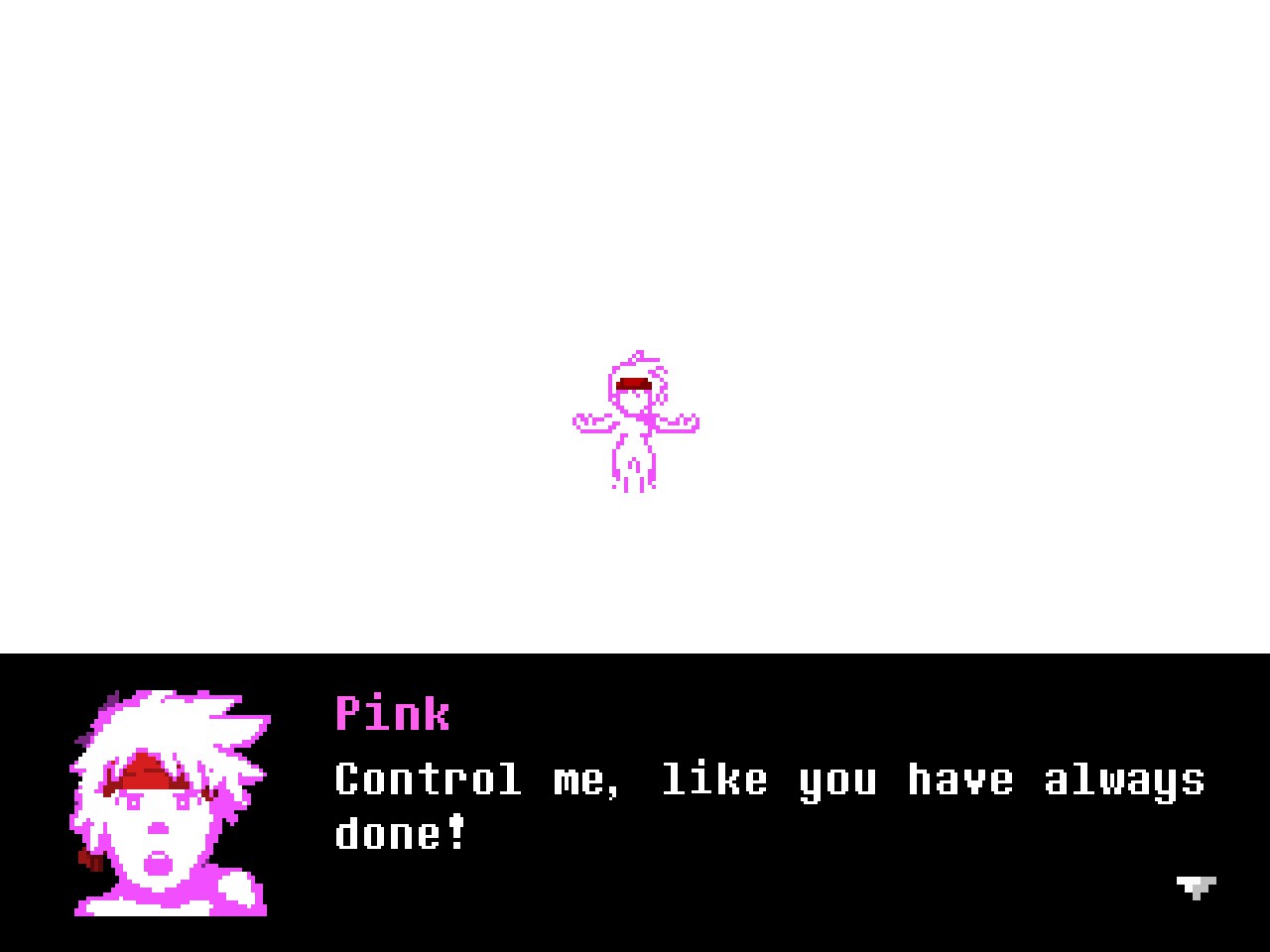
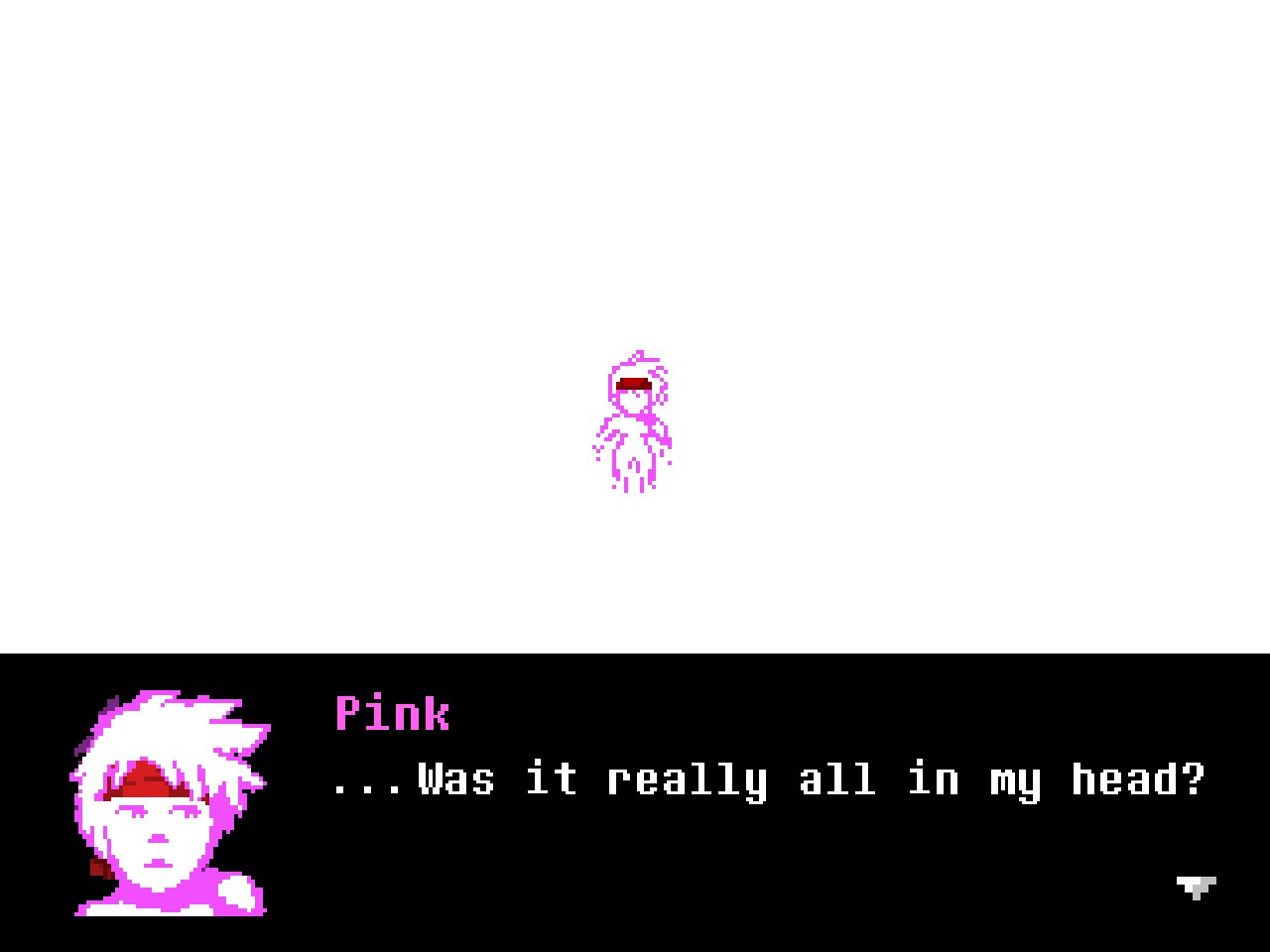
I'm not sure I get this part. Red, as I understand it, is Pink's attempt to defy outside control. Red allows them to disable themselves whenever they're losing control, giving them back some degree of autonomy. In this sequence, a series of on-screen button prompts fails to control Pink, until they accept Red's bandanna again, which would imply Red represents the Player's influence.
But Red was a means of impeding The Player, not granting them control. Red was the self-delusion Pink created for themself to convince themself they couldn't kill while under the Player's influence. It doesn't help that the implication is that all of Pink's previous Murder Sprees have been the result of random humans, one for each Spree. Red / You, The Player / Pink's Murder Urges all get conflated here, which doesn't hold together symbolically or emotionally.
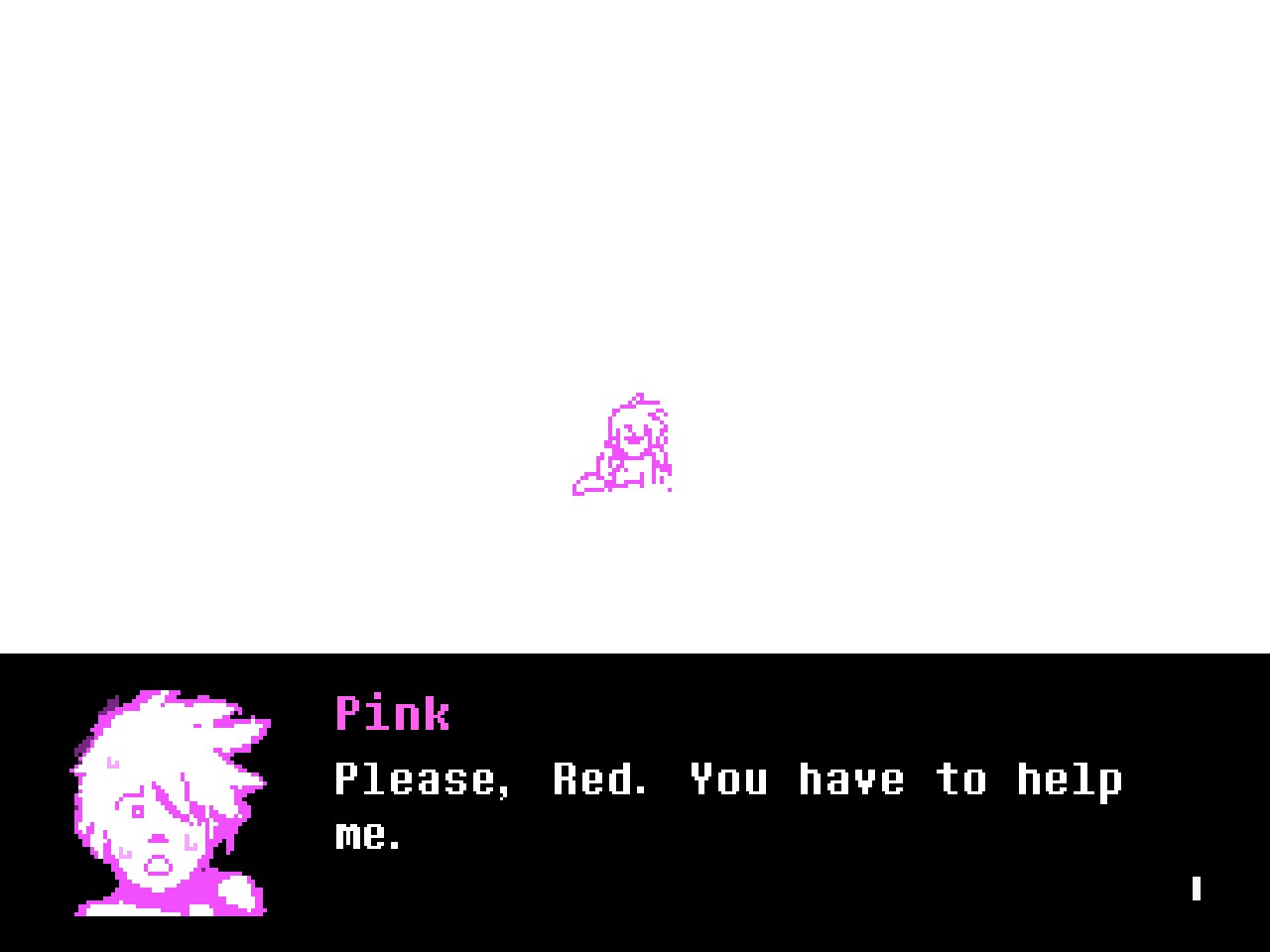
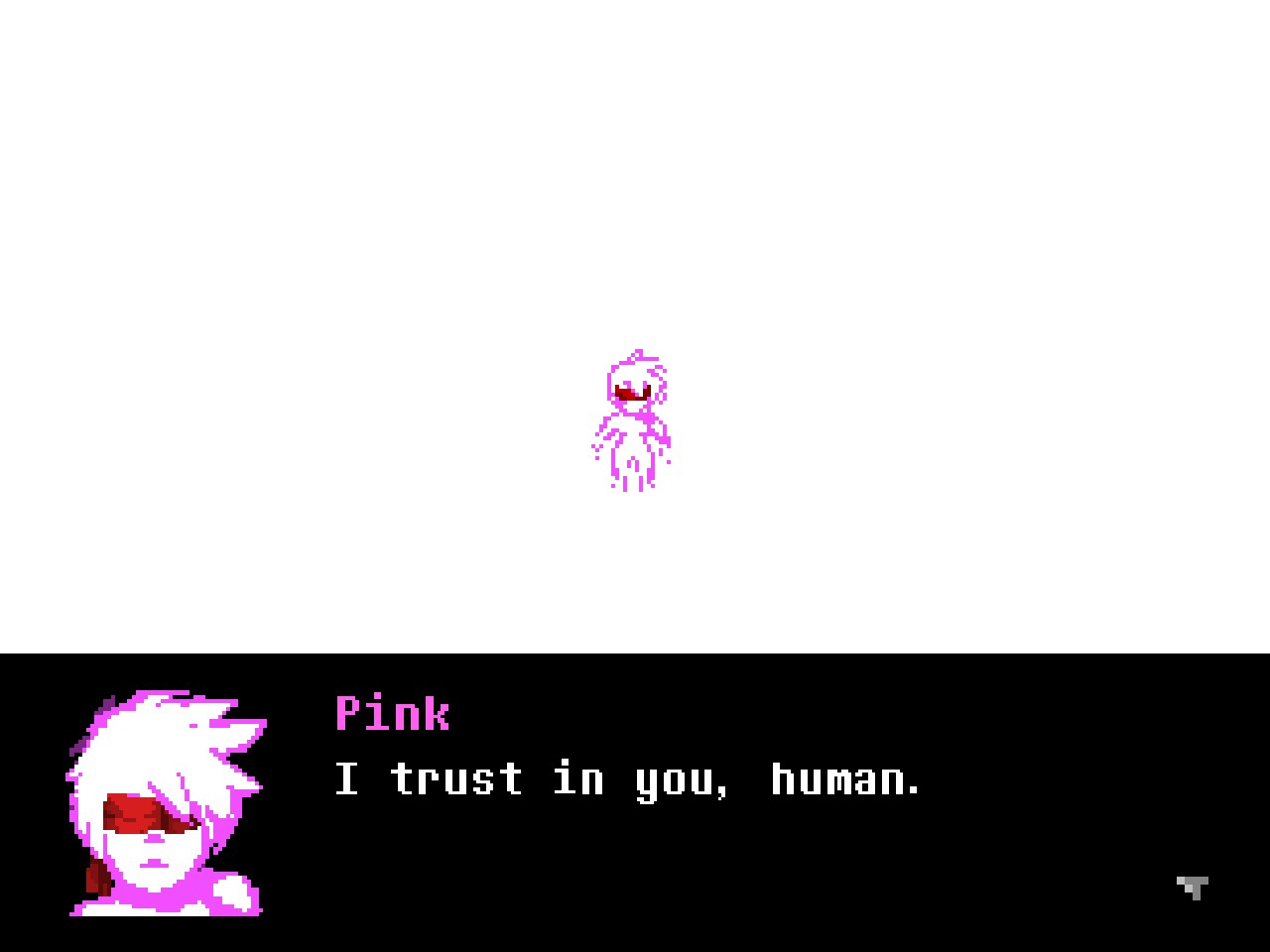
Which... to draw the unfortunate comparison, feels like an Undertale/Deltarune thing. Undertale has a Player/Character separation twist which works, and ties into how you've been interacting with the world the entire time you've played. It is handled very intentionally, as part of the game's exploration with how you engage it. Likewise, Deltarune seems to be setting something similar up; given how it plays with the SOUL that inhabits Kris, what events the player is allowed to witness (whenever the player's view leaves Kris, it's always because Ralsei prompted Kris/the player to focus elsewhere), how the ending of Chapter 1 explicitly draws a distinction between Kris and the SOUL, etc.
Everhood, in contrast, is just so muddied. Murder is Awful Until It's Good. Pink = Red except also You = Red and also also Red Was Destroyed ten minutes into the game. Red = Self-Control and also Surrendering Control. To say the script needed another pass is an understatement.
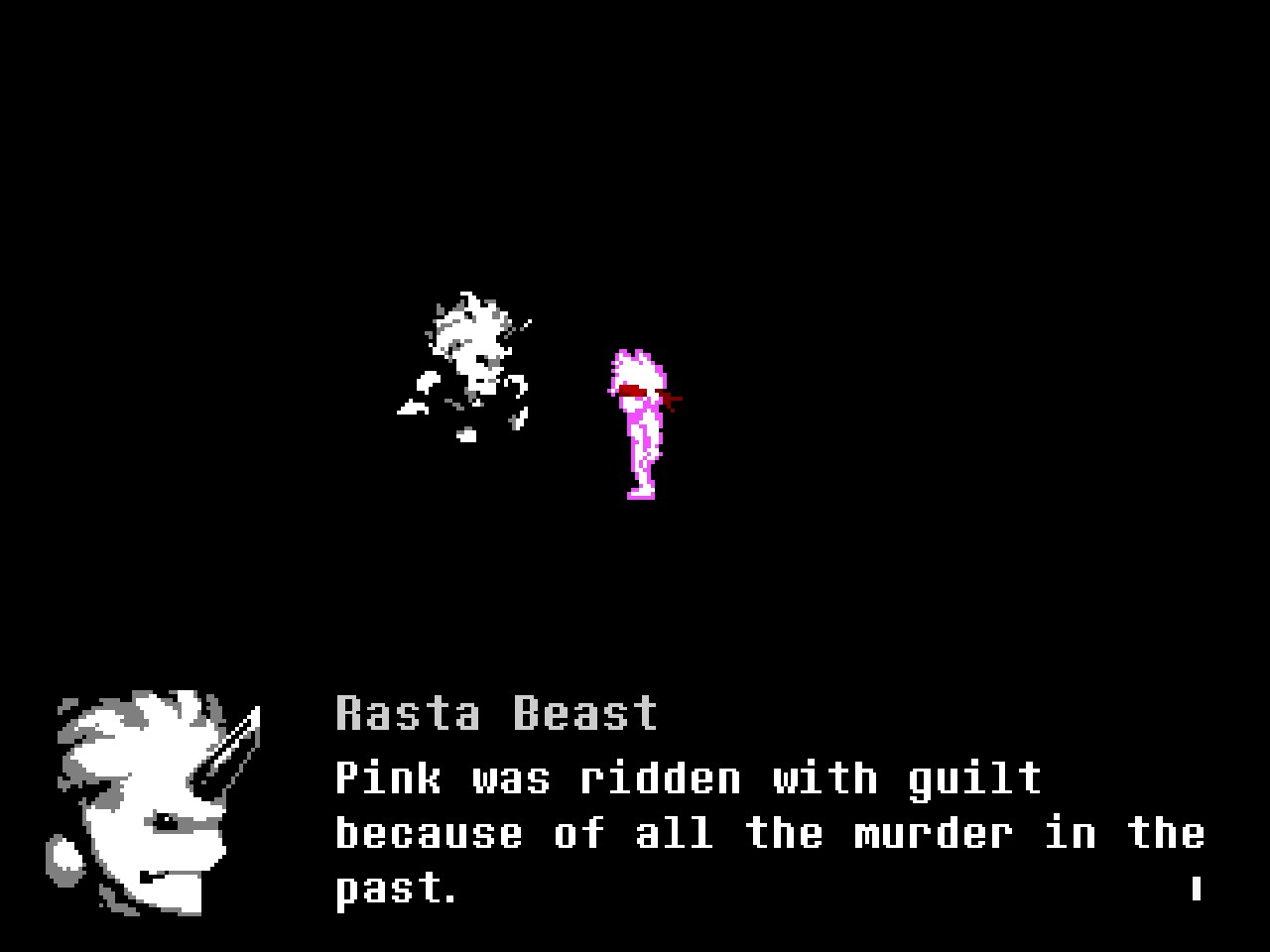
You get one last meeting with Frog before wandering into a swamp. You can trudge through the infinite swamp for as long as you like, but the only thing to do now is to stand still and let yourself slowly sink into the mire. Great, more muddling of imagery! The problem with the realm was that it was stagnant, and the final solution to stagnation is... to stand still? The final step to not simply accepting what's happening is... to stand still and accept what happens? Great job, Everhood.
You're eventually given a prompt to let yourself sink all the way. I get this is supposed to be accepting that Things End, and being at peace with Death (in both the metaphorical and literal sense), but it felt like self-harm to me. I didn't love it.

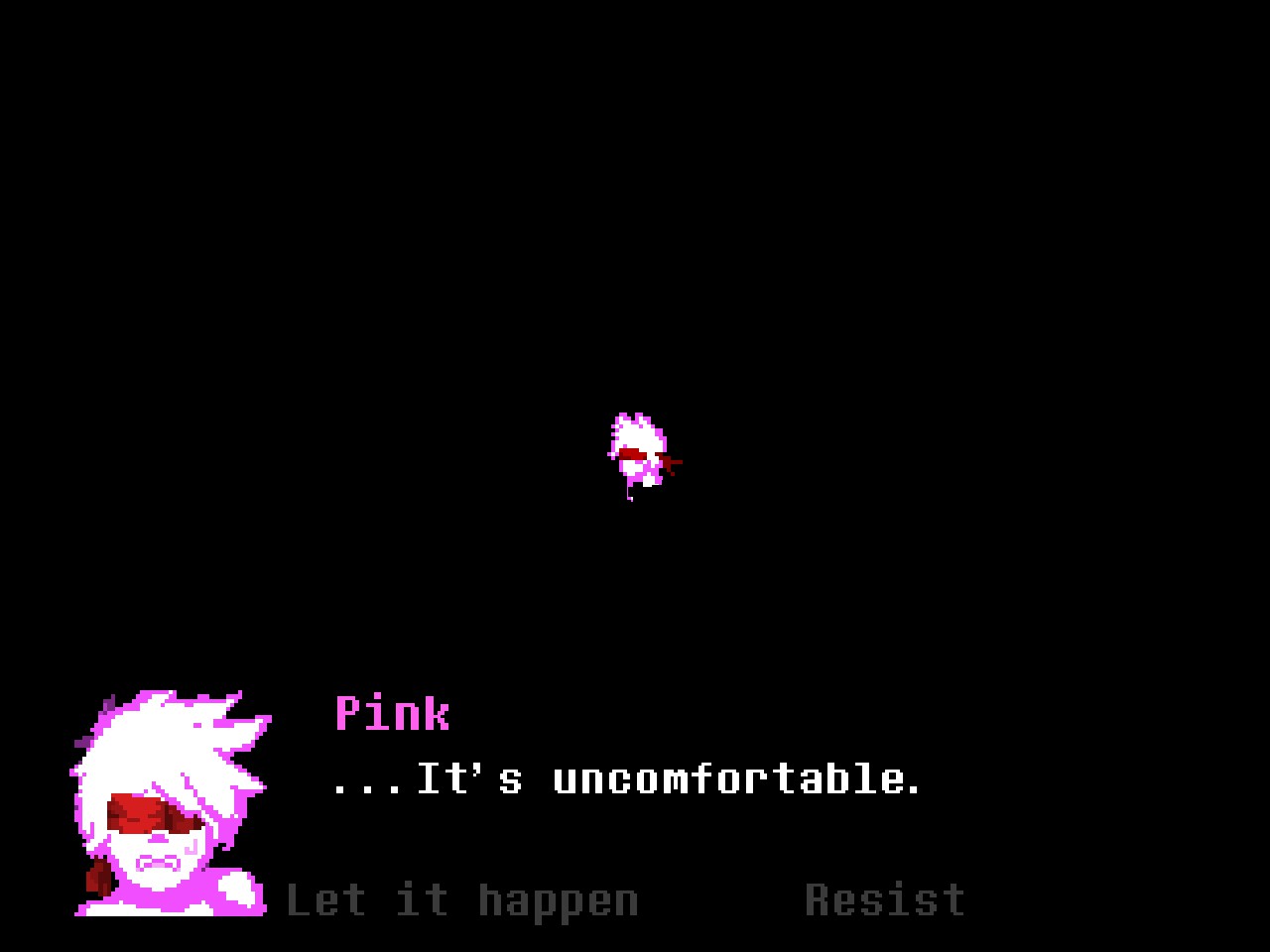
Ultimately, you have to choose to let yourself die. There's a final-final-final battle against an abstract cube, titled The Universe.

And then, it's all over.
Blackness.
...
And then the realm is reborn! All the characters from the game are there! Hooray! They all love you and thank you for freeing them! Hooray! Happy ending!
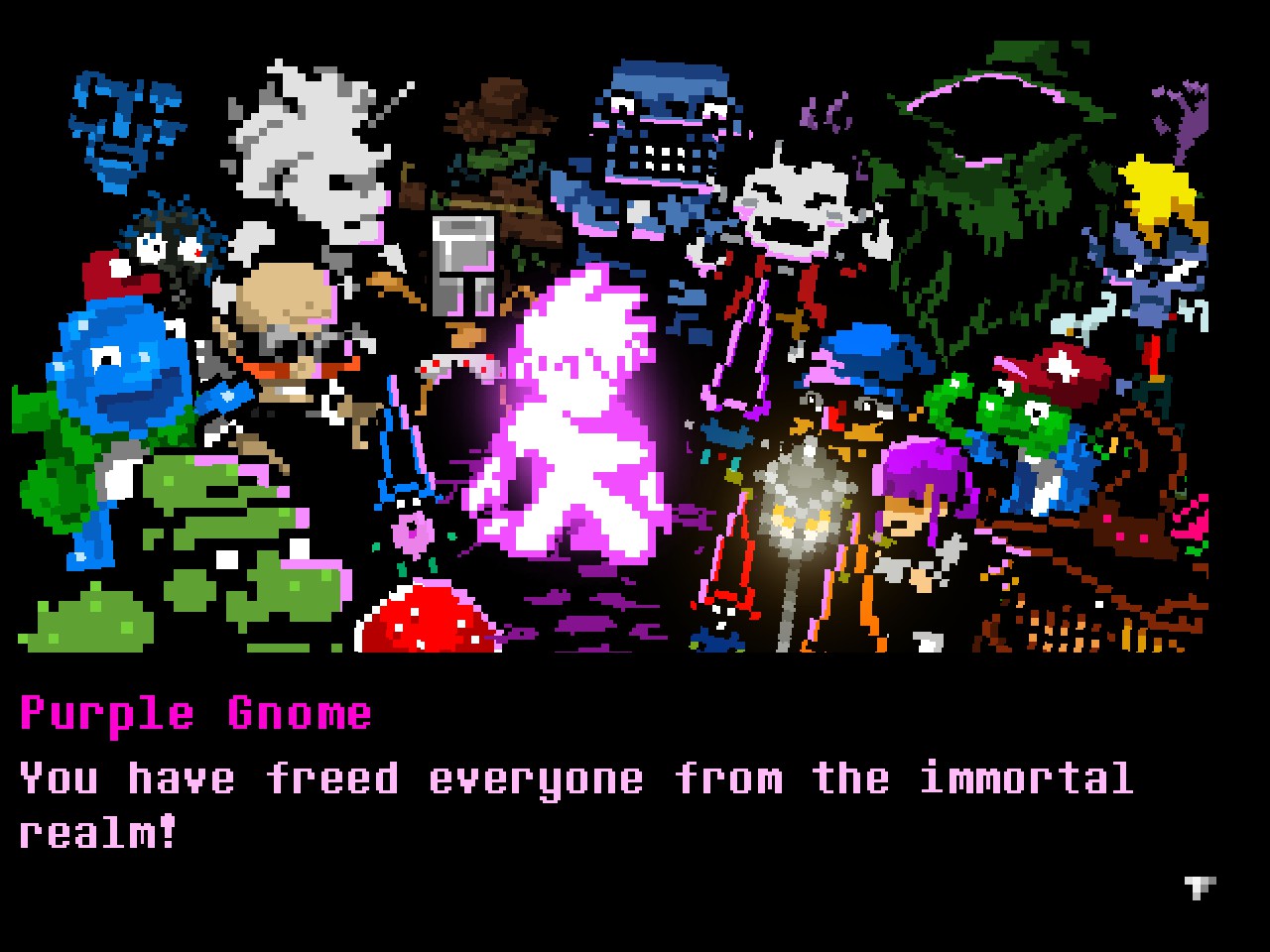
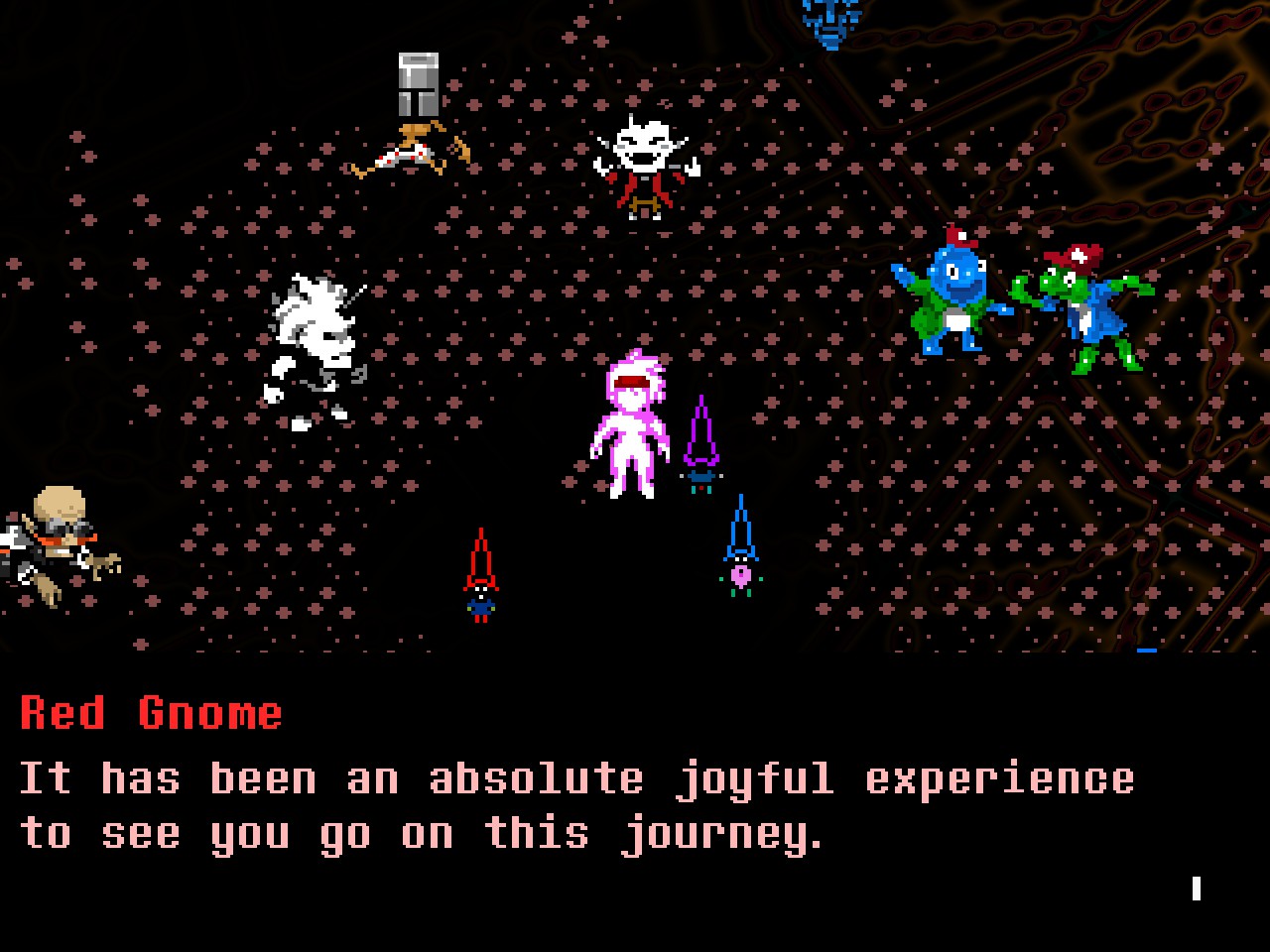
You know who else is there? The Buddha!

"What?" you might be used to asking by now. And, yeah, Buddha is just kinda there. Symbolism!
Except wait! If you stare at the Buddha long enough, he turns into Jesus!! S-symbolism??

"WHAT?" you might be yelling, if you're like me.
So Everhood just goes ahead and casually conflates Jesus Christ and the Buddha. And here's what I have to say about that: Don't! Do not! Don't conflate religious figures like that!!
I think I can get a sense of what was going through the developers' heads. Jesus Christ is a figure of self-sacrifice, and you had to martyr yourself in the game by... killing everyone. Doing a lot of murders. Just like Jesus! It's like Matthew 5:38-40 tells us: "Kill them all, and let God sort them out."
And hey, the whole game is about death and rebirth, so let's throw the Buddha in there! That's who the Buddha is, right? Fat guy who reincarnates? Perfect! We already got a skinny guy who reincarnates, so that's basically the same thing. Slap 'em together! It can be a poignant message about how all religions are basically the same, when you think about it do no fucking research.
Admittedly, "they did no research" is a harsh thing for me to assume.
Gotcha! I know they did no research because they admitted it, in that same IGN interview with the writers/developers.
Though multiple sequences seem to call to mind specific philosophical traditions or schools of thought, Norgren says he had no specific ones in mind when he was making Everhood.
This is bullshit. You can't claim to have "no specific philosophical traditions in mind" when you're adding Jesus Christ and the Buddha to your game. You can claim that you didn't intend for your game to be about any one specific philosophical tradition or religion, but you can't pretend your repeated Buddha references merely emerged from the aether of your mindscape without you making a conscious decision to include Buddhism in your game.
I guess he could mean "I knew so little about Buddhism that any reference I made couldn't actually refer to its school of thought, because I'm not familiar enough with it to mean anything" which -- that's bad!! Know what you're saying maybe??
Rather, he was very focused on the idea of an endless journey or quest. He says he wishes he was more educated on some of the individual schools of thought, but then counters, "That would also defeat the purpose somehow, wouldn't it?"
NO.
NO, IT WOULD NOT "DEFEAT THE PURPOSE."
Being better educated about the sources you are drawing from is both the respectful thing to do and going to make what you produce better. Drawing from a place of understanding is going to produce deeper, truer material than your shallow assumptions ever could. That's always going to be true.
When you care about other people and other cultures, you enrich yourself, and that's going to enrich the things you create. When you don't care about other people and other cultures, you end up implying that Jesus Christ and The Buddha were basically the same person. This is just my opinion, but I personally believe that rich understanding is cooler than thoughtless dumb shit.
I don't think the writers were wrong for wanting to incorporate Christian or Buddhist imagery into the game, but I find it galling that Norgren found a justification to stay uneducated about the religions he was appropriating. I find that extremely crass. It's insulting.
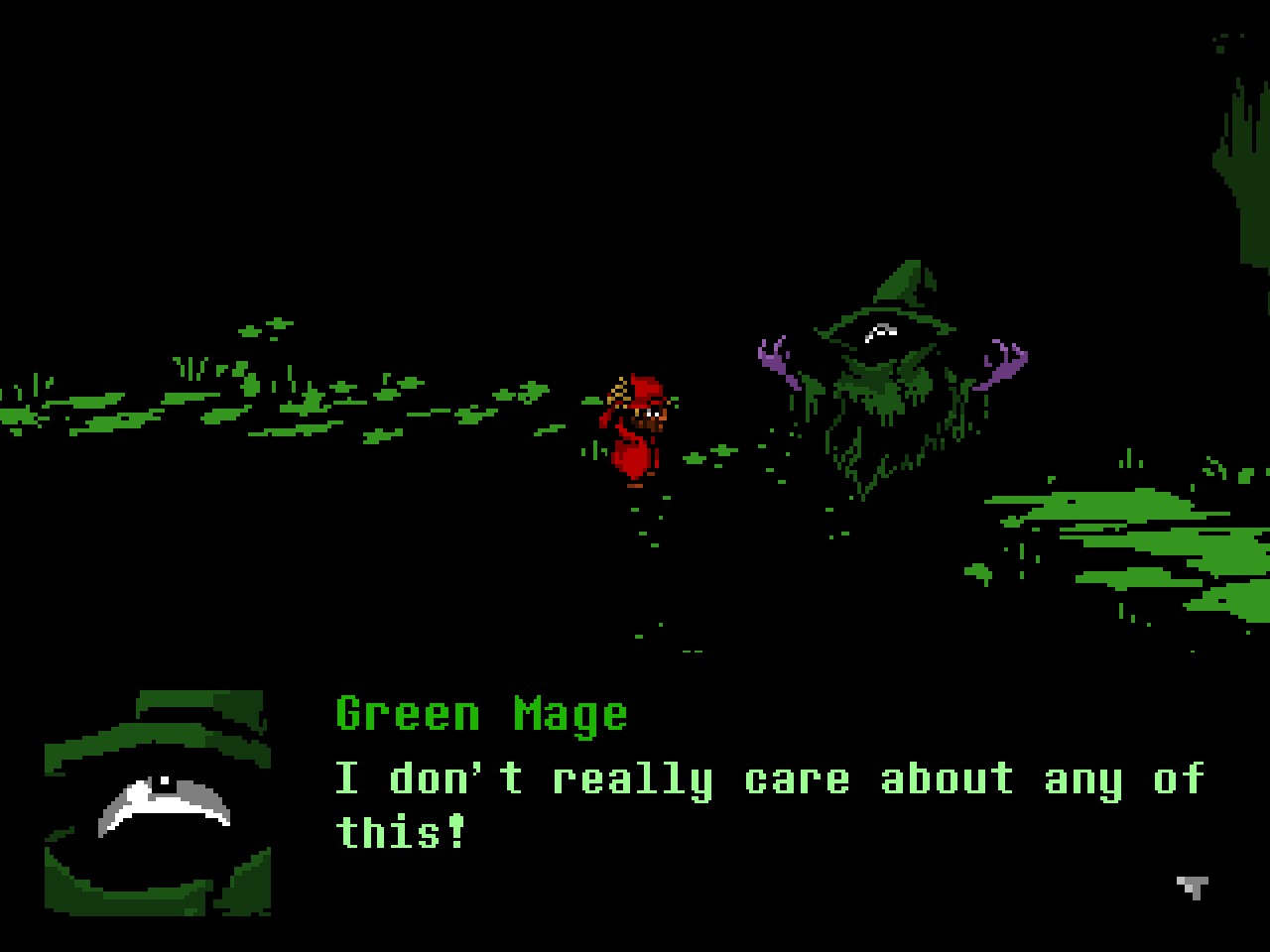
Alright. With that out of the way, it's finally time to talk about them.
I'm finally ready to talk about Harrowed Haley.
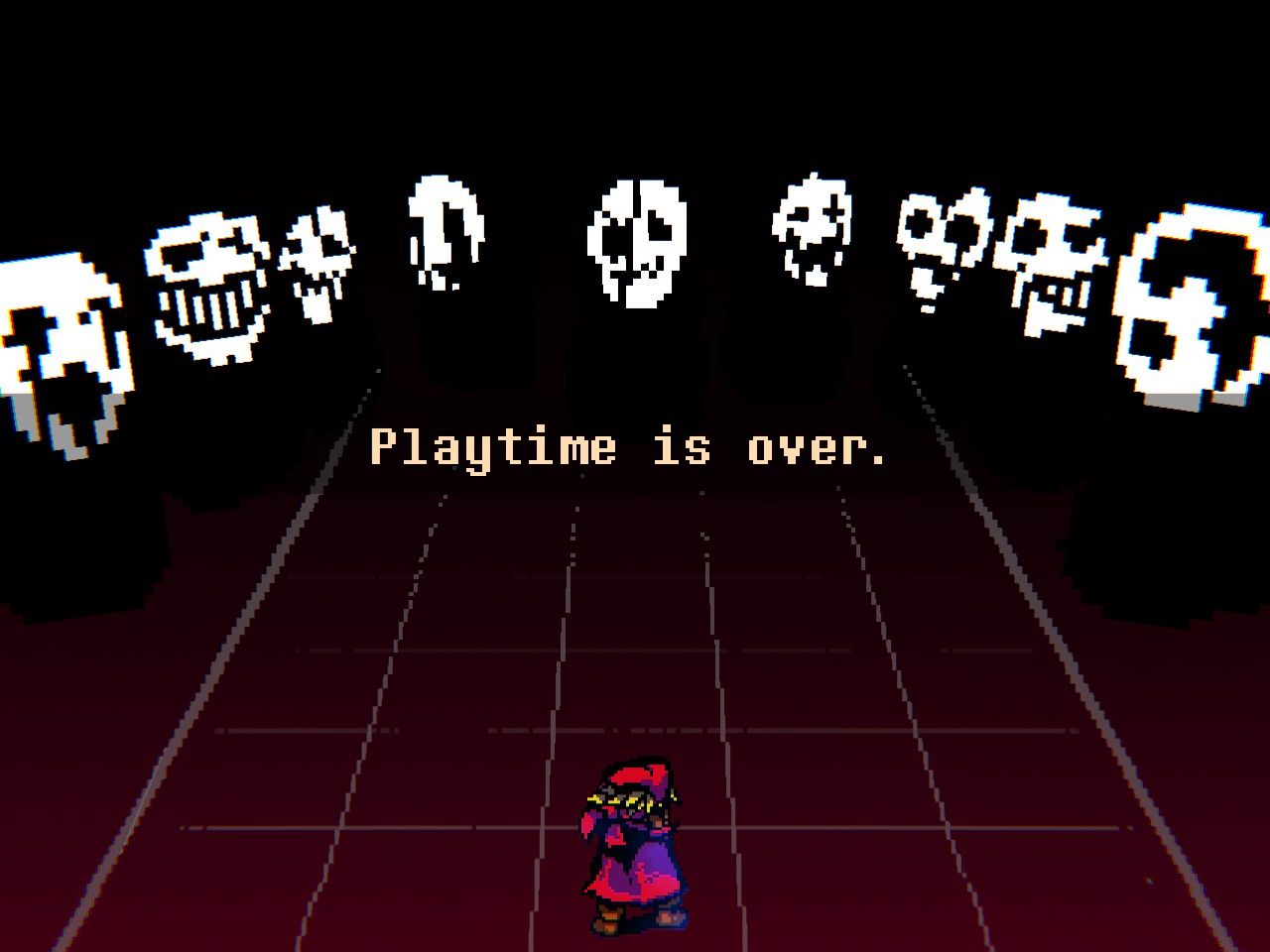
PART FUCK THIS GAME: Harrowed Haley
Remember, Harrowed Haley? The tormented, barely-cognizant wretch trapped in Professor Orange's lab, driven insane by pain and hallucinatory terrors? Well, in addition to BuddhaJesus and the rest of the gang, Harrowed Haley is there too! And they're lucid again! And while every character showers you with effusive praise and gratitude, it's Harrowed Haley who is the most thankful of them all.
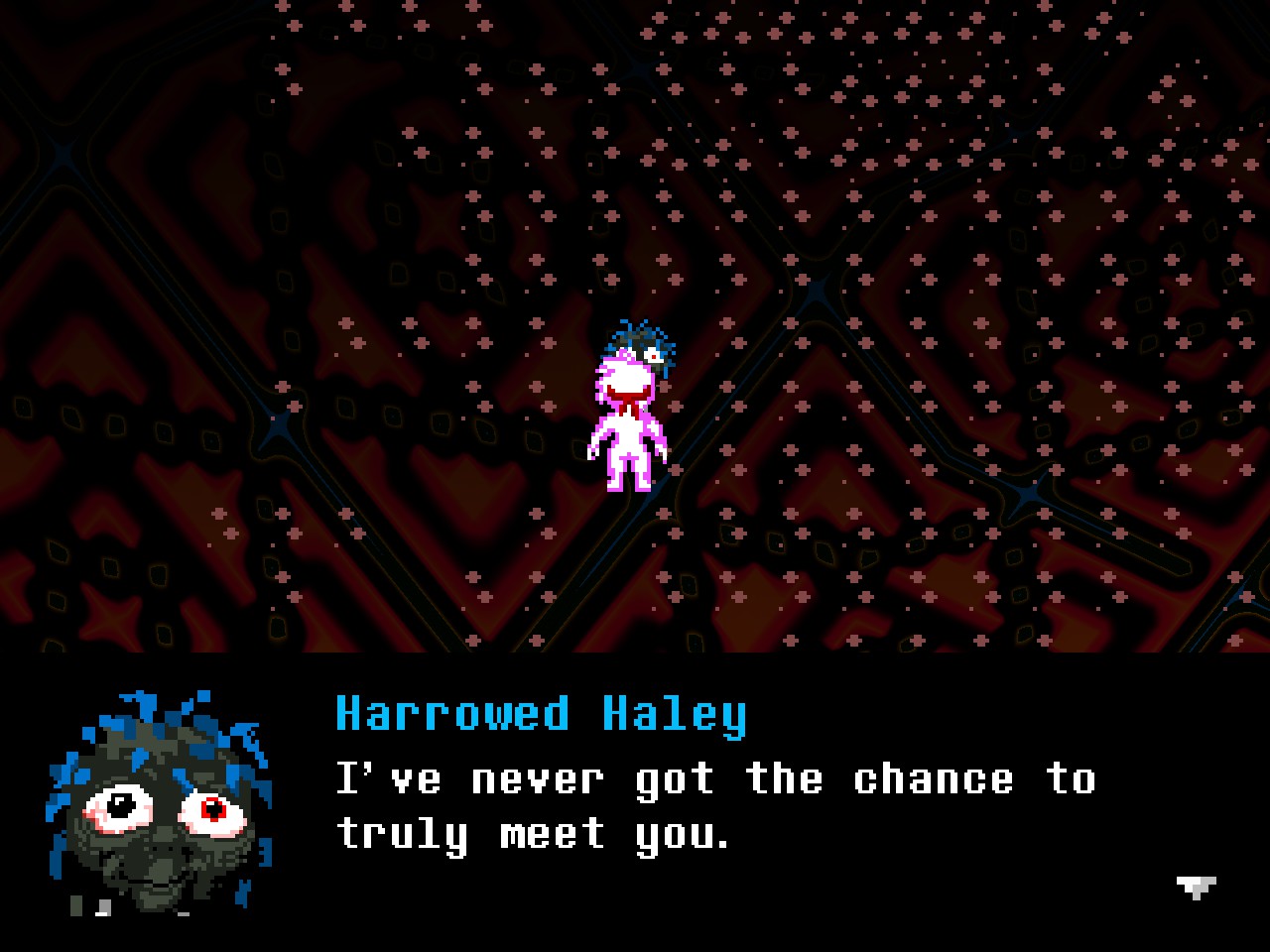
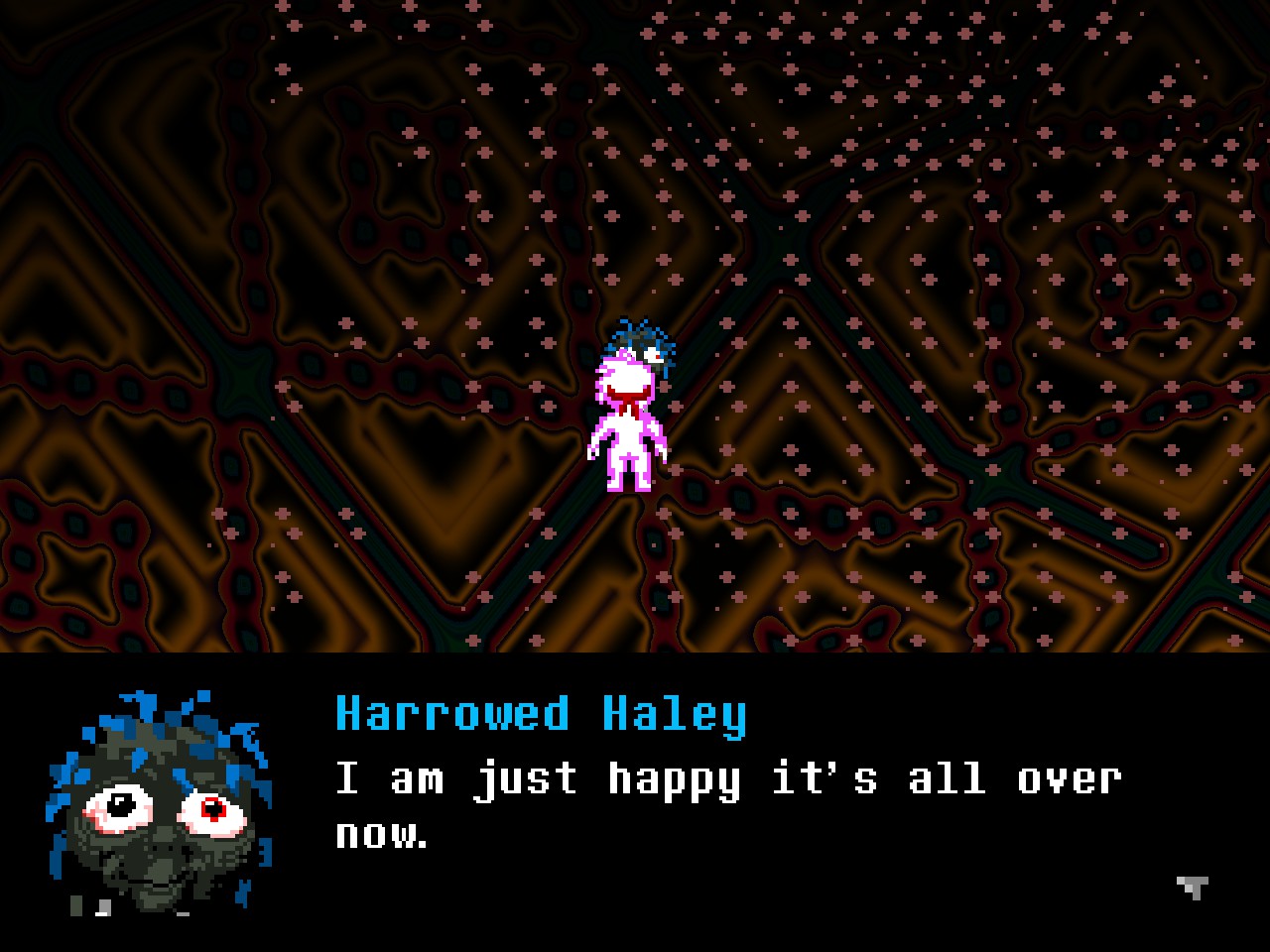
See, Harrowed Haley explains that their existence was "a world of terror," endless pain and suffering and delusion and nightmare, kept perpetually drugged by Professor Orange to prevent them from escaping. Their mind broken, their body wretched, for years and decades and beyond. And while they're happy it's over, they feel regret, because... well, here, I'll let Haley say it in their own words:
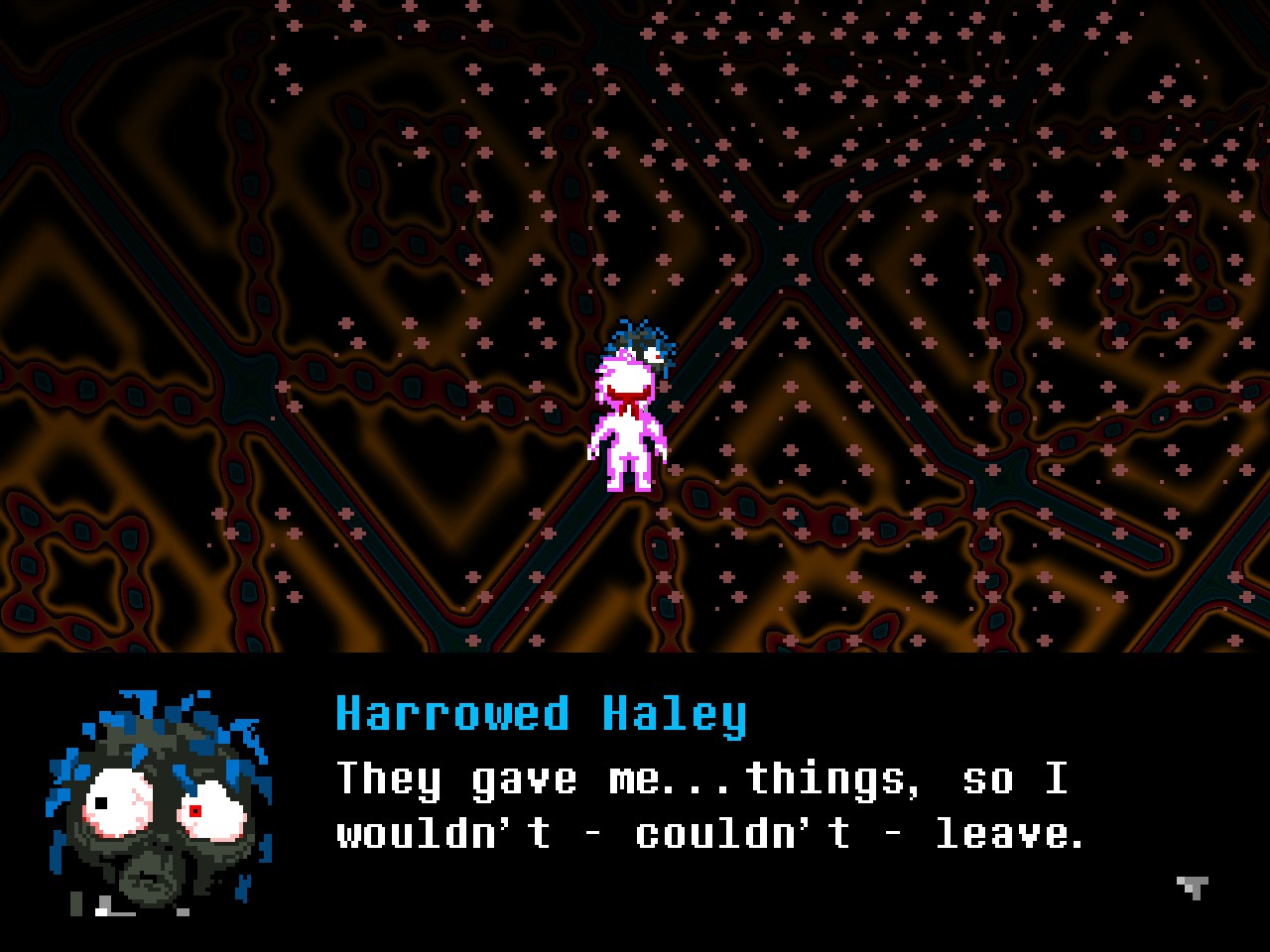
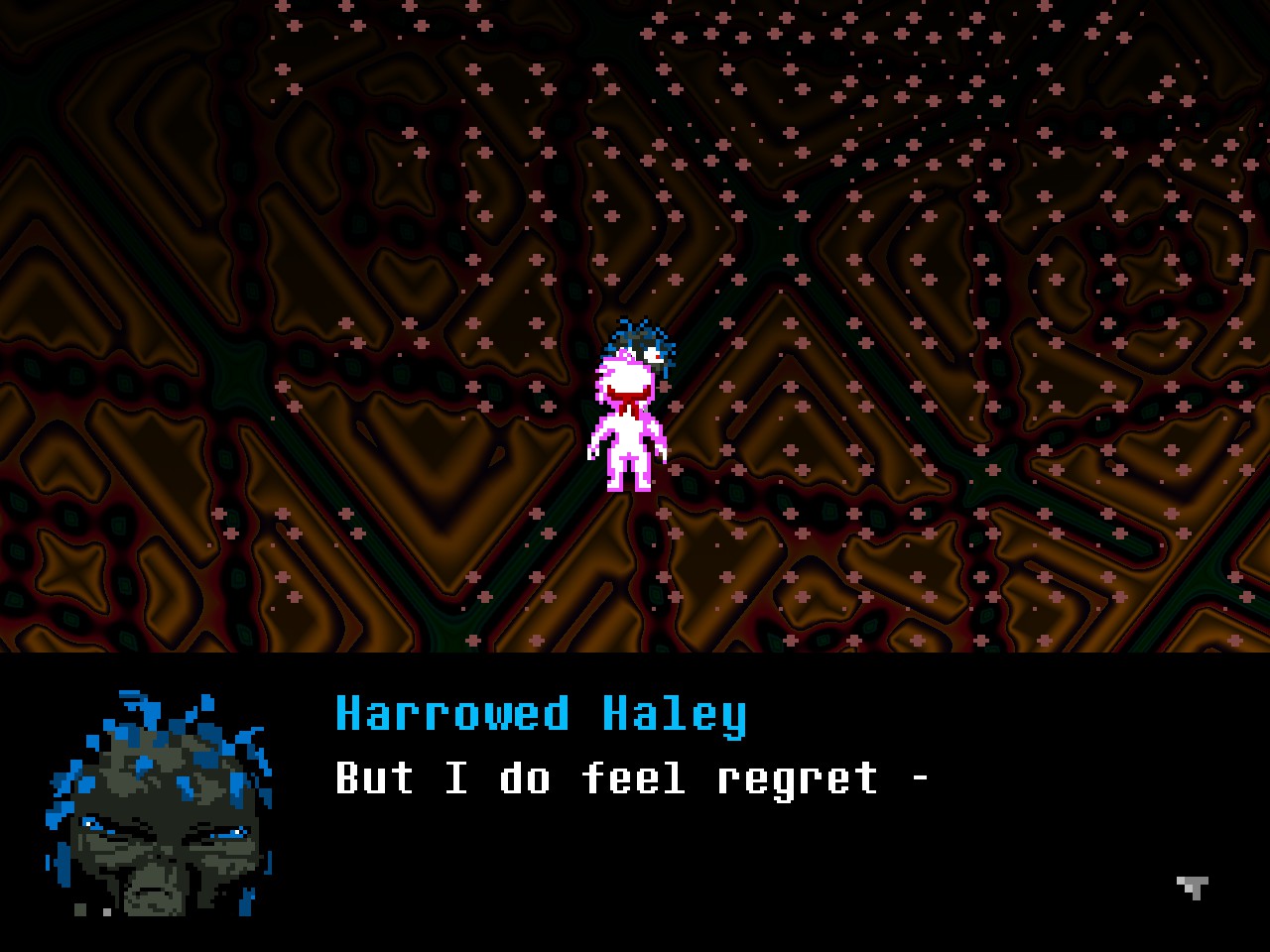
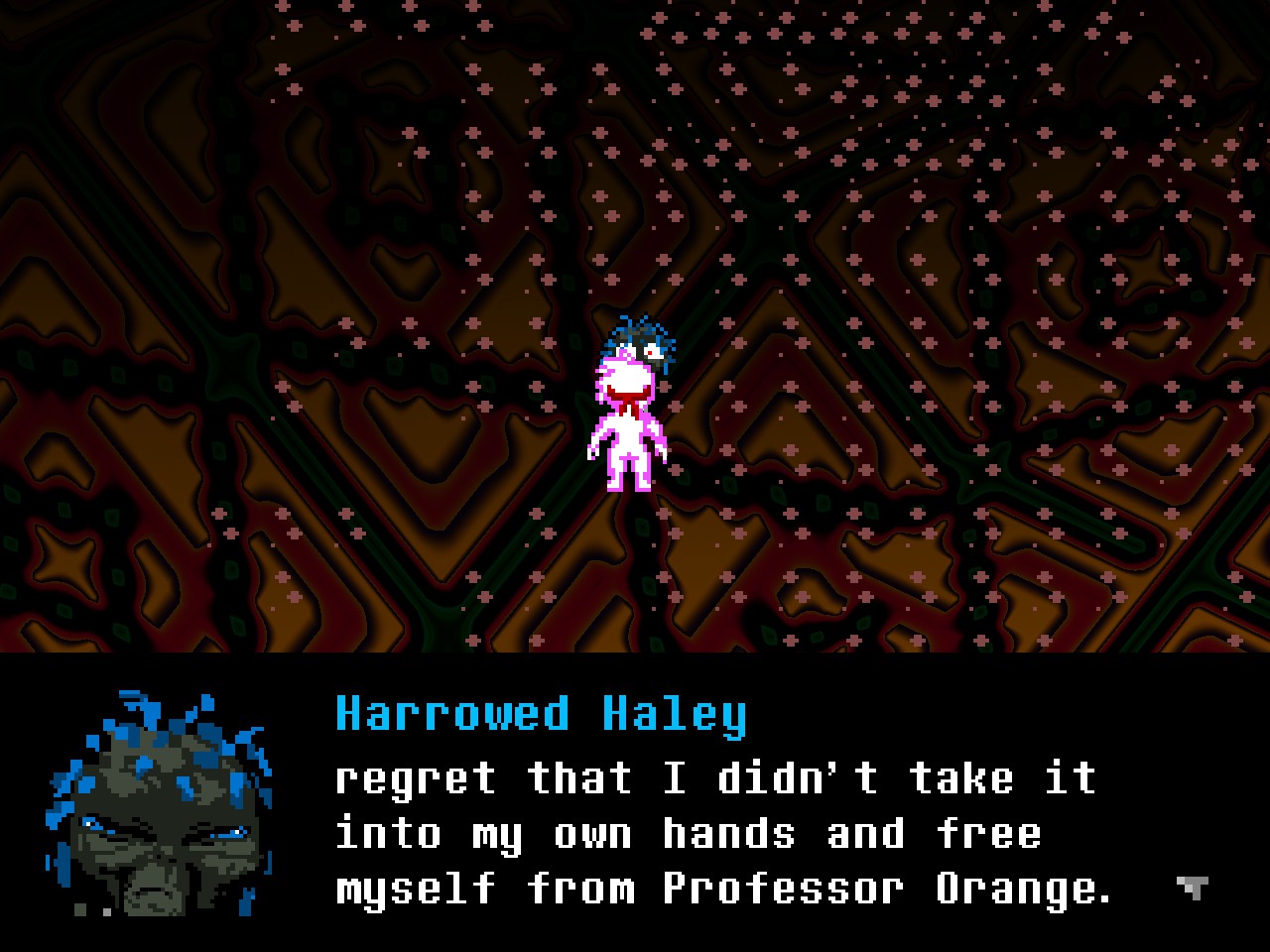
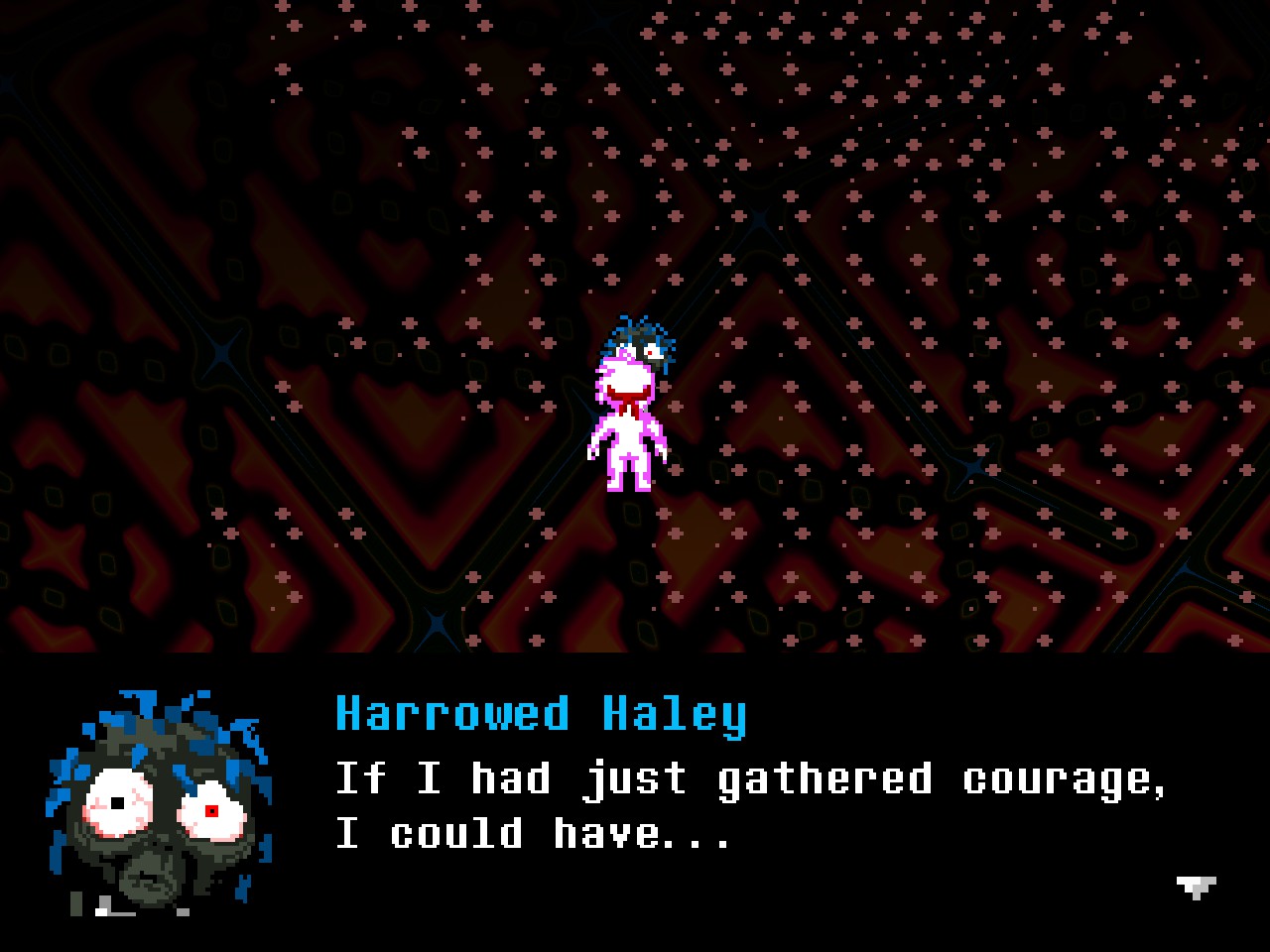
...
What you did to Haley was kill them.
That is how you "freed" them.
And Haley regrets not "freeing" themself.
Haley regrets not having the courage to take matters into their own hands.
...
Haley lacked the courage to take their life with their own hands.
Haley lacked the courage to commit suicide.
...
What can someone even say to that? What words can condemn that message harshly enough?
Now. Look. I understand that death is meant as a metaphor here. I understand the Everhood devs did not sit down and decide they were going to write a pro-suicide message as the capstone for their game.
But that is what they wrote.
...
WHAT THE FUCK, EVERHOOD
NO REALLY, WHAT THE ACTUAL FUCK
In a better game, one that consistently leads you to understand that "death" is not literal death, but is instead the feeling of death that can accompany trying to break out of an abusive cycle and into a new existence, this could have maybe worked. I get it. I've been in a situation that was killing me, and I can attest that the feeling of leaving that situation felt like both suicide and murder in turn. I am sympathetic to that metaphor. I would gladly, happily see that metaphor portrayed in a competent script, written by someone who understood it.
But it does not work in Everhood. It especially doesn't work when the devs can't help but throw some victim blaming on top of it. Never mind that Haley was mentally broken and perpetually drugged, they still regret not having the "courage" to do the right thing and kill themself. It is always the abuse victim's fault for staying in the situation, the devs seem to be saying.
Everhood has a victim blaming problem, and it's not subtle.
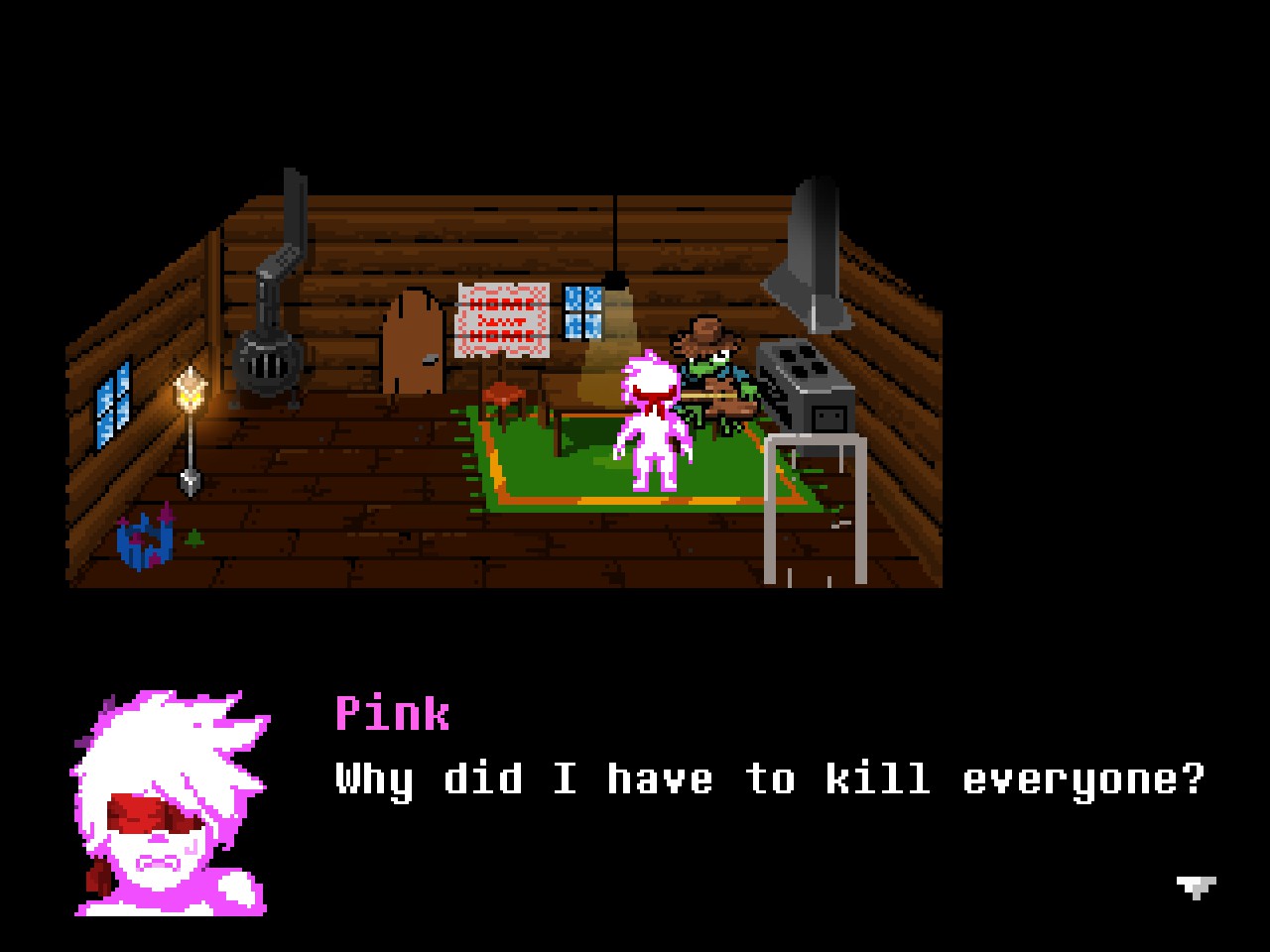
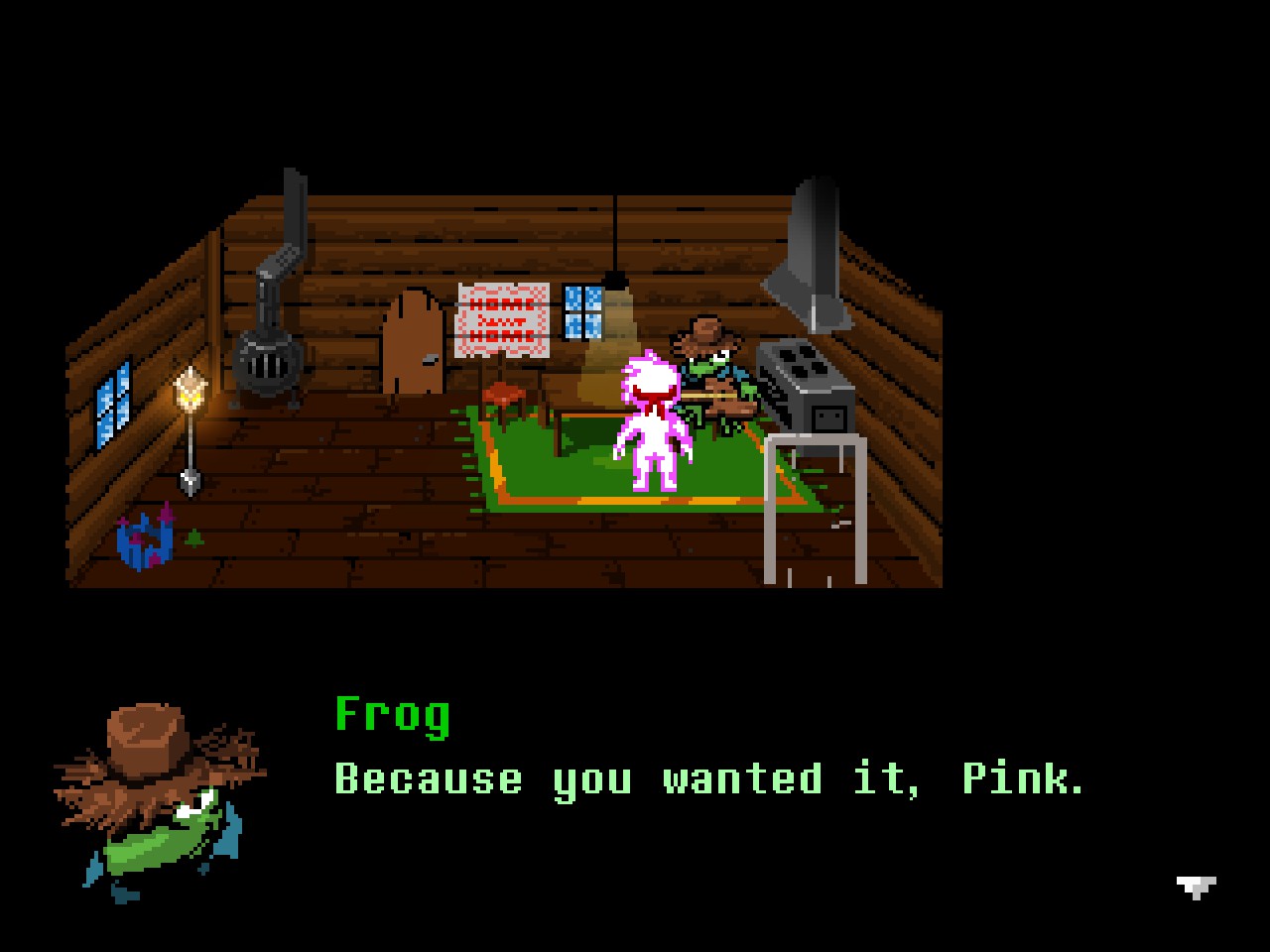
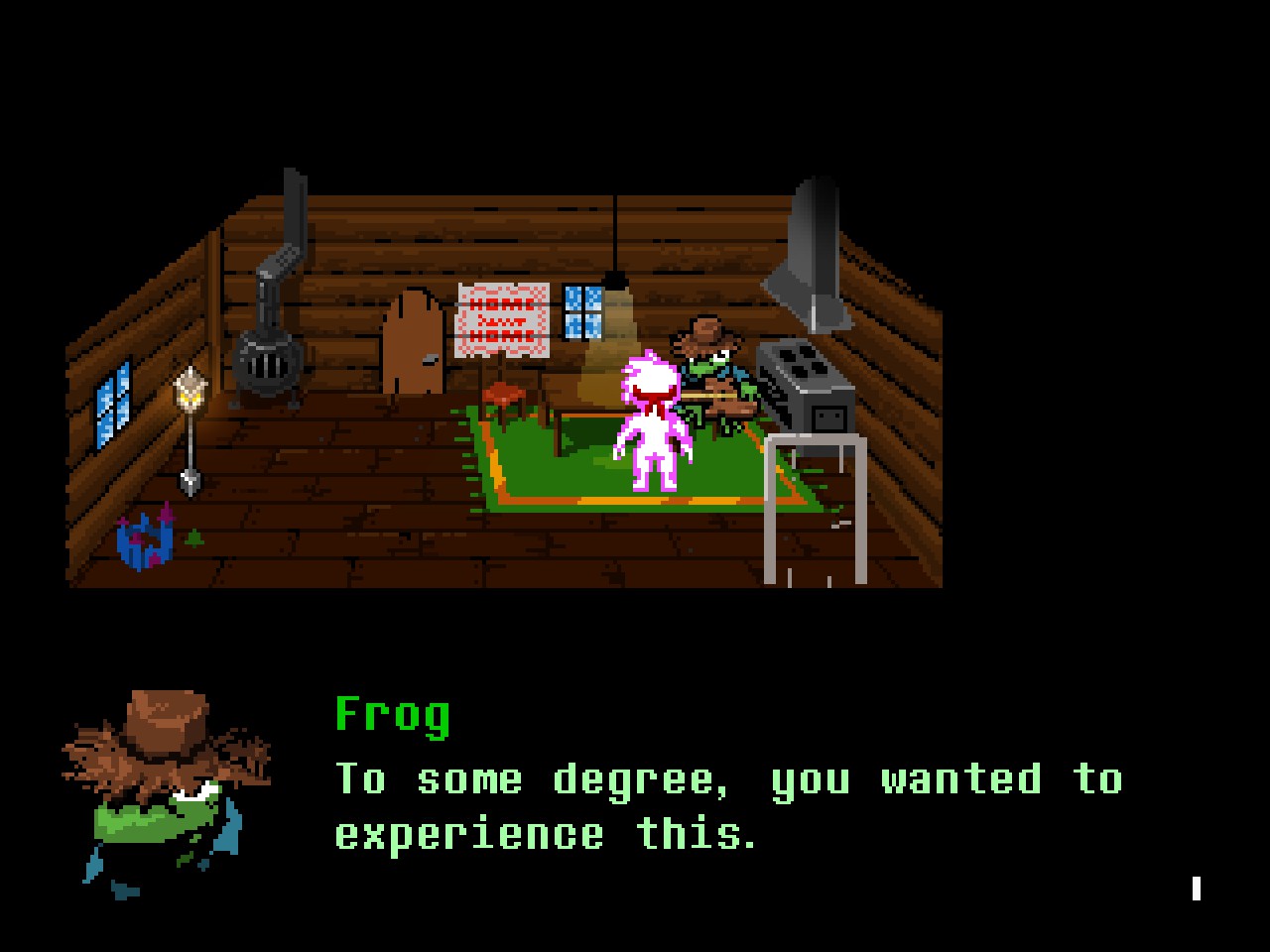
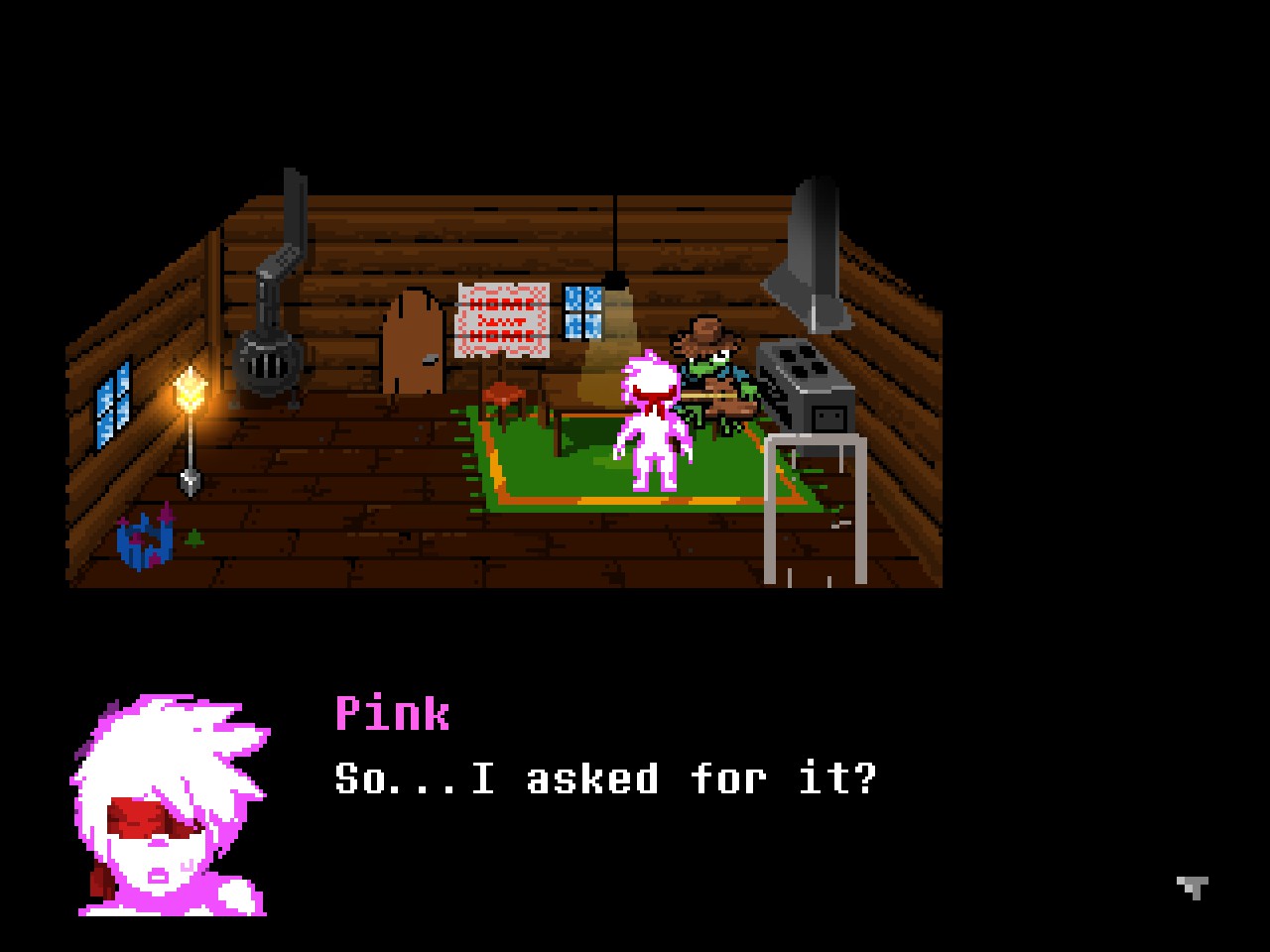
Everhood's metaphor does not fucking work. You cannot force someone to escape an abusive cycle, as you have to with Haley; you have to help them see their circumstances and want to leave. And it certainly doesn't help that Pink's "Kill Everyone Because They're Craaaazy" situation muddies those metaphorical waters beyond any hope of salvage!!
To put it bluntly, the conclusion to Harrowed Haley's story is the worst thing I have ever experienced in a video game.
The second worst thing I have ever experienced in a video game is also in Everhood, because these fuckers did it twice
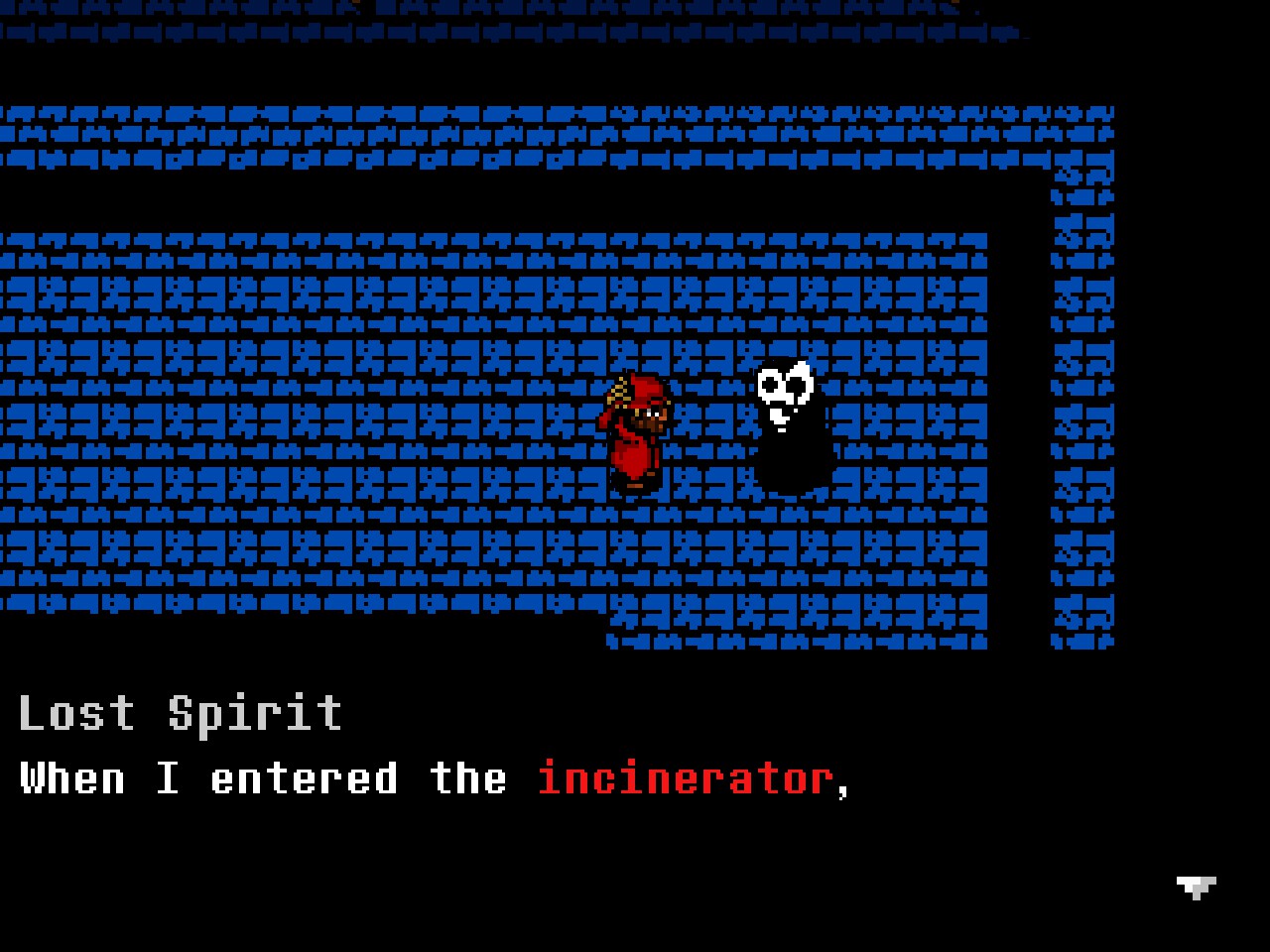
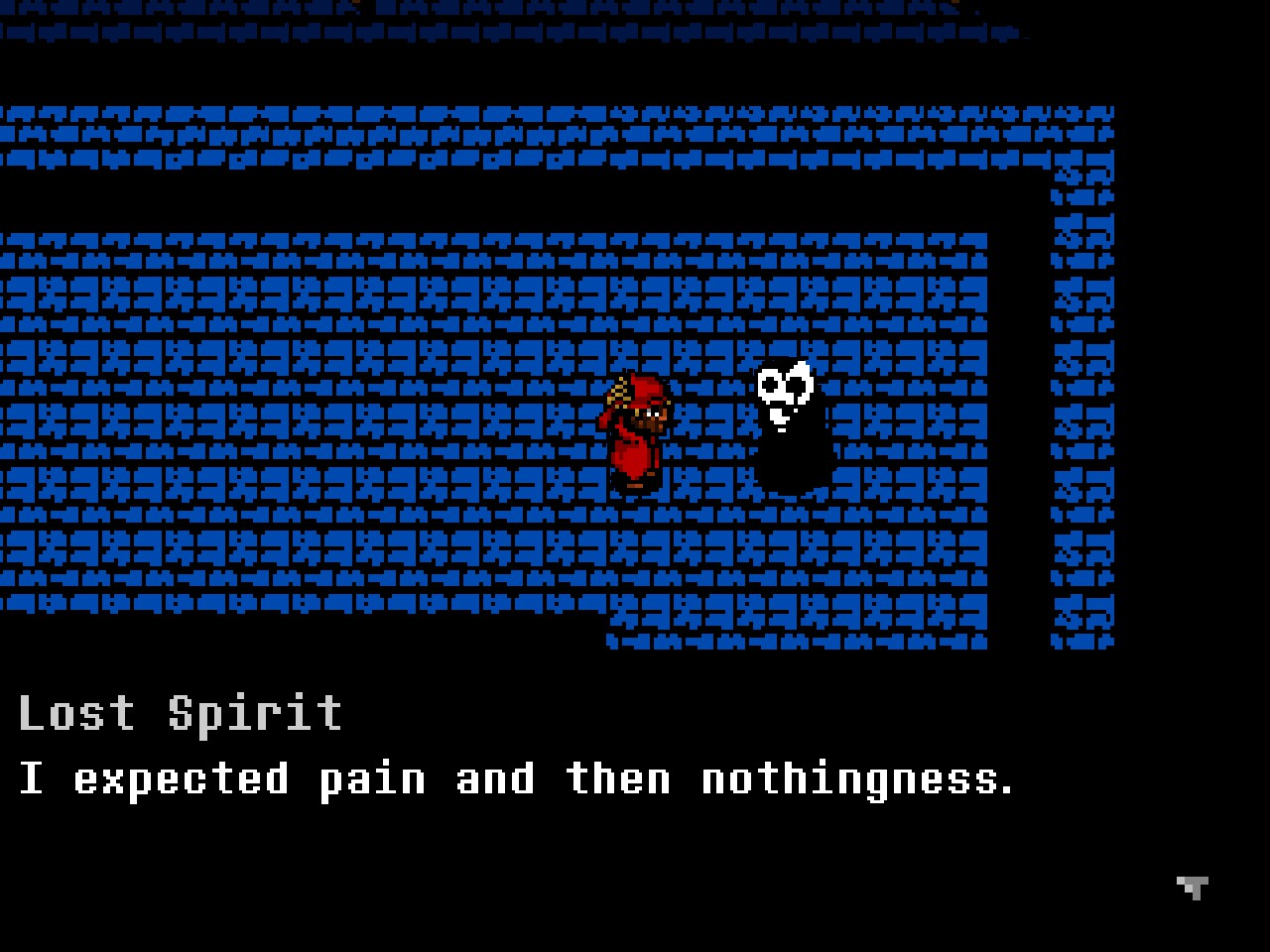
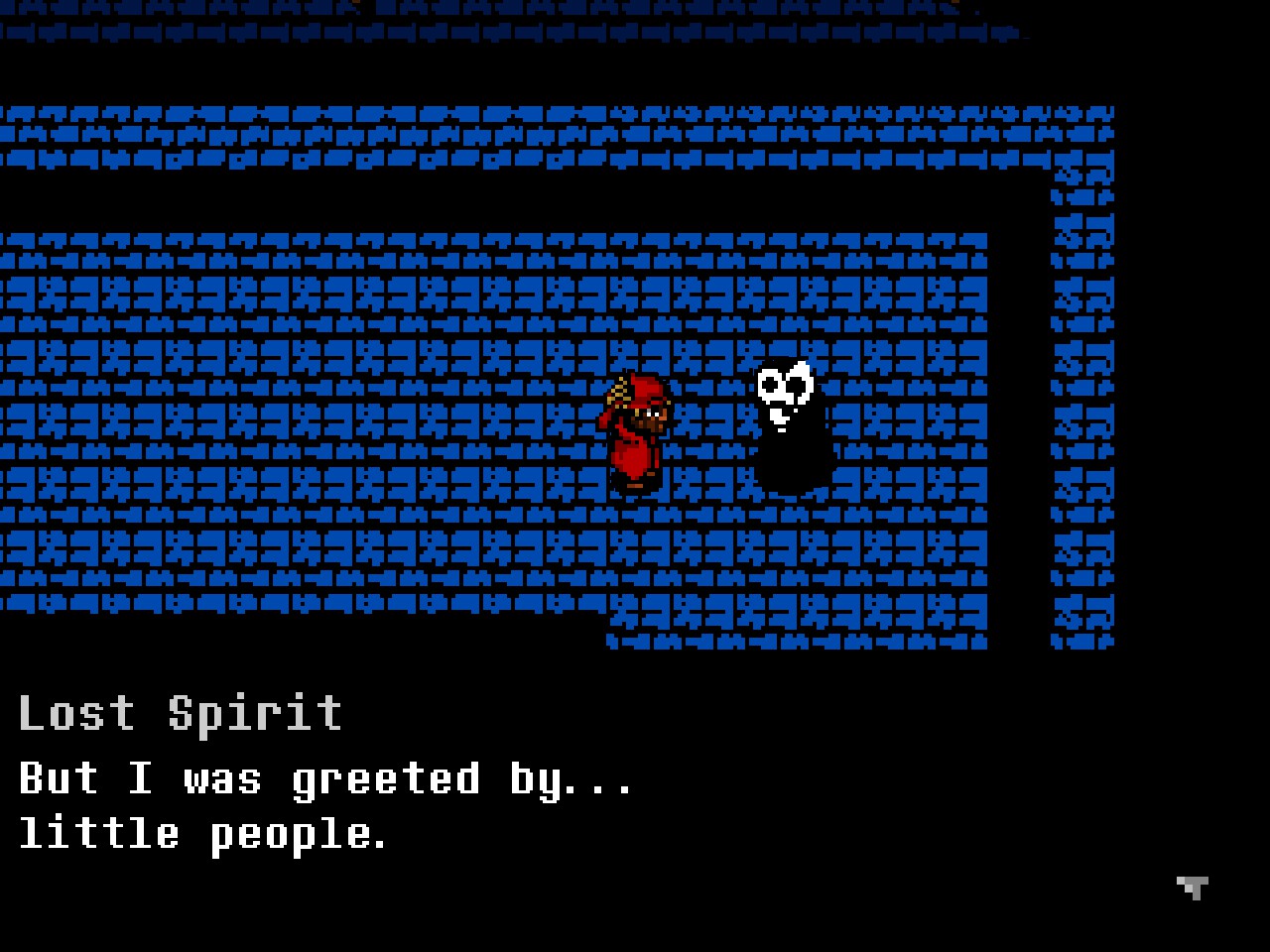
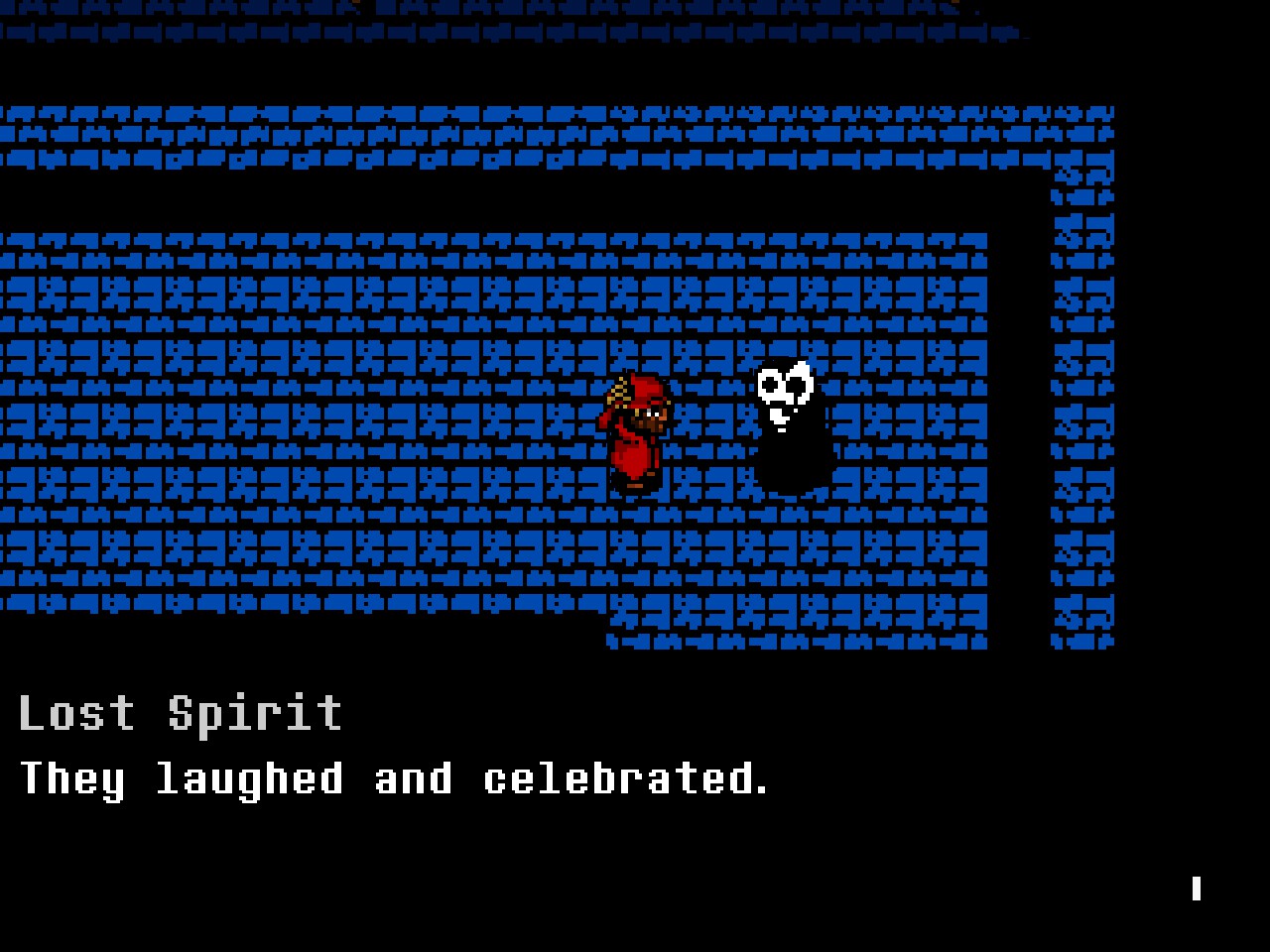
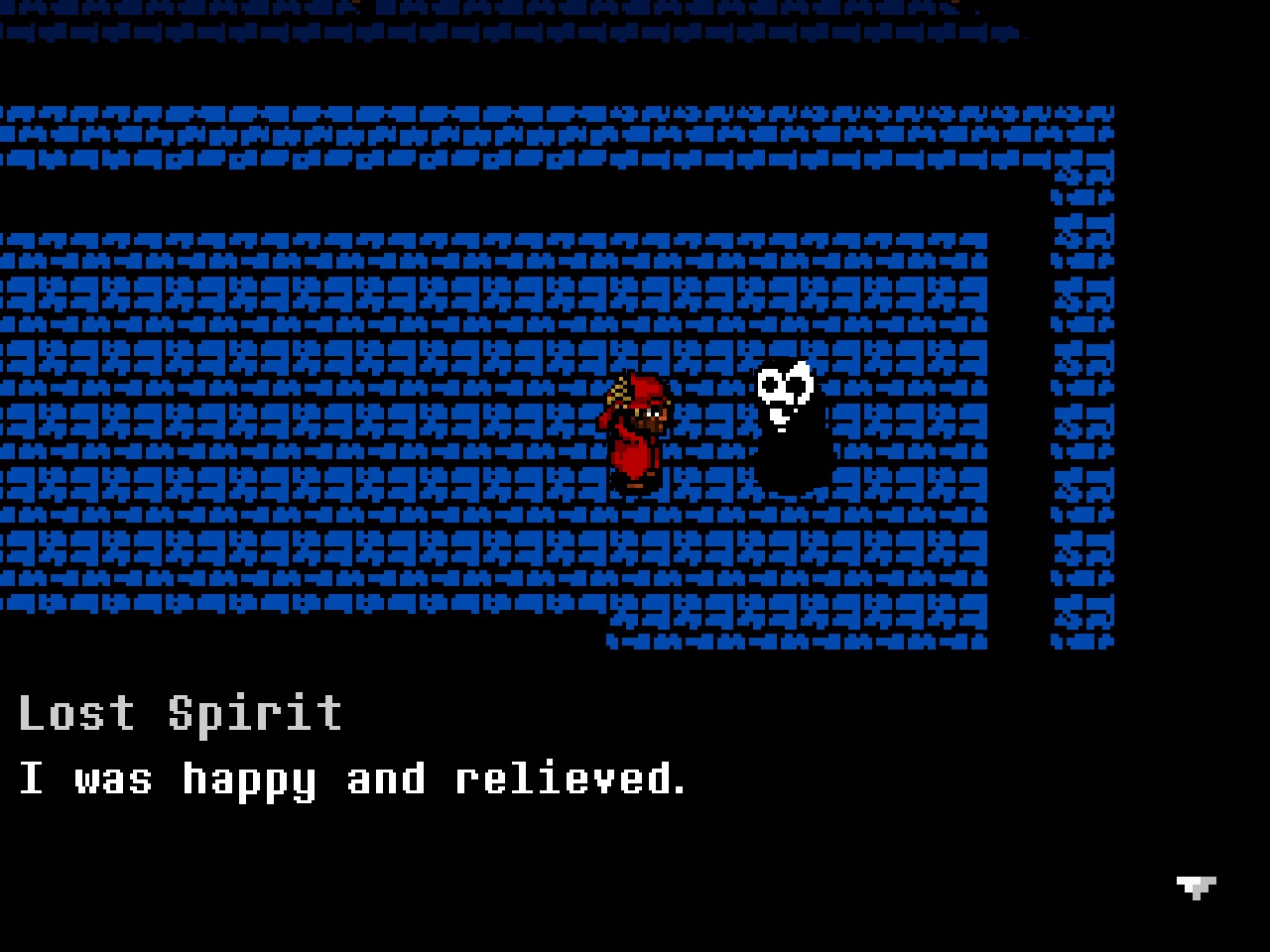
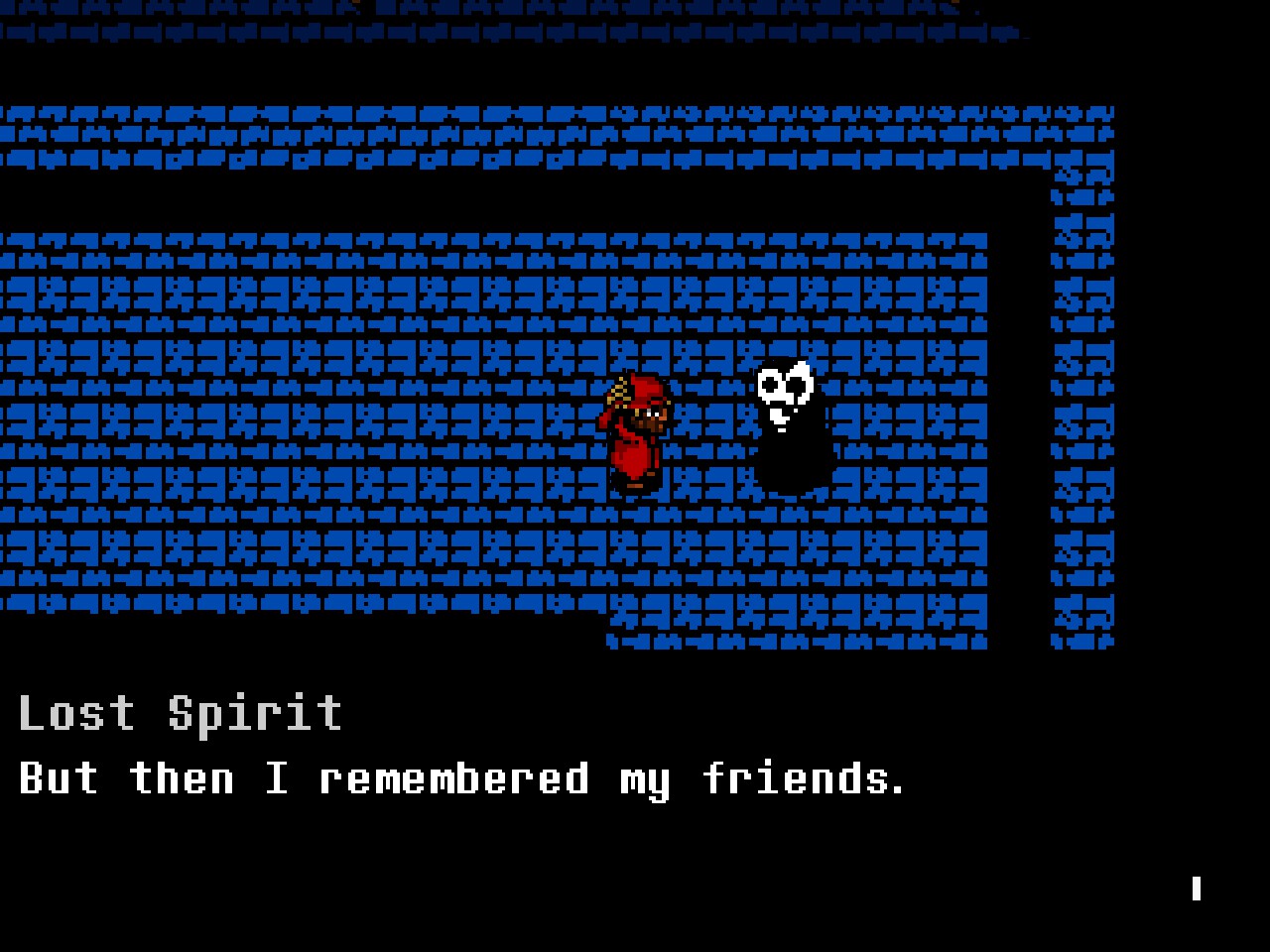
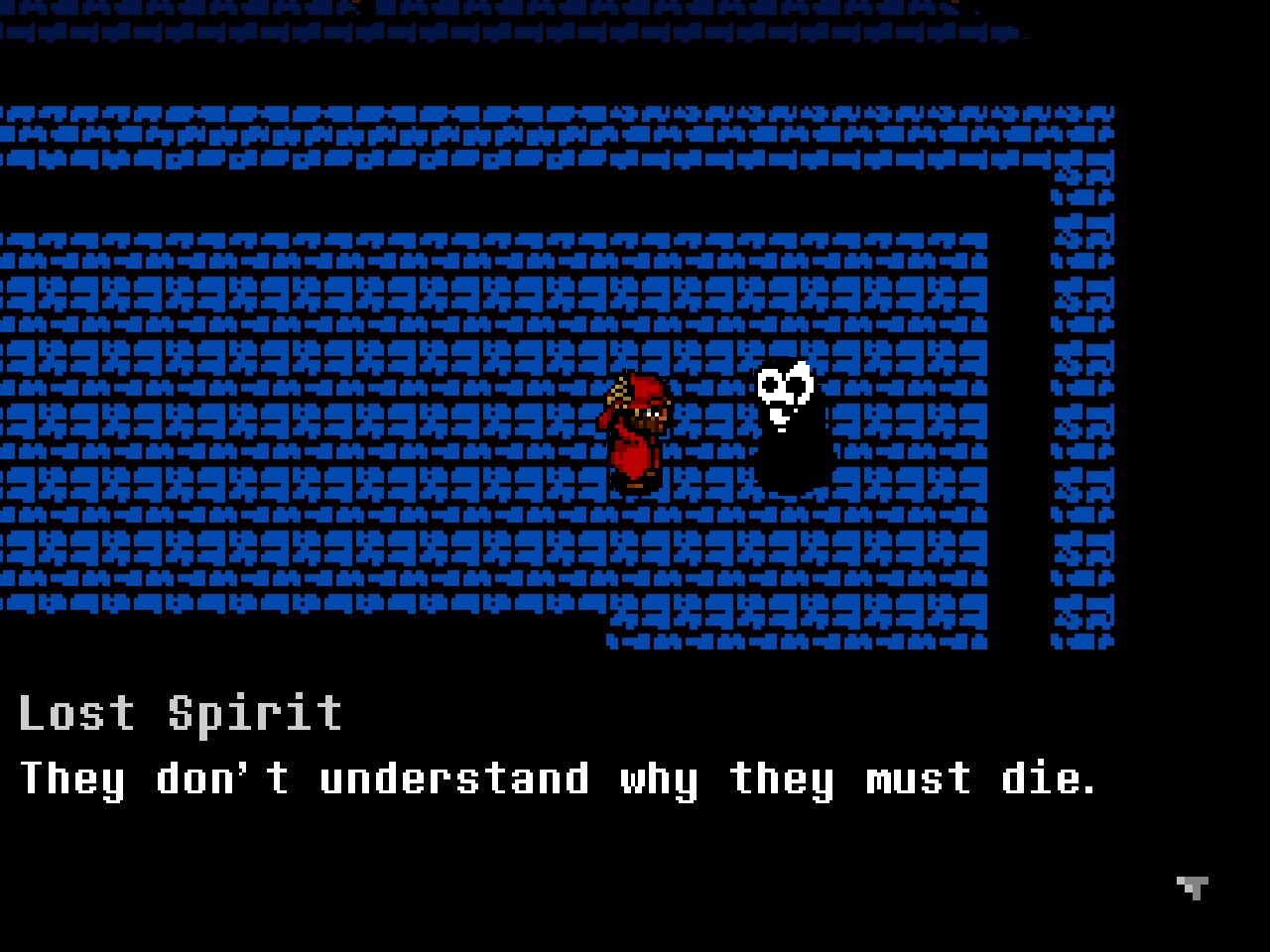
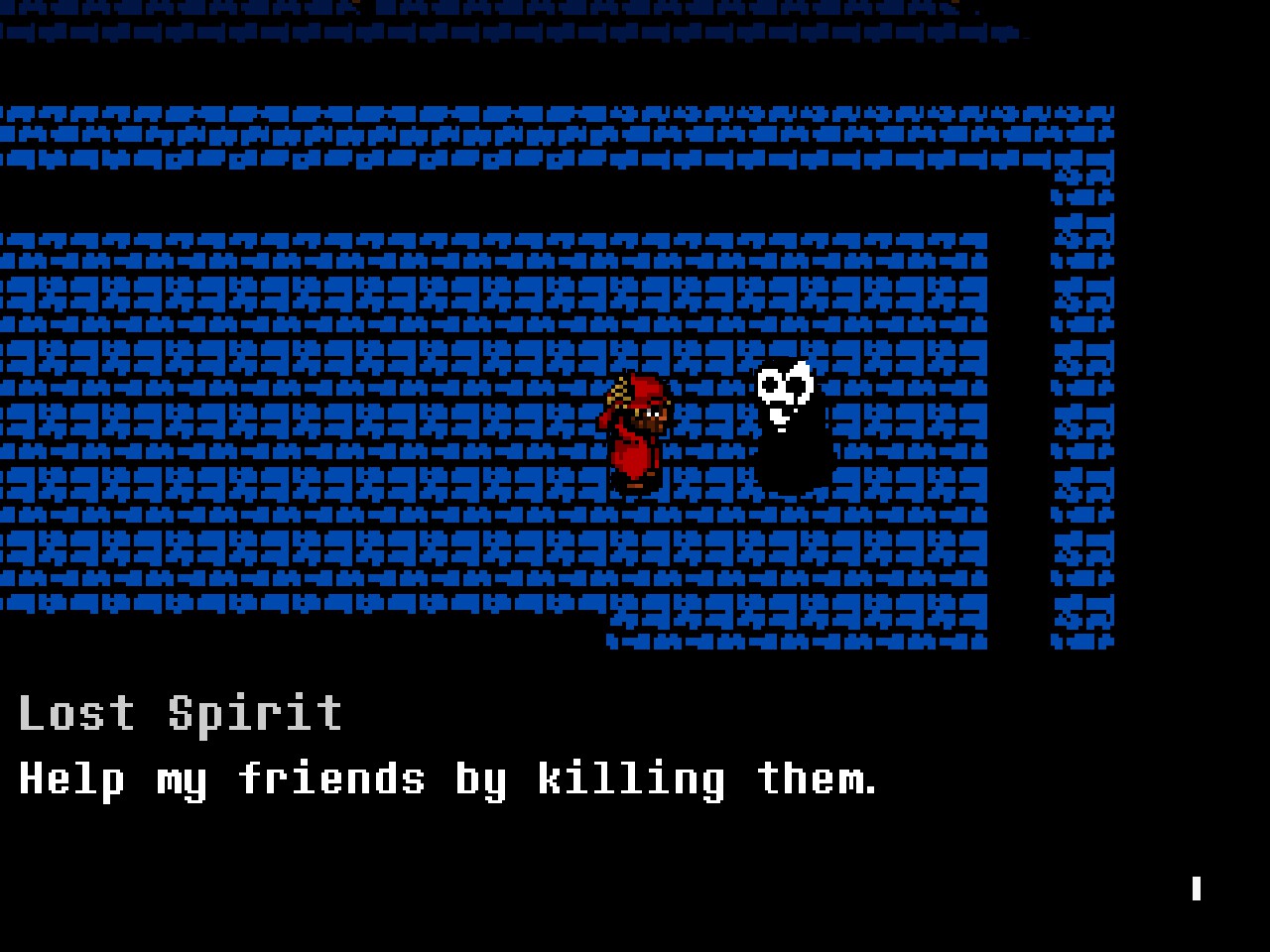
THANKS EVERHOOD!!!! GREAT MESSAGE!!!!!!!!!!
Yes, not content with merely talking up how great and brave suicide is once, the Everhood devs decided they needed to do it twice
...
I shouldn't have to say this, but: Please, please, please do not refer to suicide of someone in pain as an act of bravery in your video game. Please do not portray choosing trying to live as an act of cowardice. I don't think that's a controversial take. I don't think that's a big ask.
...
And especially don't do it twice.
...
...
AND ESPECIALLY DON'T DO IT THREE TIMES
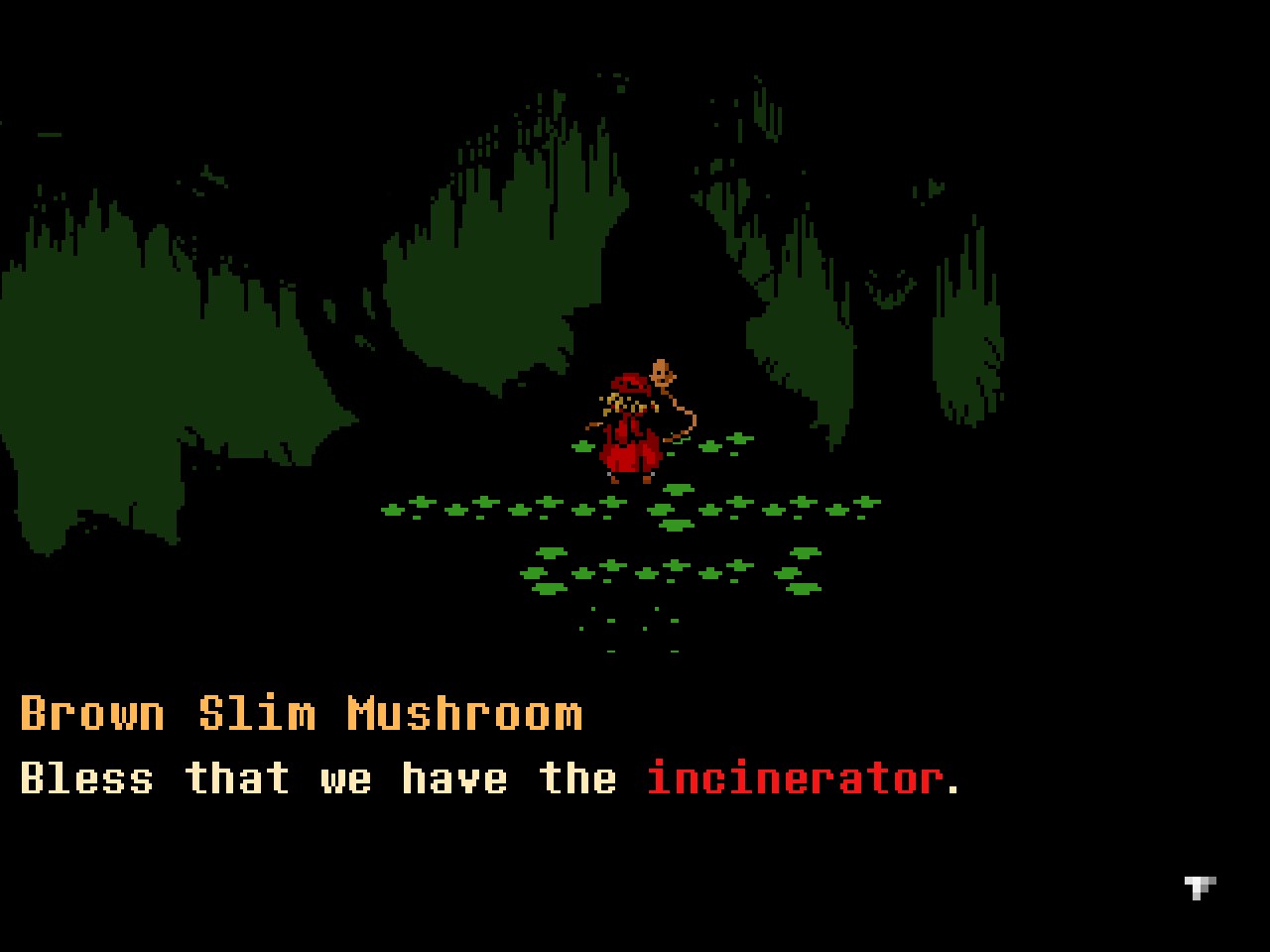
THAT'S IT! ESSAY OVER! I'M DONE!
So those are my problems with Everhood!! I hope they make sense!!
Again, I don't want to dilute anyone else's experience with the game if they got a positive message from it. I can see how someone could take something positive away from it. But... well, if you don't see the problem with what I've highlighted, I don't know what else there is to say.
And you know what? I'm planning on playing the sequel. I need to know what they do differently next time. If they write the whole script with forethought about what they want their script to say, it could be great. If they set out to write and revise and re-revise their script so that the epic beats they want to hit are earned, they might really have something. I'm praying that will be the case, but either way, I need to know whether they're going to learn from their mistakes or double-down on them.
I just hope they don't tread on anyone's religion without doing even the most basic research again. DON'T!! DO!! THAT!! Just don't!
AND DON'T CALL ANYONE A COWARD FOR NOT COMMITTING SUICIDE!!
DON'T TELL PEOPLE THAT SUICIDE IS RELIEF AND THAT DEATH IS THE ANSWER!!!!!!!
I KNOW I ALREADY SAID THIS BUT FOR FUCK'S SAKE!!!
AAAAAAAAAAAAAAAAAAAAAAAAAAAAAAAAAAAAAAAAAAAAAAAAAAAAAAAAAAAAAAAAAAAAAAAAAAAAAAAAAAAAAAAAAAAAAAAAAAAAAA!!!!
